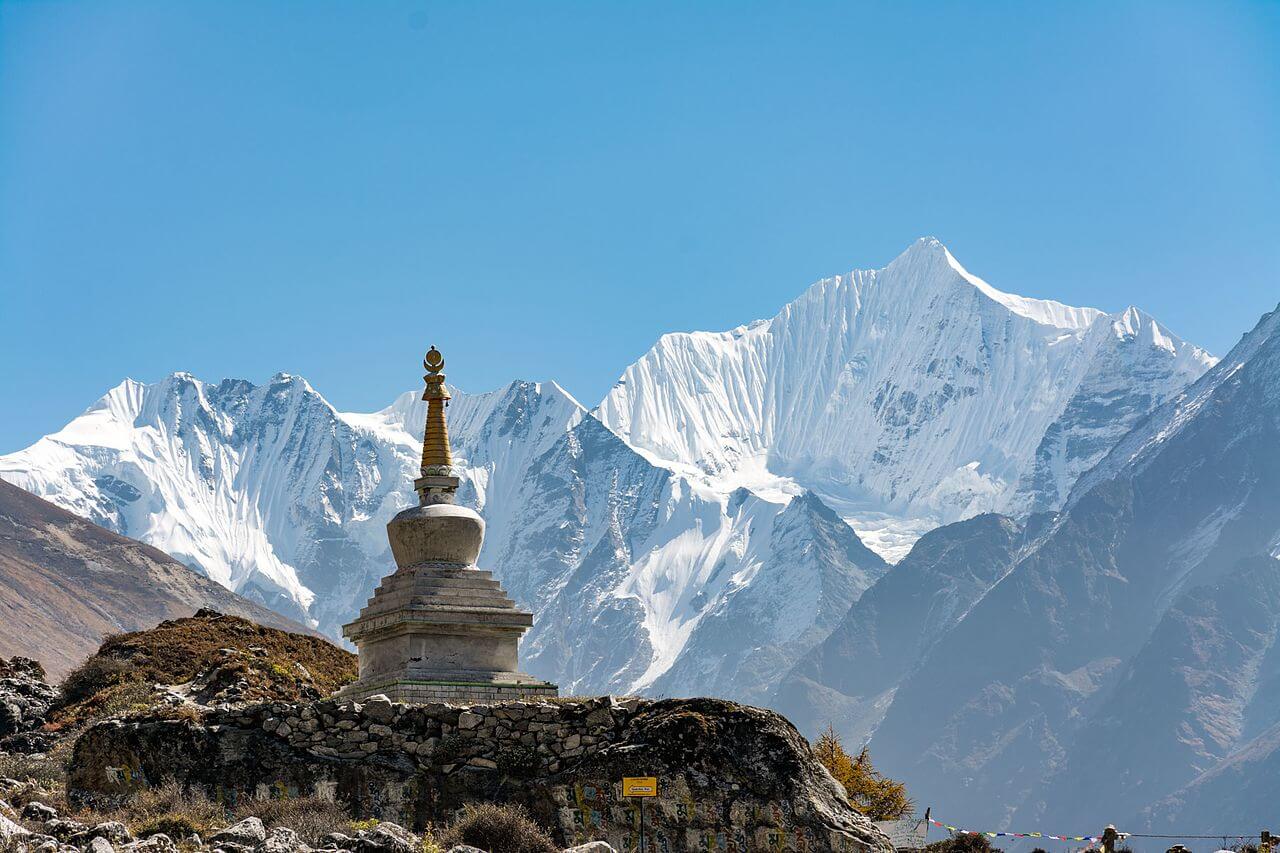

Langtang Valley Trek
Langtang Valley is a classic trekking destination, located only 61.8km away from aerial distance, north of Kathmandu.
Although the Langtang Valley Trek is relatively short, accessible, and cheap, the trails are quieter with less number of trekkers compared to other classic trekking destinations in Nepal .
The trek is ideal for both experienced trekkers as well as novice travel enthusiasts. This trek provides an incredible opportunity to traverse through beautiful Tamang villages, diverse landscapes, eye-catching waterfalls, high Himalayan valleys, monasteries, and densely forested areas.
The mountain trails to Langtang also offers you a spectacular sight of the glaciers and mountains including Langtang Lirung, Ganesh Himal, Jugal Himal, Dorje Lakpa, and Ganja La Pass.
Protected as Langtang National Park , it is home to an abundance of exotic animals and birds. On a lucky day, you may spot plenty of wild animals including red panda, langur, musk deer, snow leopards, Himalayan tahr along with birds like Himalayan monal, white-winged redstart, and the snow Patridge.
Before the catastrophic earthquake in 2015, Langtang used to be one of the most commercial trekking destinations in Nepal. The region was severely affected and damaged by the earthquake. Some of the villages in the region were destroyed and buried under the rubble. However, after massive reconstruction and renovation efforts, the area is now open for the trekkers.
Table of Content
Langtang Valley Trek Facts
Highlights of langtang valley trek.
- Langtang Valley is a relatively short and accessible trekking destination with a fantastic Himalayan experience.
- Relish the beautiful spectacles of Langtang Lirung, Ganesh Himal, Manaslu, and Jugal Himal.
- Breathtaking climb to the vantage point of Tserko Ri at the elevation of 5033m.
- Explore the beautiful Tamang villages and get a more in-depth insight into their cultures and heritages.
- Opportunity to witness rare animals like the red panda, snow leopard, langur, and musk deer.
- Explore the ancient monastery of Kyanjin Gompa.
Getting There and Away
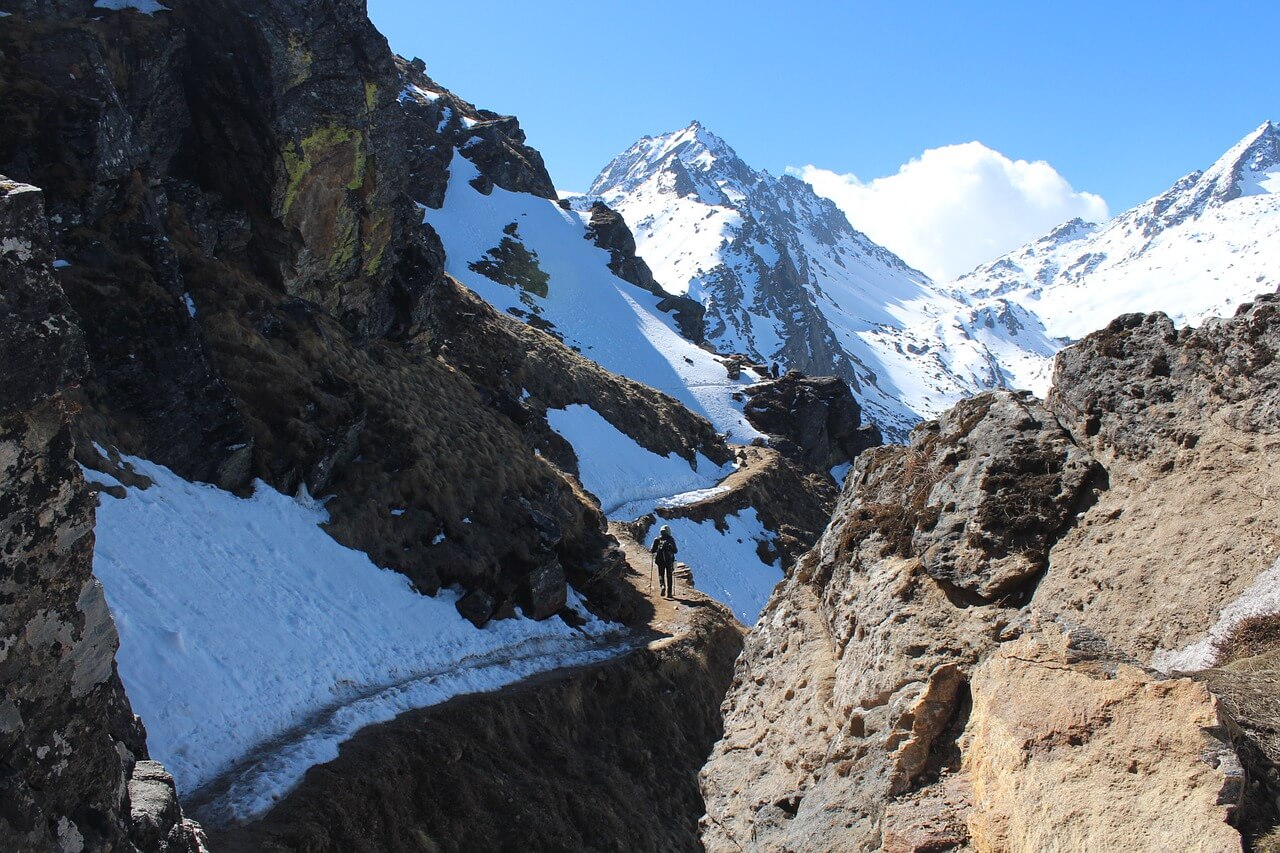
Start of the Trek
Your journey to Langtang Valley Trek begins with a 7-hour drive from Kathmandu to Syabrubesi. The drive from Kathmandu to Syabrubesi covers the total distance of 122km. Although reasonably short in distance, there is still no luxury transportation services available for this region. You can drive to Syabrubesi either by local bus or local/private jeep.
The local bus departs from Machhapokhari every morning from 7 to 9 AM. The bus fare may cost you from $6 to $8 depending upon the different transportation companies. The main discomfort while driving on a local bus is congested seats and too many passengers.
The local jeep will cost about $8 to $10 per person on a sharing basis. You can take these jeeps from Machhapokhari as well. They depart every morning from 6:30 to 9 AM.
If you’re willing to hire a private jeep, it’ll cost you around $150 for a group of 6-7 travelers.
The road condition you travel along reveals its pathetic and rough forms. The highway from Kathmandu to Trishuli Bazaar is good with a narrow winding road. However, once you drive further from Trishuli Bazaar, the road becomes rough and bumpy. Along the way, you come to experience some dreadful landslides.
End of the Trek
Since both starting point and endpoint of Langtang Valley Trek is at Syabrubesi, you’ll be retracing the route backward from Syabrubesi to Kathmandu at the end of the trek.
You’ll have similar transportation options while traveling from Syabrubesi to Kathmandu.
Outline Itinerary of Langtang Valley Trek – 8 Days
Lantang valley trek detailed 8 days itinerary, day 1: drive from kathmandu (1,400m) to syabru besi (1,550m) – 7 to 8 hours.
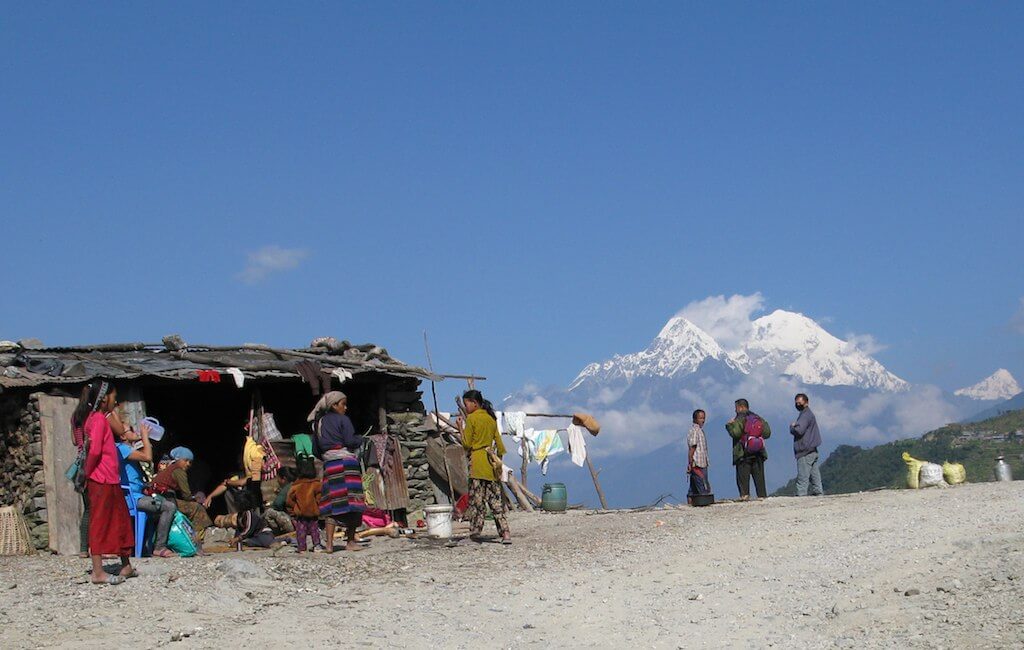
The adventure of Langtang Valley Trek begins with a 7-hour drive from Kathmandu to Syabru Besi. You can either take a local bus from Macchapokhari or hire a jeep to Syabru Besi.
As soon as the bus departs from Kathmandu, the road climbs over the ridge offering majestic views of Ganesh Himal, Manaslu, and Annapurna. The condition of the highway is extremely rocky and rough with tons of potholes and small ditches.
You’ll be driving alongside the Trishuli river for most of the day. Driving past the bustling town of Trisuli, the road leads towards Dhunche, the administrative center of Rasuwa District. Make sure to keep your TIMS card and National Park Permit in an easily accessible place as you’ll need to show them at the Park Gate right before Dhunche. After driving for another hour downhill from the town of Dhunche, you’ll reach Syabru Besi.
Day 2: Trek from Syabru Besi (1,550m) to Lama Hotel (2,380m) – 6 to 7 hours
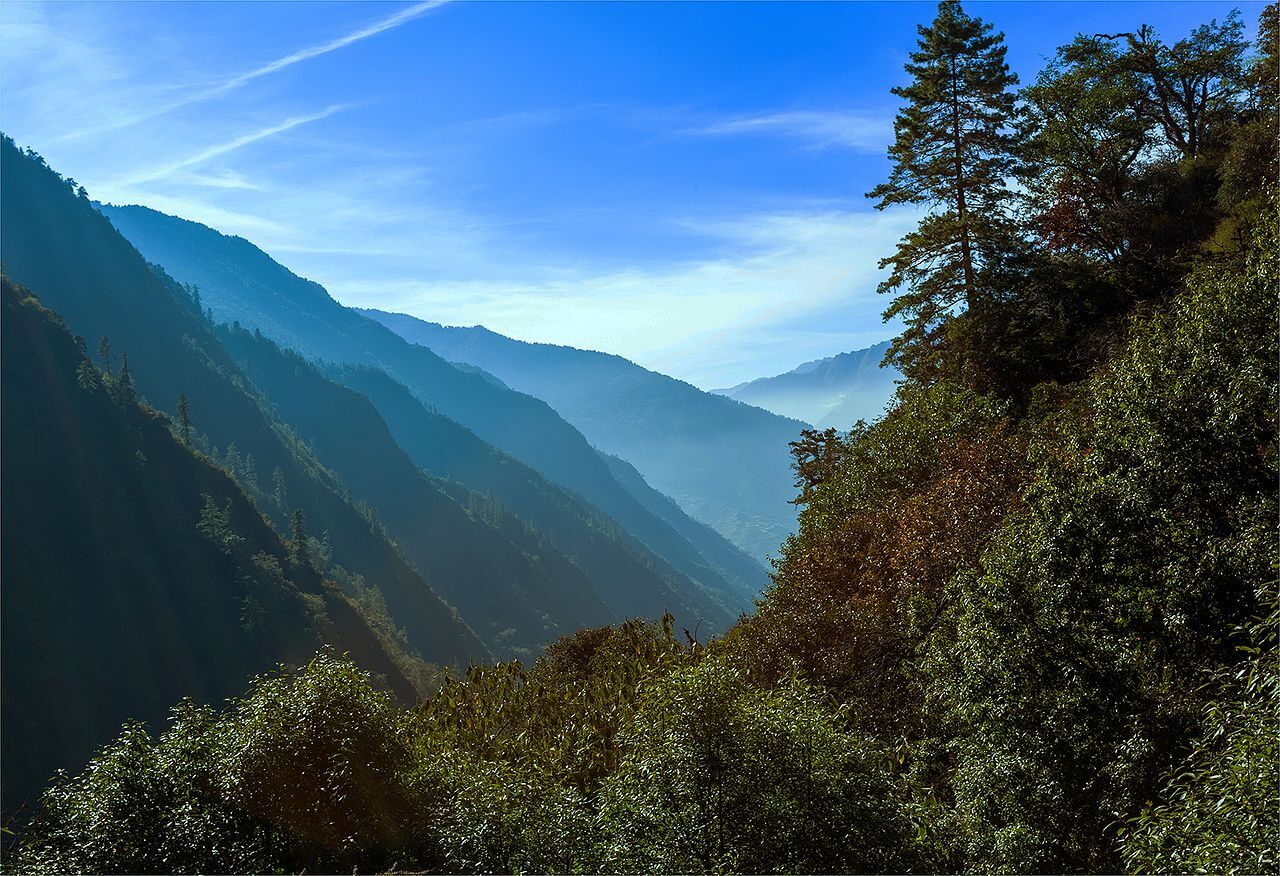
You’ll start the trek from Syabru Besi by crossing the bridge over the Ying Yang River. The trail ascends and descends simultaneously through the dense sub-tropical forest alongside Langtang Khola.
As the trek continues, oak and rhododendron trees dominate the surroundings. While walking in the woods, make sure to watch out for the langur monkeys. The trail goes steep and slightly strenuous through the forest up to Lama Hotel.
Day 3: Trek from Lama Hotel (2,380m) to Mundu (3,430m) via Langtang Village – 6 to 7 hours
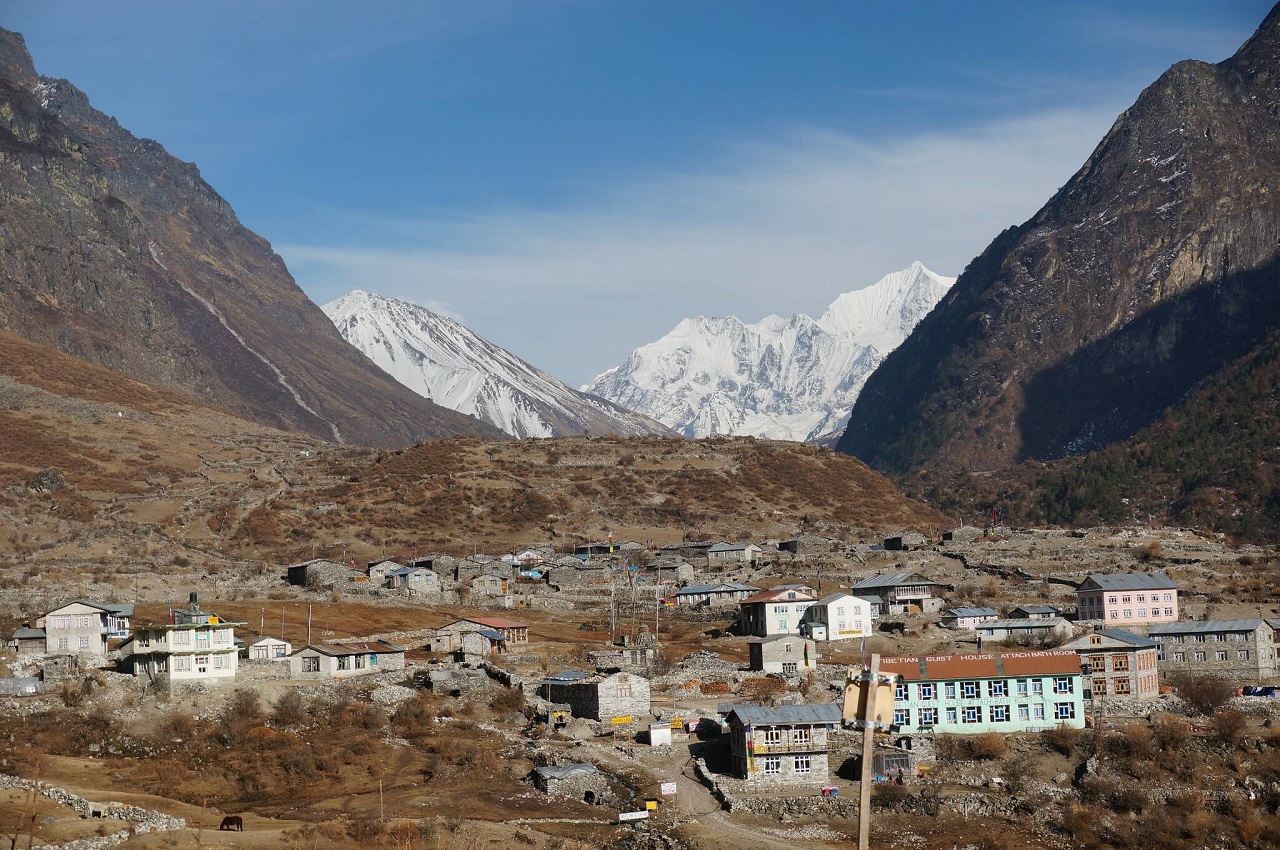
On this day, the forest trail continues through plenty of waterfalls and occasional glimpses of Langtang Lirung. At Ghoda Tabela, the path emerges out of the woodlands into the lush green meadow. The snow-capped peaks of the Langtang range begin to appear on either side of the valley.
The trail further continues to a gentle uphill, passing a few temporary settlements towards Langtang village. Before the 2015 earthquake, Langtang village was once a bustling settlement with plenty of teahouses and lodges. A massive rock field surrounds the entire valley. Mundu village is only half an hour away from Langtang village.
Day 4: Trek from Mundu (3,430m) to Kyanjin Gompa (3,870m) – 3 hours
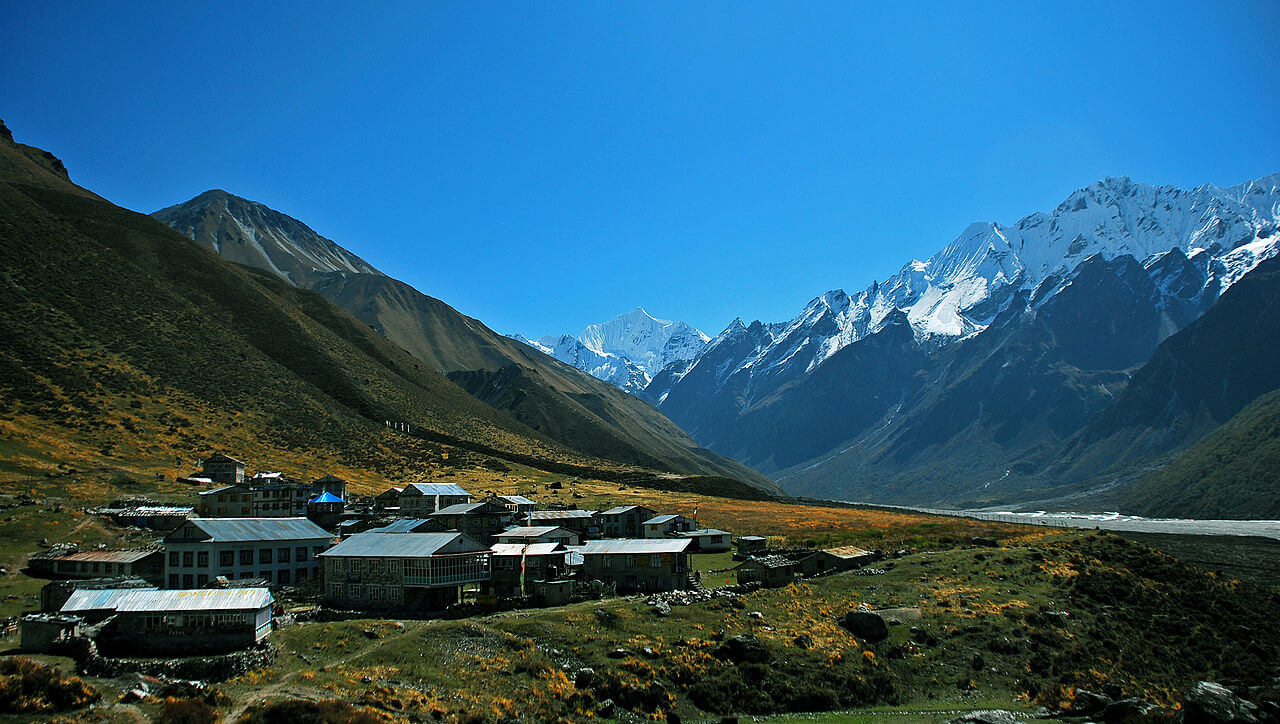
Today, the trail continues gradually passing water mills, chortens, prayer flags, and sacred mounds of rocks with carved inscriptions. The route heads upwards to a yak pasture where the sight becomes more extensive with the mountain views.
As you cross over some moraines and small streams, you’ll reach Kyanjin Gompa. Since this is the shortest day of the trek, you’ll arrive at Kyanjin Gompa by lunchtime. So, if you do not want to spend the day resting, we recommend you head towards Langshisha Kharka for incredible views.
Day 5: Excursion to Tserko Ri (5,000m) – 5 to 6 hours
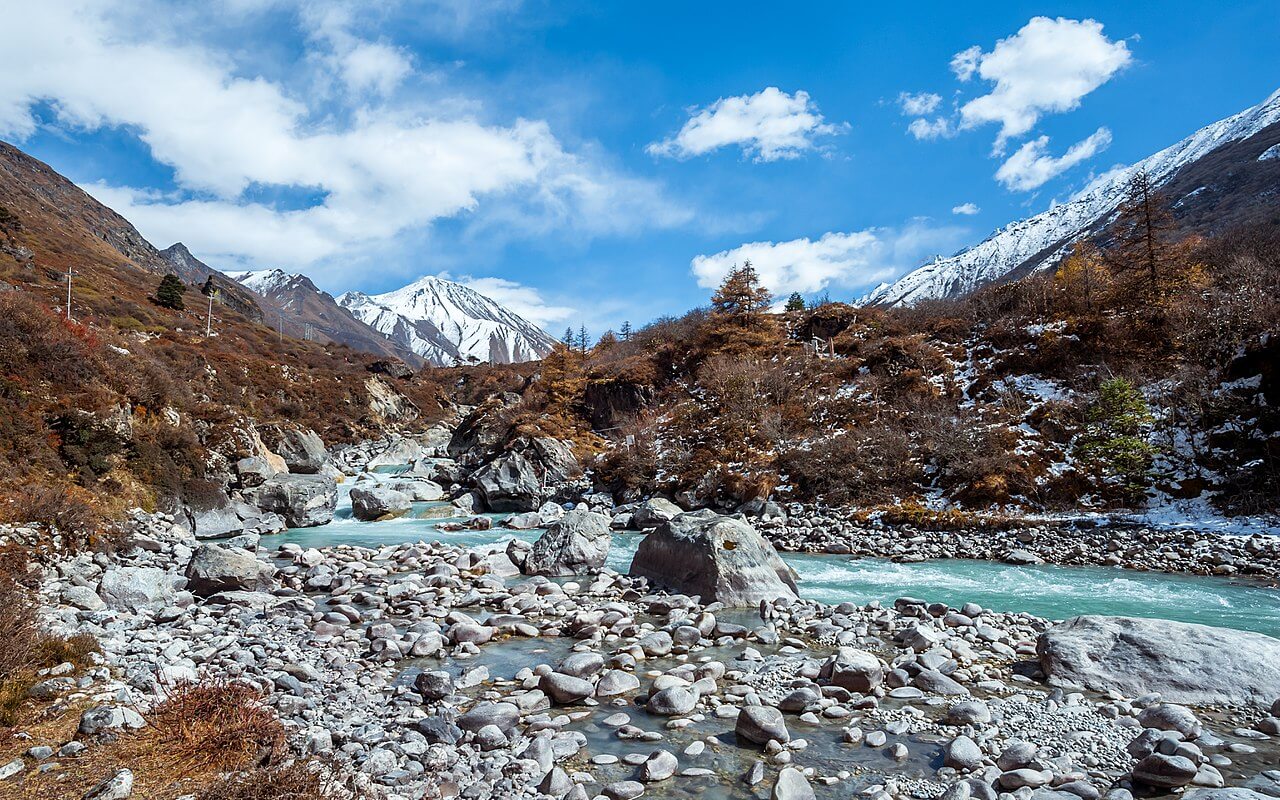
Hike up to the vantage point at Tserko Ri to relish the incredible sights of the mountains, glaciers, and the Langtang valley. Tserko Ri marks the highest elevation point of the trek at 5,000m above sea level.
Since you’ll return to Kyanjin Gompa by the afternoon, you can also explore the ancient monastery of the village. Additionally, you can also visit the cheese factory and glacier.
Day 6: Trek from Kyanjin Gompa (3,870m) to Lama Hotel (2,380m) – 6 to 7 hours
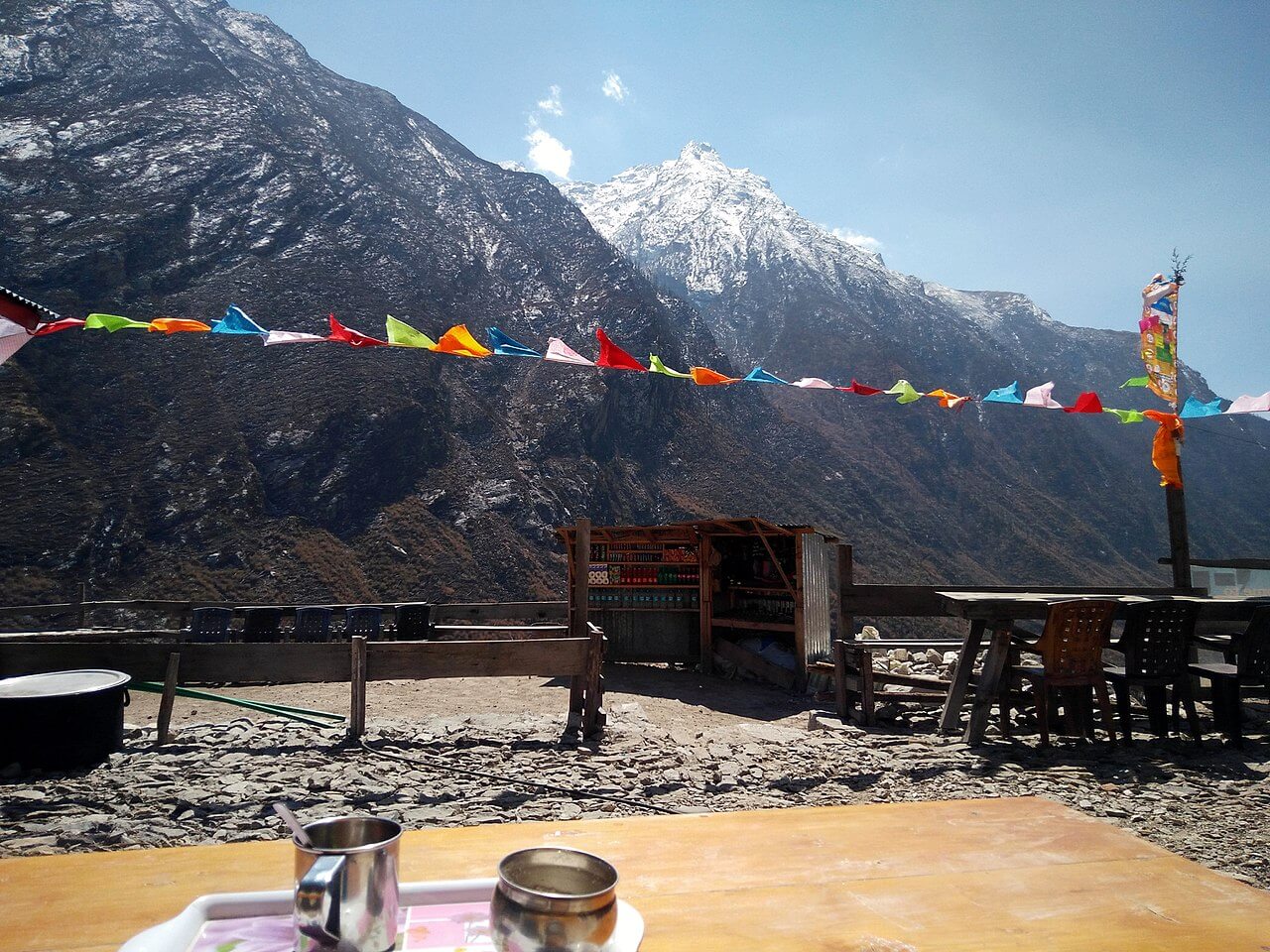
On this day, you retrace the route from Kyanjin Gompa back to Lama Hotel. The way follows back alongside the Langtang River through Mundu village to Ghoda Tabela. The trail is mostly downhill throughout the day. Upon reaching Ghoda Tabela, you’ll continue descending on a steep downhill to Lama Hotel.
Day 7: Trek from Lama Hotel (2,380m) to Syabru Besi (1,550m) – 6 to 7 hours
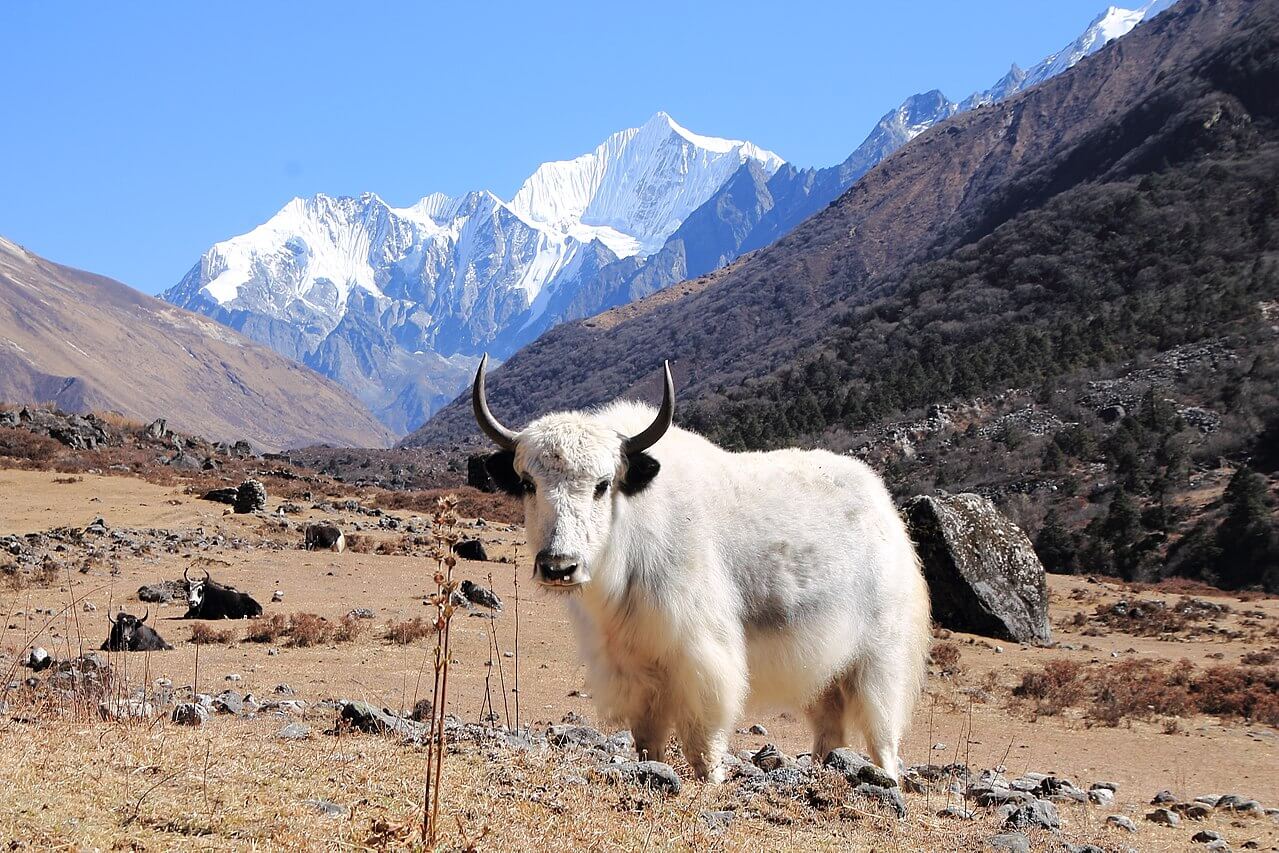
Two different trails lead to Syabru Besi. You can either retrace the route enjoying the forest from Lama Hotel or you can take a detour from Rimche via Sherpa Gaun to Syabru Besi.
The detour from Rimche takes much longer to arrive at Syabru Besi, but this spectacular route is worth the time.
Day 8: Drive from Syabru Besi (1,550m) to Kathmandu (1,400m) – 8 to 10 hours
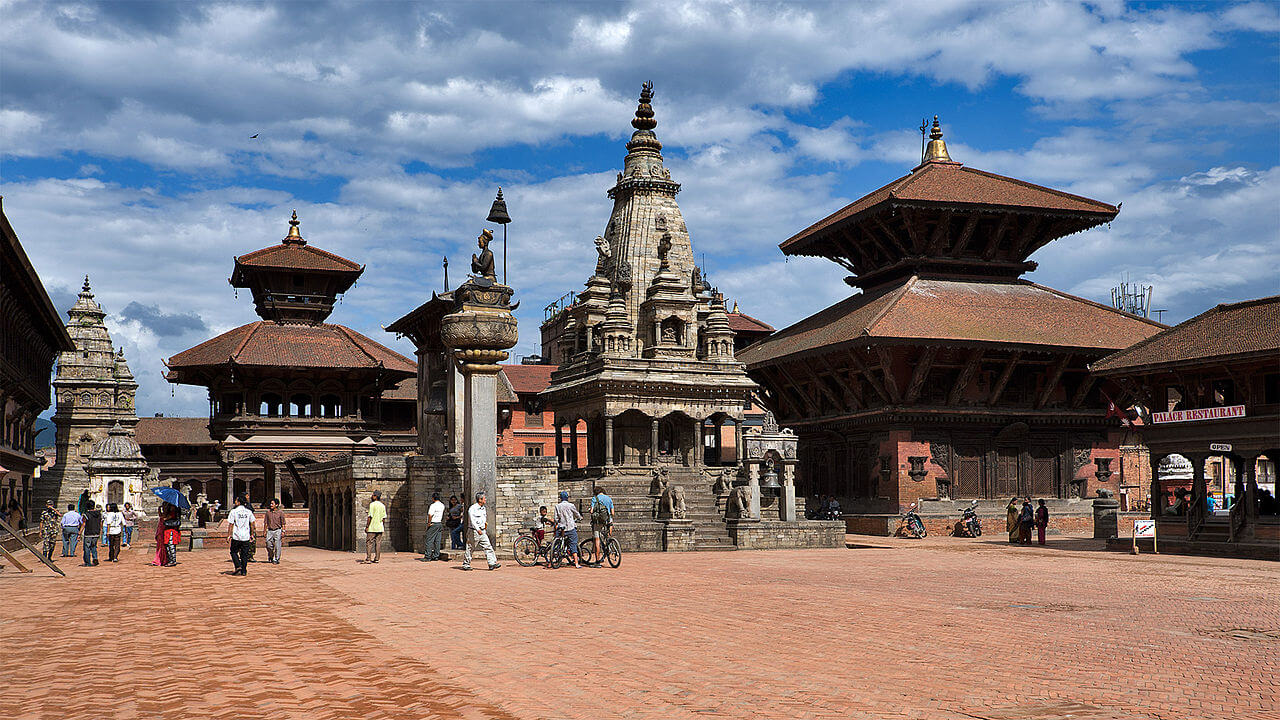
On the final day, you drive back from Syabru Besi to Kathmandu. If you’re early, you can catch a local bus from here. Otherwise, you can also take a local jeep for a slightly convenient experience. It takes about 7-8 hours to drive from Syabru Besi to Kathmandu.
Langtang Valley and Gosainkunda Extension
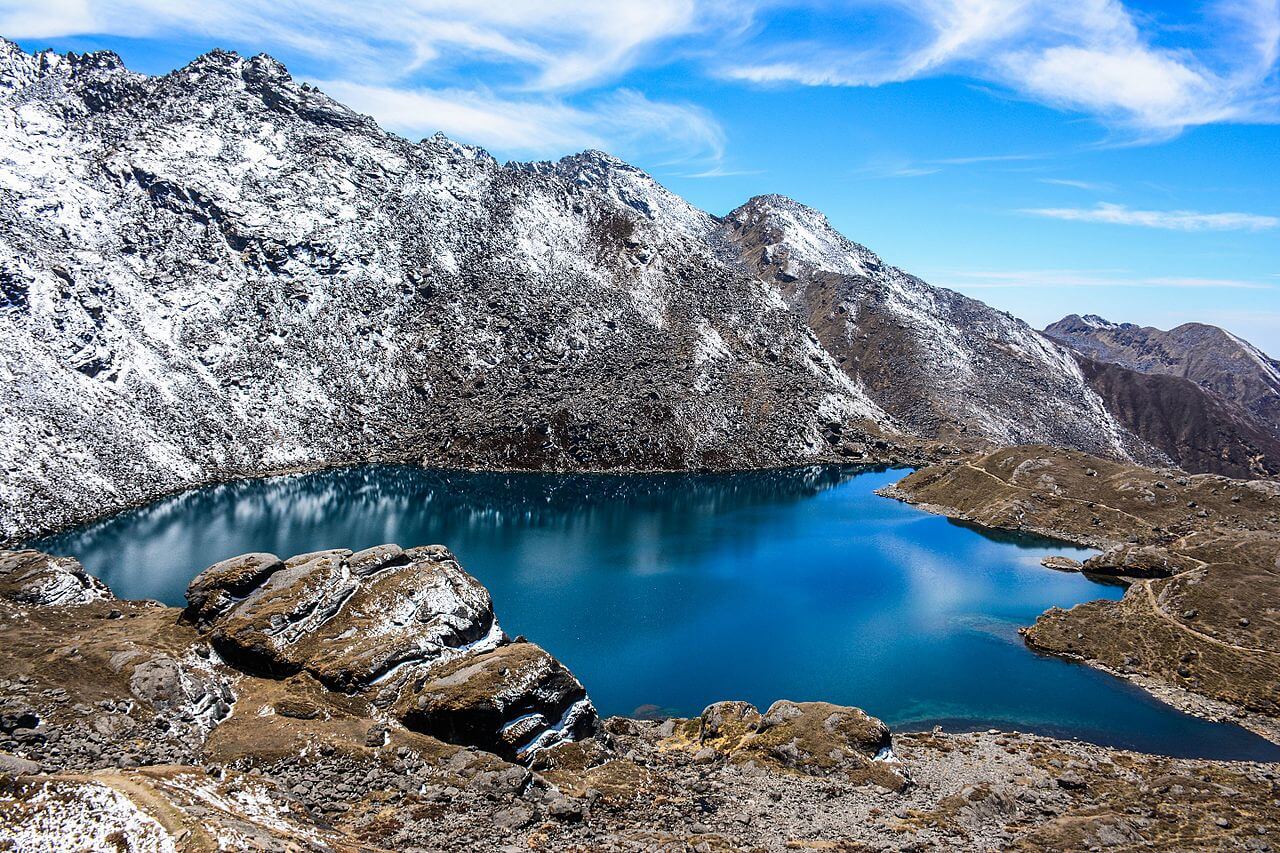
If time permits, you can combine the Langtang Valley Trek with Gosainkunda. The trek offers remote trails with spectacular views of the mountains at Langtang and high Himalayan lake at Gosainkunda.
Gosainkunda, a holy glacial lake at an elevation of 4,380m, is a shrine of Hindus. The diverse landscapes, lush green forest, terraced fields, hills, and scenic mountain views make Gosainkunda one of the most stunning trekking destinations in Nepal.
Langtang Valley Trek with Gosainkunda Extension begins with a drive from Kathmandu to Syabru Besi and then follows through the Langtang Valley. The trail to Gosainkunda connects from Thulo Syapru while retracing the route back from Langtang Trek. The path is quite steep from Thulo Syabru to Sing Gompa and up to the pristine lake of Gosainkunda.
Best Time to Travel in Langtang Region
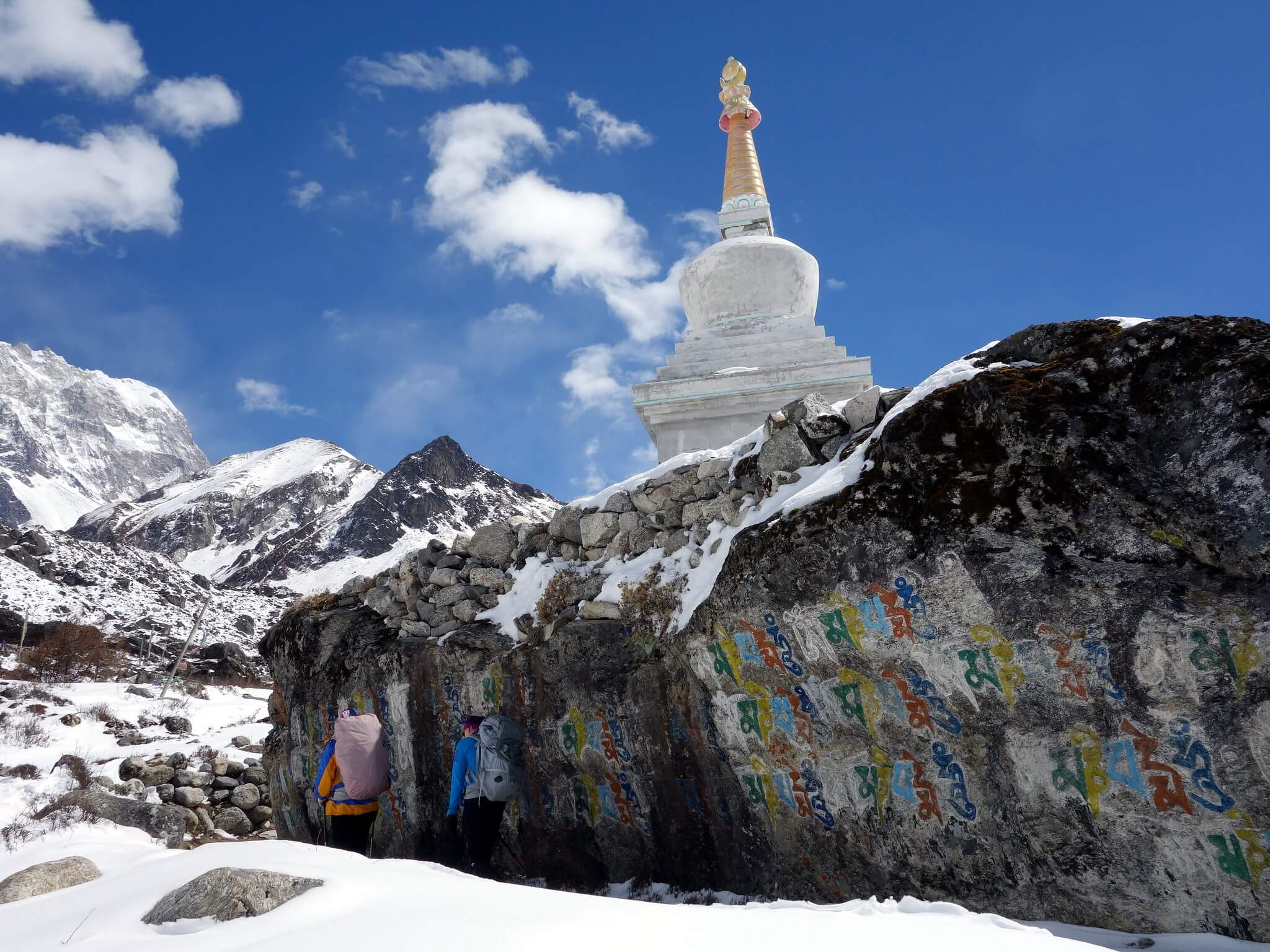
Trekking to Langtang Valley is possible throughout the year. However, Spring season (March to May) right after the cold winter and in Autumn season (September to November) right after the soaking monsoon are two most popular periods to visit the Langtang region.
In most of the days during the Autumn, the temperature remains moderate with a crystal clear sky. This means the temperature during this time of the year is perfect for walking. Also, you get to witness the incredible scenery of the Himalayas throughout the trek. However, the only drawback to trek at this time of the year is the crowded trails.
During the spring season, the temperature is slightly warmer during the day, and the sky looks hazy at times. This means the view may not be as exceptional as the Autumn.
Winter brings cold and harsh weather, especially at the higher elevations. Thick snow covers the trails making it hard to walk during winter. However, the skies are unclouded and reward magnificent sights. If you’re planning to trek to Langtang Valley during the winter, make sure to pack warm clothes and high-quality sleeping bags.
Monsoon is the least favorable time to go trekking in Langtang. The temperature is far too unstable with wet and slippery trails. Since dense forests dominate this region, the risk of leeches increases extensively. Trekking in monsoon demands proper preparation and packing.
Here’s a table indicating the details of average temperature and rainfall of different places en-route to Langtang Valley Trek:
How Difficult is Langtang Valley Trek?
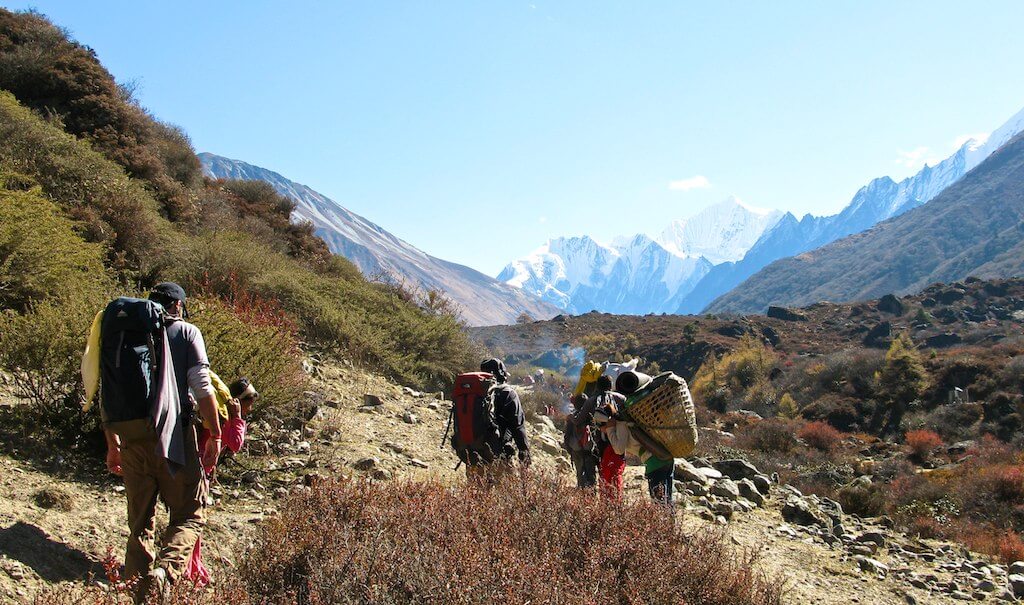
Langtang Valley Trek is a short and moderate trek that does not require any technical skills or previous trekking experience. You can complete the entire trek in 8 to 10 days, walking 5 to 7 hours per day.
The most challenging section of Langtang Trek is the hike from Kyanjin Gompa to Tserko Ri. The trail to Tserko Ri is mostly steep uphill on the rocky Himalayan terrain. However, on most days, the path is easy and comfortable with a pleasant walk.
The highest elevation point in Langtang Valley Trek is 5,000m above sea level. Therefore, Acute Mountain Sickness (AMS) is one of the significant threats while trekking in Langtang. You are required to take all the necessary precautions while traveling in such high elevation. Insist on drinking plenty of water, and be aware of the symptoms of AMS.
The weather in the Himalayas is always unpredictable, especially in the upper reaches. Therefore, it is essential to pack all the necessary equipment while trekking in Langtang Valley. If you’re planning to trek during monsoon season, stay cautious on the trail. There are plenty of landslide-prone areas en-route to Langtang Valley.
While this trek may be relatively easy for experienced trekkers, it does demand a certain level of physical fitness and attitude. One proper way to keep yourself fit for the trek is to engage in cardio-oriented exercises.
What Permits are Requied for Langtang Valley Trek?
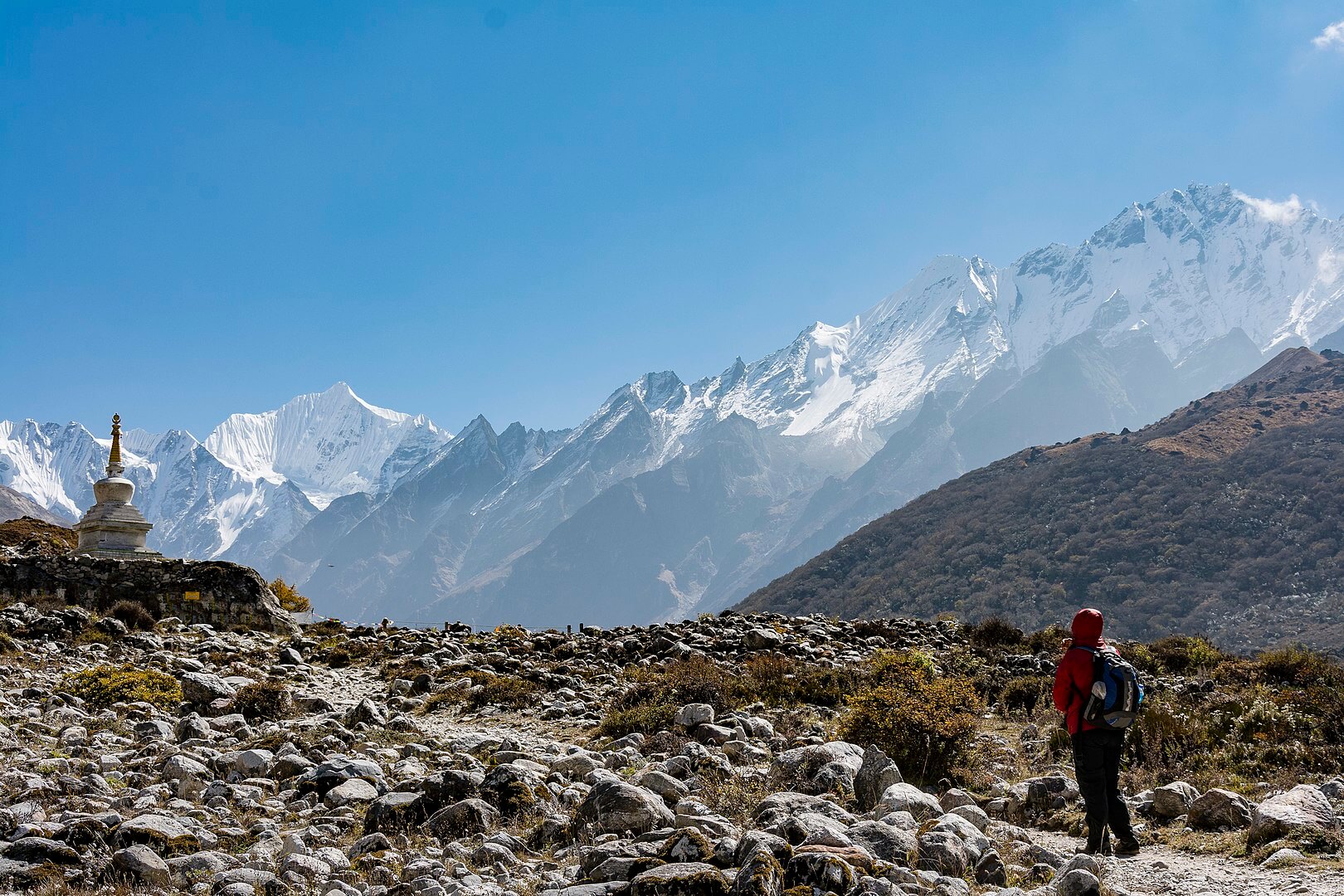
You only require two different permits — TIMS Card (Trekking Information Management System) and Langtang National Park Entry Permit, while trekking to Langtang Valley.
There are three types of TIMS Card; blue for organized group trekkers, green for individual travelers, and a pink one for SAARC nationals. You can acquire TIMS Card from Nepal Tourism Board (NTB) or Trekkers Agencies’ Association of Nepal (TAAN) Secretariat in Kathmandu.
Since you’ll be trekking through the Langtang National Park also need an exclusive National Park Permit to enter the area. The permit is available in Nepal Tourism Board in Kathmandu, or you can also get them from the entry gate at Dhunche.
While issuing a TIMS Card, you’ll require your passport, four passport size photos, insurance details, and contact details of someone in Nepal.
Here’s the price of the permits required for Langtang Valley Trek:
Insurance for the Trek
Having travel insurance is an excellent idea if you’re planning to trek to Langtang Valley. While trekking in such high elevations, you may come across unexpected situations. Therefore, it is essential to get travel insurance for Langtang Trek.
Make sure to choose a policy that covers emergency helicopter evacuation, medical costs, natural disasters, theft, and losses. While several companies provide travel insurance, we advise you to get it from World Nomads. The best thing about World Nomads is that you can claim, buy, or extend the policy anytime online from anywhere — even while traveling.
Guided VS Independent
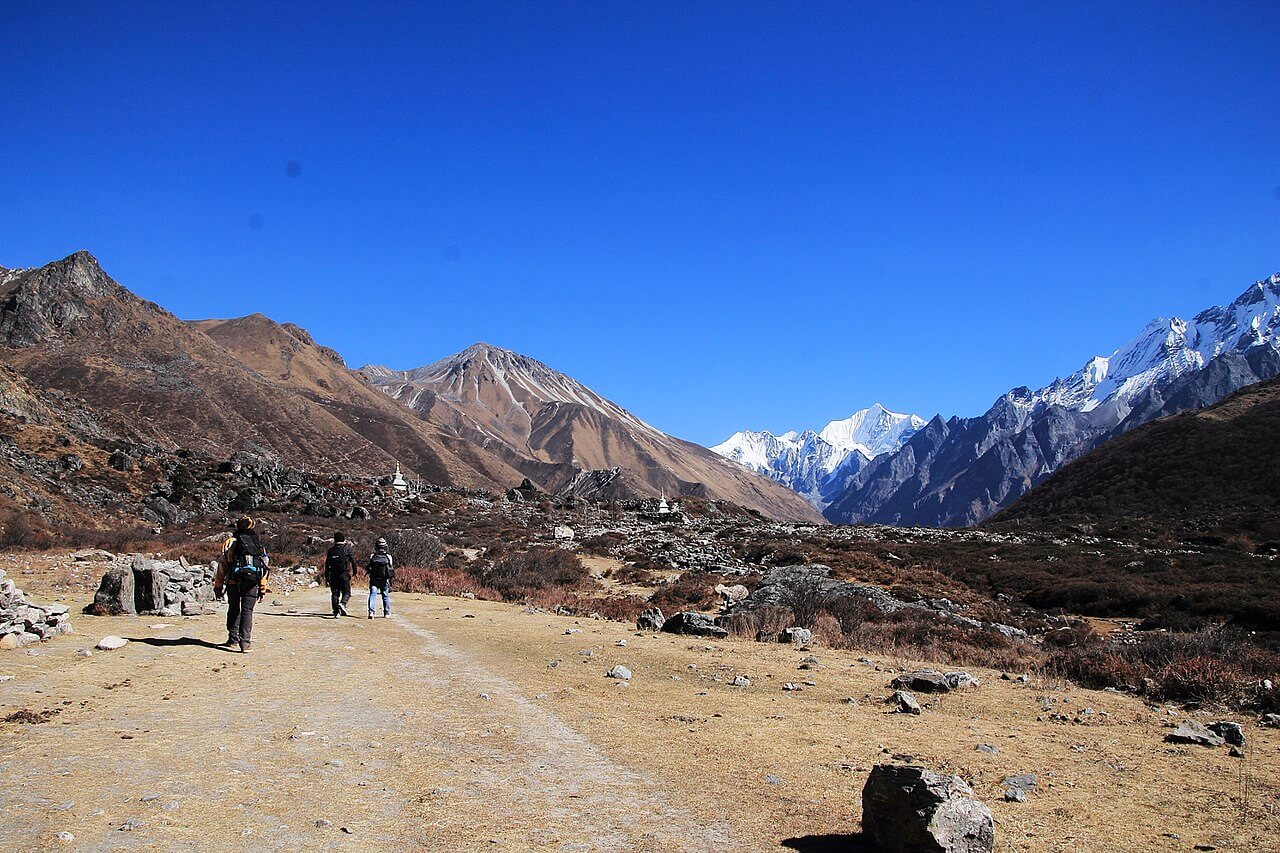
Since Langtang Valley Trek is a moderate walk, you can do it both independently or with a guide. If you’re planning a solo adventure and have prior trekking experience, this trek is an excellent choice for you. The route does not disperse into other trails, and occasional signposts mark the entire trail. Therefore, the risk of taking the wrong path is very minimal.
Altitude is the primary threat while trekking to Langtang Valley. Stay aware and precautious regarding this factor.
Trekking independently is relatively cheaper than hiring a guide, but you need to deal with hassles of transportation, teahouses, food and permit. It is always handy to have an experienced guide at high altitude treks. The guide will assist you throughout the trek and will make sure of your safety.
An experienced guide will also know about the place, culture, people, and the mountains. You’ll also get more in-depth information about the valley if you hire an experienced guide.
Accommodation and Food
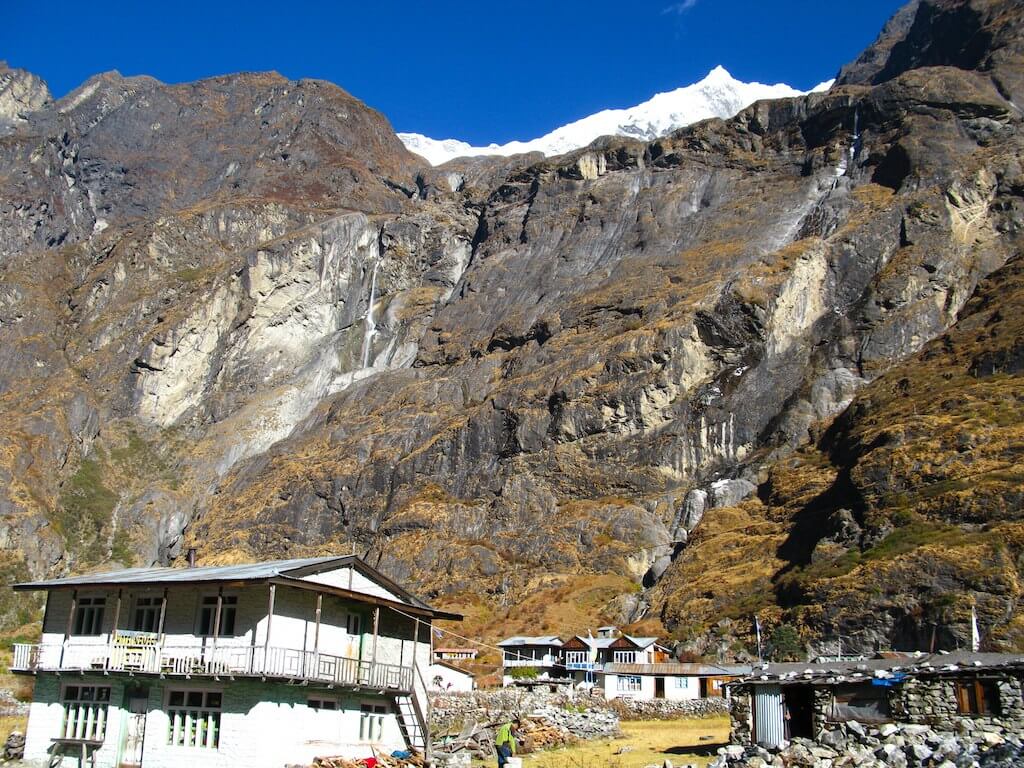
On Langtang Valley Trek, you will mostly stay at the teahouses, which provide rooms, food, and basic amenities like wifi, hot shower, and charging facilities. On the lower reaches of Langtang Valley Trek, you will get high standard rooms with attached bathrooms. These teahouses will offer standard services but may charge you higher than normal rates. Some of the teahouses provide device charging facilities at free of cost.
As you get higher on the trail, teahouses provide only essential services with twin shared rooms. The rooms have two single beds, a thin mattress, a pair of bedsheets, and a cushion. The toilets are usually on a sharing basis without the facility of running water. You’ll have to pay the additional amount for a hot shower, wifi, and charging facilities.
These teahouses also have their restaurant, serving meals to the guests. The choices in the menu are limited, but portions of the food will be quite substantial and filling. Generally, the menu offers Dal Bhat, chowmein, omelet, fried potatoes, pancakes, Tibetan bread, and soups. The non-veg items include yak meat, canned fish, and chicken.
Langtang Valley Trek Cost
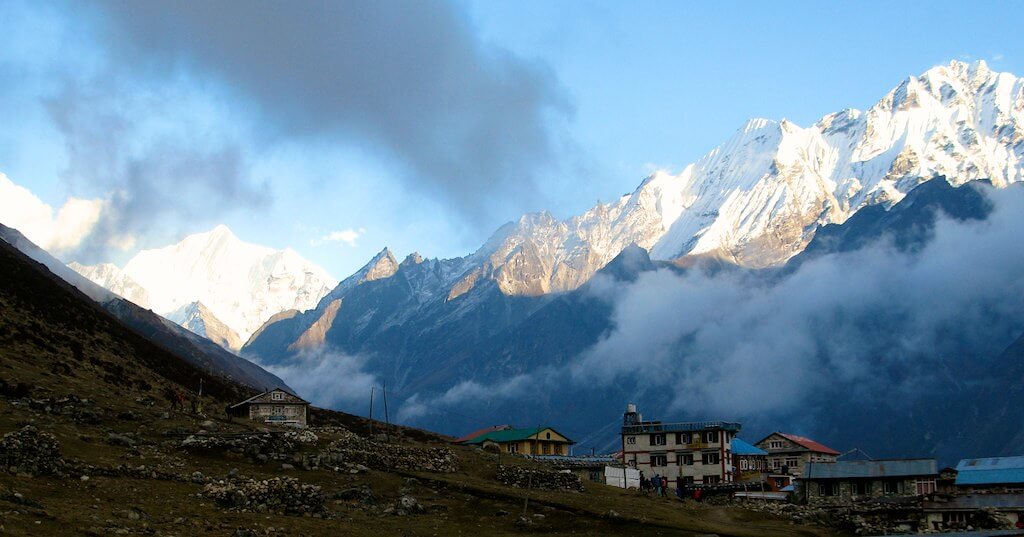
The plenty of factors like trek duration, transportation, type of trek, and season determine the cost of the trek. On average, the total cost of 8-day Langtang Valley Trek can be around US$ 300-400.
You’ll require TIMS Card and Langtang National Park Entry Permits to trek to Langtang Valley. For individual trekkers, the cost of the TIMS Card is US$ 18 while for group trekkers, it is US$ 9 her head. Additionally, the National Park Entry Permit costs US$ 27 per person.
The charge of the teahouses depends on season. Generally, the rooms in Langtang will cost approximately US$ 5 to 10 per night with an additional US$ 4 to 6 per meal.
A local bus from Kathmandu to Syabru Besi will cost about US$ 6-8 per person at par various transport companies. You can also take a local jeep that will cost you around US$ 8-10. Additionally, you can also hire a private jeep for $150 for a group of 6 to 7 people.
If you hire a licensed guide, they will charge you US$ 22 to 25 per day. If you hire a porter, it’ll cost you approximately US$ 15 to 18 per day. If you want to hire a porter-guide, they’ll charge you US$ 18 to 20 per day.
Packing List for Langtang Valley Trek
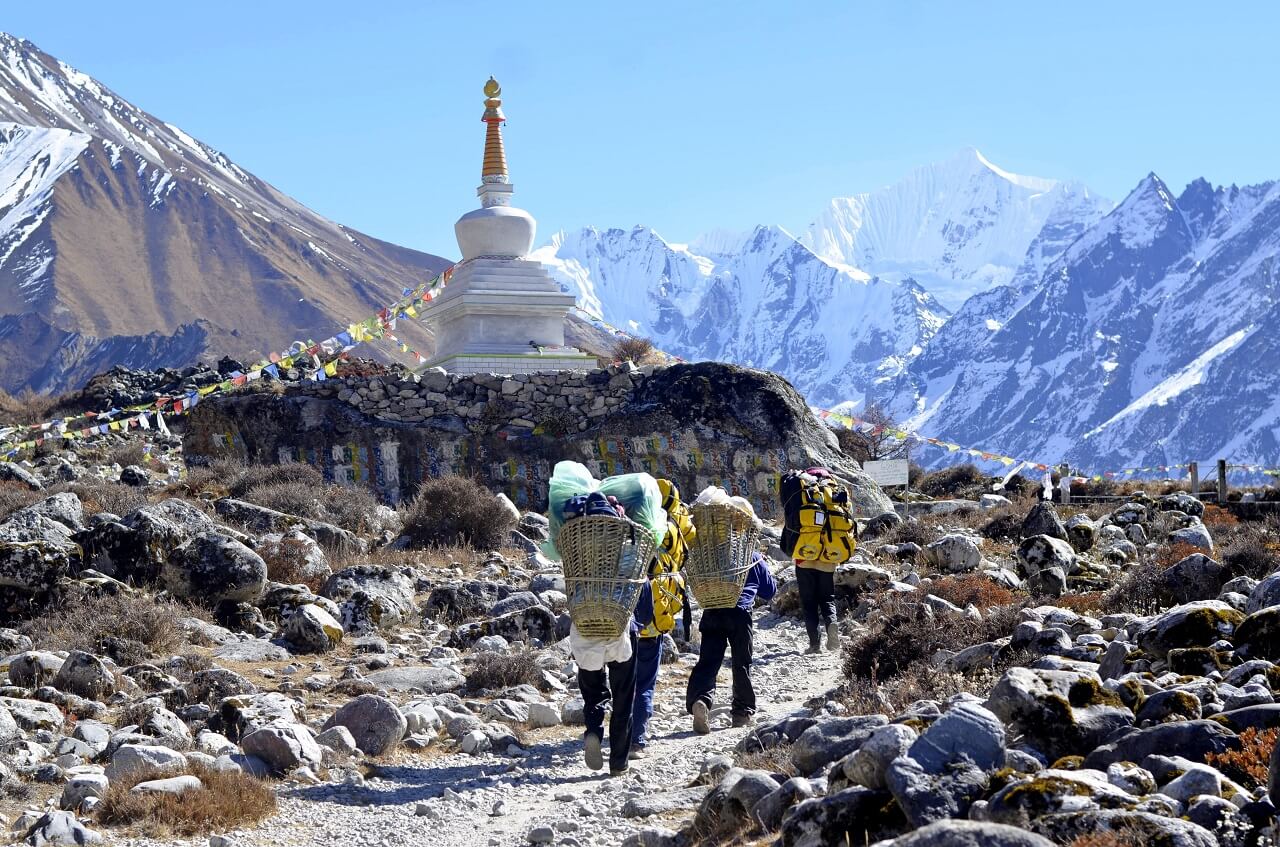
- Duffel Bags
- Trekking Shirt: Pack at least 5 to 7 shirts balancing both long and short.
- Trekking Trousers: Carry a minimum of 2 trekking trousers with a couple of shorts.
- Base Layer: Pack a couple of wool base layers to stay protected from the cold in the upper reaches of the trek.
- Insulation Layer: We recommend you pack a high-quality fleece jacket.
- Outer Layer: Carry a warm and waterproof jacket for extreme weather.
- Waterproof Shell Jacket: Pack a pair of waterproof jackets for wet weather.
- Breathable Underwear: Minimum 5 to 6 pairs of breathable underwear.
- Hiking Boots: Invest in high-quality waterproof hiking boots. Make sure the boot is lightweight and comfortable.
- Trainers/Sandals: It is handy to carry a pair of trainers or sandals.
- Hiking Socks: You should carry 4-6 pairs of breathable hiking socks.
- Thermal Socks: A pair of thermal socks to keep your feet protected from the cold in the higher altitudes.
Head Wears:
- Sun Protection Hat: Carry a protection hat to protect your face from the harsh sun.
- Beanie: An absolute must to keep yourself warm, especially during the evening and night.
- Buff/Neck Gaiter: This small piece of gear comes in handy to protect your neck from the cold winds and also helps you stay protected from the dust.
- Inner Gloves: Pack light inner gloves as they can be useful when the temperature is moderate.
- Outer Gloves: You’ll be wearing them in the upper reaches of the trek. Outer gloves need to be insulated, warm, and waterproof.
Sleeping Bags:
Sleeping bags are the most crucial gears while trekking in the Langtang region. With basic rooms and sleeping facilities, you can never rely on the teahouses for warm, decent blankets.
Therefore, we advise you to invest in a high-quality, 4-season sleeping bag while trekking in Langtang.
Important Accessories:
- Trekking Poles
- Water Bottle
- Basic Medical Kits
- UV Protection Sunglasses
- Water Purification Tablets
- Hand Sanitizers
- Sunscreen/Lip Balm
- Trekking Towels
- Portable Chargers
Network Information
Both Ncell and NTC networks do not work in the Langtang Valley. Once you depart from Kathmandu, NTC services are not available, and Ncell works only up to Lama Hotel. Sky Network is the most preferred telecommunication service in the Langtang Valley. Sky Network works throughout the entire trek, from the lower reaches up to the higher elevations.
Remember, phone services may not be consistent throughout the entire region. Due to the inconsistency of networks, the mobile internet will also be unstable. However, most of the teahouses do provide WiFi facilities, but it might cost you a few extra bucks.
The majority of the teahouses in Langtang have landline phones. In case of emergencies, landline phones are the best way to connect with your emergency contacts.
Useful Tips for Langtang Valley Trekking
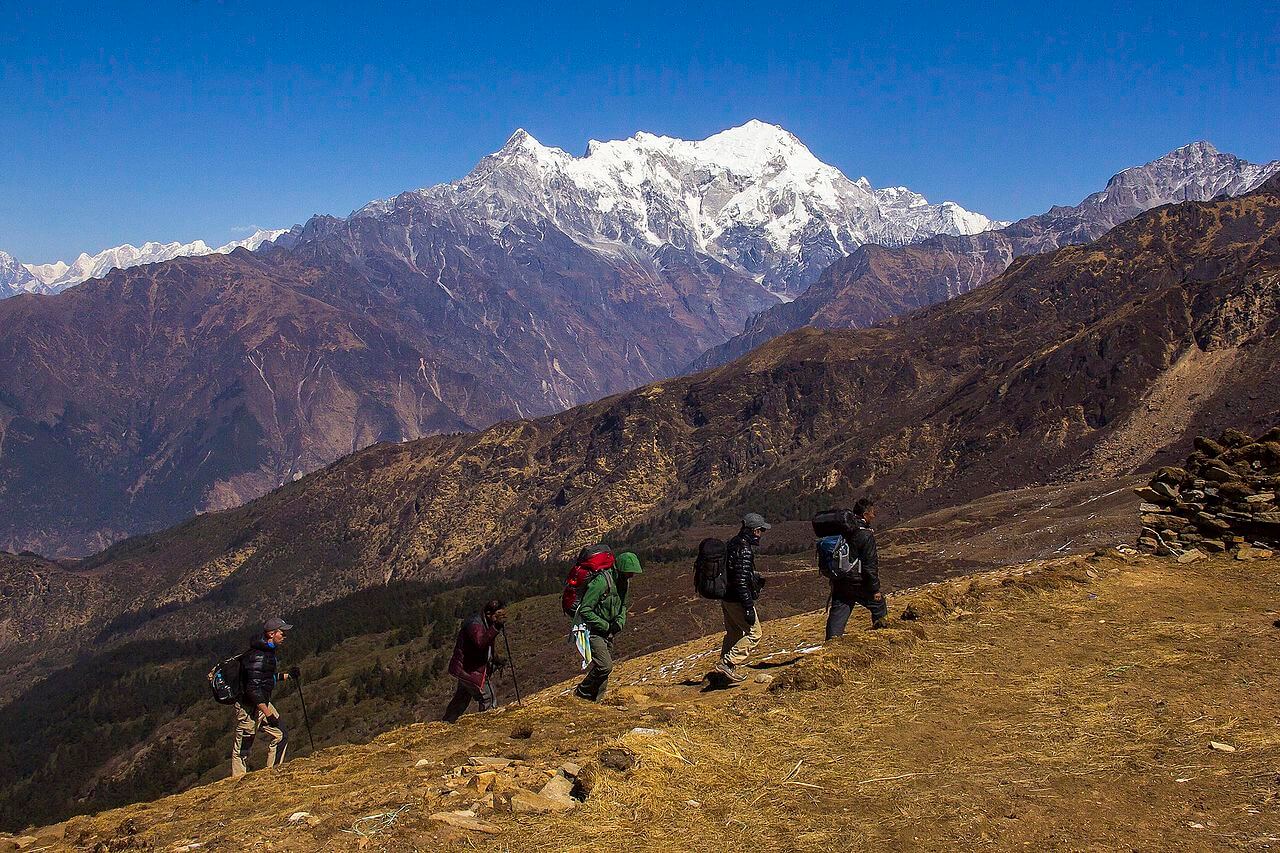
- While trekking in the upper reaches of Langtang Valley, you’re in a constant threat of suffering from acute mountain sickness (AMS). It is crucial to drink more water and take all the necessary precautions to protect yourself from altitude sickness.
- Packing the right equipment is essential while trekking to Langtang Valley. If you do not wish to buy all the expensive trekking gears, we advise you to rent them in Kathmandu.
- Although Langtang Valley Trek is a relatively moderate trek, it requires a certain level of physical fitness. We suggest you engaging in cardio-oriented activities like cycling, swimming and running, a month before the trek.
- It is not advisable to buy bottled waters as they pollute the trekking trail. We highly recommend you to fill up the water at the teahouses and use water purifiers to treat the water.
- Invest in high-quality hiking boots. If you’re planning to trek to Langtang Valley during monsoon or winter, buy waterproof boots that have sturdy soles.
- Before you go for trekking to Langtang Valley, get proper travel insurance that covers both medical costs and helicopter evacuation.
- Carry enough cash on the trek. ATMs are not available on the trail.
Accommodation in Kathmandu
Recommended travel agencies for langtang valley trek.
- Himalayas on Foot
- Magical Nepal
- Mosaic Adventure
- Nepal Eco Adventure
Recommended Books and Guidebooks
- A Trekking Guide to Langtang
- Lonely Planet Nepal (Travel Guide)
- The Rough Guide to Nepal
- Trekking in Langtang, Helambu & Gosainkund
- Climate Change and the Extreme Events in the Himalayas
- High Adventure
- The Snow Leopard
1. Is it possible to do the Langtang Valley Trek solo/independently?
Langtang Valley Trek is a short and moderate walk in the Himalayas of Nepal. It is possible to do solo as well as in a group. The trail does not diverge in multiple routes and it occasionally marks the signposts. So, the trekkers do not stray off the path.
2. How likely am I to suffer from Acute Mountain Sickness in Langtang Valley Trek?
Keep in mind, Langtang Valley Trek exceeds the elevation of 3000m above sea level. Once you cross the height of 3000m, the possibility of suffering from altitude sickness becomes higher. Therefore, it is crucial to drink more water and take the necessary precautions to stay safe from AMS.
3. What type of accommodation can I expect in Langtang Trek?
In the lower region of Langtang, there are plenty of high standard lodges and teahouses that provide quality services. However, these teahouses are relatively expensive than the common one.
In the upper reaches of the trek, the teahouses offer rooms in sharing basis and other basic facilities.
4. Is it safe to drink water in Langtang Valley Trek?
No, it is not safe to drink water directly from local streams or taps while trekking in the Langtang region. Bottled water is quite expensive on the trail. It is advisable to carry your bottle and fill the water in the teahouses. Carry water purifiers or SteriPen purifiers to treat the water before drinking.
5. Do I need travel insurance before trekking to Langtang Valley?
While travel insurance is not mandatory, it is highly advisable to have one in high altitude treks. Even though Langtang Valley is a short and moderate, trekking in such high elevation is risky. Therefore, it is advisable to have proper travel insurance that covers all the necessary costs.
Langtang Valley Trek is a short and moderate trek in the Himalayas of Nepal. Easily accessible from Kathmandu, this trek is an excellent opportunity that rewards trekkers with authentic experience and warm hospitality.
Langtang Trek is an ideal choice for people who are looking to escape the massive crowd of Everest and Annapurna. It offers a diverse landscape, unique culture, beautiful scenery, and panoramic mountain spectacles.
Langtang Valley is also a perfect adventure destination to discover rare wildlife and plants. Carrying a decent camera is highly advisable as this trek offers plenty of opportunities to capture picture-perfect photographs.
Similar Posts
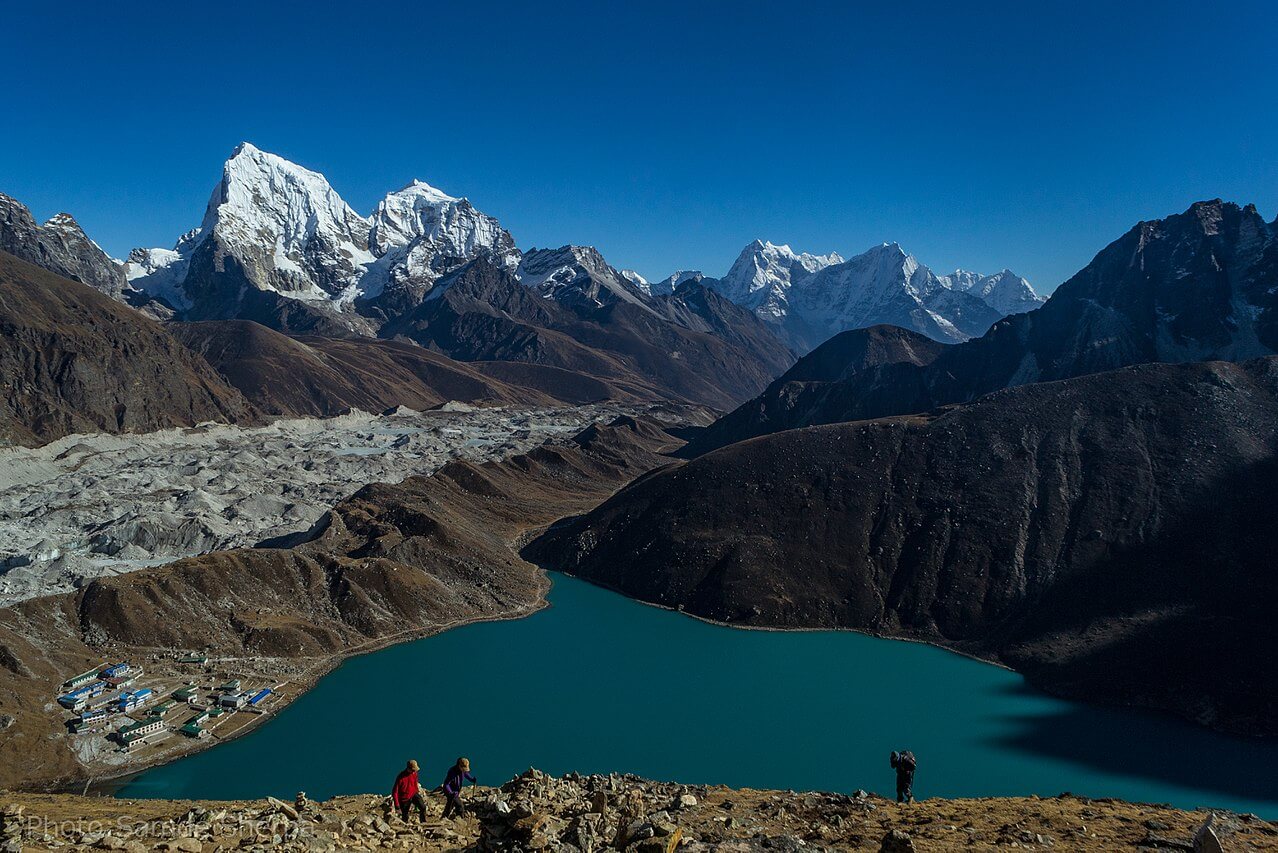
Gokyo Ri Trek
Gokyo Ri Trek, the best alternative trail to the Everest Base Camp Trek, offers exceptional views of the Himalayan peaks along with lakes and glaciers. Gokyo Ri Trek is a moderate trek in the high Himalayas of the Everest region. Instead of traveling to the more commercial Everest Trek, trekkers often choose this itinerary to…
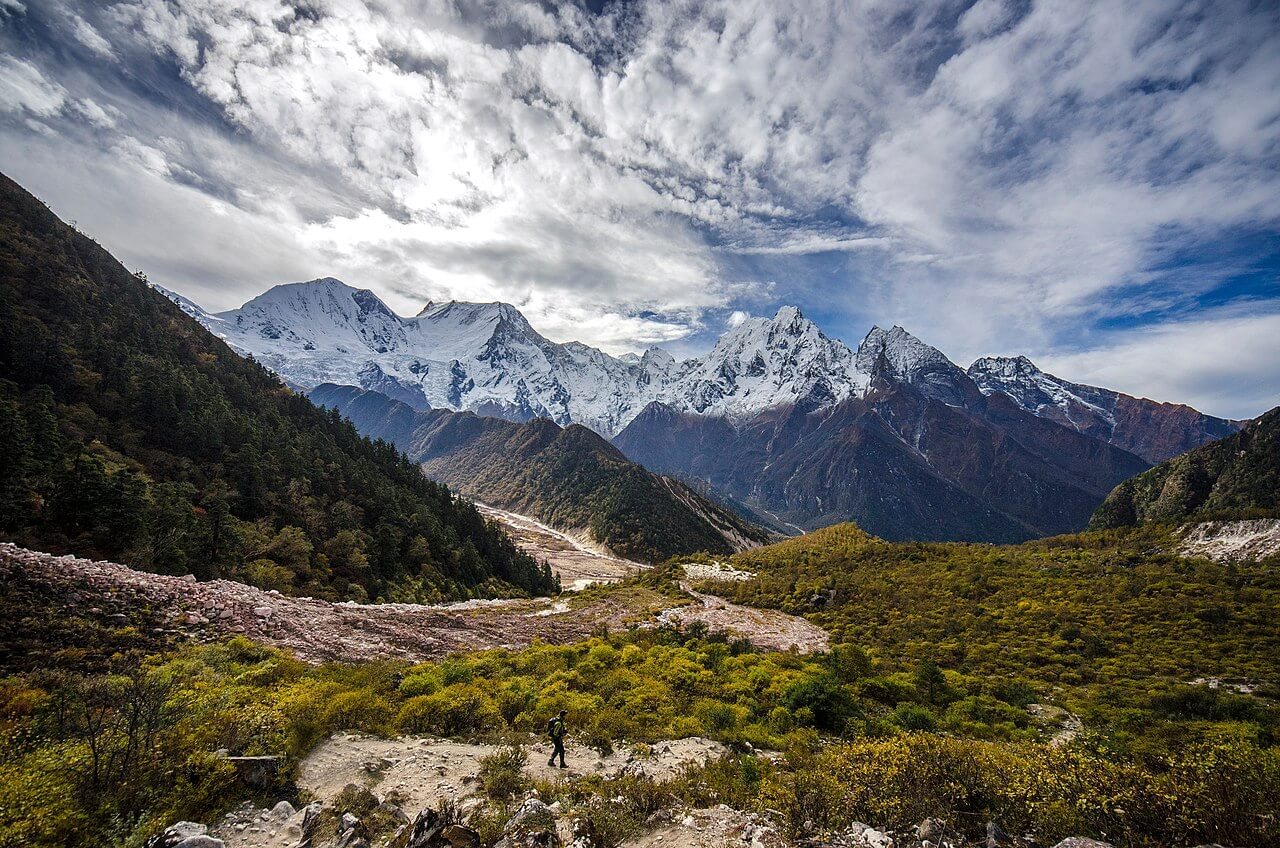
Manaslu Circuit Trek
Manaslu Circuit Trek stands less beaten and secluded compared to treks like Everest or Annapurna, but it is equally as impressive as other classic treks. Manaslu Circuit Trek is the most beautiful as well as demanding treks in Nepal. Trekking in Manaslu is a delightful experience with a blend of adventure, scenery, culture, lifestyle, and…
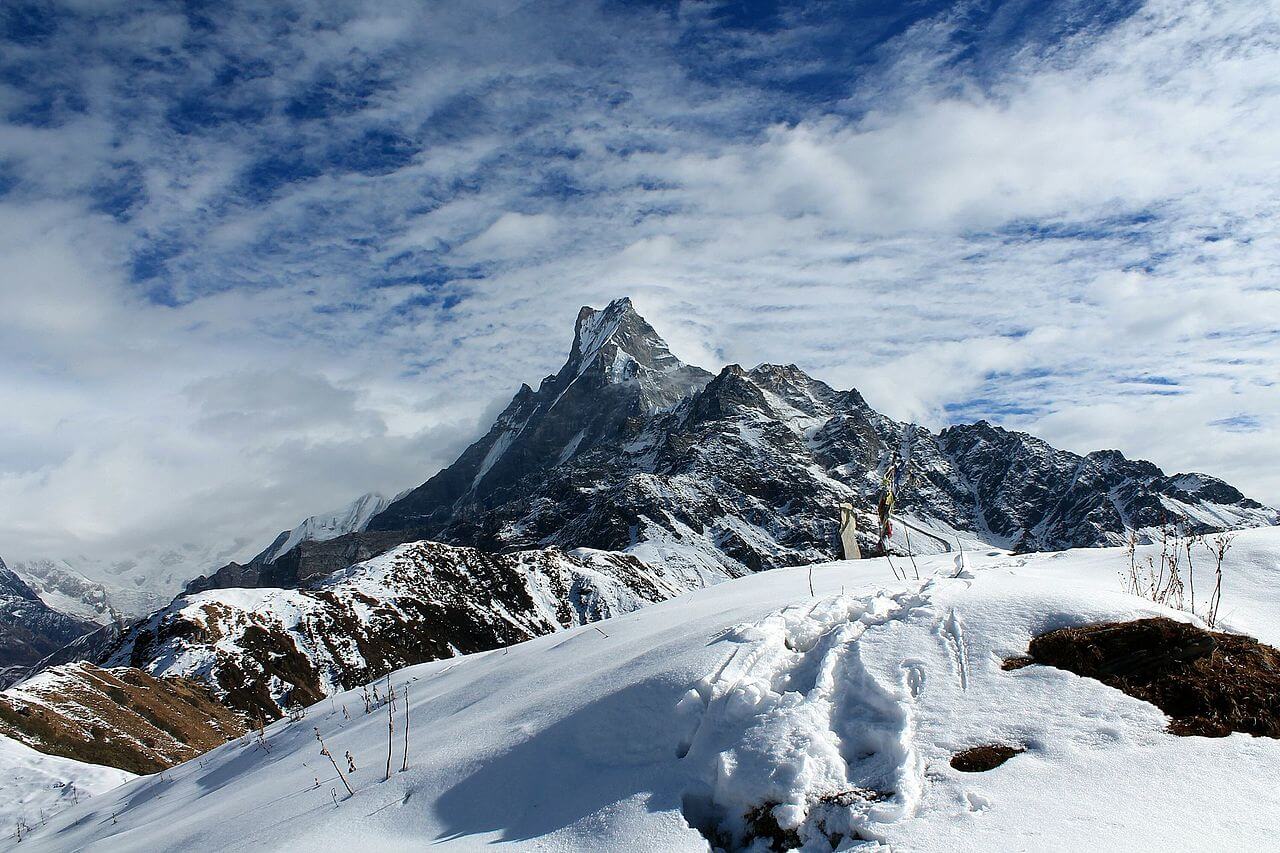
Mardi Himal Trek
Mardi Himal Trek is a hidden gem for the dedicated trekkers and backpackers. Located eastwards of the classic Annapurna Base Camp, this trekking route is yet to witness a large crowd like other commercial treks in Nepal though it officially opened for all in 2012. The richly diverse terrains of Mardi Himal takes you across…

- Best Hikes In The World
- Appalachian Trail
- European Hikes
- Nepal Hikes
- Patagonia Hikes
- See All Hikes
- Mount Kenya
- Mount Kilimanjaro
- Mount Toubkal
- See All Mountains
- South Africa
- New Zealand
- Switzerland
- United Kingdom
- Packing Lists
Langtang Valley Trek – One Of The World’s Most Beautiful Valleys
Asia , Nepal
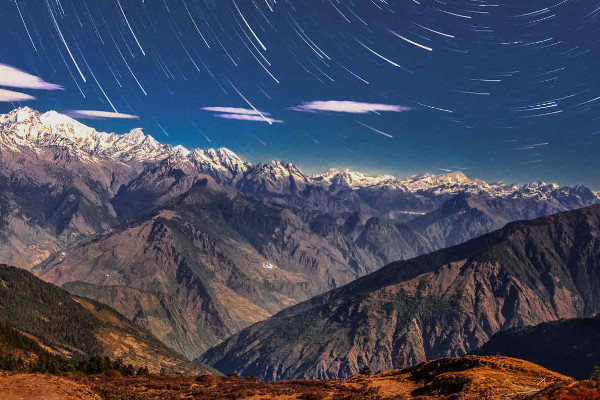
The Langtang Valley Trek is a relatively easy trek and is often far less busy than other popular treks in Nepal . The trek can be done in seven days; however, it usually takes 10 to 12 days.
On this page, you will find a comprehensive and impartial guide to the Langtang Valley Trek.
Langtang Valley Trek
Route overview.
The famed British mountaineer and travel writer, Bill Tilman (1898-1977), called this “one of the world’s most beautiful valleys.”
The local people in the Langtang Valley are mostly of Tibetan origin and, according to legend, the valley was first discovered by a lama – a teacher of Tibetan Buddhism – who was pursuing a runaway yak. “Lang” is Tibetan for “lama” while “tang” is Tibetan for “follow.”
The highlight of the Langtang Valley Trek is the sight of the Langtang Lirung range, which is simply stunning. The eponymous mountain is 23,773 feet high and dominates the valley.
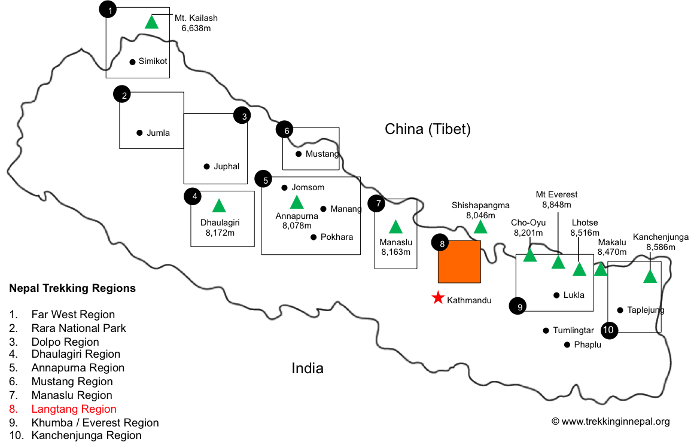
Langtang Regional Map
The Langtang valley region is in central Nepal, around 19 miles directly north of Kathmandu and near the border with Tibet. Although close to Kathmandu, closer than any other trek, this is as wild as it gets.
As you can see from the map above, the valley runs from east to west, sandwiched between the Himalayas to the north and the slightly lower Langtang Lirung range to the south.
Langtang Recommended Map
We believe the best map of the Lantang region is the Langtang & Helambu Map of the GHT which can be purchased online via Amazon. The map is produced based on data collected from the National Geographic Information Infrastructure Programme (NGIIP).
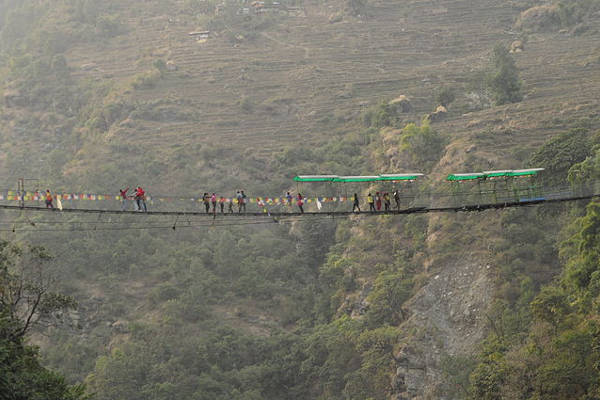
Langtang Trek Itinerary
It is possible to conduct this trek staying only at tea houses, but there is some time under canvas in this particular itinerary. There are several trek itineraries for this route, however, the one below is the most popular. You could also possibly arrange to meet your operator in Syabrubesi if you want to make your own way there.
Day 1-2: Arrive Kathmandu
You will arrive in Kathmandu on the first day.
You have the second day to spare while the provider arranges things. Kathmandu is a UNESCO World Heritage Site , so you could use the time to explore some the incredible local sites. Or you could do some last-minute shopping around the markets.
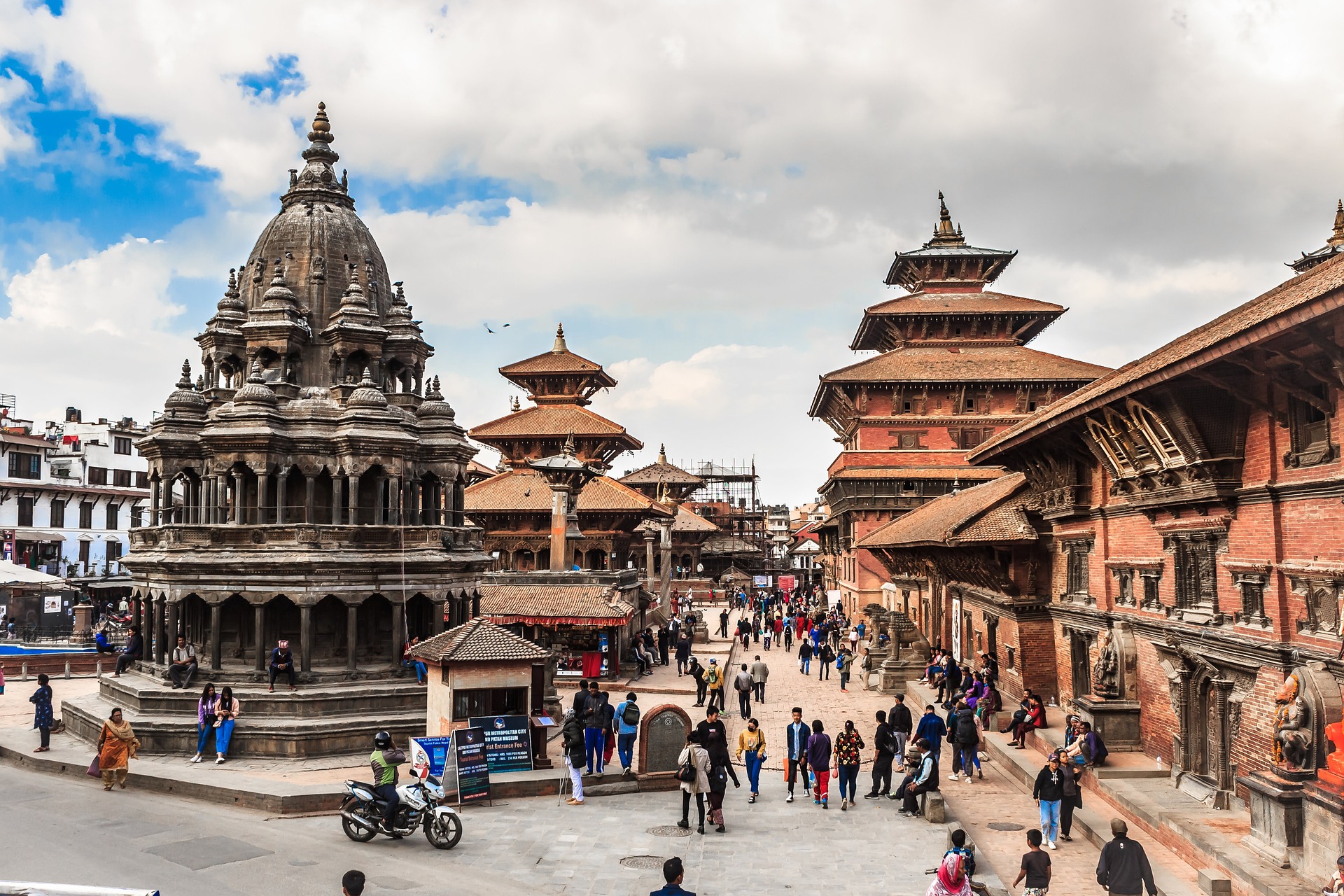
Day 3: Drive to Syabrubesi
Leaving early in the morning, you embark upon a seven-hour drive to Syabrubesi at the bottom of the Langtang Valley, the valley of glaciers. The second half is unpaved and the drive becomes quite rough. You might share a bus with goats and chickens. Sometimes, during the rainy season, the road is blocked by landslides.
The route is dazzling, passing through high ridges and with a marvellous panorama of the Himalayas that includes the Annapurnas, Ganesh Himal, Manaslu and the peaks of the Langtang range. There are many waterfalls and wild bee hives. You could also potentially see yellow-throated martins, Himalayan black bears or red pandas, which are endangered. There will certainly be no shortage of monkeys.
Day 4: Trek across the Bhote Kosi
Here, the trek begins properly. The trail takes you across the Bhote Kosi, which emanates from Tibet and lies in a deep gorge. You then climb through sub-tropical forests that teem with bird life, connecting to the trail from Syabru. One of these birds is the danphe, which is a colourful bird and the national bird of Nepal.
You will follow the river, ascending through uninhabited forests of oak and rhododendron, catching sight of langur monkeys if fortune smiles upon you. Vegetation becomes sparser as you go. You will camp overnight in a forest.
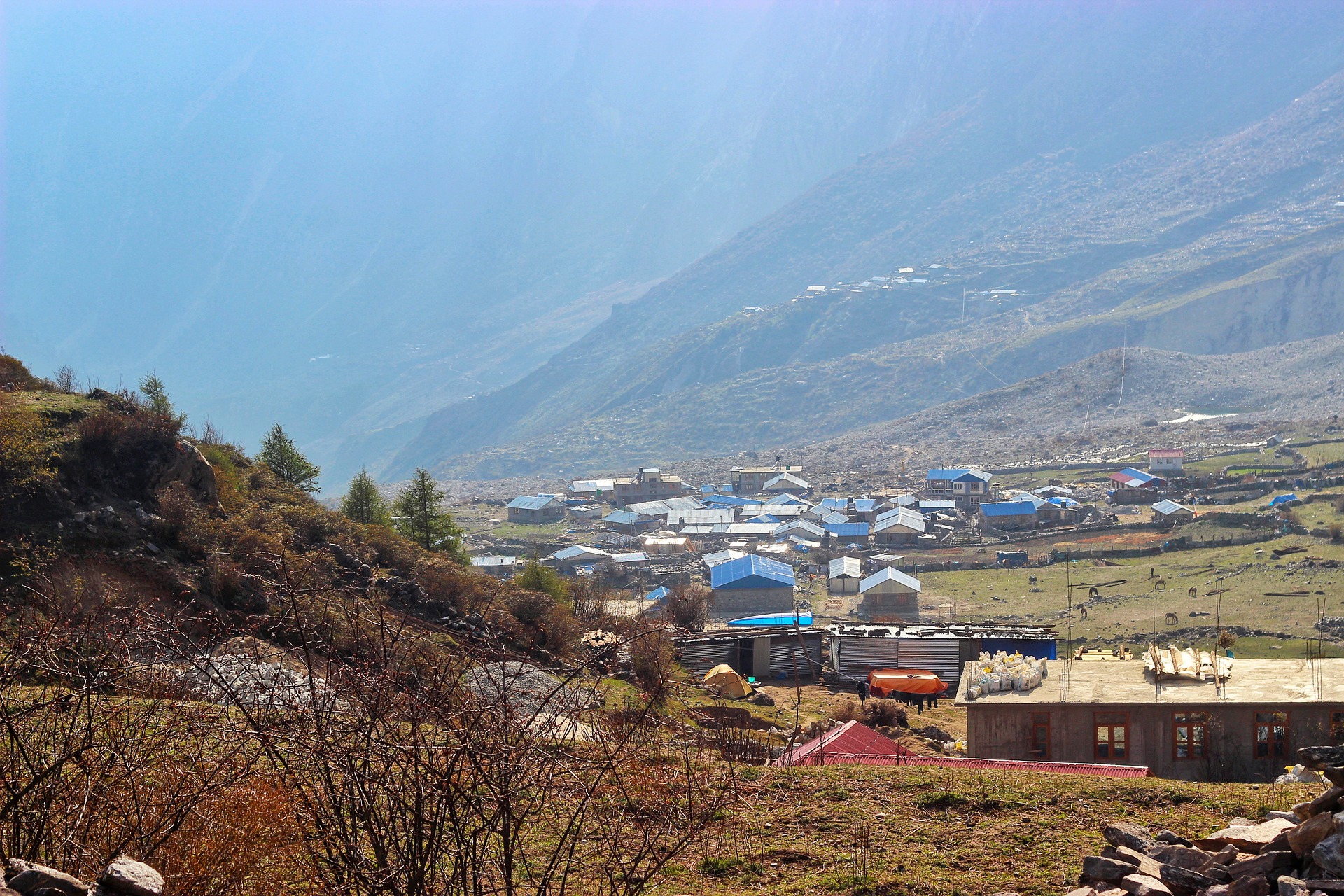
Day 5: Trek to Langtang
This day sees more climbing, with the occasional glimpse of Langtang Lirung visible through the trees. The trail leaves the forest at Ghora Tabela, now a Nepalese army post. The trail climbs comfortably, and the valley grows wider.
In summer, you will pass the temporary settlements of herders whose livestock grazes here. There are numerous chortens and mani walls, structures featuring inscriptions. In Tintin in Tibet , Captain Haddock was informed that you should always walk to the left of a chorten or demons will be released, but this was an invention of the author, so there is no cause for worry.
Shortly before the village of Langtang, there is a monastery for your delectation. The village is the headquarters of the Langtang National Park, which opened in 1976, the first in the Himalayas and the most unspoiled in Nepal. Houses there are of Tibetan style, with flat roofs and surrounded by stone walls.
Day 6: Trek to Kyangjin and onward
You will climb slowly through small villages and yak pastures. The valley opens, allowing for even better views. Having crossed a few small streams and moraines (patches of dirt or rock), before lunchtime, the trail arrives at the settlement of Kyangjin.
Here, there are facilities for the production of spiritual fulfilment and cheese: a small monastery and a famous government-owned factory. The factory makes Swiss cheese from yak milk and is supported by the Swiss government. Really, it should be called nak milk, as that is the female. This is just a small, three-roomed building, but it churns out prodigious quantities of cheese in summer. The snow-covered peaks in every direction make this spot very dramatic and beautiful.
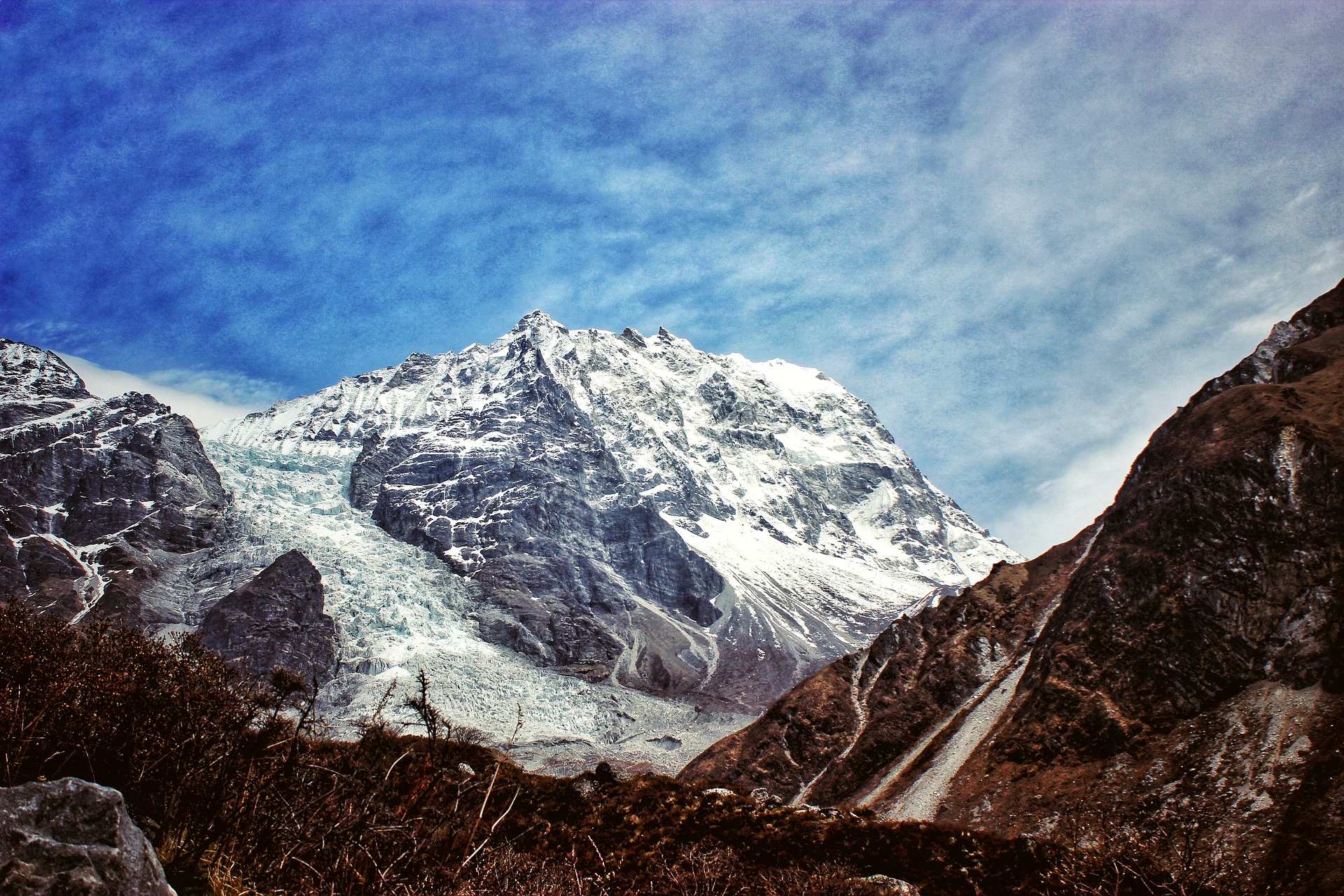
Day 7: Acclimatisation Day
This is a rest day which you will probably use to explore. The glaciers of Langtang Lirung are sensational. You could even summit Kyangjin Ri (14,209 feet), known locally as Brana Chumbo, which is immediately behind the village and provides a breathtaking 360-degree view of the Langtang peaks.
Day 8: Retrace route to Langtang
You will retrace your route towards Langtang village. The trail heads is down hill through forest following the river. You pass through ethnic Tamang settlements who strictly follow religious and cultural practices similar to that of the Tibetans.
Day 9: Return to Syabrubesi
You will continue the return journey, finishing at Syabrubesi. This is roughly a 5-hour walk and the easy trail goes mostly downhill through lush green vegetation.
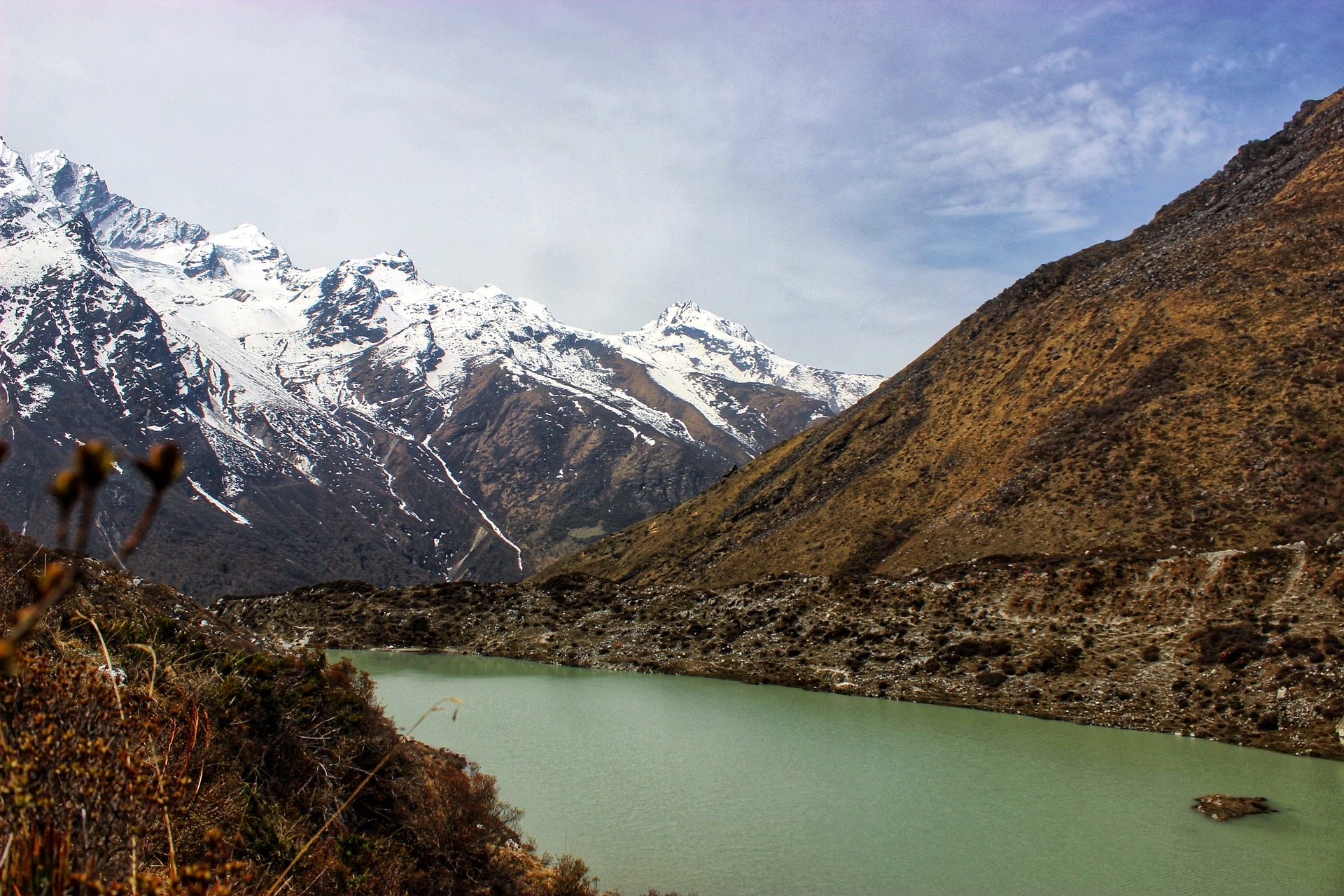
Langtang Valley Trek FAQ
How much does the langtang valley trek cost.
Costs for the Langtang Valley trek range from $1000 on the low-end to $2,000 on the top-end. Check out our list of the best trekking companies in Nepal .
Are permits required for the Langtang Valley trek?
You don't need a permit for the Langtang Valley Trek. However, you must be registered with the Trekkers Information Management system (TIMS for short) in order to do the trek. An entry fee of $30 is charged by the Langang National Park.
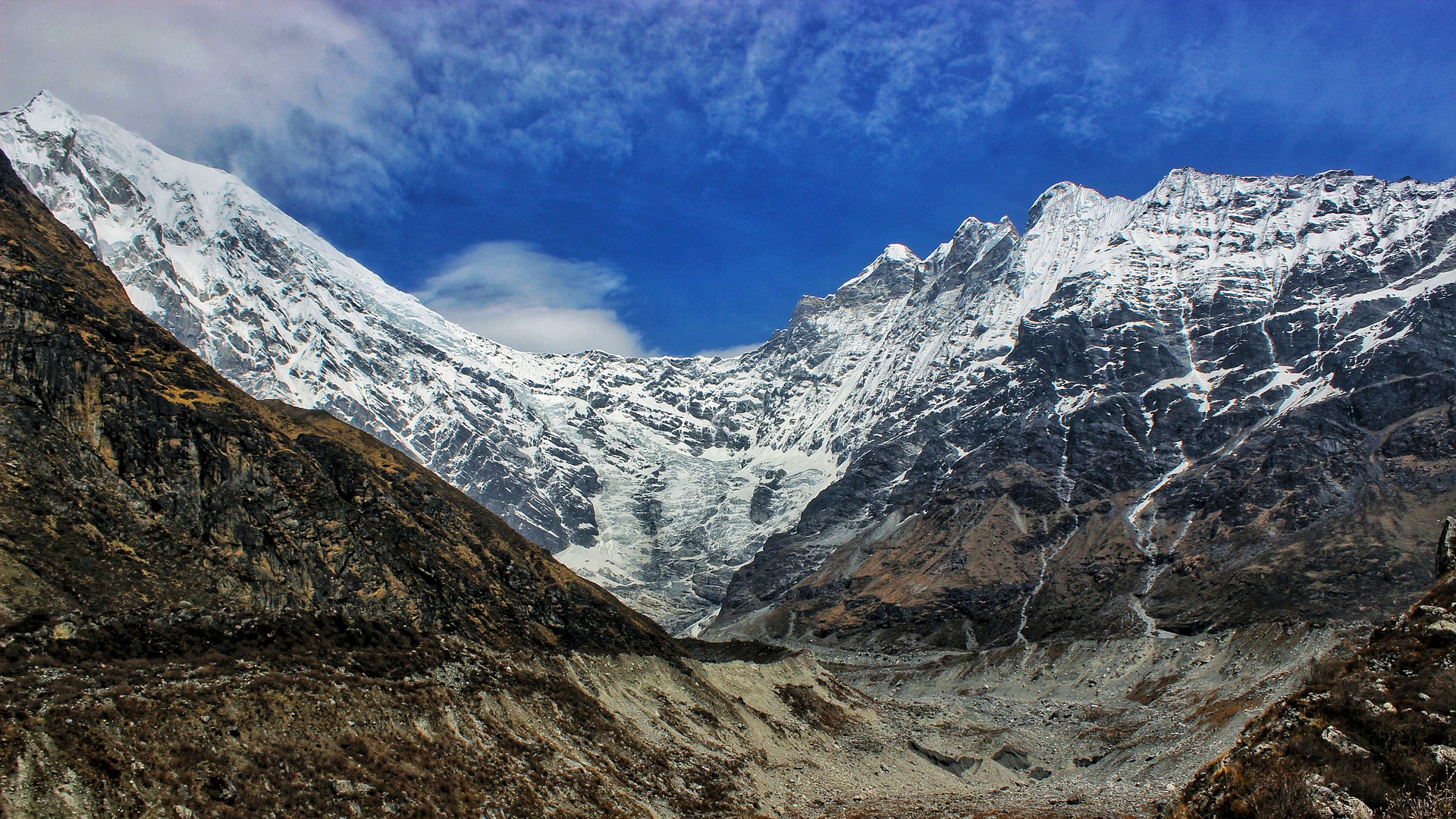
When is the best time to trek the Langtang Valley?
The best time to trek the Langtang Valley is Autumn, from mid-September to mid-December, and Spring, from March to May. These are considered the best seasons to hike in Nepal . when the sun is out during the day, but the nights are cold. Winter is also a possibility, if you don’t mind the cold.
Is altitude sickness a risk on the Langtang Valley trek?
Yes, altitude sickness is a risk because the Langtang Valley trek ascends to some high-altitude points. At its highest point, Tserko Ri, you will reach an altitude of 5,000 meters (16,347 feet). There are steep section on this trek where you will ascend fairly quickly.
Because of this, it is important to have a good understanding of the risks associated with high altitude trekking and how the body acclimatises to high altitude. We recommend you read our detailed article on Altitude Sickness and Acclimatisation .
How difficult is the Langtang Valley trek?
The Langtang Valley Trek is considered to be of moderate difficulty. There are steep sections that require a good level of fitness; however, the trek is relatively short and most people with a good attitude and high level of determination should be okay.
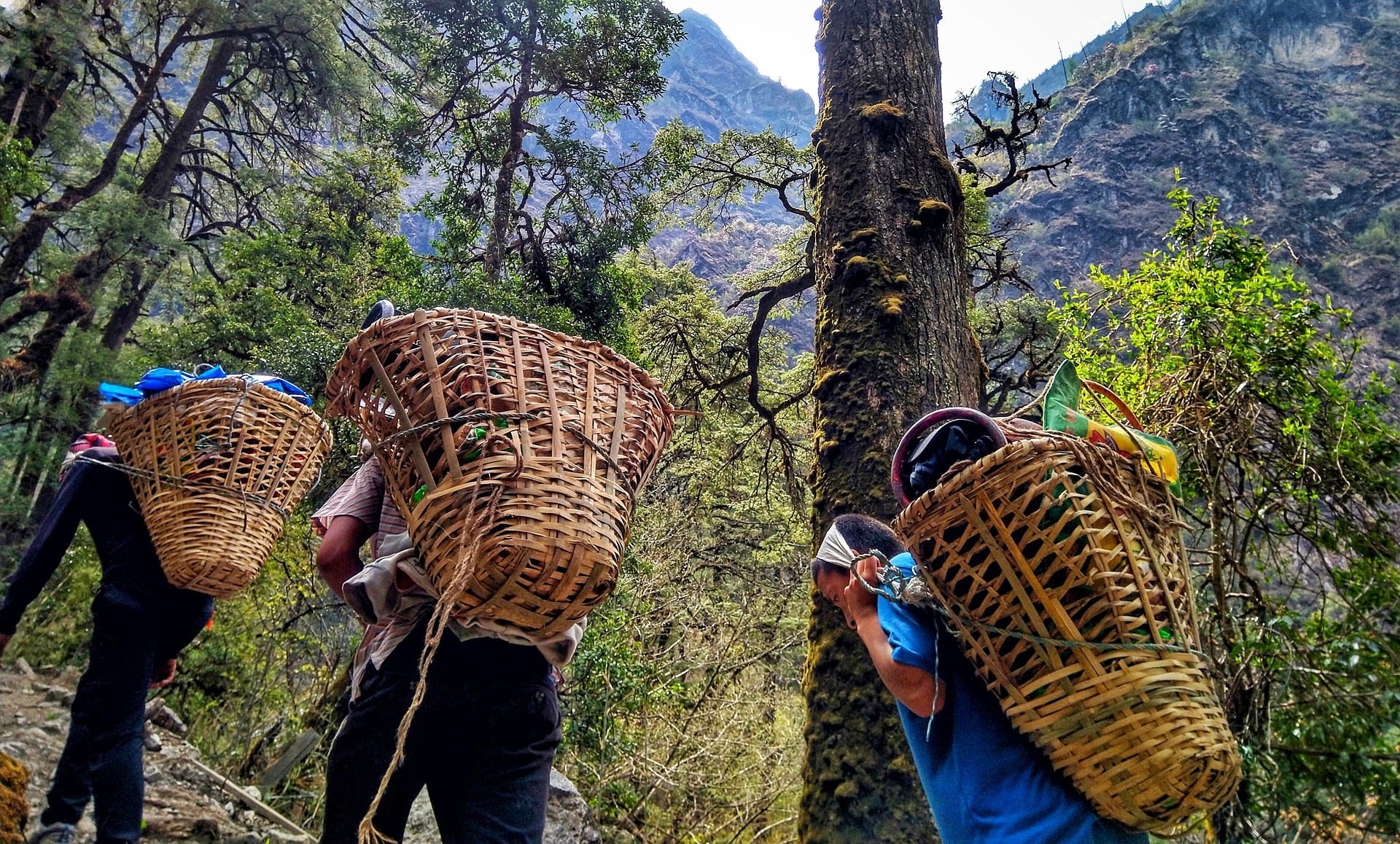
What gear do I need for the Langtang Valley trek?
Trekking the Langtang Valley requires a number of essential pieces of trekking gear and equipment. It is a long and moderately difficult trek, exposing you to a range of altitudes where temperatures fluctuate dramatically between night and day.
Much of your gear can be rented or bought in Kathmandu, but we strongly suggest bringing the most important pieces of gear and equipment with you.
To help you plan and prepare for your trek, we recommend reading our hiking packing list . Also, dont forget to take out good travel insurance for Nepal .
Are there any recommended guidebooks for the Langtang Valley trek?
Yes, there are several recommended guidebooks for the Langtang Valley trek. The Langtang Valley trek appears in many guidebooks which you use before and during your trip.
We highly recommend A Trekking Guide to Langtang: Gosainkund, Helambu and Tamang Heritage Trail by Sian Pritchard-Jones and Bob Gibbons. If this guidebook isn’t available, then Trekking the Tamang Heritage Trail of Nepal by Alonzo Lucius Lyons is very good too.
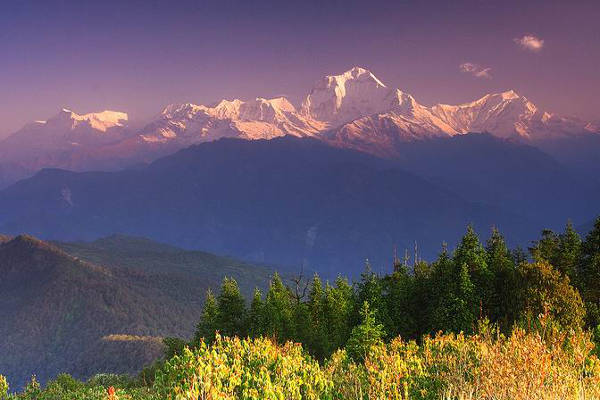
Continue browsing
See more information on Nepal . Or check out these other Nepal hiking articles:
- Short Nepal Trails
- Kala Patthar Trek
- Annapurna Circuit Hike
- Everest Base Camp Trek
- Trekking the Khumbu Valley
- Island Peak Hiking Guide
- Hiking to Rara Lake
- Limi Valley Trek
- Rolwaling Trekking Guide
- Panchase Hike
- Dhaulagiri Circuit Trek
- Trekking the Jomsom Muktinath
- Hiking to Kanchenjunga Base Camp
- Mera Peak Trek
- Helambu Hiking Trail
- Mustang Circuit Trek
- Gokyo Lakes Hike
- Trekking to Makalu Base Camp
- Gosainkunda Trek
- Ghorepani Poon Hill Trek
- The Royal Trek
About the author
Mark Whitman
Mark has trekked extensively in Asia, Europe, South America and Africa. He founded Mountain IQ in 2014 with the sole aim to be the best online information portal to some of the most popular mountain destinations around the world. When not writing for Mountain IQ, Mark is out exploring the outdoors with his wife!
Leave a Reply
Your email address will not be published. Required fields are marked
We work with local guides to offer great value adventures at unbeatable prices
Kyanjin Ri: Langtang Trek’s Highest Point
- Last Updated on Feb 20, 2024

Kyanjin Ri at an altitude of 4,773 meters (15,655 feet) from sea level, is the highest vantage point of Langtang Trek. Like the Kalapatthar (6,643 meters), the highest point of the Everest Base Camp Trek , Kyanjin Ri is famous for the surreal views of the Langtang Valley and the surrounding peaks during the Langtang Trek.
On the journey to reach this pinnacle point of nature’s artistry, you will follow trails of the third most popular trekking region in the Himalayas, Langtang Valley Trek . Tucked away in the embrace of the Himalayas, this hiking viewpoint of the Langtang Valley enchants travelers with its breathtaking vistas and mystical allurements.
Like the sentinel of eternity, Kyanjin Ri watches over the beautiful valley below and draws travelers who are seeking solace and serenity to its slopes. With every step in this journey, travelers will be able to write their own story on the ancient stones of this incredible Himalayan viewpoint with the opportunity to forge a bond with nature in the pursuit of discovery and enlightenment.
Table of Contents
Kyanjin ri overview: langtang trek’s highest point.

Kyanjin Ri is one of the most popular and easily accessible viewpoints in the Himalayas. Unlike other base camp and circuit trekking adventures, you don’t have to take on physically demanding trails to reach a vantage point.
The name of this hiking viewpoint is derived from the beautiful settlement of the ‘Kyanjin Village’, and the village embraced the name due to the spiritual presence of the Kyanjin Gompa. This gompa is believed to be 700 years old and is one of the most significant and old Buddhist sites in the world.
Kyanjin Ri trek is actually divided into two categories: Kyanjin Ri (Lower) , which is approximately 4,360 meters (14,304 feet) high from the sea level, and Kyanjin Ri (Higher), which is at an altitude of 4,773 meters (15,655 feet). The lower hiking point offers incredible views of the valleys and mountain ranges from its vantage point.
Similarly, if you hike even further, you will reach the Kyanjin Ri higher viewpoint, which is situated right in front of the Yurba Himal. From here, you will able to enjoy the panoramic views of the Himalayan peak, deep valleys, and, of course, ice falls and glaciers up close.
The trail that leads to the upper viewpoint of Kyanjin Ri passes across the ridge of the mountain, so it can be a challenging excursion if you are trekking during the season when the path is covered with snow.
Normally, it takes about 1.5 hours to reach the upper Kyanjin Ri from the lower hiking viewpoint. You can also take a different path to descend downhill after reaching the top of the upper viewpoint; the path is less steep and much easier than the way through the lower viewpoint.
What Can You See From Kyanjin Ri?

Kyanjin Ri is an epicenter to immerse in the Himalayan ambiance and enjoy the panoramic views of the mystical snow-clad peaks. The trekking adventure in the Langtang Valley feels incomplete without the hike to this vantage point; this hiking viewpoint has such significance in the Himalayan adventure.
The glacial rivers, serene widespread yak pastures, and the wide Himalayan vistas are some of the scenic highlights of the Langtang Trek. However, the views from the vantage point of the Langtang Trek are even otherworldly; you will be able to relish the stunning views of deep valleys, glacial streams cutting through the valley, wide pastures, and close-up mountain views, including the glaciers and icefalls.
From the top this vantage point, Kyanjin Ri height at 4,773 meters, you will be rewarded with the breathtaking panoramic views of Lantang Lirung (7,234 meters), Langtang Ri (7,205 meters), Loenpo Gang (6,907 meters), Dorje Lakpa (6,966 meters), Changbu (6,7781 meters), Morimoto (6,150 meters), Gangchenpo (6,387 meters), Yala Peak (5,520 meters), Ganja La Peak (5,844 meters) and other surrounding peaks.
In the Kyanjin Ri trek, besides the incredible mountain views, you will also be able to soak in the peaceful and spiritual Himalayan atmosphere, enjoying magnificent views of the monasteries, chortens, and praying flags. On top of that, the views of Ganja La Pass (5,122 meters), moving glaciers, and sometimes even avalanches will make your journey even more enchanting.
How to Reach Kyanjin Ri?

Although there are several options to reach this incredible hiking viewpoint of the Himalayas, one of the most preferred and ideal journeys is through the trails of the Langtang Valley. Depending on the arrangement of your package, either your Kyanjin Ri trek will start after a sightseeing day in Kathmandu or directly with the drive to Syabrubesi (1,450 meters), the trek starting point of the Langtang Valley Trek.
Then, from Syabrubesi, you will make your gradual ascend to the Lama Hotel (2,480 meters) and keep pushing further on the uphill trail to reach the Langtang Village (3,540 meters). Your journey further ahead will then take you to the spiritual realm of the Kyanjin Gompa (3,850 meters). After spending a night at the village and acclimatizing properly, the next morning you will then hike to the Kyanjin Ri, the highest point of the Langtang Trek.
You will return back to the Kyanjin Village to rest for the night and enjoy the magical Himalayan atmosphere one more time before beginning your descending journey. You will either retrace your steps back on the same trekking route and trek across Langtang Village to Lama Hotel to Syabrubesi for the drive back to Kathmandu.
In an alternative route, you can also trek down to Rimche (2,399 meters) from Kyanjin Gompa and descend down to Syabrubesi for the drive to Kathmandu . The overall route and exploration will depend on the itinerary plan.
So, the best way to explore Kyanjin Ri is via the trekking route of the Langtang Vallley. You can select the most suitable trekking package for you that includes the hike to the Kyanjin Ri in your exploration. Explorer Adventure also offers some of the most remarkable trekking packages in the Langtang Himal Region that you can select for the Kyanjin Ri hike. We also offer customizable options so you can decide the duration of the trek, route taken, and highlight exploration in the region according to your preference.
When is the Best Time for Kyanjin Ri Hike?

The Langtang Valley Trek is counted among the easiest expeditions to the Himalayas in Nepal. The route, altitude challenges, and other difficulty factors in this Himalayan excursion are on a moderate level. You don’t need to have any kind of experience or technical skill knowledge to do this trek.
So, Kyanjin Ri trek is pretty much doable throughout the year. For the best experience, the peak season months, like autumn and spring , are recommended as Kyanjin Ri weather conditions are favorable. However, you will also be able to do this trek in winter and monsoon seasons if you make adequate preparations. Still, for a comfortable and pleasant experience, we recommend the peak seasons like spring (March, April, and May) and autumn (September, October, and November). The months of these seasons have stable climatic conditions and pleasant temperatures.
The autumn season is considered the driest month throughout the year and is perfect for the Himalayan trekking adventures. This season also offers the most spectacular views of the Himalayan vistas and welcomes trekkers with fascinating landscapes immersed in the hue and grey shades of the season. The Kyanjin Ri temperature during the autumn usually hovers around 10°C to 31°C .
Similarly, the spring season is popular among trekkers for its natural allurements and the stunning visual of nature’s peak moments. You will be able to enjoy the incredible trekking adventure under the pleasant temperatures and, at the same time, will have the opportunity to explore the rich Himalayan bio-diversity. The Kyanjin Ri temperature during the spring season generally averages around 11°C to 31°C .
Permits Required

Despite the route you take during the Kyanjin Ri hike, you will need to acquire the following permits to trek across the protected areas of the Langtang Valley. Luckily, you will need to get only permits to do this trek:
Permits for Kyanjin Ri Hike
- Langtang National Park Entry Permit
- Trekker’s Information Management System (TIMS) Card
Your incredible Himalayan journey will take you across the conserved area of the Langtang National Park. So, getting the permit for the national park is mandatory, and it costs just about US$ 30 .
Similarly, the Trekker’s Information Management System (TIMS) Card is another mandatory requirement for high-altitude treks in Nepal . This card helps the authorities save the entry point of your journey on their database and ensure an efficient response in case of emergencies. You can get this card for just about US$ 17 for your hike to Kyanjin Ri.
You may also like:
- Best Time for Langtang Gosaikunda Trek
- Langtang Gosaikunda Trek Cost
- People and Culture of Langtang Valley
What Should You Bring for the Trek?

Although the most part of Langtang Valley Trek has a moderate level of altitude gain, Kyanjin Ri altitude is significant. Doing a high-altitude trekking adventure is not as easy as it sounds. You will need to pack the right layers and equipment to make the journey a comfortable experience. Failing to do so might make it difficult to overcome the different climatic zones along the trails and the remoteness of the region.
You should pack light for the trek and make sure not to miss out on the most essential layers and gear to ensure the trek’s enjoyment. You can use the following packing suggestions to cross-reference with your checklist.
For Head and Body
- Sun block hat, beanie, and woolen hat
- Neck gaiter, cowl, or scarf
- Sweat-wicking and insulated base layers
- Fleece jacket
- Waterproof/windproof jacket
- Down jacket for alpine altitude
- Hiking shorts
- Waterproof/windproof trousers
- Breathable insulated trousers
- Undergarments
- Glove pairs with different thickness
- Trekking boots (break-in first)
- Sports shoes for short hikes
- Sandals or slippers for teahouses
- Socks with different thickness (light to insulated)
- Waterproof gaiter
Personal Hygiene
- Toothbrush, toothpaste
- Bio-degradable soap and shampoo
- Sunscreen cream, body lotion, and lip balm
- Small mirror, nail clipper, razor
- Foot powder, perfume
- Insect repellent
- Female hygiene products
- Personal medication (if any)
- Travel towel
- Wet wipes, tissues
- Toilet paper
Equipment and Gear
- Trekking pole
- Sleeping bag
- Backpack or daypack, duffle bag
- Packing sack
- Wastage bag
- Rain cover for luggage
- Ankle support
- Map, compass, and GPS
- Sleep mask, earplugs
- Water bottle and thermos flask
- Board games, card games, or entertainment options
- Journal, magazines
- Binocular and camera

Ask a Question

Manaslu Trek in December

Manaslu Trek In November

Manaslu Trek In September
We use cookies to ensure that we give you the best experience on our website.

Langtang Valley Trek: Everything You Need To Know
Jackson Groves
Posted on Last updated: October 20, 2023
Categories NEPAL , HIKING
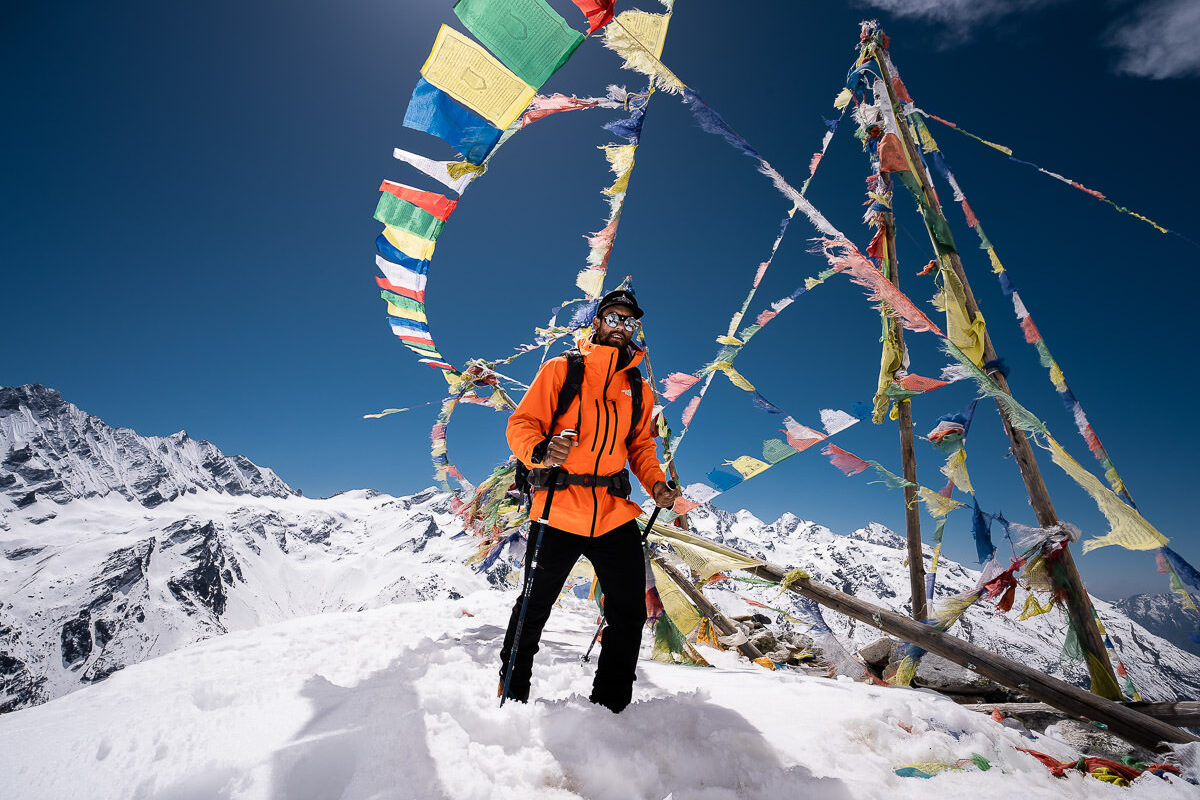
The Langtang Valley Trek is a unique expedition in the Himalayas of Nepal. While shorter than many other popular treks in Nepal, the adventurous expeditions and day-hikes throughout this route make it one of my favorites. After three days of trekking, you will reach Kyanjin Gompa. From this small mountain town, there are several incredible day-hikes with fantastic views.
The short 3-day trek into Kyanjin Gompa makes this trek shorter, cheaper but arguably more beautiful than other treks such as Manaslu Circuit, Everest Base Camp Trek, or the Annapurna Circuit. I did this trek with the trekking company Himalayan Masters who I’ve trekked with
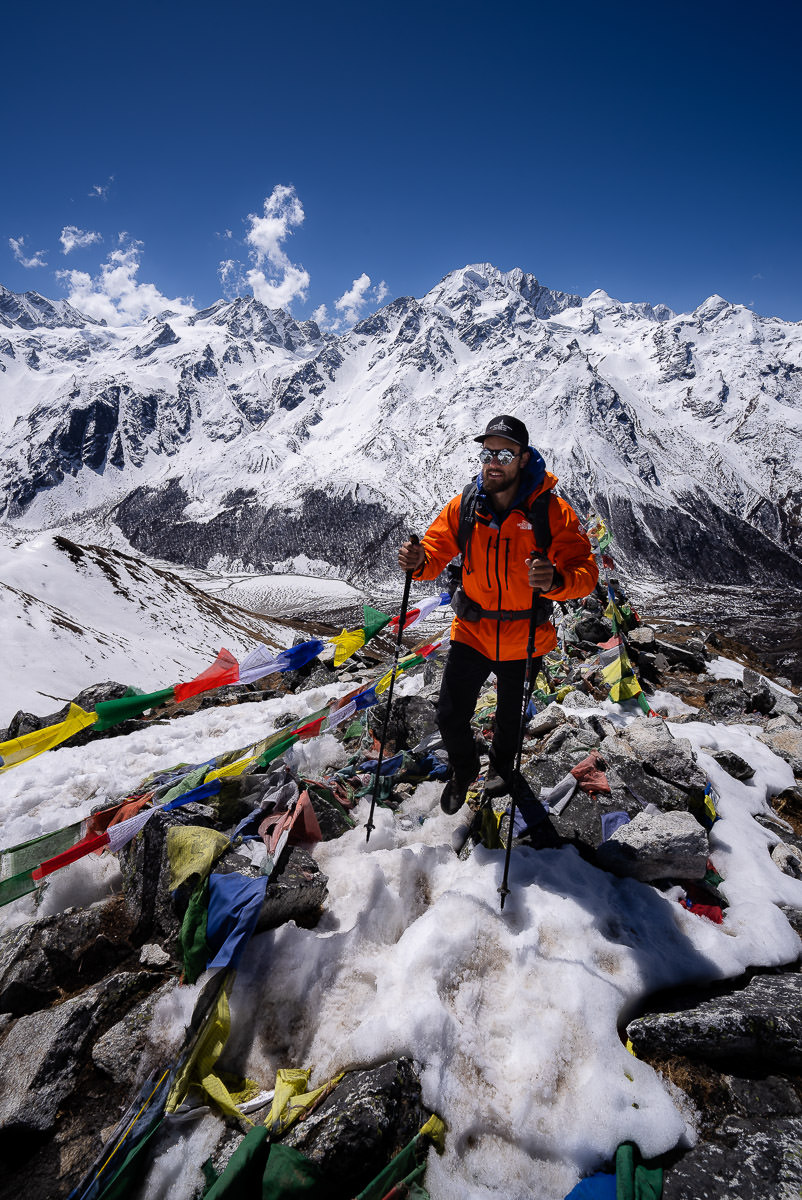
In this blog post, I will cover everything you need to know about the logistics of the Langtang Valley Trek. I’ll also share with you my experience on each day of the trek in the form of a short journal entry and my photos from that day. This will give you an idea of what to expect and a great insight into the scenery you will find on each day of the trek. I’ve already created a lengthy guide for the nearby viewpoints such as Tserko Ri, Kyanjin Ri, or the climb of Yala Peak .
Before sharing my experience in the second section of this blog post, I will detail all of the information you have to know in this complete guide about the Langtang Valley Trek and climbing Yala Peak.
BEST TREKKING COMPANY IN NEPAL
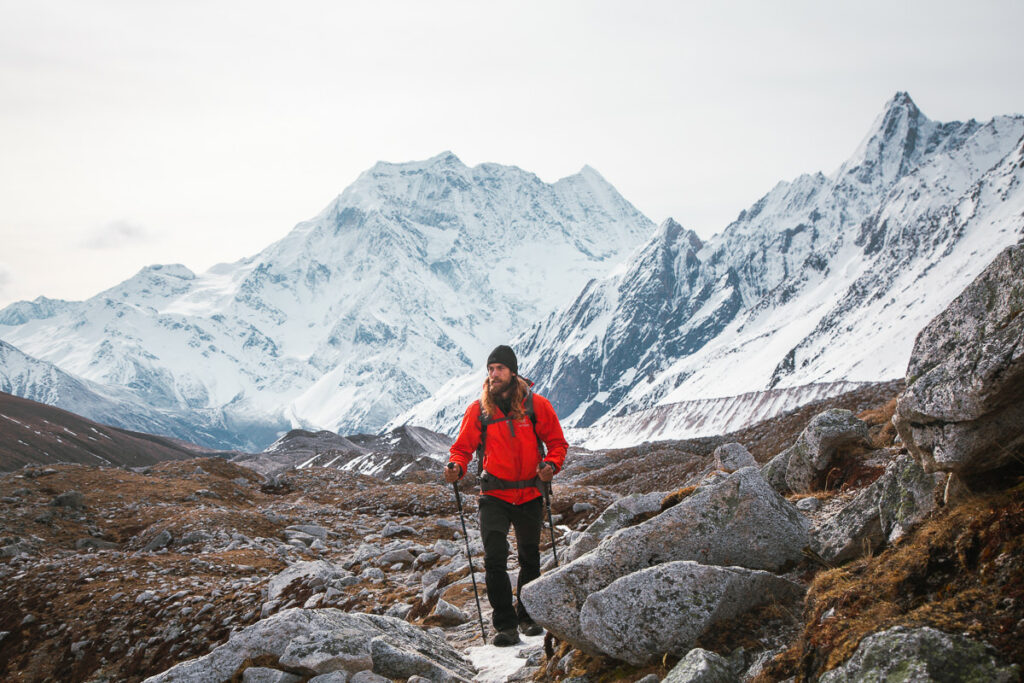
Interested in trekking in Nepal or doing the Everest Base Camp Trek? I recommend booking your trek with Himalayan Masters , which is the company I use for all of my treks in Nepal. Use my code JACKSON5 when you book to receive a 5% DISCOUNT .
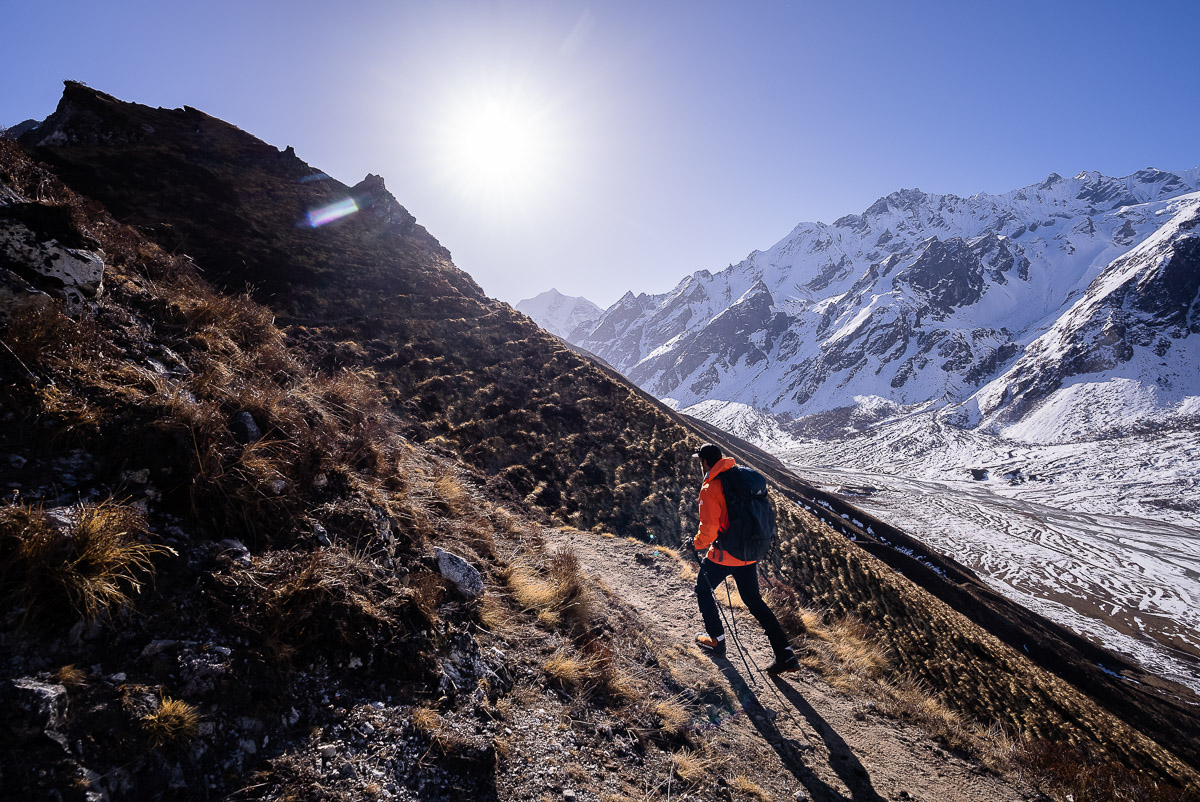
Table of Contents
A GUIDE TO THE LANGTANG VALLEY TREK
In this guide, you will find all of the valuable information you need to plan your trek as well as my personal experience on the entire trek including the Kyanjin Ri Viewpoint, Tserko Ri Viewpoint, and Yala Peak climb.
LANGTANG VALLEY TREK DETAILS
- Distance : 77km or 48 miles
- Days required : 9 days including 2 days of transit to and from Kathmandu (7 days trekking)
- Total Incline : 4000 meters
- Total Decline : 4000 meters
- The highest point on the trek : From Kyanjin Gompa you can reach Kyanjin Ri (4,773m) or Tserko Ri viewpoint (5,033m). Additionally, you can climb Yala Peak from Kyanjin Gompa, which has an altitude of 5,500m.
- Difficulty : The Langtang Valley Trek is much shorter than Everest Base Camp or the Annapurna Circuit although relativley similair. You will reach an altitude of 5000m, which will challenge many. Altitude sickness can be common. The route ascends quite quickly with several days having more than 1000m of altitude gain. These days of ascent are tiring and also require the body to adjust quickly. It is a good beginner trek in Nepal but not one to be taken lightly.
- Permits : You will need a TIMS card and Park Entrance Permit, both can be purchased when entering the park.
- Guide: A guide is not required on this trek. However, the guide manages all of the logistics, distances, directions, and tea houses for your group. I used maps.me to navigate from tea-house to tea-house and found the paths easy to follow. If it’s your first time trekking in Nepal, I would suggest having a guide.
- Accommodation: Guest Houses, also known as Tea Houses, are available along the way where you will sleep in a comfortable bed and have access to showers (extra charge) and restaurant facilities. It was very comfortable accommodation and great after a long day of hiking. Most of the villages were Tibetan, which gave us a great insight into their unique culture.
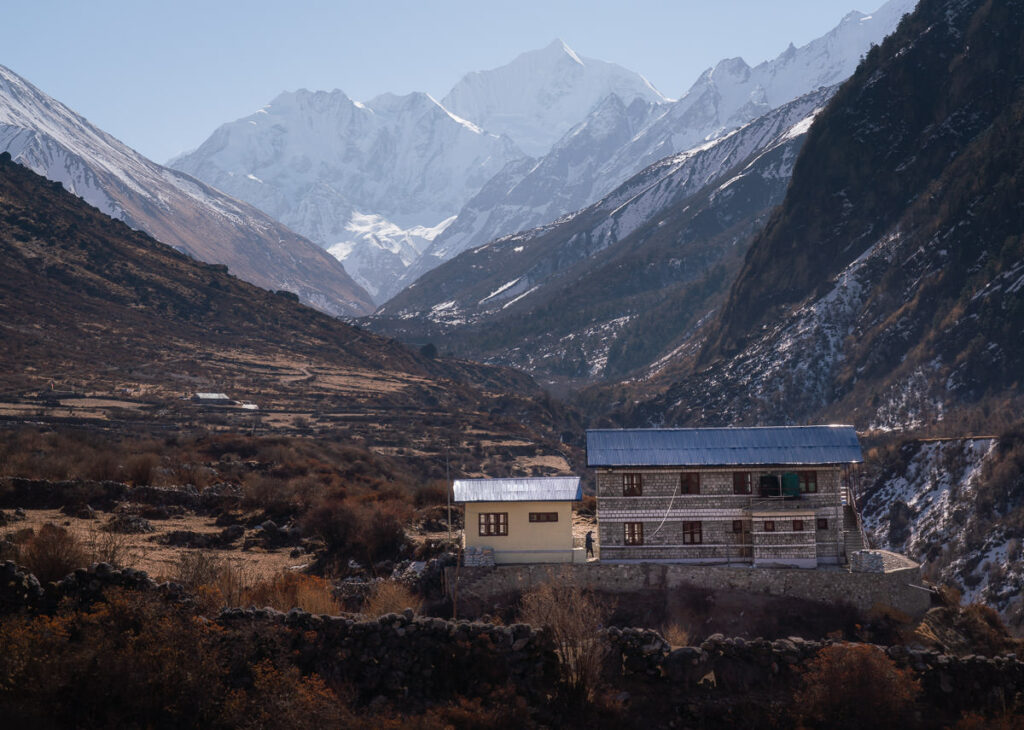
TRY THE 3 BEST TREKS IN NEPAL

Manaslu Circuit : My personal favorite 2-week trek through Tibetan villages and stunning scenery. Less crowded and more authentic.
Annapurna Circuit : The most beautiful & scenic 2-week trek in Nepal although can be crowded at times.
Everest Base Camp Trek : The most iconic 2-week route reaching the famous (EBC) Everest Base Camp at 5,300m.
KEY POINTS ABOUT THE LANGTANG VALLEY TREK
- This circuit is way less crowded than Everest Base Camp Trek or the Annapurna Circuit. It is growing in popularity but it’s still a great time to trek this circuit before it hits the mainstream.
- There are teahouses in each village along the way so each night you get a great sleep in a bed with blankets, have access to showers, eat great meals in a restaurant, and can charge your electronics and cameras.
- The trailhead can be reached by car so there is no need to pay for expensive domestic flights.
- I think it is important to base in Kyanjin Gompa for atleast three nights so you can hike up to Kyanjin Ri and Tserko Ri, which are the highlight of the trip.
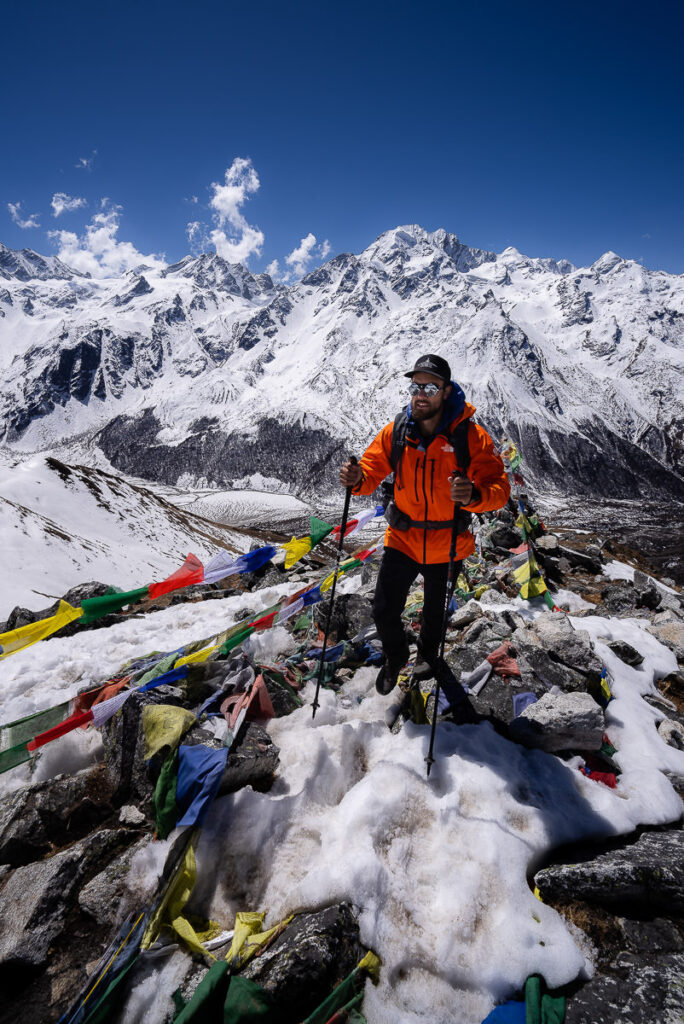
BOOKING A GUIDE FOR THE LANGTANG VALLEY TREK
The Langtang Valley Trek doesn’t require a guide but it’s great to have a guide managing the logistics such as directions, tea-houses, distances, medical issues, and the overall organization. I’d say 80% of trekkers go with a guide. I did the trek with Himalayan Masters which is one of the top trekking companies when it comes to the Langtang Valley Trek.
The trek costs around $800 USD with Himalayan Masters as of 2022 and includes all transfers, accommodation, meals, drinks, permits, and even the hotel stay before and after the trek at a high-quality hotel. I honestly had a great time on this trek and I can wholeheartedly recommend Himalayan Masters.
You can use my discount code ‘ JACKSON5 ‘ for 5% off the total price of your trek with Himalayan Masters which is a pretty handy saving.
Email: [email protected]
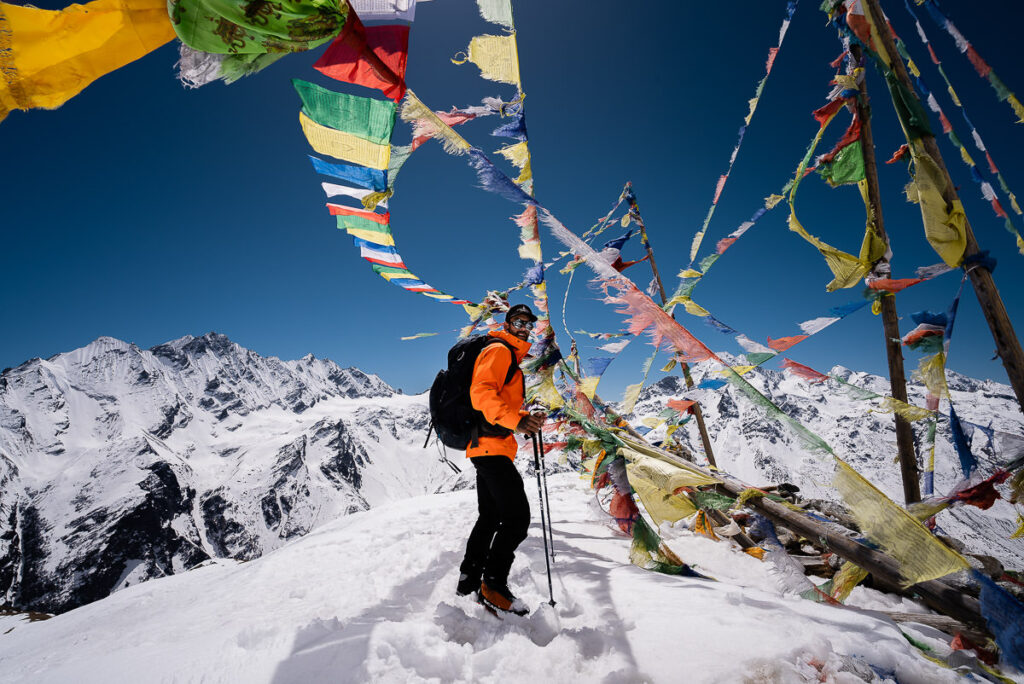
LANGTANG VALLEY TREK PACKING LIST
I packed pretty light and managed to wash most of my clothes each afternoon/night for the first half of the trip. In the latter stages of the trip, it was pretty cold so we weren’t sweating as much and we wore our warm gear basically nonstop while at the teahouses. There was no real need for multiple outfits.
This is just a guide and it worked quite well for me with no complaints from my set-up. You won’t need a sleeping bag as there are blankets in each guesthouse and when it got cold I just wore my down jacket to bed. This meant I didn’t have to carry a sleeping bag for the entire trek.
- 1 pair of pants that maybe convert to shorts
- 1 pair of shorts
- 1 Warm or thicker pair of hiking pants
- 1 Long sleeve quick-dry shirt
- 1 Long-sleeve thermal shirt
- 2 Short-sleeve t-shirts
- 1 Thermal long underwear
- 4 pairs of quick-dry underwear
- 1 Lightweight down jacket
- 1 Heavy-duty summit down jacket
- 1 Neck Buff
- Hiking boots
- 1 pair of warm summit socks
- 2-3 pairs of regular socks
- Trekking poles
- Water filter
All of this should fit into a backpack no bigger than 50L and should be less than 14kg.
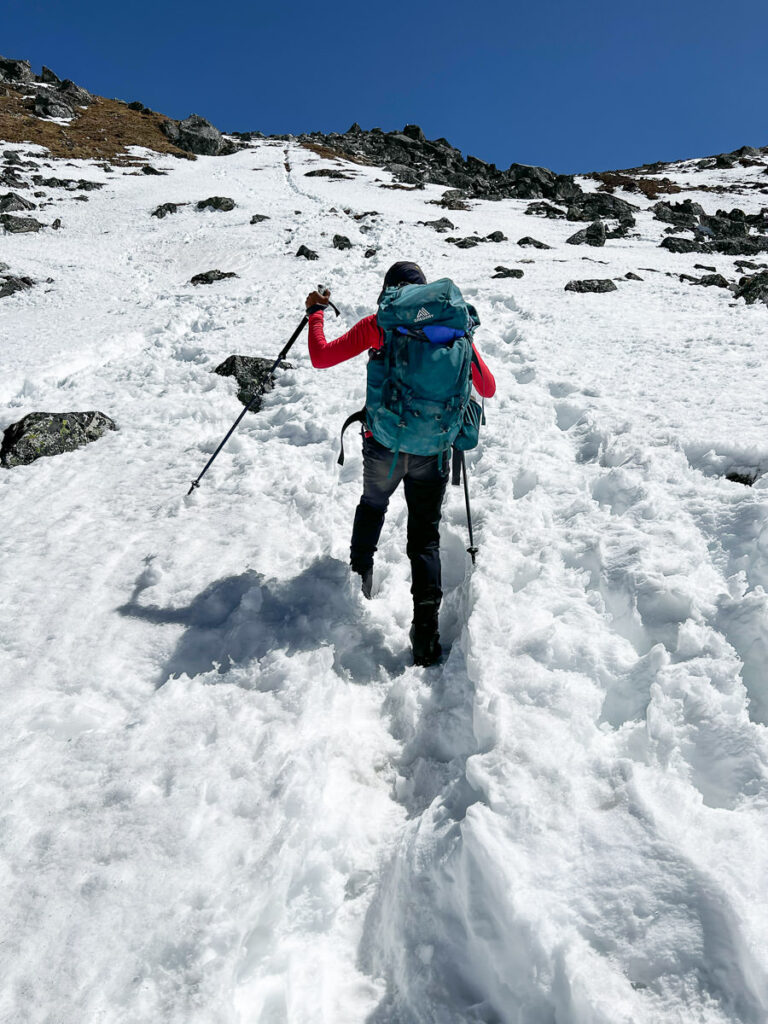
WIFI/ELECTRICITY AVAILABILITY ON THE LANGTANG VALLEY TREK
- Wifi: Costs anywhere from $free to $4 to use wifi at the guesthouses. Buy an NTC Sim before you go. It worked in most spots after Lama Hotel with a weak signal but we were able to send emails, watch Youtube, and message friends from Langtang and Kyanjin Gompa.
- Electricity: You will have to pay anywhere from $free at low elevation to $5 to charge your power banks, cameras, and phones. The key is to get a big power bank. Pay to charge it then charge everything from your power bank. My power bank lets me charge my phone and four camera batteries before it dies. Most of the places we stayed let us charge our gear for free but when it is busy they usually charge a fee as many teahouses run off gas or solar.
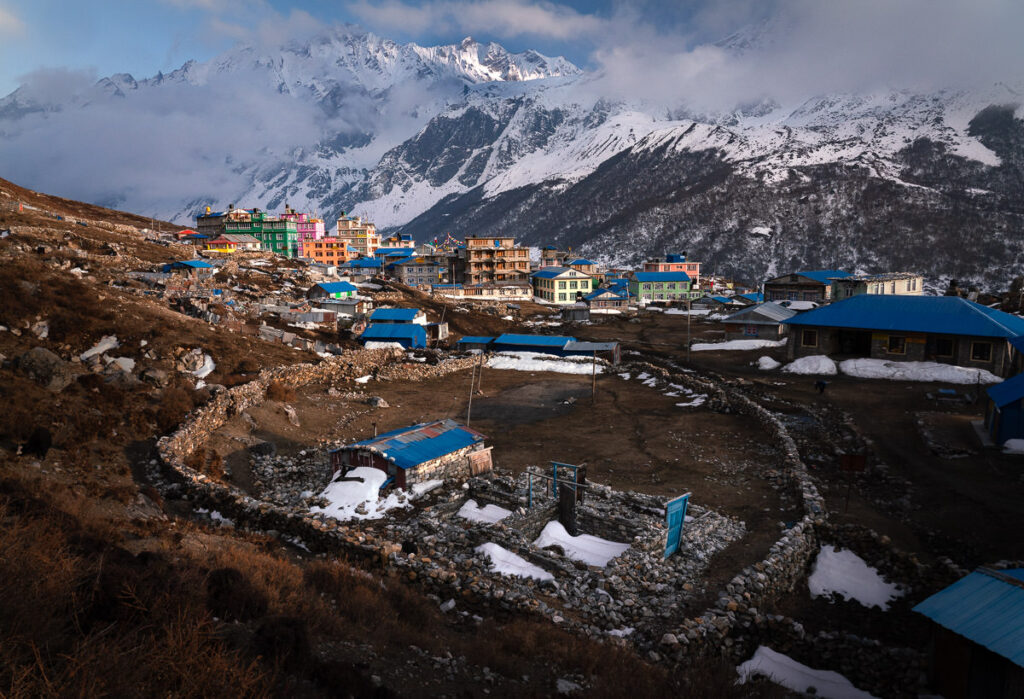
TOP 3 PLACES TO STAY IN KATHMANDU

- Ultimate Luxury: The Dwarika’s Hotel – Luxury, Spa-service, Pool
- Best Value : Aloft Kathmandu Thamel – Swimming Pool, Gym & Great Restuarant
- Budget Choice: Hotel Jampa is easily the top cheap hotel in Kathmandu
LANGTANG VALLEY TREK ITINERARY
This is one of the shorter treks in Nepal and has a straightforward itinerary.
- Day 1 : Drive from Kathmandu to Syabrubesi (1550m) 7 hours
- Day 2: Syabrubesi to Lama Hotel (2,380m) 6 hours
- Day 3 : Lama Hotel to Mundu via Langtang Village (3,430) 6 hours
- Day 4: Mundu to Kyanjin Gompa (3,870m) 3 hours
- Day 5 : Kyanjin Gompa to Tserko Ri to Kyanjin Gompa (5000m) 7 hours
- Day 6: Kyanjin Gompa to Lama Hotel (2,380m) 6 hours
- Day 7: Lama Hotel to Syabrubesi (1550m) 6 hours
- Day 8: Drive from Syabrubesi to Kathmandu 7 hours
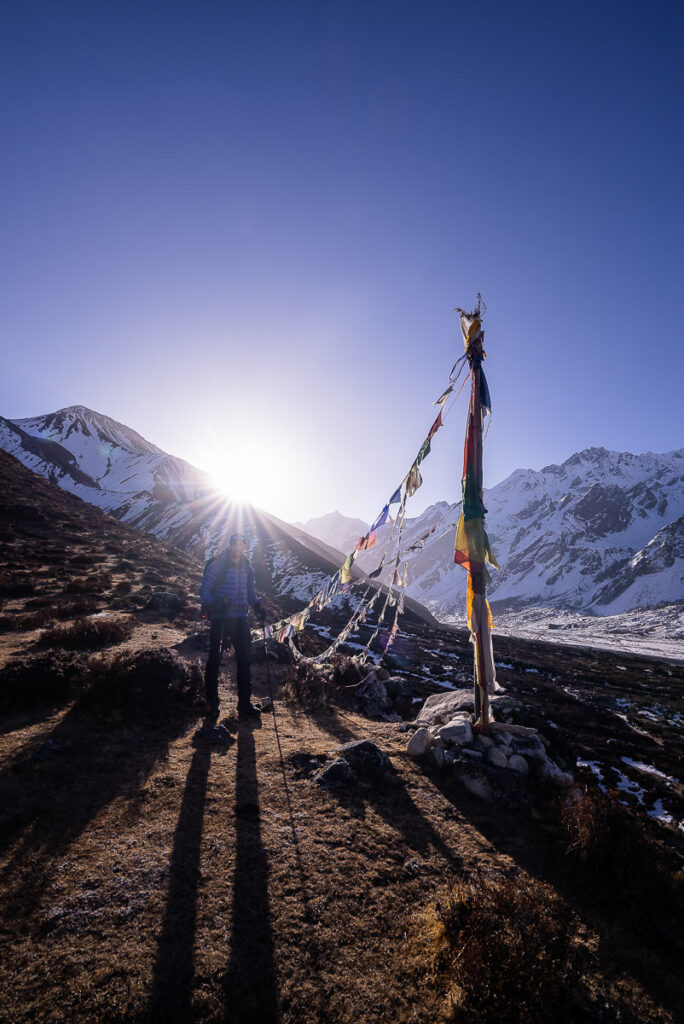
THE FULL VLOG FROM OUR LANGTANG VALLEY TREK
DRINKING WATER ON THE LANGTANG VALLEY TREK
I use the Grayl Ultralight Water Purifier and it is a game-changer for hiking in Nepal, making this super easy and cheap. The Grayl Ultralight Water Purifier removes 99.9999% of viruses of disease-causing bacteria. The best thing about it is it only takes 15 seconds and one press to purify water from any fresh water source. You don’t need to buy bottled water at every tea-house contributing to large amounts of plastic waste and costing you $4+ per day.
Along the Langtang Valley Trek, we filled up at tea-houses, rivers, and local village taps. Unlike aqua purification tablets which require you to wait 30 minutes before drinking, you can have rehydrated yourself immediately with the Grayl Ultralight Water Purifier .
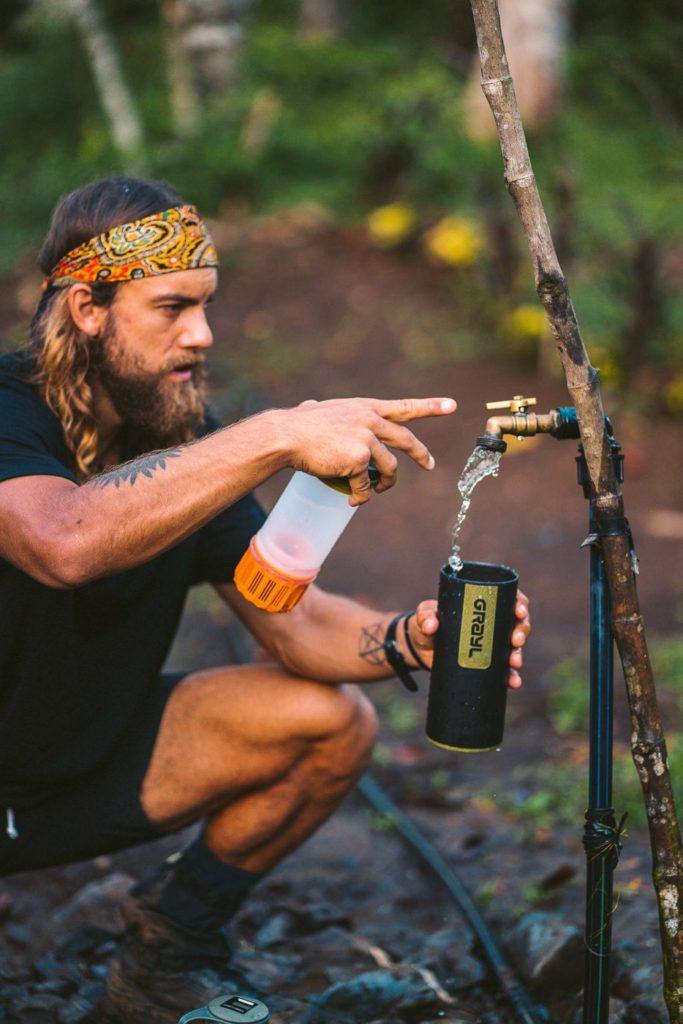
GrayL Water Purifier
- Never pay for water on the trek
- Save 3-4 plastic water bottles a day
- Turns any water into drinking water
INSURANCE FOR THE LANGTANG VALLEY TREK
Nepal can be a dangerous place for trekking or hiking because the high altitude can lead to many illnesses, weakness in trekkers, and misjudgments. There is also a risk on trails for falls, avalanches, or other mishaps. Your regular travel insurance probably won’t cover you at high altitude and won’t cover a helicopter evacuation. There is a solution though .
Need extra protection?
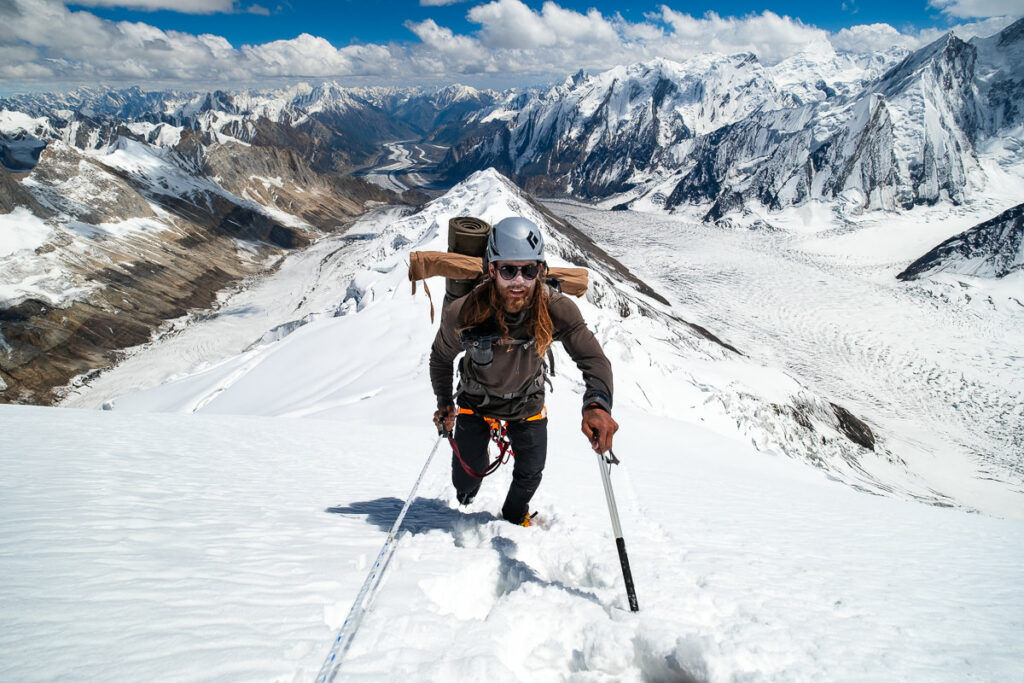
Regular travel insurance is great but won’t cover you for high altitude hikes or for helicopter evacuation. Each year, I purchase a Global Rescue Subscription .
For less than $500 per year or $100 per expedition, you can purchase a Global Rescue subscription and be covered no matter how extreme the hike or how high the climb is.
BEST TIME AND SEASON FOR THE LANGTANG VALLEY TREK
The peak season for the Langtang Valley Trek is March to April and October to November. The time to avoid this trek is during the rainy season from June to August .
During the winter from December to February, this region gets very cold and there will be snow cover in the higher parts of the trek. Many of the guesthouses actually close up for the winter and re-open in late February to March. However, it is possible to hike the Langtang Valley Trek on the fringe of the season in late February/early March and it can be quite beautiful with snow cover.
I hiked the Langtang Valley Trek in early March and it was warm during the day and got pretty cold at night. We experienced some heavy snow on Tserko Ri and Yala Peak but the trekking routes were clear.
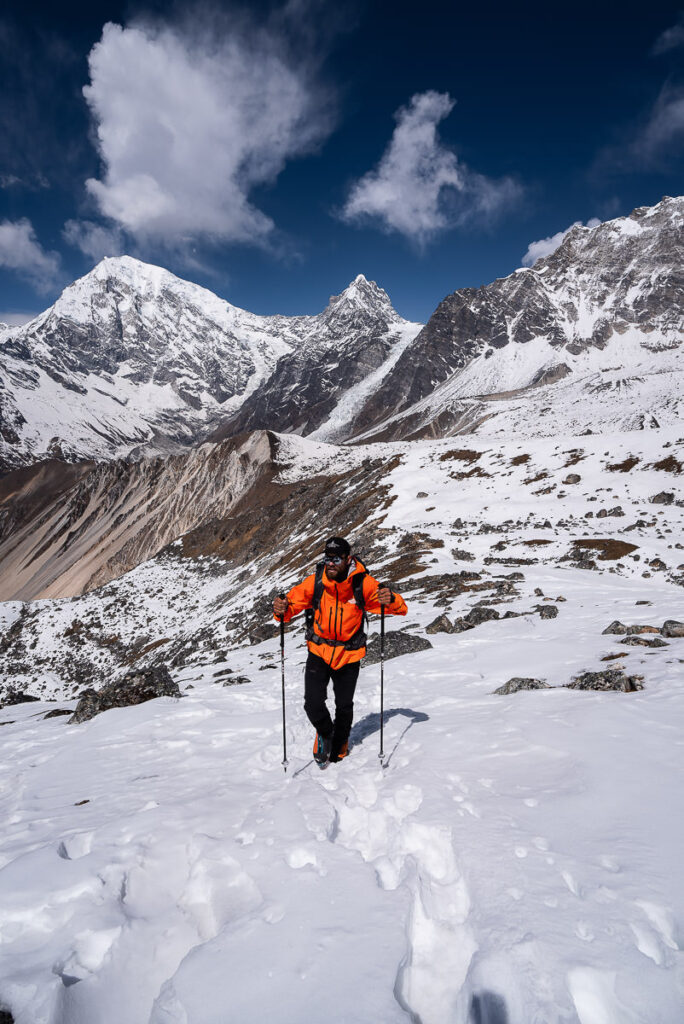
HOW TO GET TO THE LANGTANG VALLEY TREK
There are two main ways to reach Syabrubesi, which is the small town at the starting point of the trek. Despite the distance from Kathmandu to Syabrubesi only being 125km, the journey takes a long time due to the traffic and quality of the road.
Jeep: We went by private Jeep organized by our tour company Himalayan Masters. It costs about $180 to hire the vehicle out for the drive so can be split between your group. It’s not cheap but much less brutal than the lengthy bus journey.
Public Bus: The bus costs about $10 USD and can take anywhere from 7-10 hours depending on the traffic and if there are any roadworks or landslides recently. The bus leaves every day from Kathmandu to Syabrubesi at 6 am and 8 am as well as other defined times. The bus station in Kathmandu is called ‘ New Bus Station’ .
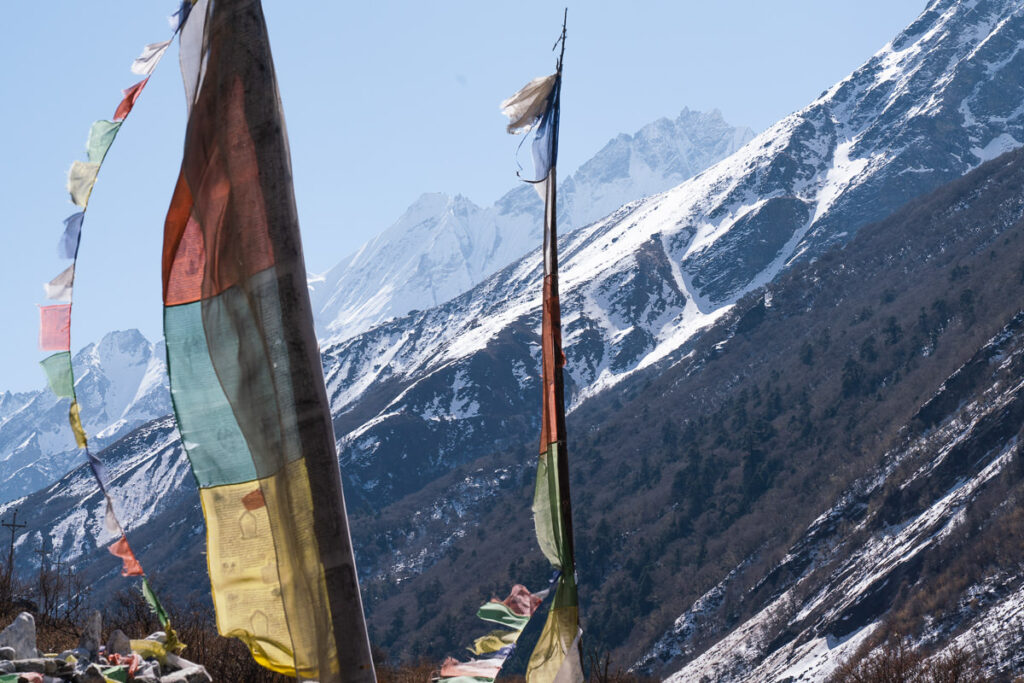
MY EXPERIENCE ON THE LANGTANG VALLEY TREK
Throughout this section of this guide, I will share my experience with each part of this trek. I found the Langtang Valley Trek quite unique as the trek in was actually not too exciting. However, it became an incredible experience once we reached Kyanjin Gompa and did the two hikes Tserko Ri and Kyanjin Ri as well as the Yala Peak climb.
So, unlike other treks where the trekking along the route is the highlight, I found that the time when we were based at Kyanjin Gompa was the highlight and found the trek into Kyanjin Gompa relatively mild.
TREKKING FROM SYABRUBESI TO KYANJIN GOMPA
Syabrubesi seems somewhat of a trekking town even though it is connected by road to the greater civilization. The main street is lined with guesthouses and some of the menus display prices that would see you are already in a remote mountain village.
I would recommend Hotel Lhasa for good Momo and friendly Tibetan owners. This is the last place you will have a reliable internet connection, a moderately warm shower, and a chance to buy any last-minute essentials.
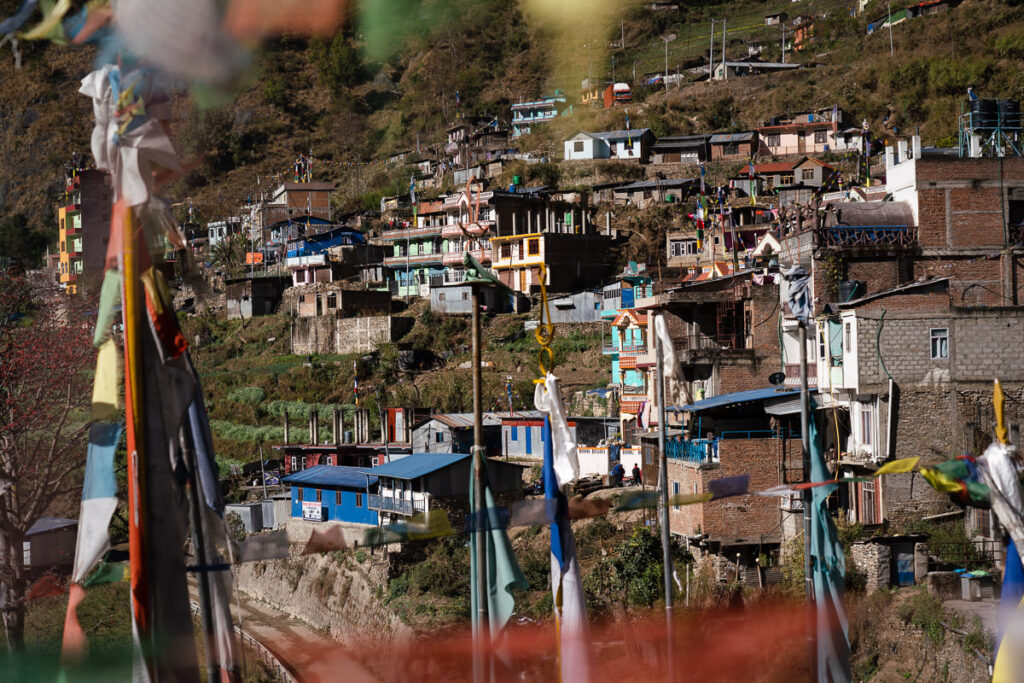
The journey from Syabrubesi to Kyanjin Gompa typically takes most trekkers three days. There are many different options for guesthouses along the way but most seem to follow a distinct route.
Lama Hotel (name of the town not the hotel) is the most common stop for the first night. The trek from Syabrubesi to Lama Hotel is quite intense and involves about 15 kilometers in distance. However, it is the 1200m of vertical gain and sun exposure that will knock you about.
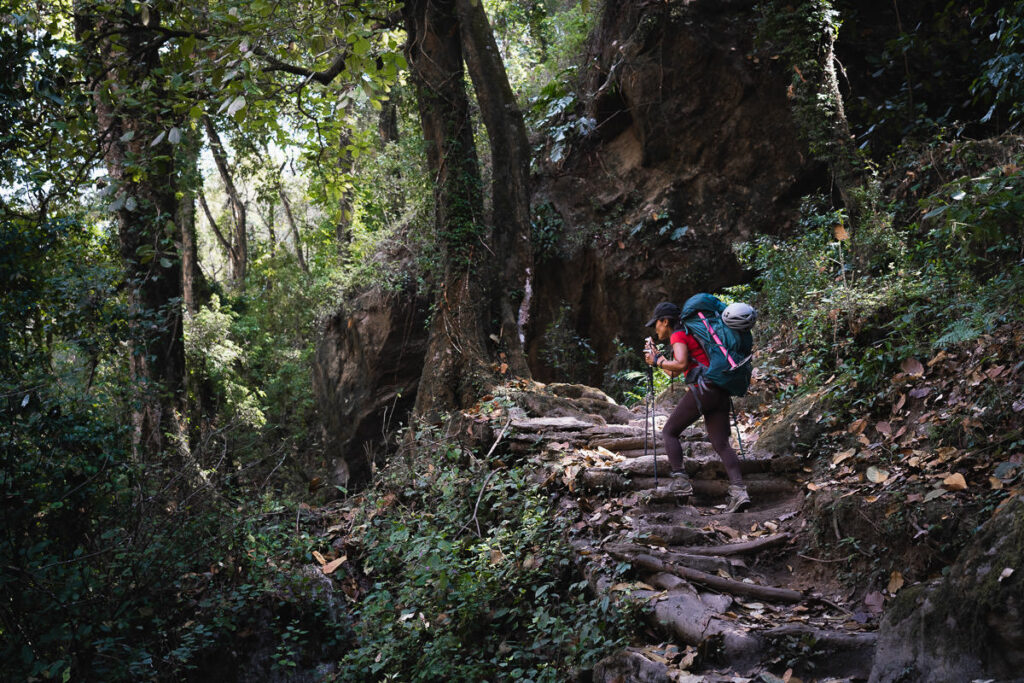
The trail begins alongside the river and has a lot of exposed sunny sections. The elevation isn’t high yet at just over 2300m so it can be very hot. Undulating alongside the river, the trail delves into the forest and careens up endless flights of rocky stairs. You can expect a few glimpses of snow-covered peaks but today is mostly about the river, forests, and a few bridge crossings as the highlights.
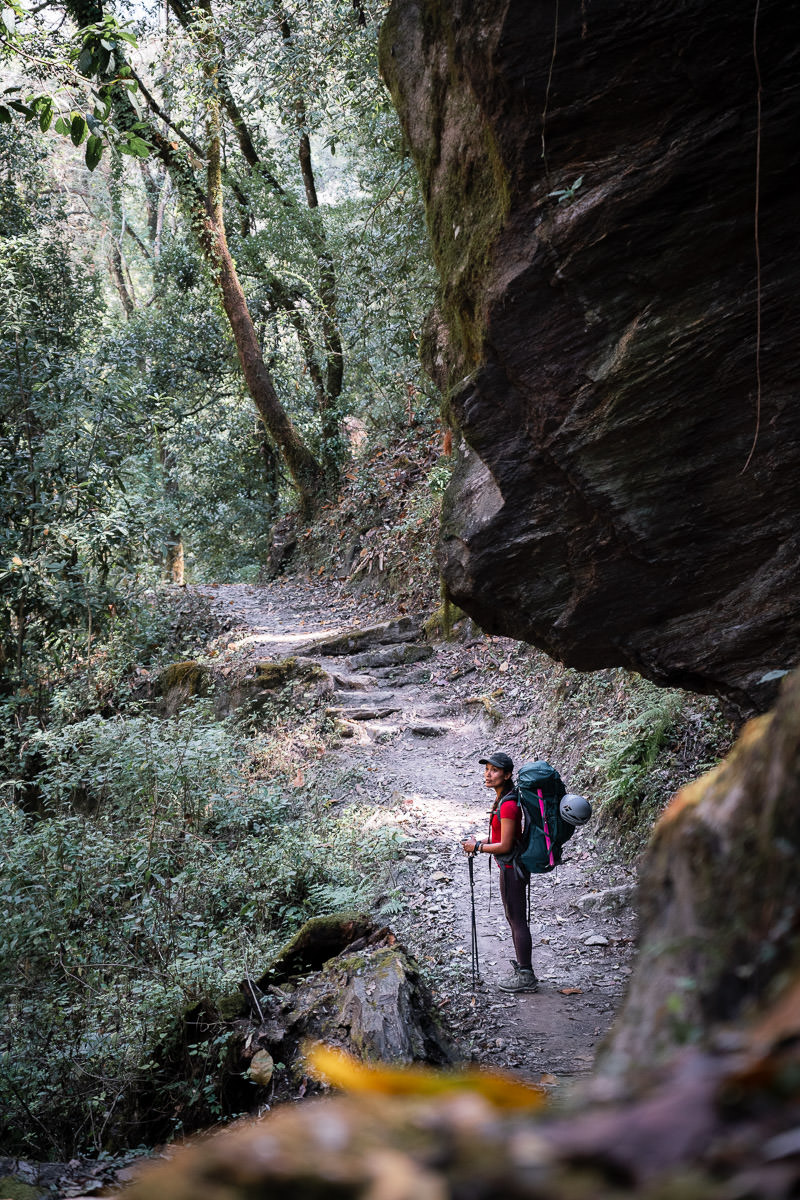
Upon reaching Lama Hotel, we were a little confused. There were six or seven hotels, all with Lama Hotel in their signage. Friendly Guest House Lama Hotel, Origin Lama Hotel, Sunrise Guest House Lama Hotel. It turns out this small village is just a collection of hotels and the location is known as Lama Hotel.
We ended up staying at the Friendly Guest House, run by a Tibetan family who was indeed friendly. Here we had a warm bucket shower, no signal, no electricity, great Tibetan food, a warm heater in the dining room, and comfortable beds with blankets. All you can ask for in the mountains really.
On our second day of trekking, we headed from Lama Hotel all the way to Langtang. You could stop earlier at smaller towns, but Langtang was recommended to us. The trail really opens up in the second half of the day as you break out of the forest and trek along the slopes of the valley towards Langtang.
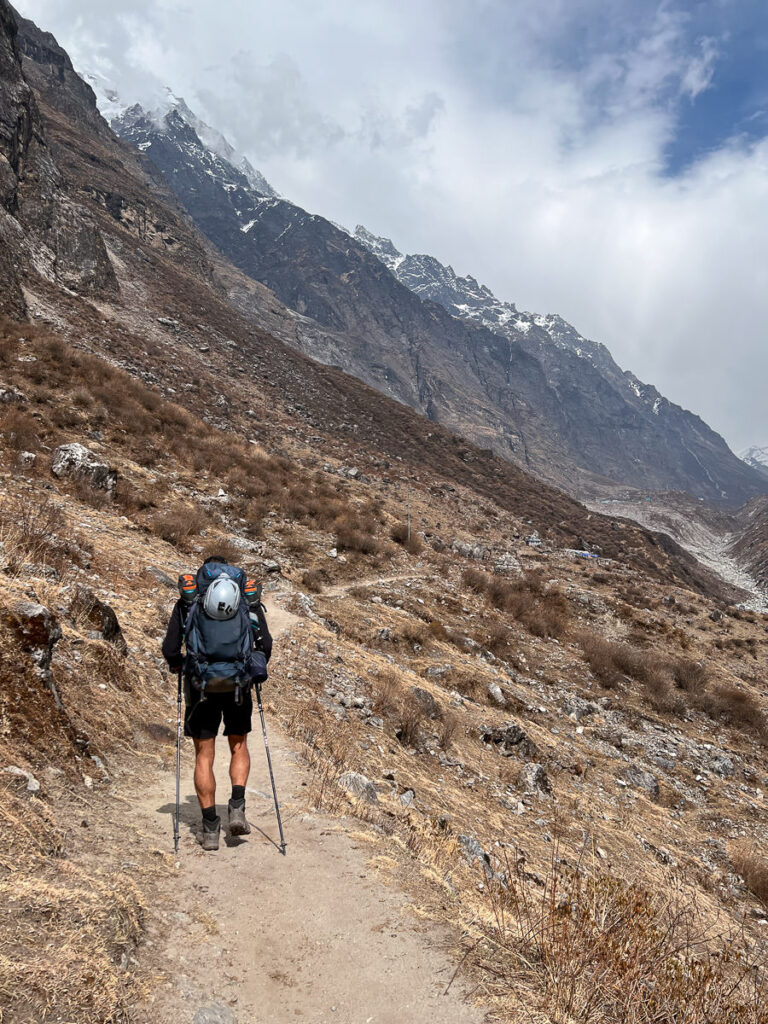
Snow-capped peaks begin to appear throughout the day. However, just after winter, the landscape is burnt orange. In the spring, you could expect lush green grass and wildflowers to create a much more vibrant setting. Personally, I prefer the trekking during the winter time when there are more snow-capped peaks.
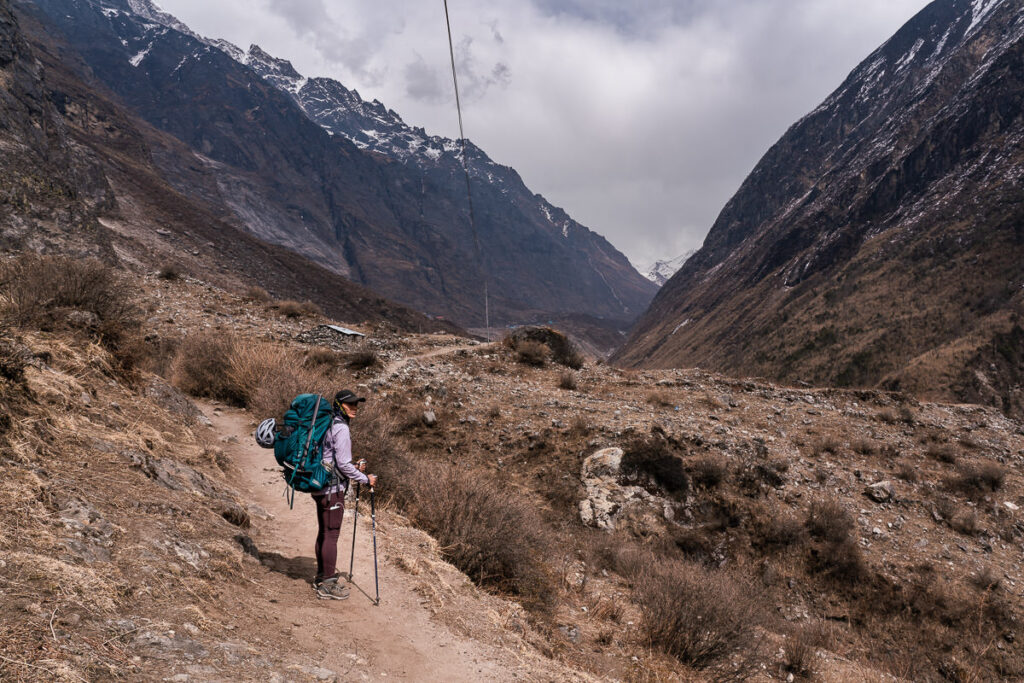
The journey from Lama Hotel to Langtang Village was about nine kilometers with almost 800 meters of incline. It was much softer than the first day but you are now reaching a higher elevation and may start to feel the oxygen thinning. In Langtang, I stayed at Chomo Valais and it had a hot shower and comfortable beds. It was similar to most tea-houses in the region and had a nice dining room with glass windows to enjoy the view.
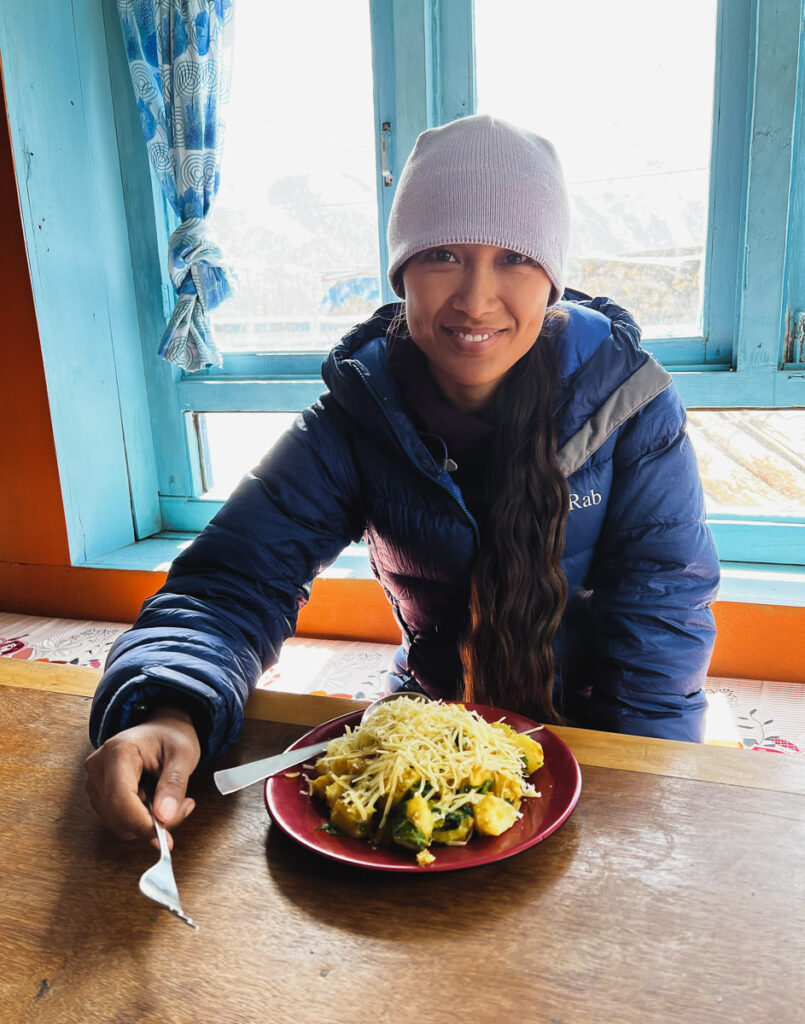
The final day of trekking from Langtang Village to Kyanjin Gompa is short and sweet. With just 6.5 kilometers and a few hundred meters of incline, it is by far the shortest day of the trek. Many people actually find it so short, they had up to Kyanjin Ri viewpoint on the same day as reaching Kyanjin Gompa.
On the way to Kyanjin Gompa, spectacular views of Tserko Ri and 7000m snow-capped peaks come into view. Following the river, you will pass by the stupa and monastery on your way into the town. Kyanjin Gompa is quite unique as the town is hidden from both sides until you basically reach the entrance due to the ridges and its hiding spot in the small valley.
I kept wondering when it would appear as the map said the entire town was just 150 yards away. I still couldn’t see any buildings, and then finally, we climbed the final hill and Kyanjin Gompa was revealed.
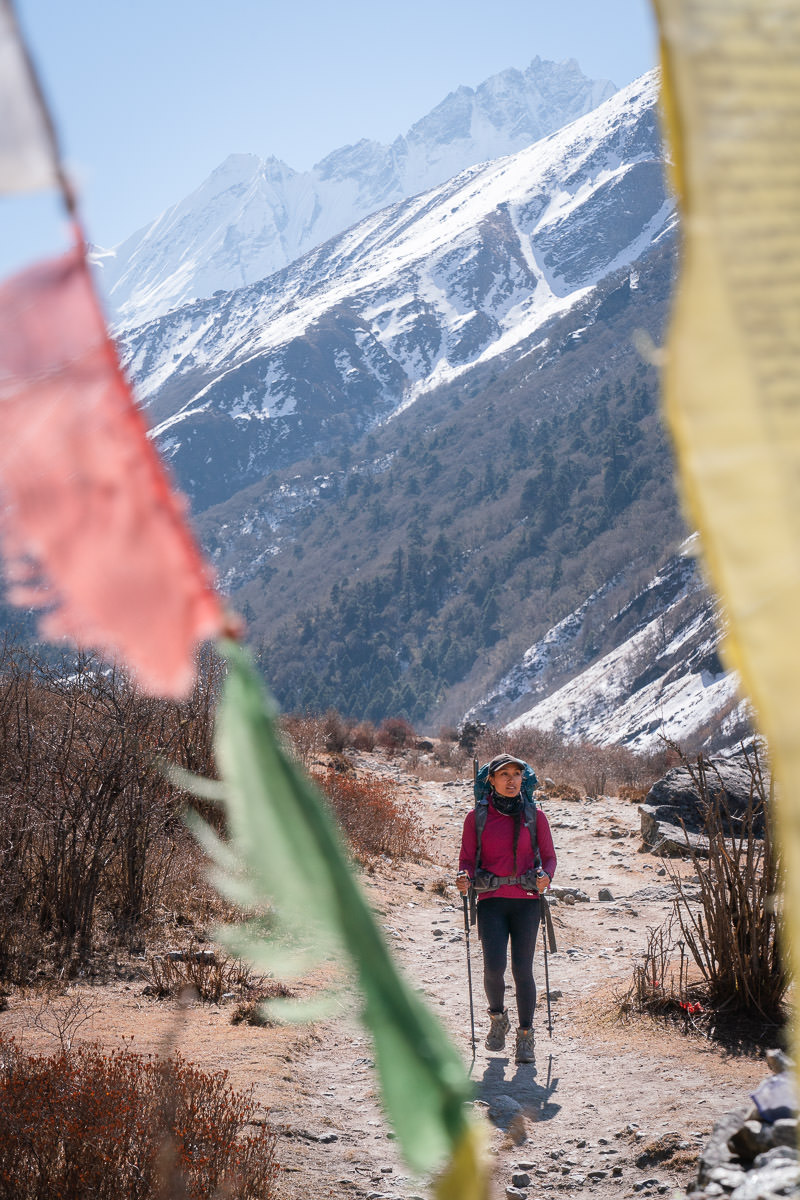
What are my favorite pieces of trekking gear?
There are six pieces of gear that I simply never forget when I go trekking. These are five items that I using right now and this list gets updated every year! Here are my trekking essentials.
- Arcteryx BETA AR Rain Jacket : This is my go-to rain jacket. It’s super light, folds down into a tiny ball, and protects brilliantly in a storm. This one never leaves my backpack.
- Salomon X Ultra 3 Mid GTX Hiking Boots : For the best ankle support, waterproofing, and durable exterior I’m a fan of tough but light hiking boots like these Salomons for my adventures.
- Black Diamond Head Torch : I can’t tell you how many times, I’ve arrived back from a hike unexpectedly late. I always keep this lightweight but strong headtorch in my bag for the unexpected.
- Darn Tough Socks : These are the most comfortable hiking socks I’ve ever worn and last for years. They also have a lifetime warranty and you just send them in with a hole and they replace it no questions asked.
- Osprey Atmos AG 65L Backpack : I’ve never had a more comfortable 65L pack than this one. I got it in the Navy Blue and have trekked with it through many a mountain.
- Bl ack Diamond Trekking Poles : They might feel weird at first, but on a long trek with incline and decline you’ll begin to love these.
- Grayl GeoPress Water Filter Bottle : I’ve used this for three years. It filters your water with one press and you can drink directly from it. Never buy a plastic water bottle again!
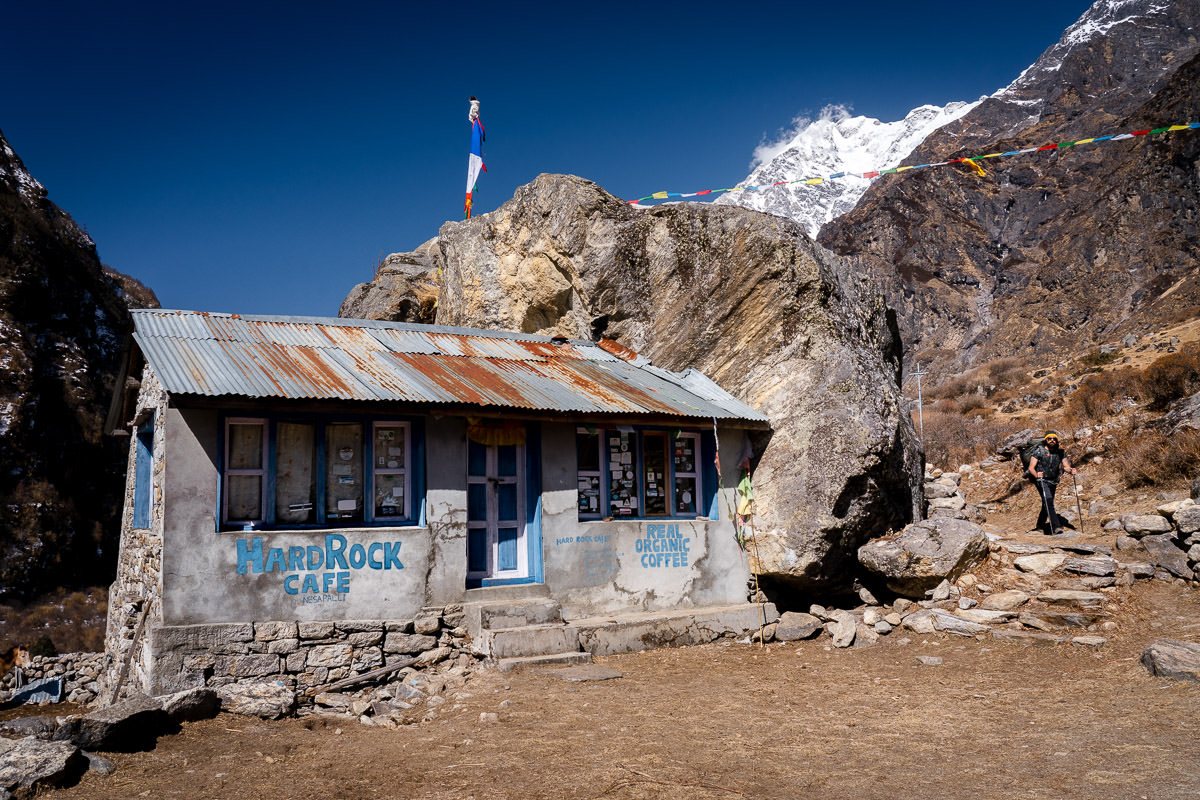
THINGS TO KNOW ABOUT KYANJIN GOMPA
Kyanjin Gompa is the end of the trek for most people. It’s a beautiful town with an incredible backdrop of snow peaks in all directions. The biggest mistake you can make on the Langtang Valley Trek is to stay one night and turn around and hike back down.
The absolute highlight of this trek is to base in Kyanjin Gompa for a few nights and spend one day hiking up Kyanjin Ri and one day hiking up Tserko Ri. We also spent another day climbing Yala Peak but that requires certain gear and experience.
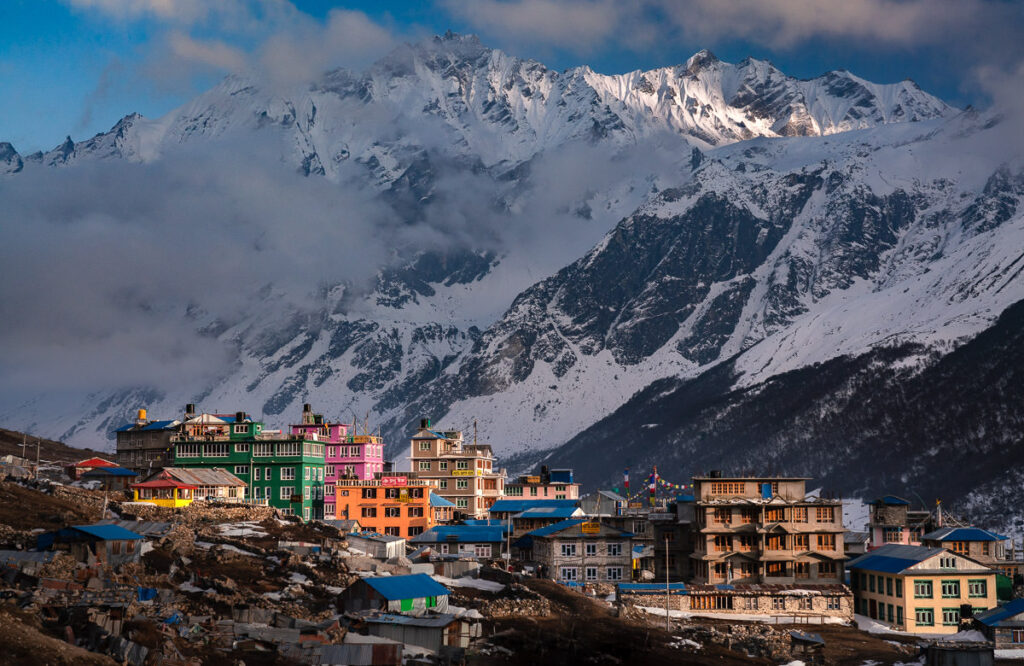
I ended up staying six nights in Kyanjin Gompa. My itinerary was the following:
- Yala Peak Base Camp
- Yala Peak/Sleep at Kyanjin Gompa
Understandably that is a lot of time but we were also trying to acclimatize for Yala Peak so we added in the rest days. The trek in to Kyanjin Gompa was good but not amazing. I really found that the time spent in Kyanjin Gompa was what made this trek is so great not the actual trek in itself. This is different from many other treks such as Everest Base Camp or the Annapurna Circuit where each day of trekking is the highlight rather than a specific destination or a specific town.
I stayed at Mountain View Hotel while in Kyanjin Gompa. It’s one of the smaller, older guest houses and I really enjoyed it here. Unlike many of the new multi-story hotels in the village, this hotel just had two floors and a cozy dining room.
Mipsang, the owner, is one of the kindest and most caring guys we’ve met in Nepal. Say hello to him for us if you end up staying there.
At Mountain View Hotel we had had water showers, internet connection from our sim card, great food, comfortable beds and blankets, and electrical outlets available in the room.
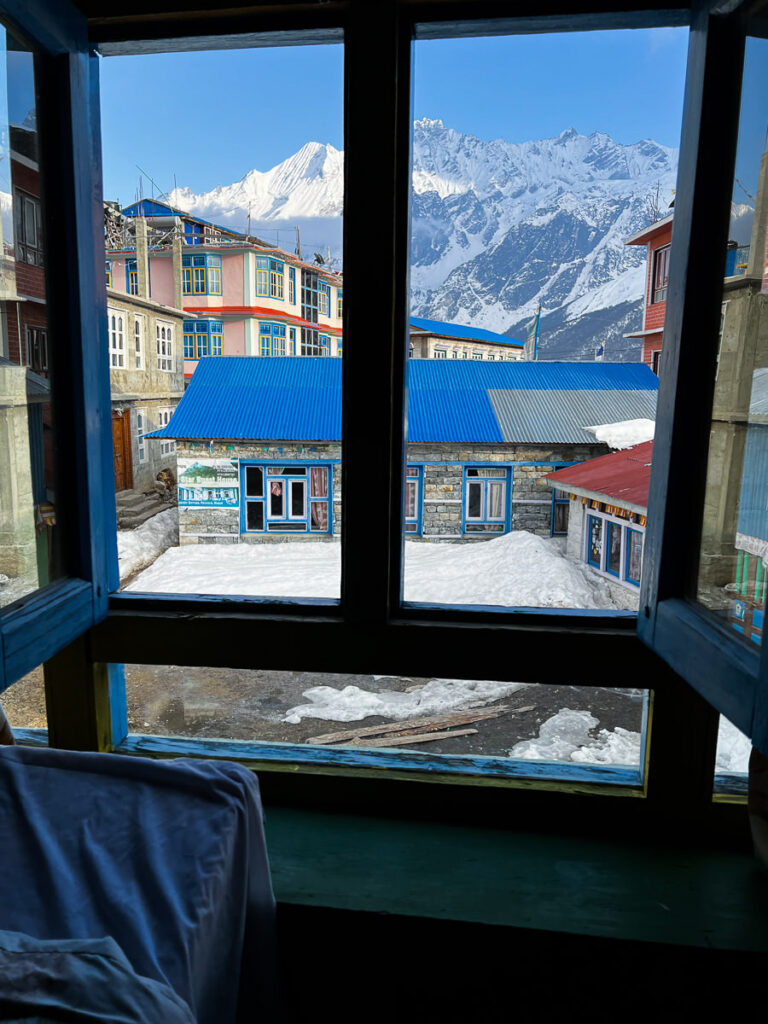
HIKING TO KYANJIN RI FROM KYANJIN GOMPA
From Kyanjin Gompa there are two awesome day-hikes. The smaller and most popular hike is Kyanjin Ri. This viewpoint towers over Kyanjin Gompa and has more than 700m of vertical gain in just a few kilometers. While short in distance, don’t underestimate this hike as it is incredibly steep and reaches heights of 4,700 meters.
The trail begins directly out of the town up the nearest ridge. A series of switchbacks leads you up to Lower Kyanjin Ri, which is the first viewpoint on the route. Covered in prayer flags, this viewpoint you will have you peering down over the entire town with jaw-dropping views across the valley.
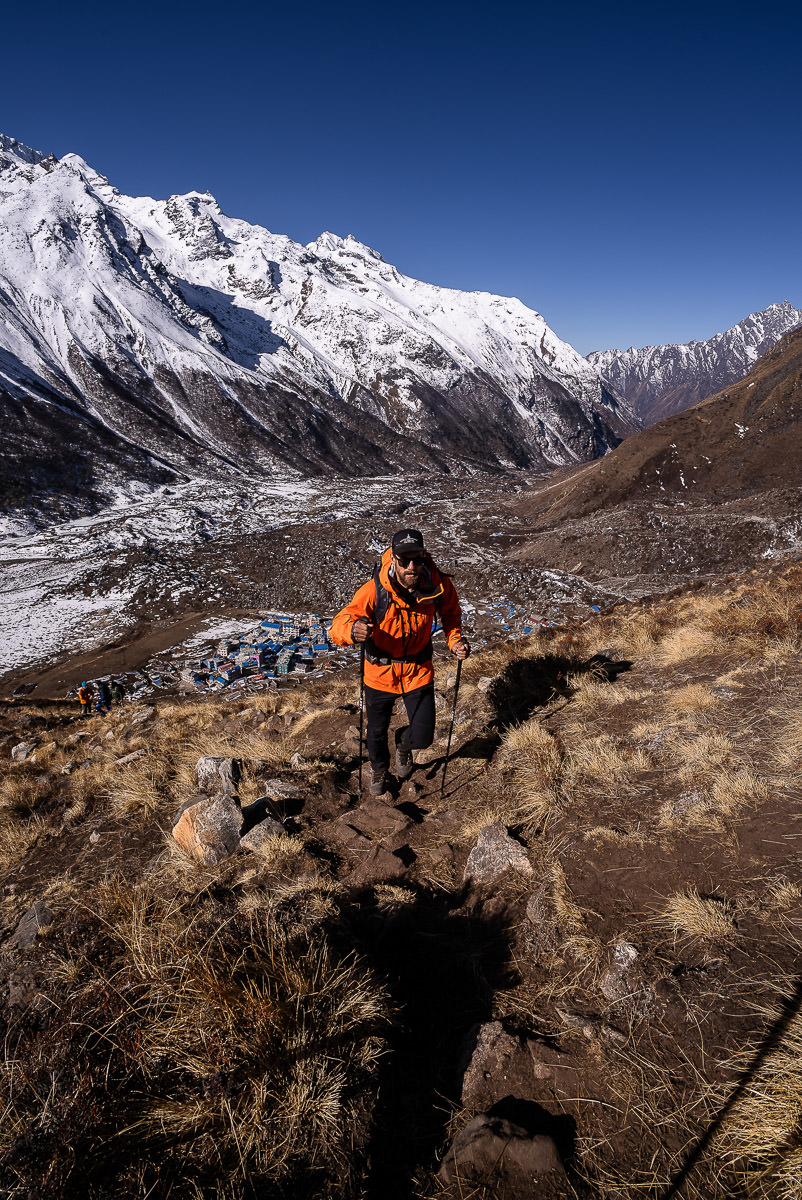
Continuing on, the ridge-line track continues higher and higher. We trekked just after winter and there was still considerable snow coverage for this trekking peak. Reaching Kyanjin Ri, we were walking across the snow at 4700m on a ridge overlooking the Langtang Lirung Glacier and the Langtang Lirung Peak (7,227m). To the right of Langtang Lirung you can find Changbu (6251m) and Yubra (6264m).
You can also spot Yala Peak (5,500m), which is the peak we ended up climbing on our trip to Kyanjin Gompa. And finally, across to the nearest peak, you can see Tserko Ri (5,000m), which will be your final objective on this trek.
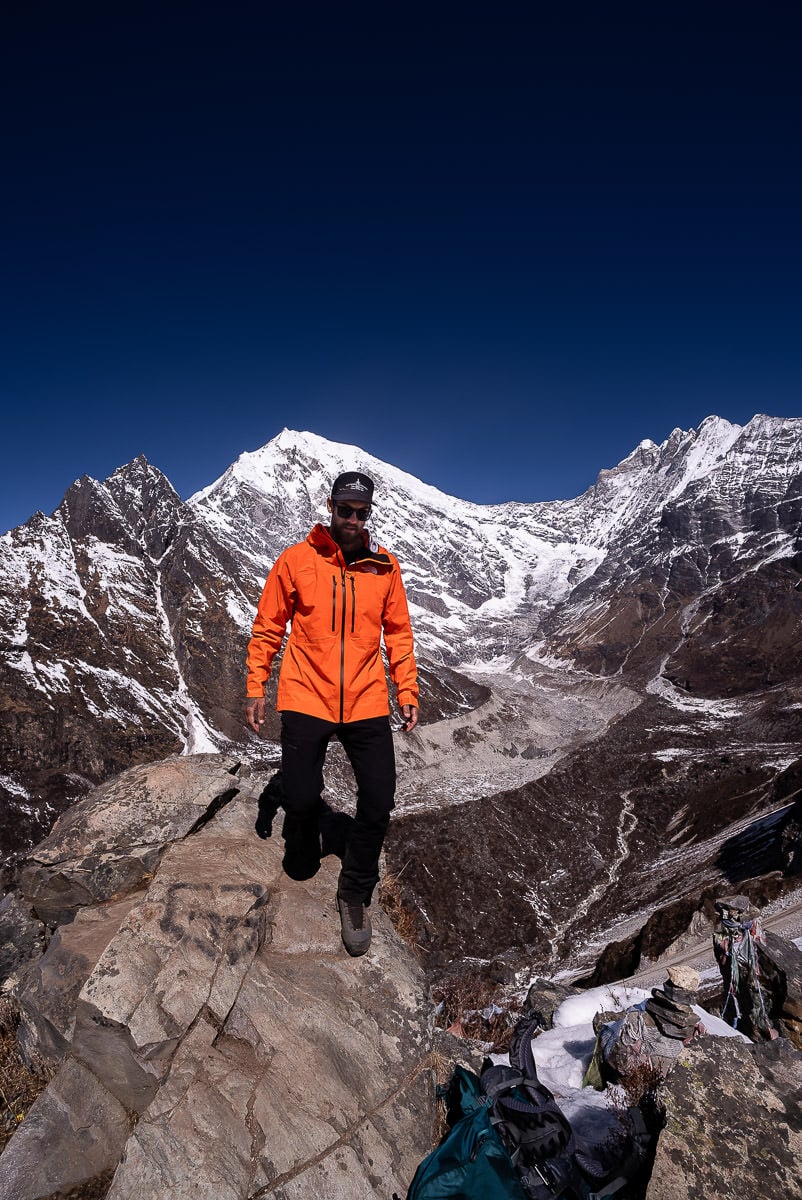
I suggest starting this hike just after sunrise as you won’t be too cold but you will also reach the summit before the afternoon clouds roll in. Take a packed lunch of Tibetan bread and an omelet from your tea house to eat at the summit and you are all set.
If you are interested in this expedition, I’ve written an entire guide about our Kyanjin Ri Hike.
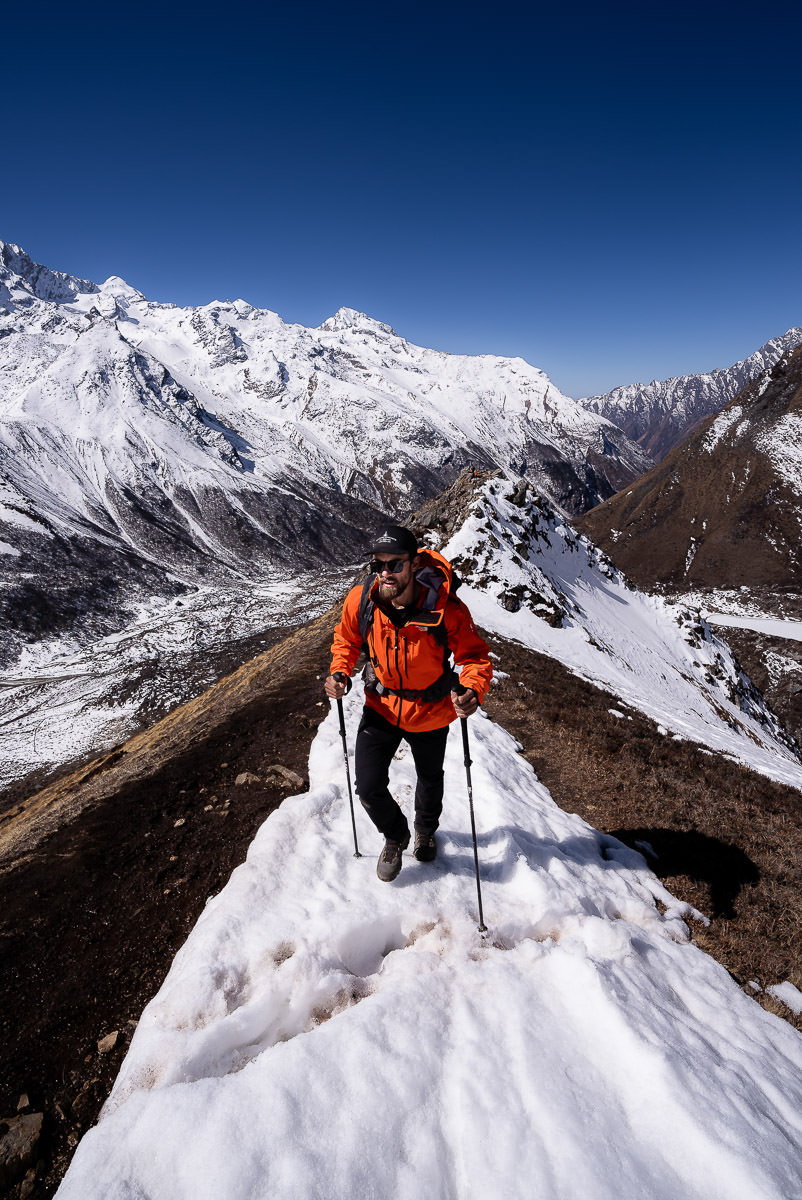
BEST INSURANCE FOR TRAVELERS
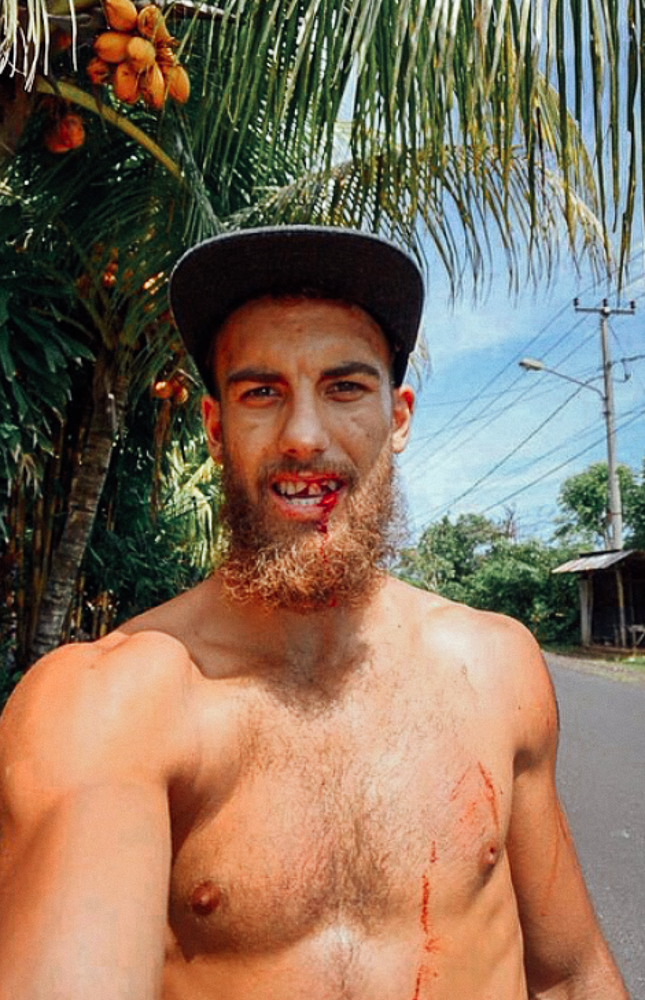
Don’t wait for an accident to happen… get insured! My travel insurance is HeyMondo which offers low-cost travel & medical insurance. That’s me on the left with three teeth knocked out after a motorbike crash in Bali!
You can click to read my Full Review of the Best Travel Insurance .
I’ve made several successful claims with HeyMondo and find their customer service very quick and helpful. Click the button below to get a 5% DISCOUNT
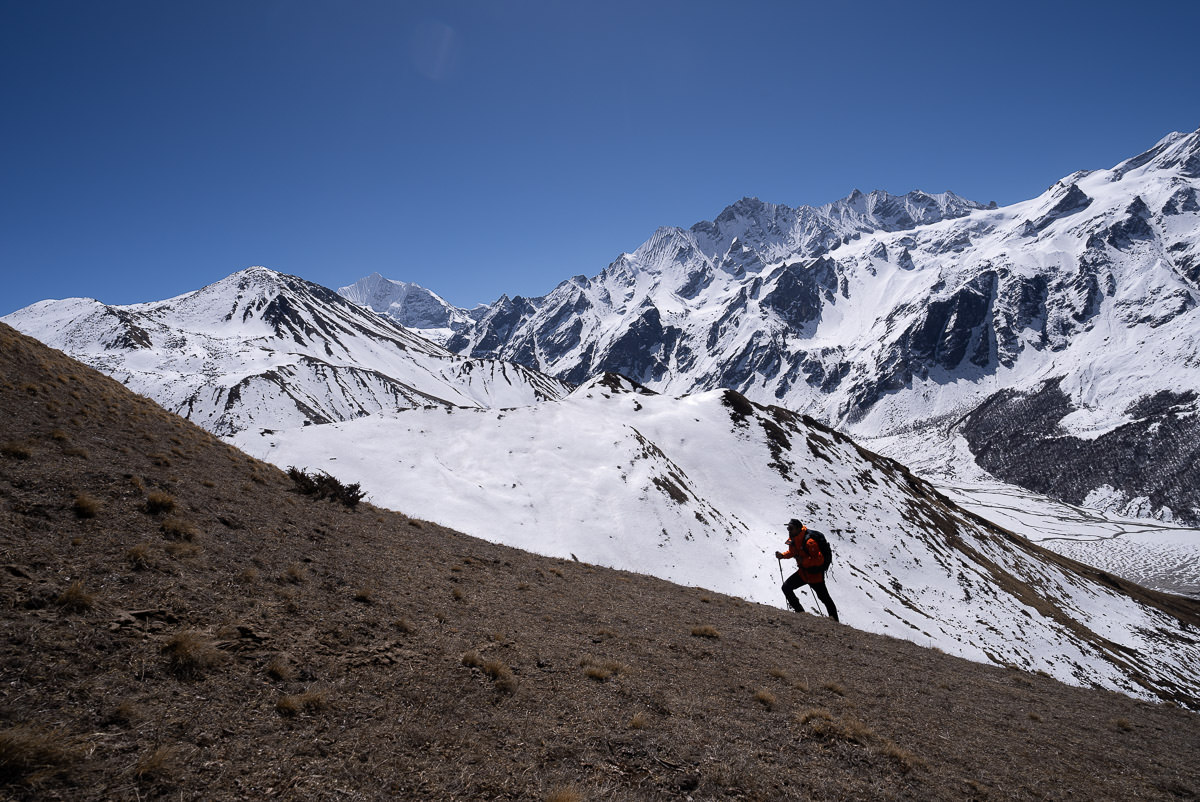
HIKING TO TSERKO RI FROM KYANJIN GOMPA
Tserko Ri (5,700m) is the finale for the Langtang Valley Trek. At 5,000m of elevation, this is a true test for trekkers against the elements and the altitude. It’s an optional day-hike, but one I highly suggest. Tserko Ri isn’t as hard as it sounds and is similar in many ways to its smaller brother, Kyanjin Ri.
The trek is about 8 kilometers in total with almost 1500m of incline throughout the day. It will definitely be a tough test and took us about seven hours to complete at a slow pace with lots of photos.
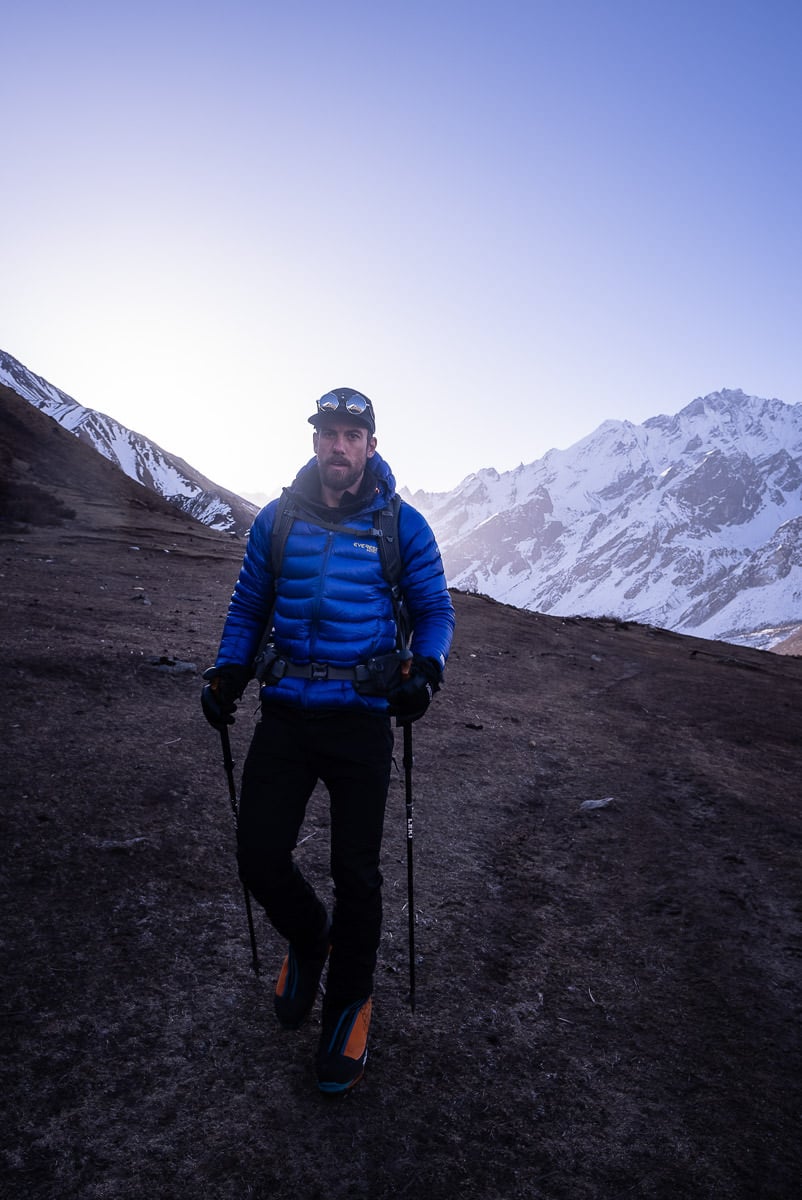
The trek takes you up a ridge all the way to the summit with very little danger to be found along the relatively wide and safe path. We visited just after winter and only encountered snow right at the last portion of the hike. Unfortunately, it was very soft and made it slow-going and difficult.
We managed to reach the summit and were the fourth and fifth people to touch the top for the season. Later in the season with less snow, this is a basic trekking peak and the only major consideration is the incline and the altitude.
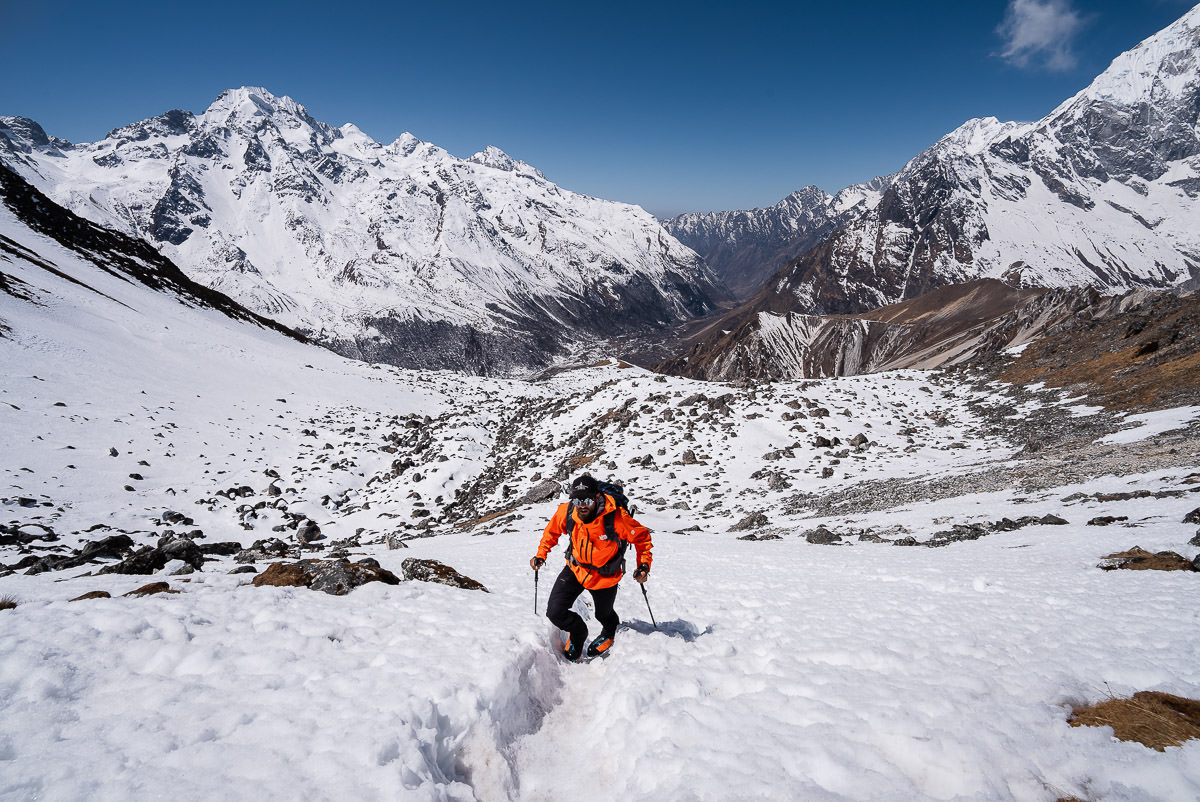
The summit of Tserko Ri is quite unique. A festival years ago at the summit involved carrying many large wooden poles to the top from which prayer flags were hung. There are so many poles and flags the summit has begun to look like a sailing ship. Nowhere in the Himalayas have I seen this many prayer flags at a summit, which made for a colorful, vibrant setting atop the peak.
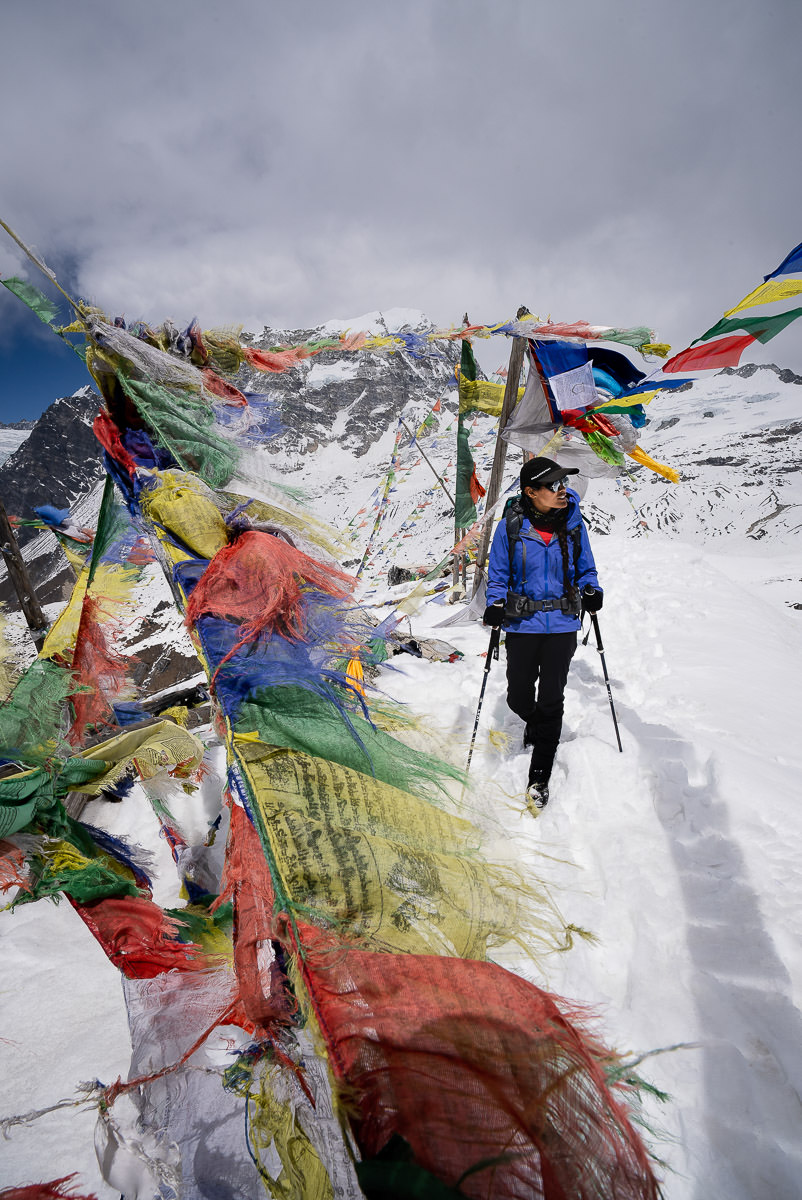
The views from Tserko Ri are simply phenomenal. With panoramic views, you can expect to see Yala Peak, Langtang Ri, Langtang Lirung, Naya Khang and many more.
As with Kyanjin Ri, it is best to be up at the summit before midday to avoid the afternoon clouds rolling in. I advise starting this hike no later than 7 am for the best possible conditions and views at the summit.
If you are interested in this expedition, I’ve written an entire guide about our Tserko Ri Hike.
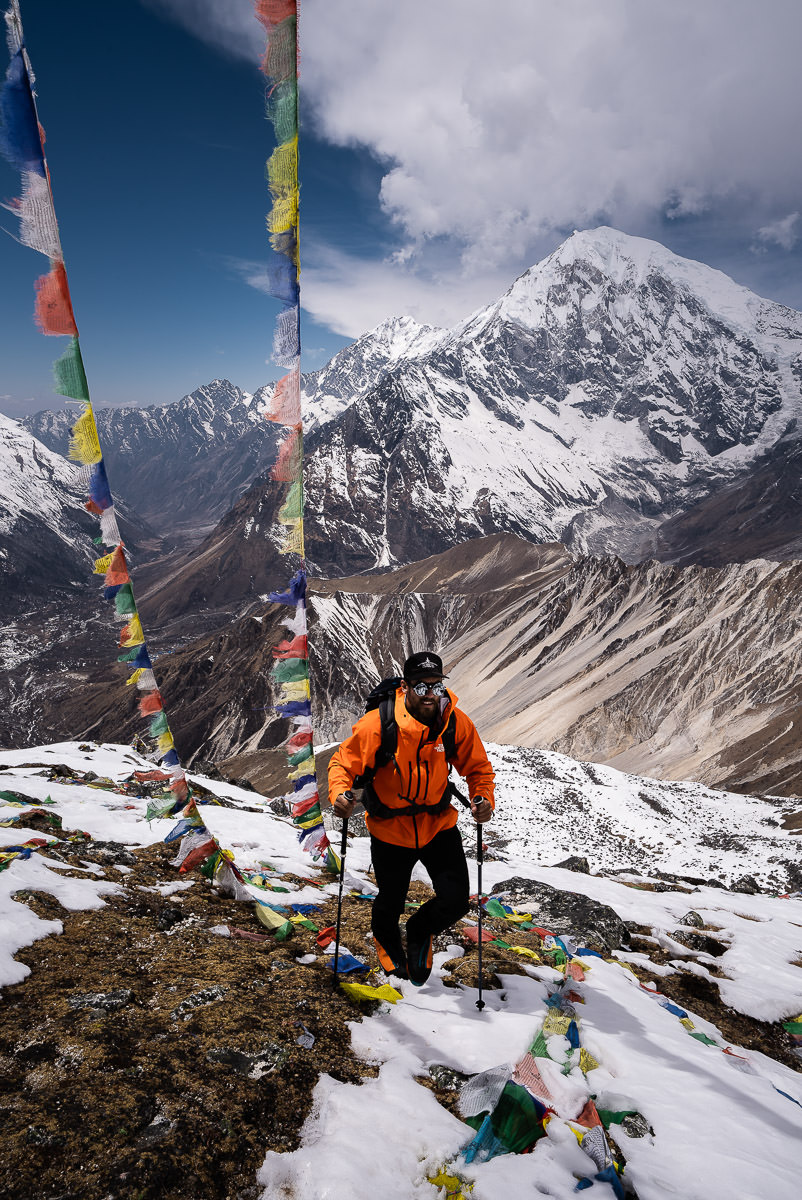
CLIMBING YALA PEAK
Yala Peak is a non-technical peak near Tserko Ri, which could be a great trekking peak for those on the hunt for a challenge.
We climbed Yala Peak with a guide over a two-day period. The climb included a trek to Yala Kharka (4750), which is the base camp. The summit push followed the next morning to Yala Peak (5,500m) through some heavy snow. With views into Tibet and specifically of Shishapangma, it was an incredible experience.
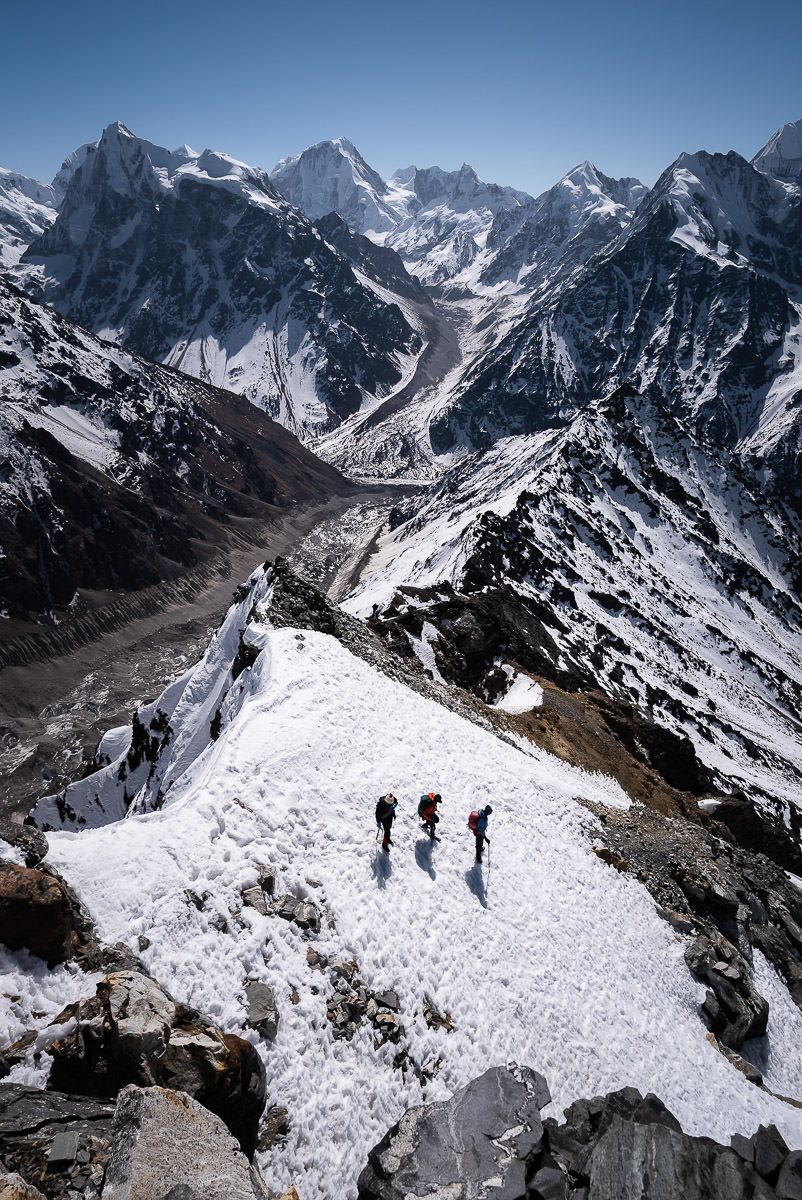
Yala Peak is not commonly part of the Langtang Valley Trek and involves prior preparation. We had to carry in our 6000m boots, extra warm gear, and climbing gear and arranged our climb in advance. While a guide can be arranged in Kyanjin Gompa, there is no gear rental shop so you may need to decide if Yala Peak is on your agenda before you begin the trek.
If you are interested in this expedition, I’ve written an entire guide about our Yala Peak Climb.
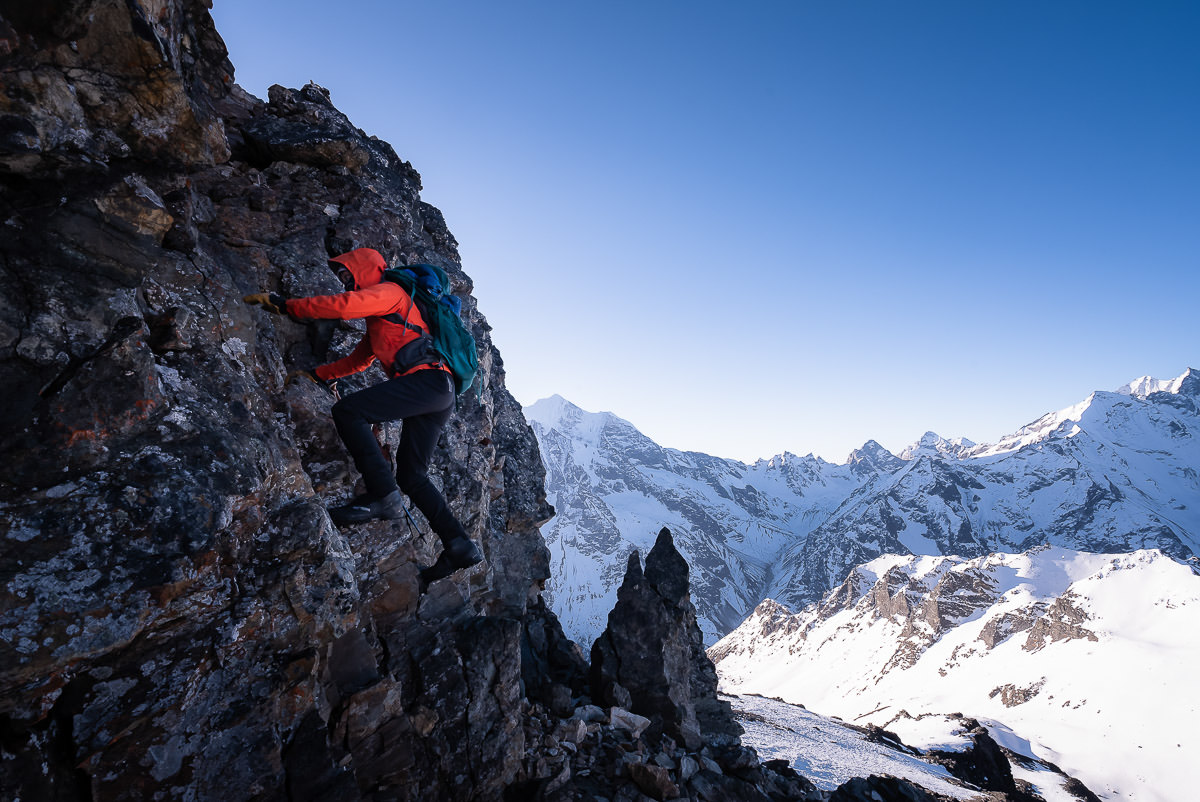
TREKKING FROM KYANJIN GOMPA TO SYABRUBESI
The trek back to Syabrubesi from Kyanjin Gompa takes most trekkers just two days. With only descent on the cards, it is much quicker than the trek upwards. On our first day of trekking, we made it all the way down to Lama Hotel with a 19km hike. On the second day, we had a 12km hike back to Syabrubesi.
It’s only 31km in total and there were some trekkers doing it all in one day. However, with more than 3000m of decline, I suggest taking at least two days for the descent as it can be quite tiring on the knees and ankles to endure so many steps and uneven surfaces.
After ten days out in the Langtang region, we wrapped up our trip with a celebratory beer at the Lhasa Hotel alongside a platter of Momo. It was one of our favorite treks and the expeditions from Kyanjin Gompa were wildly adventurous and incredible memories.
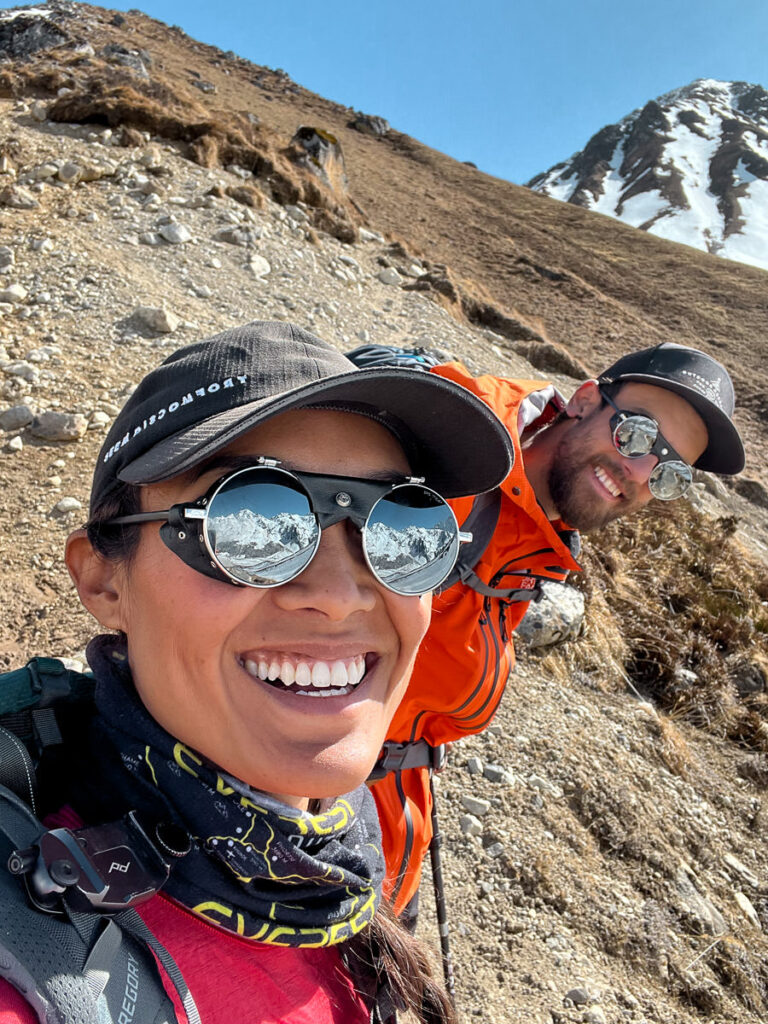
I hope you enjoyed this guide to the Langtang Valley Trek in Nepal and have a great experience yourself!
HAVE YOU READ MY OTHER NEPAL BLOGS?
I’ve been lucky enough to have many awesome adventures in Nepal, which you can check out below where I’ve listed some of my favorite blog poss from Nepal.
- The Most Iconic route: Everest Base Camp Trek
- The Most Scenic Route: Annapurna Circuit Trek
- My Favorite Trek in Nepal: Manaslu Circuit Trek
- An Easy Nepal Trek: Langtang Valley Trek
- A great beginner peak: Island Peak Climb (6,165m)
- My Favorite Climb in Nepal: Climbing Ama Dablam (6,812m)
- My first 8000er: Climbing Manaslu (8,163m)
- My toughest climb in Nepal: Climbing Makalu (8,463m)
- Where to stay: 16 Best Places to Stay in Kathmandu

Saturday 13th of May 2023
This blog has me already planning this in my head. I love hiking and being from Australia, I didn't get much of this sort of thing there, nor, here in Thailand, but I feel like I'd be mad not to get on board with this whilst I'm living in this part of the world.
Hey guy below "Jay" I was living in Brisbane, and there are plenty of good training spots for a hike like this in QLD. Maybe not the snow, but if you want to spend a night on one of the local peaks in the middle of Winter, it'll get you ready, both physically and mentally. If you want a challenge and want to test yourself locally first, try hiking through Mount Kosciuszko area, you can go through the back way on a multiday hike and it's both physically and mentally challenging, and it feels so remote, it takes very little time in those sorts of mountains to feel very alone and vulnerable. But totally worth it!!
Thanks for the article! Brilliant.
Tuesday 2nd of May 2023
Hello Jackson! What an incredible article with so many beautiful photos! I would have loved to have done the Langtang Valley trek with my mother when she was alive - she was the adventurous one, having climbed all of the Scottish Munros, summer and winter, including abseiling down the top of the InPin (I know, not a patch on Nepal!). Sadly, I lost her a couple of years ago, but even at 84 and dying of cancer, she still took us half way up Cairngorm! Maybe I'll manage it one day! Meantine, keep on trekking and stay safe!
Saturday 22nd of April 2023
Hi Jackson! Thank you for this very informative page. I'm hoping to hike this trek in November of this year. Absolute novice, barely done any hikes. I do keep fit with regular exercise though, and will train for this trek soon. I'm based in Queensland, Australia. I do have a fear of heights though, I was wondering what your thoughts were about the trek with this issue. Are there many suspension bridges and are they pretty high up? Would the trek otherwise be all right from that point of view? Thank you for your help. And I know it almost sounds ridiculous wanting to trek with a fear of heights but its something I've always wanted to do. Thank you for your time!
- Travel Guides Plan your adventure
- Destinations Our favourite places
- Tours Book a trip
- Travel Companies Independent specialists
- Travel Guides
- Destinations
- Travel Companies
- Langtang Valley treks
The most accessible trekking in Nepal
- In this guide
- Remote treks
- Challenging treks
- Everest treks
- Annapurna treks
- Upper Mustang treks
Manaslu treks
- Dolpo treks
- Far Western Nepal treks
- Makalu treks
- Kanchenjunga treks
- What to eat in Nepal
- Best Langtang treks
Langtang Valley Trek
Tamang heritage trail, ganesh himal, langtang trekking highlights, langtang region trekking information.
Often visible from Kathmandu city centre, the Langtang Valley treks are some of the most accessible trekking in Nepal .
If the city pollution and traffic wasn’t so off-putting, you could start walking from your guesthouse straight to the mountains.
This accessibility, easy-to-follow trails and lots of lodges has meant the Langtang Valley has always been, alongside Everest and Annapurna, one of the big three independent trekking areas.
The 2015 earthquake caused massive damage and loss of life in and around the Langtang Valley. The beautiful stone wall village of Langtang was buried under a huge avalanche. Today, all the trekking areas have re-opened and once again there are lodges along the routes. But the reminders of the disaster are still there. Where there were yak pastures, pine forests and the village itself, there is now a grey wasteland of rubble stretching for at least two kilometres. Slowly though, even this is fading from sight as vegetation starts to cover the rockfall.
But don’t be put off. This is a beautiful area to trek with high Alpine pastures, rewarding side trips, holy lakes, stunning mountain views, cultural interactions, relatively few other trekkers, and easy and cheap access with no internal flights needed.
Here's my expert guide to trekking in the Langtang Valley.
Featured Langtang Treks
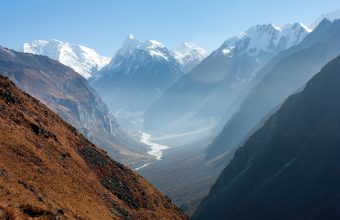
Langtang Helambu Trek
Incredible trek in langtang valley.
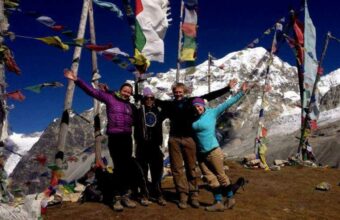
Trekking in Langtang National Park

Ruby Valley Trek
Hidden trails and cultural tales.
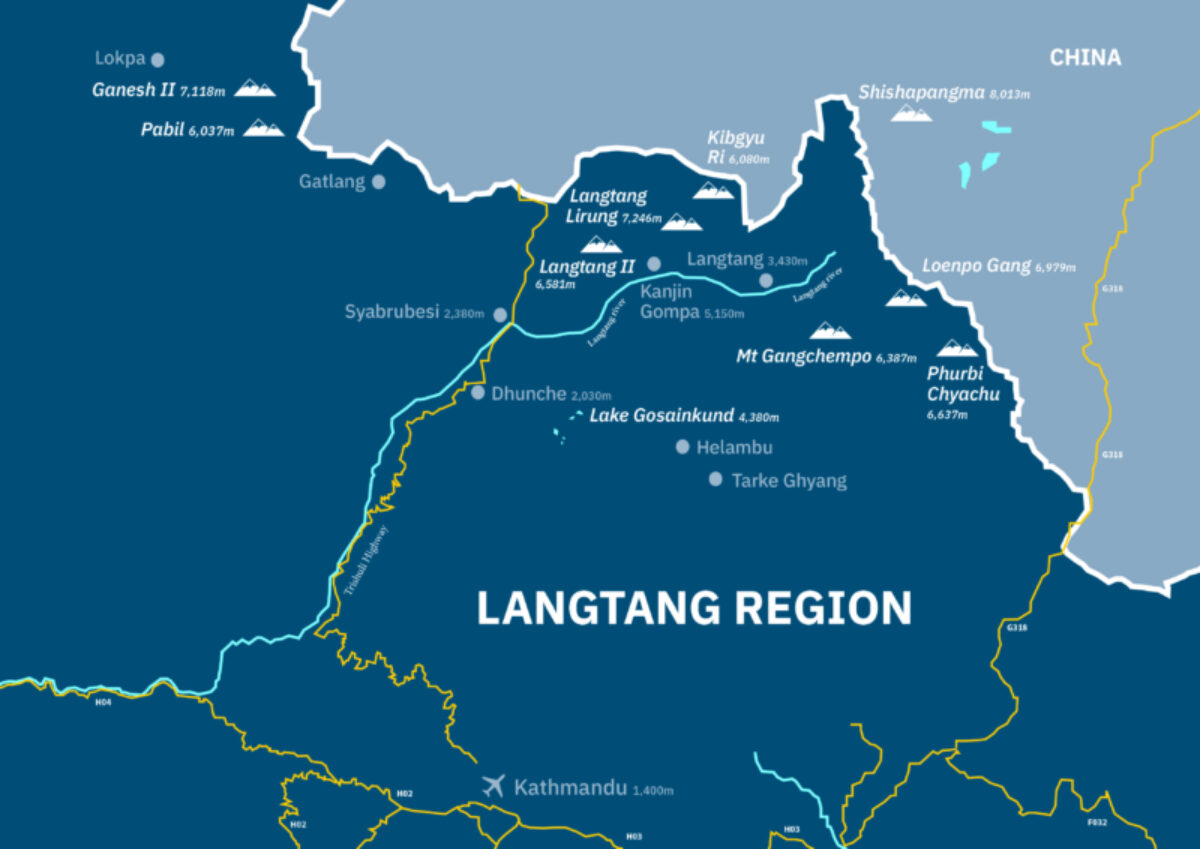
The Langtang Trekking region
The best Langtang Valley treks
Top trekking routes in the langtang region.
The Langtang Valley is a good choice for those with limited time, with the shortest routes taking just a week (or even slightly less) including travel time from Kathmandu. There are also many ways of combining treks to create routes lasting several weeks.
Here's my rundown on the best treks in the Langtang Valley area.

Glorious views of the Langtang Valley
Difficulty: Moderate. The trail climbs quite rapidly so there is a risk of altitude sickness.
Trek Duration: 6 days from Syabrubesi but allow another 2-3 days for side trips from Kanjin Gompa.
Max. Elevation: 3,860m
Accommodation: Trekking lodges. Camping required for any overnight trips beyond Kanjin Gompa.
Start/End Point: Syabrubesi
Before the earthquake, this was one of Nepal’s most popular trekking routes. The trails have been repaired or re-routed and trekking lodges reconstructed. And despite the obvious damage this is still one of the most delightful walks in Nepal. The basic trek takes eight days including travel time from Kathmandu, but add in another couple of days for side trips from Kanjin Gompa.
The standard route follows the Langtang river up a steep and narrow valley. On day two the trail passes over the rubble fields under which Langtang village is buried and on day three the valley opens out to arrive at Kanjin Gompa and big views of Langtang Lirung (7,246m), Langtang II (6,581m) and, perhaps the most distinctive mountain in the valley, the pyramid shaped Mt Gangchempo (6,387m). Kanjin Gompa can be a base for many different day and overnight side trips.
Most people go back the way they came but with more time it’s possible to link up with the Gosainkund and Helambu treks.
Trek Duration: Minimum 8 days depending on route options.
Max. Elevation: 4,610m
Accommodation: Fairly simple trekking lodges.
Start/End Point: Syabrubesi/Dhunche or Sundarijal
The most popular add-on to a Langtang Valley trek, and a fantastic short trek in its own right, is this haul up through pine forests where red pandas live to the Hindu holy lakes of Gosainkund. Although you don’t come face-to-face with the high mountains, you do get grandstand views of the Langtang and Ganesh ranges, as well as crossing the often snowbound and challenging Laurebina La (4,610m).
There are a number of different approach routes to Gosainkund, but to acclimatise it’s best to do the Langtang Valley trek first. Then, from close to the teahouses of Doman, cut across to Gosainkund and descend back to Kathmandu via the Helambu Circuit. Some people go directly to Gosainkund from Dhunche but the elevation gain is great and altitude sickness is common. Starting from Helambu and walking to Gosainkund is a long uphill drag that also invites altitude problems.
Helambu trek
Difficulty: Easy/Moderate.
Trek Duration: 7 days but increasing road accesses means you can cut the trek short at a number of points and bus back to Kathmandu.
Max. Elevation: 3,640m
The closest trek to Kathmandu — it starts from the northern outskirts of the city — takes you on a fairly gentle amble through terraced fields, wild forests, flower meadows and through lots of little villages with views of the mountains. The highest point reached on this trek is 3,640m, so it can be done as a mid-winter trek when higher routes might be snowed in. You can make an enjoyable week-long circuit (a good option for those with little time and/or trekking experience), but most people choose to use Helambu either as a walk in or out route to Gosainkund and the Langtang Valley.
However, be aware that doing this will involve crossing into Helambu via high-altitude passes at either Laurebina La (4,610m) or the very challenging, sometimes dangerous and often snowbound, Ganja La (5,106m). Trekking on these routes involve steep climbs and big changes in altitude, posing a real risk of AMS.
Difficulty: Easy to moderate.
Trek Duration: 5 to 6 days.
Max. Elevation : 3,300m
Accommodation: Homestays.
This route aims to highlight the culture of the Tamang people as much as the mountain scenery. It’s a real community project with money generated from trekkers going into local development projects and trekkers being hosted at night by families in their village houses.
The trail starts from Syabrubesi and is a five to six-day loop close to the border of Tibet. Highlights are the pretty Tamang village of Gatlang, the hot springs at Tatopani, and the fine mountain views over the Ganesh and Langtang range from Nagthali Ghyang. The highest point is 3,300m, so this is a good mid-winter trek when higher routes might be snowed in and it also suits those with limited time.
The Tamang Heritage Trail is very easily combined with the classic Langtang Valley trek. For those with more time, it’s possible to add in Gosainkund and the Helambu treks to make for three weeks of hiking.
Difficulty: Very strenuous and dangerous. People have died attempting this crossing.
Trek Duration: 4 days from Kyanjin Gompa.
Max. Elevation : 5,106m
Accommodation: Camping only.
Start/End Point: Kyanjin Gompa/Tarke Ghyang
The most challenging and dangerous trek in the Langtang region is the crossing of the high (5,106m) Ganj La pass, which links Kyanjin Gompa at the head of the Langtang Valley with Tarke Ghyang on the Helambu Circuit. This should only be attempted by very experienced trekkers with a good support team. You will need camping equipment, a guide who knows the route well, ropes, ice-axes and crampons.
There are no facilities along the route. Note that the pass is, at best, only open between October and November and March to May, but even during these months it’s often snowbound and impassable. Make sure you have a back-up plan in case the pass is closed. Avalanches are a very serious risk on the approach to and from the pass.
Difficulty: Moderate.
Trek Duration: 2 weeks
Max. Elevation: 3,842m
Start/End Point: Syabrubesi/Tripura Sundari
Named after Ganesh, the elephant-headed Hindu god of fortune, Ganesh Himal lies directly between the Manaslu and Langtang ranges, and is one of the great unknowns of Nepalese trekking. With stunning mountain scenery, attractive and welcoming villages, hot springs, waterfalls and a genuine sense of being well off the beaten track, the Ganesh region really has a bit of everything — except crowds of other trekkers.
A handful of homestays and trekking lodges have started to open up, but for now the trails are still largely empty. Because formal accommodation is still so scarce, an organised camping trip is the best way to tackle this trek.
There are a couple of different trekking routes in the Ganesh region which you can access from Manaslu and the Tsum Valley in the west, but the standard trail starts from Syabrubesi and follows the Tamang Heritage Trail to the gorgeous village of Gatlang before crossing the Pansang La pass (3,842m).

The Langtang area has it all. Start walking from Kathmandu and before you know it, find yourself in a tranquil mountain village, breezing through flower meadows, picnicking in the shade of pine trees, crossing rushing rivers, and a snowbound pass, and standing atop a minor Himalayan peak.
Kanjin Gompa day trips
The small village of Kanjin Gompa (3,860m) at the head of the Langtang Valley, might be the official end point of the Langtang Valley trek but in truth this is where the fun really starts. Numerous day and overnight trips fan out from the village. You can make the almost obligatory hike up to the Kyanjin Ri viewpoint (4,600m) for sensational views, or have a rollicking day’s adventure to the glaciers and yak pastures of the Lirung Valley. A bigger challenge is the long and exhausting day trip to the Tsergo Ri viewpoint at 4,984m, or, for the adventurous, an overnight camping trip to the summit of Yala Peak, which at 5,500m often requires ropes, crampons and an experienced guide.
Gosainkund Lake
The holy lake of Gosainkund (4,400m) has a black rock sticking out of it that Hindus believe is the head of Shiva, and the lake attracts scores of Hindu pilgrims particularly over the August full moon. Like any good pilgrimage, the trek to Gosainkund is a challenging one involving a high pass crossing and memorable scenery. Once at the lake there are a number of side trips to other lakes and high viewpoints.
Helambu and the Tamang Heritage Trail offer a delightful combination of mountain views and pretty villages. The latter offers a real insight into local life thanks to an exciting tourism-based community initiative in which trekkers can stay as guests in village houses, and traditional dances and events are laid on. Both these treks are (for the Himalayas) fairly low level with little risk of altitude-related problems.
Ease of access
The Langtang area offers the most accessible trekking in Nepal. Take a taxi across Kathmandu to the Shivapuri National Park and start walking the Helambu Circuit within an hour of leaving your guesthouse. If you’re heading straight to the Langtang Valley, Ganesh Himal or Tamang Heritage Trail, a day’s bus ride from the city will get you to the trailheads.
Exploration
Don’t think that because the Langtang region is so popular there’s no adventure left. Grab some tents and a guide in Kanjin Gompa (or bring them from Kathmandu) and walk for a day or so further up the Langtang Valley to Langshisha Kharka and towards the Langtang glacier, and you’ll feel as if you have the Himalayas all to yourself. The nearby Ganesh Himal is perhaps the most overlooked range in the Nepalese Himalayas. You could trek here for days without meeting another foreigner.
Apart from the TIMS card, no special permits are required for the treks in this area. The Langtang, Gosainkund, Ganj La and Helambu treks all enter the Langtang National Park for which there is a Rs 3000 entry charge. The Helambu trek also enters the Shivapuri National Park for which there is a Rs 500 entry fee.
The best time to trek the Langtang trails is from October to April. It can get very cold in December and January but lodges remain open and the trails are quiet. In April, flowering rhododendron add a palette of red and orange to the slopes. Few people trek here in the monsoon but during the Janai Purnima festival during the August full moon, thousands of Hindu pilgrims (including lots of sadhus and other holy people) make their way to the holy Gosainkund lakes to bathe. This makes for an interesting experience for those who aren’t bothered by the lack of mountain views.
The region suffered very badly in the earthquake but all the trekking trails have been repaired and trekking lodges rebuilt. Camping gear is only required if you’re exploring the Ganesh Himal, attempting the Ganj La pass, or heading further up the Langtang valley from Kyanjin Gompa. However, for safety and enjoyment reasons, a guide is a good idea on all these treks.
Access to this area from Kathmandu couldn’t be easier. Simply hop on a bus in central Kathmandu and by the end of the day you’ll be in Syabrubesi or one of several other trailheads. There is no scheduled air access to the area.
Featured tours

Featured tours View all

Why Horizon Guides?

Impartial travel guides
Our guides are written by the leading experts in their destinations. We never take payment for positive coverage so you can count on us for impartial travel advice.

Expert itineraries
Suggested itineraries and routes to help you scratch beneath the surface, avoid the tourist traps, and plan an authentic, responsible and enjoyable journey.

Specialist advice
Get friendly, expert travel advice and custom itineraries from some of the world's best tour operators, with no spam, pressure or commitment to book.
Our guides are 100% impartial and are written by independent, professional travel journalists. We make money by charging carefully-screened travel companies to list their business on our website. Our advertisers have no influence on our editorial content and we never accept payment for positive coverage.
Read more about how we work and what we believe in here .
- Travel guides
- Work with us
Sitemap , Privacy Copyright © 2024 Horizon Guides

The Langtang Trek Itinerary: the ultimate guide
This post offers you the ultimate Langtang Trek itinerary. The Langtang trek is a beautiful multi day hike in the Bagmati province of Nepal . An area that is 51 kilometers north of Kathmandu . Making this an easy and accessible trek for those that love to see the Himalayas, but have limited time
The Langtang trek brings you to a beautiful valley at the foot of the snow capped mountain peaks of Kyanjin Ri and Langtang Lirung. All are part of the Langtang National Park.

Why choose the Langtang Trek?
So why choose the Langtang trek? My first response would be, because it is a very beautiful and diverse hike. The Langtang trek starts in lush forests where you might see langur monkeys or red panda’s and ends in the alpine meadows of Kyanjin gompa where yaks wander around.
Culturally it is also an interesting hike as you pass by multicultural villages with Tamang and Sherpa communities. Most ethnic groups along the Langtang trek are of Tibetan origin and follow Buddhism.
The Langtang trek is one of the shortest tea house treks in Nepal and brings you to beautiful high altitude mountain sceneries in just a few days. Perfect if you are short on time, but if you prefer a longer hike it is easy to combine the Langtang trek with the Gosainkund lakes and the Helambu circuit.
The Langtang trek is also a sustainable choice as you do not need to fly to reach the start of the trail. Syabrubesi is an 8 hour bus journey from Kathmandu. Despite all these advantages, the Langtang trek gets relatively few visitors compared to the Everest and Annapurna regions. If you want to avoid the crowds, Langtang is a great destination.

The Langtang Trek and the earthquake
The Langtang area was hit hard by the earthquake in 2015 when a deadly avalanche completely destroyed Langtang village. The families that survived slowly rebuilt their lodges, but then covid came. If there is one area in Nepal where people can really benefit from the return of tourism, it is on the Langtang trek.
I did the Langtang trek in 2010. Long before the earthquake hit the area. The Langtang village that I visited and stayed at, no longer exists and is still buried under the avalanche. Survivors moved to Kyanjin gompa, but a new Langtang village is built 100 meters above the old one.
As of now, the Langtang Trek is open again and there are enough lodges in the new Langtang village to receive trekkers.

Langtang Trek Itinerary
In this Langtang trek itinerary I mention every day the amount of time it took me from start to finish. I am a slow hiker though. I like to take frequent breaks to enjoy the beautiful views.
If you are a fit hiker, you can probably do it in less time
Day 1: Bus from Kathmandu to Syabrubesi
You need the first day to get from Kathmandu to Syabrubesi, the start of the Langtang trek. Like any bus journey in Nepal , it is a long and bumpy ride over winding mountain roads. Delays are common with frequent breakdowns or landslides blocking the road.
In theory, the bus journey to Syabrubesi takes around 8 hours. In practice, it often takes much longer. Buses stop everywhere to let in new passengers. Up till the point that the only place left for more people is on the roof.
My bus was half empty when we left Kathmandu, but one hour later was totally packed. As we left the city behind us the views got more beautiful and soon the peaks of the Himalaya were in sight.
Right before Dunche there were some scary parts with steep cliffs right next to the road. Even the Nepali lady next to me was afraid.
After 9 long hours I finally arrived at Syabrubesi. Because it was late in the afternoon I decided to stay the night.
Logistics : Buses and shared jeeps to Dhunche and Syabrubesi leave everyday from the Gongabu bus station (new bus park or Machapokhari) in Kathmandu. Get there early as it is a chaotic bus station and buses to Langtang leave between 6 – 8 AM in the morning. It is best to reserve your tickets a day in advance at the bus station or at a travel agency in Thamel.
Insider tip : there are delux buses that are slightly more expensive, but don’t stop everywhere to let in new passengers. Shared jeeps are also slightly faster. The best option are private jeeps, but they are expensive ($150+)

Day 2: Syabrubesi (1492) – Lama Hotel (2447)
15 kilometers, 7 hours, altitude gain 1070+
The first day of the Langtang trek is also one of the most difficult days of the trek as you gain more than a 1000 meters in altitude. It starts with a 3 hour gentle climb up to Bamboo village.
Bamboo village is about halfway and a great place for a lunch break. After Bamboo the climb gets more steep, but is still not too difficult if you take it easy.
Overall, I really enjoyed my first day. Most of the day is right next to the Langtang river and through lush forests where I saw langur monkeys in the trees. In total it took me little over 7 hours to reach Lama Hotel or Changtang village. A cluster of lodges in the forest.

Day 3: Lama Hotel (2447) – Langtang village (3430)
14 kilometers, 6 hours, altitude gain 980+
The second day of the Langtang trek is another day of long ascents. The first half of the day is still next to the river and through the forests. However, after 3 hours you leave the forests behind you and enter the beautiful Langtang valley.
Ghodatabela is midway and a great place to stop for lunch. From here you have beautiful views on the snow capped mountain peaks of the Himalayas. The second half of the day is through the glacial valley past small rural villages.
Langtang village used to be the largest and oldest village in the Langtang valley. Famous for its yak yogurt and yak cheese. Langtang village was swept away by an avalanche in the 2015 earthquake. Slowly a new village is built and there are a number of new lodges to stay the night.

Day 4: Langtang village (3430) – Kyanjin Gompa (3900)
7 kilometers, 4 hours, altitude gain 470+
The third day of the Langtang valley is the shortest and only has a small gain in altitude. I did feel the ascent more than the previous days though which probably had to do with being over 3000 meters high.
I felt tired easily and was more quickly out of breath. Therefore, I had to take frequent breaks. Stil, I enjoyed every step I took because of the spectacular views. Between Langtang village and Kyanjin gompa are a few yak herding villages with visible buddhist influences such as ancient mani walls and stupas.
Kyanjin gompa was the most lively village I visited in the Langtang valley. Yaks and horses were grazing in the fields, children were playing outside and women walked outside carrying buckets of yak milk.
Kyanjin gompa is a good place to try yak yogurt or yak cheese and the yak cheese factory is definitely worth a visit.

Day 5: Kyanjin Gompa
Kyanjin Gompa is a great place to stay for at least one day to explore the valley. For half day hikes you can choose between the peaks of Kyanjin Ri and Tsergo Ri that both offer beautiful viewpoints. The hike up to the summer yak pastures of Langshisha Kharka is a long and challenging day trip.

Day 6: Kyanjin Gompa – Lama Hotel
20 km, 8 hours, altitude loss -1440
The sixth day of the Langtang valley trek was a very long day walking back from Kyanjin Gompa all the way to Lama Hotel. At Ghodatabela I was doubting whether to stop and still had energy, but I miscalculated the time it took to reach Lama Hotel. Being alone in the forest with misty clouds in the mountains and the sun setting was very beautiful, but I was glad to reach the warmth of my guesthouse just before dark.

Day 7: Lama Hotel – Syabrubesi
15 kilometers, 7 hours, altitude loss -1070
The seventh day of the Langtang valley trek I felt a bit sad that this would be my last day of hiking. I loved being back in the forests and once again saw langur monkeys. It felt too soon for my lunch break at Bamboo and my arrival at Syabrubesi.

Day 8: bus back to Kathmandu
Going back to Kathmandu after trekking in the mountains of Nepal always brings mixed feelings. Of course I am looking forward to the comforts and delicious foods in Kathmandu, but at the same time I am missing the mountains as soon as I take my seat in the bus back.

The Langtang Trek Travel tips
Langtang trek permits.
For the Langtang trek you need two permits.
TIMS card : The Trekkers information management card is necessary for almost all treks in Nepal. You can get your TIMS card at the Tourism Board office at Bhrikuti Mandap in Kathmandu. Bring your passport and two passport size photos. The TIMS card costs 2000 nepalese rupees.
National Park Entrance permit : For the Langtang trek you also need a national park entrance permit. Although you can get this at the checkpoints in Dunche and Syabrubesi I recommend you to get it as well at the Tourism Board Office at Bhrikuti Mandap in Kathmandu. This costs 3000 nepalese rupees plus 13% VAT.
Do I need a guide on the Langtang Trek?
The Langtang trek is moderately difficult, but easy to do without a guide. There is one trail to follow and it is hard to get lost. Unless you go off season there will be enough other hikers on the trail to keep you company.
If you are alone and not that experienced you might want to consider joining a guided trek or hiring a guide, porter or porter guide.
In Nepal there is a clear distinction between a porter and a guide. A guide shows you the way and can tell you more about the history and the culture of the places you visit. A porter will only carry your luggage. Despite their heavy burden they often walk far in front of you and might have reached the lodge when you are only midway. A porterguide is less common, but does both.
If you prefer a female guide I can recommend the 3 sisters adventure trekking that works to empower women and trains women to become trekking guides in Nepal.
Update April 2023 : The Nepal Tourism Board issued a press release that trekking without a guide is no longer permitted from 1 April 2023 onwards. Trekkers planning to hike in Nepal’s National Parks where you normally need a TIM’s card should have a government licensed guide that is registered with the official Trekking Agency Association of Nepal (TAAN) . It is unclear yet how this rule will play out in practice. Everest issued a press release stating that they will not enforce it. Other areas do. However, there are no guidelines on how they are going to implement the ban on solo trekking .

Accomodation on the Langtang Trek
Along the Langtang trek there is plenty of accomodation and teahouses to choose from. They are rather basic compared to other treks like, The Gokyo Lakes , Poon hill trek or the Annapurna Circuit . They can’t be booked online beforehand. There is a first come first serve basis and some lodges are fully booked by big tour groups.
At the regular stops like Lama Hotel, Langtang village and Kyanjin Gompa there are enough lodges that there will always be a bed for you somewhere.
The prices of accomodation is incredibly cheap, sometimes even free, but they do expect you to order dinner and breakfast at their establishment.

Food on the Langtang Trek
The good thing about tea house treks in Nepal is that however basic lodges might be, the food is often quite good if you stick to Nepali cuisine. Yes, many lodges try all kinds of international dishes to attract tourists, but in my opinion often not the best choice.
When trekking in Nepal I eat Dahl bath at least once a day. This national dish of rice with lentils knows a huge variety. Different vegetable curries from fermented spinach to roasted cauliflower and different pickles to spice it up. Not one dahl bath is the same.
Other Nepali foods to try are Tibetan bread, Thukpa and Momo’s.

When to hike the Langtang Trek
The best time to go trekking in Nepal is spring and autumn.January and February will be too cold with lots of snow on the trail. March, April and May are the warmer months before the monsoon. As the rainy season approaches it can become hot, dusty and humid, but this is not a problem at the higher altitude Langtang valley. Another highlight in spring are the blooming rhododendrons
June, July and August are the monsoon months bringing lots of rain and leeches at the lower altitudes. The biggest problem regarding the Langtang trek is the high chances of landslides on the road from Kathmandu to Syabrubesi and muddy trails.
September, October and November are the most popular months for trekking. Autumn brings clear blue skies and mild temperatures before the cold sets in in December. Autumn is also a festive season with the celebration of Dashain and Tihar . Nepal’s biggest festivals .

Altitude Sickness on the Langtang Trek
The Langtang trek involves a rapid gain of altitude with Syabrubesi at less than 1500 meters high and Kyanjin gompa at 3900 meters high. Experts advise to not ascend more than 300 – 400 meters per day once you are above 3000 meters high. This Langtang trek itinerary actually ascends a little bit more than that and therefore it is important to be cautious of altitude sickness.
The key to prevent altitude sickness is to take it slow, give your body enough time to adjust to the height and to drink enough water. Diamox is a medicine that might help your body to acclimatize, but will not cure altitude sickness once you have severe symptoms. In that case, the only remedy is to go down to a lower altitude as soon as possible.
Mild symptoms may include being tired and more easily out of breath. More severe symptoms of high altitude sickness are headache, dizziness, trouble sleeping, breathing problems, loss of appetite and nausea.
Take these symptoms seriously and watch out for symptoms in others, even in your nepali guides or porters. It is a misconception that they cannot get altitude sickness.
Langtang Trek Books and Guides
Cicerone and Trailblazer both have excellent and comprehensive guides about treks in Nepal. Unfortunately their guidebooks about Langtang are out of print and somewhat outdated. Still, if you can get one of those I would certainly recommend it.
Another option is the Lonely Planet’s trekking in the Nepal Himalayas guide. However, even the newest version was released shortly after the earthquake and lots of things have changed in Langtang since.
Langtang Trek packing list
If you need to carry your own gear on a multi day trek the advice is to bring as little as possible. The Langtang trek is not difficult and there is no need to bring a tent or food. Below a few things to consider
Sun protection : no matter what time of the year, you will need to bring protection against the sun. Sunscreen and a hat are a must.
Rain protection : there is always a risk of rain. I brought a poncho along that protected both me and my backpack from the rain.
Sturdy shoes : There is no need for proffesional hiking boots. However, there are rocky trails. Bring sturdy shoes that fit you well. Don’t bring brand new shoes. Make sure they are tested and comfortable to prevent blisters.
Hiking socks : Besides good shoes, hiking socks are key to prevent blisters. Merino wool socks are lightweight and dry quickly. Wrightsocks are specially designed with double layers to prevent blisters. Decathlon has good merino wool socks too.
Layers : there can be a big difference in temperatures during the day and night. The best way to deal with this is to wear layers. As a base layer I bought merino wool tshirts. I had a fleece vest as a midlayer and as the upper layer I had a windproof jacket.
Backpack : Your shoes and backpack are two things that will have a big influence on the comfort of your multi day trek. I recommend to go to an outdoor store to get some good advice to buy a backpack that fits your torso length and that is comfortable when you wear it. I own the Osprey Fairview trek 50 that I am very happy with.
Reusable water bottle : to prevent plastic waste I always bring a reusable water bottle with me and a water filter or steri pen.
Sustainable Travel on the Langtang Trek
Although the Langtang trek is not as crowded as other trails, tourism is increasing. The trails become more crowded and pollution is a growing problem. Traveling sustainably to the Himalayas is essential to minimize your environmental impact and preserve the area’s natural beauty for future generations.
Support the local community : You can support the community by purchasing goods and services from local vendors. It is better to try Nepali Cuisine that uses local ingredients rather than imported foreign foods. Nepali food is vegetarian friendly and it is very easy to follow a vegetarian or vegan diet.
Stay in small scale sustainable hotels : It is also better to stay in locally-owned guesthouses or homestays to support the local economy directly. These accommodations often have a more positive impact on the environment compared to large hotels.
You can try to look for guesthouses or homestays that prioritizes sustainable practices. That said, environmental awareness is still low. It’s up to you to use water sparsely, turn off lights, air conditioning, and heating when leaving your accommodation.
Leave no trace principle : When hiking the Langtang Trek, stick to designated trails to protect the fragile alpine ecosystem. Straying off the marked paths can cause soil erosion and damage to plant life. If you are lucky enough to spot wildlife, observe quietly from a distance to prevent disruption to their habitats and help maintain their natural behaviors.
I encourage you to take all your trash back with you and dispose of it responsibly. In other words, leave no trace of your visit. Even better is when you bring something to pick up any of the trash that other people left behind.
To avoid single-use plastics, invest in reusable items. For example, you can bring your own water bottle with a filter. At last, use biodegradable and eco-friendly personal care products to minimize pollution of water sources.
Respect the culture : Besides environmental concerns it is also important to be sensitive of the community’s way of life. Nepal is a multicultural country and on the trail you will encounter different ethnic groups.
People will appreciate it, if you dress modestly. Learning a few basic phrases in Nepali, can go a long way in building meaningful connections and to learn more about the local culture. Not everybody is happy to have their picture taken. When in doubt, ask permission.
Disclaimer : This post with a travel guide about the Langtang trek in Nepal contains affiliate links. If you buy any service through any of my links, I will get a small commission at no extra cost to you. These earnings help me to keep Backpack Adventures alive! Thanks for your support!

2 thoughts on “The Langtang Trek Itinerary: the ultimate guide”
Thanks for this great overview. It’s just what I was looking for
Hi! Happy to read it! Being a trekking – tourist guide, i want leave one suggesstion : While you stay a couple of days at kyanjing gumba, should not miss to hike to Tserku-Ri (4984m)
Leave a Reply Cancel reply
Your email address will not be published. Required fields are marked *
- Kale by LyraThemes.com.

Langtang Valley Trek
Langtang valley trek overview.
While there are plenty of places to visit in Nepal, we want to tell you that only a few of them will provide you with a truly fulfilling adventure experience in a short amount of time. Among those few, we have to say that the Langtang Valley trek is one of them. As this destination is near and dear to the capital city Kathmandu, it has been able to gather the attention and interests of both international and local tourists. Due to its exceptionally beautiful scenes and landscapes, there is no doubt that this trek gets high appreciation from all of the trekkers.
To be specific, this journey will be highly enjoyed by those who want to explore the rough and off-the-beaten path that goes through the mesmerizing forest routes finally leading to the beautiful mountains. Especially, we highly recommend this trek for those who are coming to this country for the first time.
Introduction
Known as the “Valley of Glaciers,” the Langtang Valley is a fantastic place that features tall snow-capped peaks, lush alpine meadows, and thick rhododendron woods. This trek is more than simply a physical adventure, it’s an adventure through the magnificent Langtang National Park , where rivers sparkle, waterfalls plummet, and the aroma of Himalayan flora penetrates the air.
You will learn more about the ancient Tamang and Tibetan villages’ rich cultural artwork as you continue on the path. While visiting these villages, you will find that each village is a unique chapter, which reveals the customs, traditions, and warm hospitality of the locals. From ancient monasteries echoing with spirituality to the vibrant celebrations of traditional festivals, Langtang Valley undoubtedly has a dynamic display of Himalayan culture.
Wildlife enthusiasts can also try to glimpse the elusive red panda, the Himalayan tahr, and a variety of bird species by trekking the special trail in Langtang National Park. In addition to being physically tiring, the trek strengthens one’s bond with the natural environment and incorporates wildlife observation into the experience.
Meanwhile, these are the additional features of the trek, specifically you have to be prepared yourself to be mesmerized by the panoramic views that will greet you at every turn. As guardians, peaks such as Langtang Lirung, Ganesh Himal, and Dorje Lakpa spread their shadows across the wild terrain of the Langtang region. Along with this beautiful background, the trek offers the opportunity to see the breathtaking panorama from Kyanjin Ri, which changes the Himalayan landscape into everchanging colors.
Therefore, the trek goes over 8 days, covering 65-75 kilometers within 6 days. While adventuring throughout these days, you will be guided through picturesque villages such as Langtang and Kyanjin Gompa. Passing through these trails will offer you a balanced challenge, with gradual ascents and descents that serve well for both experienced trekkers and those seeking a thrilling introduction to the Himalayan trails. So as we have introduced our trek, it’s time to deep dive into the further specifics of the trek. So without wasting any time, let’s get started-
Trip Highlights:
- See the beautiful Langtang Valley, a picturesque Tibetan-influenced village.
- Immerse yourself in the culture by staying in homestays, offering an authentic experience with Tamang and Sherpa families.
- Keep an eye out for diverse flora and fauna in Langtang National Park, including red pandas, Himalayan tahr, and various bird species.
- Encounter Buddhist stupas and prayer flags, adding a spiritual and visual dimension to the trek.
- Ascend to Tserko Ri or Kyanjing Ri for the Amazing views of the nearby mountains.
- Explore the local cheese factory in the village.
- Peaceful trails throughout the route.
- Spend the night in the local teahouses interacting with amazing locals.
Is the Langtang Valley trek really difficult?
The difficulty of the Langtang Valley Trek can vary depending on individual fitness levels, experience in trekking, and the specific route taken. Generally, the Langtang Valley Trek is considered to be of moderate difficulty, making it accessible to a wide range of trekkers, including those with some trekking experience and even to people with no experience at all.
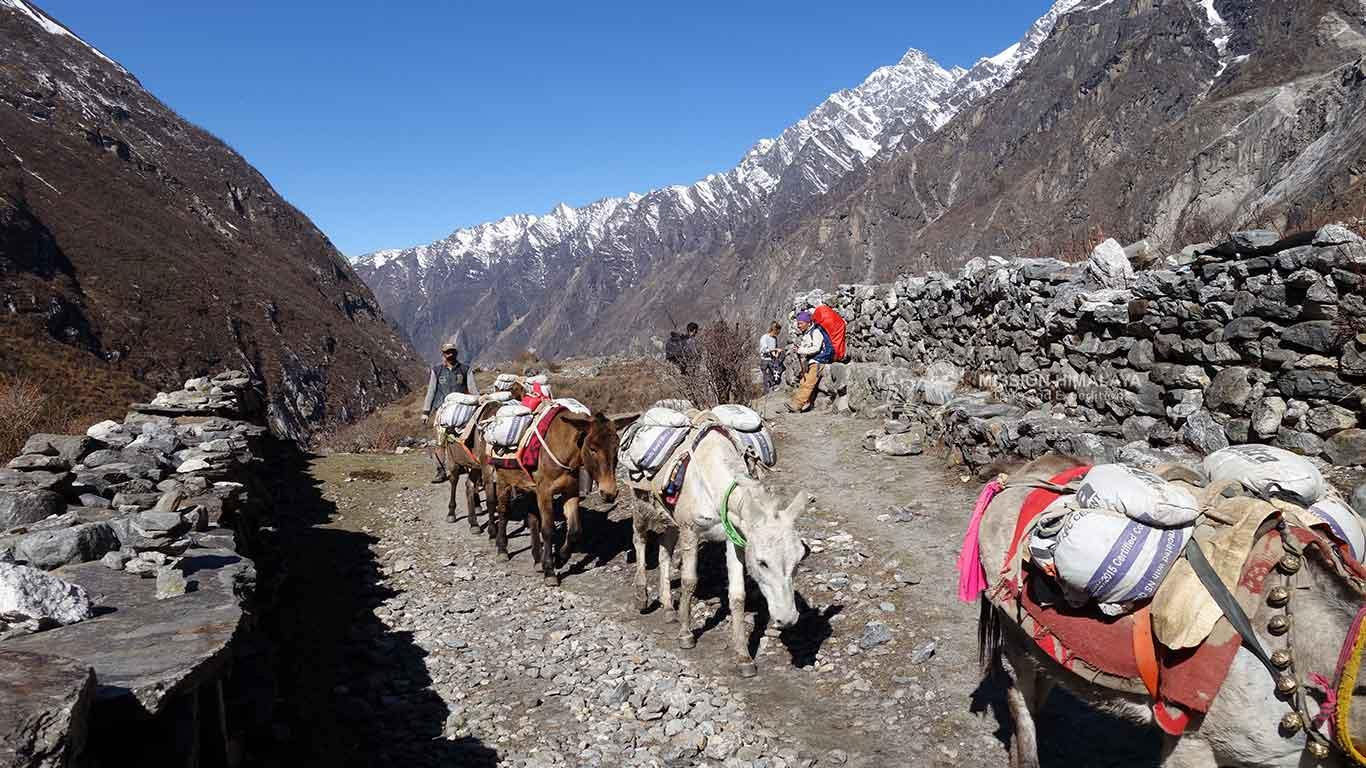
The trek takes you through a variety of landscapes, including lush forests, terraced fields, and high-altitude alpine meadows. While it doesn’t involve technical climbing, there are steep ascents and descents, and the altitude can be a factor of difficulty for some people. Remember that the highest point on this Langtang Valley Trek is Kyanjin Ri (4,773 meters or 15,655 feet), which is considered a high-altitude spot. From here, you can capture the stunning panoramic views of the surrounding peaks.
From where does the trek to Langtang Valley begin?
The trek to Langtang Valley typically begins in Syabrubesi, which is a scenic village located in the Rasuwa District of Nepal. Syabrubesi serves as the starting point for the Langtang Valley trek and is accessible by road from Kathmandu. Trekkers often take a bus or private transport from Kathmandu to Syabrubesi, and from there, they commence their trek towards the Langtang Valley. Therefore, in the same way, we will be taking a drive to Syabrubesi from Kathmandu. The trail passes through picturesque landscapes, charming villages, and diverse terrain as it gradually ascends toward the heart of the Langtang region.
Is Langtang Valley worth it?
Langtang Valley is worth a visit for those seeking a breathtaking blend of natural beauty and cultural richness. It offers a combination of stunning natural beauty, diverse landscapes, and rich cultural experiences. The panoramic views of snow-capped Himalayan peaks, interactions with local communities, and the trek’s varied terrain make it a rewarding adventure.

Additionally, Langtang Valley is less crowded than some other trekking destinations in Nepal. So, surely, it provides a more intimate and authentic experience. Therefore, we ensure that whether you’re a nature enthusiast, cultural explorer, or adventure seeker, the Langtang Valley trek will offer you a well-rounded and memorable journey.
When you should do the Langtang Valley trek for the best experience?
For the most rewarding experience, doing the Langtang Valley trek is highly recommended during the spring (March to May) and autumn (September to November) seasons.
Spring (March to May)
This season brings a delightful transformation to the Langtang Valley. The trail appears alive and well with rhododendron blossoms in bloom, which create a vibrant mosaic against a background of rich greenery of the region. Also, the weather remains mild and stable, with daytime temperatures ranging from 10 to 20 degrees Celsius (50 to 68 degrees Fahrenheit). Furthermore, in this season, clear skies will also provide crystal-clear views of the snow-capped peaks, making it an optimal time for trekkers who appreciate both vibrant landscapes and panoramic mountain vistas.
Autumn (September to November)
As the monsoon retreats, autumn shows a period of stable and dry weather. Like in the spring, the skies are clear in the autumn, offering unparalleled visibility of the Himalayan range. Particularly in this season, the daytime temperatures in this season hover between 10 to 15 degrees Celsius (50 to 59 degrees Fahrenheit) in higher altitudes. Further, the trekking trails are at their busiest during this season as they provide an ideal combination of pleasant weather and breathtaking scenery.
If we talk about the monsoon, then we advise you to avoid the monsoon season (June to August) due to heavy rainfall. Heavy rainfall in this season can lead to muddy and slippery trails, landslides, and limited visibility. Furthermore, winter (December to February) brings colder temperatures and occasional snowfall. So it makes the trek more challenging and requires proper cold-weather gear. Therefore, choosing the right season ensures that trekkers can fully enjoy the natural beauty and cultural richness of the Langtang Valley.
Langtang Valley Trek Itinerary
Day 1: kathmandu to syabrubesi.
Walking Hours: 8 Hours Driving
Meals Included: Breakfast, Lunch And Dinner
Accommodation: Tea House/ Lodge
On this first day of the trek, we leave bustling Kathmandu early in the morning and move to the starting point of our trek – Syabrubesi.
On this trip, you will enjoy seven hours of scenic driving along the Trishuli highway, driving through beautiful small villages, river valleys, and mountains. After passing the entrance gate to the Langtang National Park, the road then changes to offroad. We will arrive at the Syabrubesi village crossing the Dhunche headquarters of the Rasuwa. After journeying for about 7 hours, and then we will rest and prepare for tomorrow’s trek.
Day 2: Trek to Lama Hotel
Walking Hours: 5 To 6 Hour Trekking
Our journey today will begin with a slight three-hour ascent through a subtropical, deciduous, slightly higher-than pine and rhododendron forest upstream to the village of Bambus, where we will stop for lunch. If we’re lucky, we may come across Langur monkeys along the way. From here we will again climb steeply through the bamboo forest to our destination the Lama Hotel. Overnight at the Lama Hotel.
Day 3: Lama Hotel to Langtang Village
Walking Hours: 6 Hour Trekking
After having breakfast here at lama hotel, we will have a slight ascent through rhododendrons and pine forests upstream taking us around small villages, to the village of Ghoda Tabela, where we stop for lunch.
Then the landscape turns into a U-shaped glacial valley here. After lunch, we will continue along a scenic trail that includes a tree line and the magical views of the Langtang Lirung Peak. After passing through these, the route will then take us to the Langtang Valley. The Tibetan-style village of Langtang was destroyed by a massive catastrophe caused by an earthquake in April 2015. Overnight at the Langtang Village.
Day 4: Lama Hotel to Kyanjin Gompa
Walking Hours: 7 Hours Trek
Today will be a less demanding trek and at a calmer pace. Especially through the picturesque villages and herds of yaks, we reach the Kyangjin Gomba. If the weather permits us, we will have wonderful views of Ganchempo Mountain and Langtang Lirung. We will have time to relax, walk to the glacier, or visit the Yak cheese Factory, Kyanjin Monastery, or local houses. This will be the highest point of the trek so you will have plenty of opportunities to witness the scenery nearby. Overnight at the lodge in Kyanjing Gompa.
Day 5: Kyanjin Gompa
Today we have to climb the ridge of the mountain Kyanjin Ri 4300 m. After climbing the summit, we will witness the amazing view of the Langtang Mountains, including Langtang Lirung (7227 m), and Dorje Lhakpa (6966 m). Along with these peaks, you will also be able to see the beautiful Langsisa Ri Mountain (6560 m), Ganjala Peak, Yala Peak, and many other peaks.
If possible, we will continue to the top of Tsherko Ri 4986 m, where you will get an even better view of the Langtang Mountains, from which you will have a 360-degree view of the surrounding mountains and the top of Mount Yala. After climbing to any of these points, you will descend to Kyanjin Gompa and rest. Furthermore, while climbing to the top is voluntary, you can also spend the day walking with amazing views around Kyanjin Gompa and enjoying the snow-capped mountains and the warm sun. Overnight again in Kyanjing Gompa.
Day 6: Descend Lama Hotel
On this sixth day of the trek, we will return to the Lama Hotel. After breakfast, we will descend from Kyanjin Gompa through the Langtang Valley to Ghoda Tabela, where we will have lunch. From here, we will have another two hours of descent through the Langtang Khola River valley to the Lama Hotel. Along the way, the view of the 7,000-meter Langtang Mountain will accompany us. Overnight at the Lama Hotel.
Trek extension – Gosaikunda Lake. The trek continues through Thulo Shyaphru and will take you to the sacred lakes of Gosaikunda. If you choose to do the Gosaikunda Lake trek , the trek will be extended for about 7 days. We recommend extending the route, especially in spring, when you will be attracted by birds and flowers, blooming rhododendrons with a lush and green landscape.
Day 7: Syabrubesi
Today is the last day of our journey together. Half an hour after leaving the Lama Hotel, we will disconnect from the village of Rimche and head up the beautiful rhododendron forests to the typical Sherpa village of Syabrubesi. While descending, we will see snowy peaks in Tibet. Finally, after we descend to our destination Syabrubesi, we will celebrate our successful journey. Overnight at the lodge in Syabrubesi.
Day 8: Transfer to Kathmandu
Meals Included: Breakfast And Lunch
Accommodation: 3 Star Category Hotel
Today we will return to the capital by local bus. After having a continuous 8-hour drive, we will arrive in Kathmandu in the late afternoon.
Langtang Valley Trek Cost
- One strong porter with pay for food, lodging, insurance, and transportation.
- Pickups and drop-offs from airports and hotels.
- Accommodations: Twin-share teahouses on the trek and a 3-star hotel stay while in Kathmandu.
- Full-time meals along the trek and breakfast in Kathmandu.
- Welcome and farewell dinners.
- Down jacket, and a four-season sleeping bag (the down jacket and sleeping bag must be returned when the trip is over).
- A comprehensive medical kit.
- All necessary paperwork and permits.
- All relevant fees, including taxes and service costs.
- Private transportation in a welcoming car.
- English-speaking, professionally qualified, and experienced guide giving pay, lodging, food, and insurance.
- If your group consists of six or more people, an additional assistant trekking guide will be assigned.
- Nepal Entry Visa Fees.
- Other meals and beverages rather than compared to an itinerary.
- International travel to and from Nepal.
- Excess baggage charges.
- Evening and lunch meals in Kathmandu.
- Extra night(s) of lodging.
- Travel Insurance.
- Personal expenses (phone calls, laundry, bar bills, battery recharge, extra porters, bottle or boiled water, hot shower, heater charge, etc.).
- Tips for guides and porters.
- The services that are not included under "Cost Included".
Langtang Valley Trek Map

Langtang Valley Trek Support
How to prepare for the langtang valley trek.
Doing the Langtang Valley trek in Nepal promises an unforgettable journey through spectacular trails. However, the trek’s challenges, including varying altitudes and unpredictable weather, necessitate thorough preparation. So for that reason in this section, we’ll explore essential steps to ensure a safe and enjoyable trek. From physical fitness training to obtaining permits, packing smartly, and understanding local customs we will explore through all of it. So, now let’s delve into the details of this trip so that you get fully excited for the adventure of a lifetime.
Physical Fitness Training
Initiate a fitness training routine well in advance. Focus on cardiovascular exercises, strength training, and endurance activities to prepare your body for the physical demands of trekking in varied terrains and altitudes.
Trekking Gear Checklist
Create a comprehensive checklist of necessary trekking gear. Ensure your equipment is in good condition, including well-fitted trekking boots, layered clothing suitable for diverse weather conditions, a comfortable backpack, and a cold-weather sleeping bag.
Permits and Documentation
Prepare all of the necessary documents required to obtain the required permits for the Langtang Valley trek. As we are gonna manage everything for you, make sure that you make photocopies of the documents and keep them in a secure place.
Health Check-up
Schedule a pre-trek health check-up with a healthcare professional. Discuss your travel plans, and ensure you are physically fit for high-altitude trekking. Obtain any necessary vaccinations and medications.
Travel Insurance
Secure comprehensive travel insurance that covers trekking activities at high altitudes. Confirm that the policy includes emergency evacuation coverage in case of unforeseen circumstances.
Opt for lightweight and compact gear to reduce the weight of your backpack. Prioritize essential items, and avoid unnecessary belongings. Pack smartly to ensure comfort during the trek.
Money and Currency
Carry enough local currency for expenses along the way, as there might be limited access to ATMs in remote areas. Inform your bank about your travel dates to prevent any issues with card transactions.
Language and Cultural Preparation
Learn basic Nepali phrases to facilitate communication with locals. Acquaint yourself with the local customs and cultural norms to show respect and understanding during your trek.
Emergency Contacts
Compile a list of emergency contacts, including the contact information of local authorities, your embassy, and someone back home. Share your itinerary with a trusted friend or family member.
Therefore, by diligently preparing for the Langtang Valley trek, you increase your chances of having a safe, enjoyable, and fulfilling trekking experience amidst the breathtaking landscapes of the Himalayas.
Accommodation Facilities in Langtang Valley Trek
The Langtang Valley trek offers a range of accommodation options, primarily in the form of teahouses or lodges along the trail. These facilities provide trekkers with essential amenities for a comfortable stay amidst the stunning Himalayan landscapes.
1. Teahouses/Lodges:
Teahouses are simple lodgings equipped with basic amenities. These establishments often have communal dining areas where trekkers can socialize, share stories, and enjoy warm meals. So, expect clean beds, blankets, and shared bathrooms with cold water on this trek.
2. Room Options:
Teahouses typically offer single and double rooms. Double rooms may have twin beds or a double bed, with shared or attached bathrooms. Every bed will include a pillow, mattress, and blankets, as these are necessities for a bedroom.
3. Common Areas:
Generally, teahouses often have common rooms with heating, providing a cozy space for trekkers to relax and relax. Outdoor spaces with panoramic views allow travelers to enjoy the natural beauty of the Langtang Valley.
4. Hot Showers and Charging Facilities:
While hot showers may not be available at all teahouses, some do offer them for an additional fee. Charging facilities for electronic devices are available in Syaprubesi and Langtang Valley. This allows trekkers to stay connected during the trek.
5. Blankets and Sleeping Bags:
Accommodation along the Langtang Valley trek provides a unique opportunity to experience the warmth of Nepali hospitality while immersing yourself in the natural beauty of the Himalayas. Trekkers are encouraged to be flexible and embrace the simplicity of teahouse living for a truly authentic trekking experience. Teahouses typically provide blankets, but it’s advisable to bring your sleeping bag for added warmth, especially at higher elevations.
Food and drinks in Langtang Valley trek
Keep in mind that the food menu becomes simpler the more difficult it is to get to. Anywhere throughout the trek, tea houses have one thing in common: their menus are all identical, with dishes like Dal Bhat, noodles, potatoes, and soups. These products are available throughout the trek.
- Tea or Coffee: Most teahouses and lodges will offer tea or coffee to kickstart your day.
- Porridge: A warm and hearty bowl of oat or rice porridge might be available, providing energy for the day ahead.
- Eggs: You may have egg options in the lower altitudes.
- Bread and Jam: Simple options like toast with jam or honey are common in the teahouses.
- Pancakes or Chapati: Mainly in the teahouses, you will find pancakes or chapati (flatbread).
- Dal Bhat: A traditional Nepali meal consisting of lentil soup (dal), rice, and side dishes like vegetables (radish curry), pickles, and meat in lower altitudes.
- Noodles: Many teahouses serve a variety of noodles.
- Soups: Warm soups, especially vegetable or noodle soup, are commonly available.
- Momos: These delicious Nepali dumplings, filled with vegetables, are a popular lunchtime snack.
- Rice and Curry: Similar to lunch, you might have rice with a variety of curries, including vegetables, chicken, or yak.
- Local Specialties: Teahouses often showcase local specialties, allowing you to try different regional dishes.
- Quinoa or Buckwheat: At higher altitudes, you might find alternatives to rice and wheat, such as quinoa or buckwheat.
- Hot Drinks: Wrap up your day with a warm beverage like herbal tea or coffee.
Remember that the availability of specific dishes can vary, and the altitude and remoteness of the trekking route may influence menus. Further, it is also crucial to stay hydrated, so make sure to drink plenty of water or other hydrating beverages such as tea, coffee, and hot lemon, throughout the day. A few of your favorite snacks and energy bars are a great option to pack for your hike to provide you with extra energy and quick snacking.
Permits required for Langtang Valley Trek
To preserve the natural environment and cultural heritage, the Langtang Valley Trek in Nepal requires several permissions. Ensuring you comply with local legislation is also a formality. The primary permits that you’ll need are as follows:
- Langtang National Park Entry Permit: The entry permit for Langtang National Park is a requirement to access the park. This permit can be obtained in Kathmandu or at Syabru Besi’s park gate. Furthermore, this permit is valid for the whole length of your trek and contributes to the region’s conservation work.
- TIMS (Trekkers’ Information Management System) Card: Many treks in Nepal no longer require the TIMS card. In its place, more specialized national park permits are now required. But in the case of the Langtang Valley trek, it requires a TIMS Card.
You don’t need to stress about the procedure for obtaining these permits while engaging us. Still, to secure the required permits, you must give us the specifics and photocopies of the necessary documents. Therefore, know that these permits guarantee that you adhere to regional laws while also helping to protect the Langtang region’s natural and cultural assets.
Information on the medical facilities available along the Trek
There aren’t as many medical facilities here as in more developed locations. However, the following basic medical services and amenities are accessible throughout the trail:
- Local Health Posts and Clinics: You’ll find neighborhood health posts or limited clinics in a number of the settlements along the journey. These can provide you with basic first aid along with common medicines. Medical professionals typically run these clinics in the region.
- Emergency Services: If there are any problems and you need to arrange for an evacuation, we will aid you with the support of the locals and our staff. In more extreme situations, helicopter evacuations are an option, although they can be costly and weather-dependent.
- Kathmandu: If you have any issues, it is recommended that you see your doctor and have a comprehensive physical examination before starting the Langtang Valley Trek. If you want, you can use medical services in Kathmandu’s modern hospitals and medical institutions.
The Langtang region is a safe escape for those who love the outdoors as well as a location to experience the friendliness and customs of the surrounding people. Further, we want to tell that those who want to experience the surroundings of hills to mountains will find this journey as a go-to journey. Later, on the trip with the soaring snowy peaks around you, will find this journey to be more exciting and curious.
Along with overcoming difficult terrain, finishing this trek allows you to establish a spiritual connection with the Himalayas. We assure you that you will always cherish the memories and experiences you had on this journey. With us, you can rest assured, as we always offer our best to the clients we work with. Therefore, we would like to take this opportunity to offer you this amazing excursion through the Langtang region’s alpine adventure. Whether you are an experienced adventurer or planning your first adventure trip, never forget that we are here to assist you.
Langtang Valley Trek FAQ'S
Why not. Our itinerary tailor expert from Mission Himalayan Treks and Expedition will modify the itinerary. Please feel free to contact us if you’d like to personalize your Langtang Valley Trek schedule.
Buses and microbuses are available every morning in Machhapokhari, Kathmandu. It will be comfortable in buses rather than small microbus.
Without any doubt, you can proceed to explore the Langtang region. Since the region of Langtang is not a part of Nepal’s restricted area, most of the trekkers grasp this destination in their solo trekking spot. However, it will be better if you trek with a guide.
Finding the right track might be difficult, and you may become disoriented. The trails are extremely perplexing, with several paths leading through impenetrable woodlands. As a result, you must exercise extreme caution while taking a step to a new trail.
Allocate a budget up to USD $550 to $600 per individual. The prices for permits, public vehicle transportation tickets, and payment for hotels are included. However, you must pay an additional charge for a personal vehicle ride, charging electrons, wifi, hot shower, and hot drinking water.
Yes, you need to apply for two permits i.e Trekkers Information Management System (TIMS) and Langtang National Park entrance permit which can be applied from a trusted trekking company.
Due to the snowstorm and 2015’s earthquake, the Langtang village has been devastated, where 310 dead bodies were found and more than 100 are still missing.
You can get SIMs in Kathmandu so that you can get engaged with your loved one. In Addition, most of the hotels provide wifi facilities to the guest with extra charge.
Some of the prior trekkers have shared their experience as they got caught by altitude sickness. That’s why we recommend you to know about altitude symptoms and its quick prevention. Don’t neglect your health if you suffer from altitude sickness.
It is not compulsory to have travel insurance but you might get encountered by unforeseen incidents. Such as heavy snowstorm, landslides, diarrhea, altitude sickness, and many other physical weaknesses and natural disasters. So, it will be your profit if you obtain travel insurance.
There is no ATM facility in Langtang. You must carry the needed funds in cash before proceeding with this trek.
Langtang Valley Trek Reviews

Wonderful Trekking Experience
I was very very happy to do Langtang and Everest Trek with Raj and his friends. Even the trekking was a little difficult for me the most experienced guide Raj Take care us very well no word to explain him simple thanks not enough. In the alternative, he explained the trekking routes, the culture of people and history always simply language and respectful. It was the amazing moment of my lifetime trip. I congrats all of Mission Himalaya Treks And Expeditions Teams. Wish you all the best and keep it up continuation. Faithful Rani, Indonesia
Best Experience of trekking in my life
Our guide Birendra Duwadi was amazing. He had lots of knowledge to share and helps us along our trek, Shyam was a reliable porter as well and together the 2 of them gave us the best trek whatever they can. At night Shyam prepares our fruits for deserts and guide Birendra explained to us about our next day plan of trekking fluently. Great Job Birendra And Shyam, would highly recommend this company Mission Himalaya.
Overall the trip was amazing
Langtang Trek-I really loved this Langtang trek with Mission Himalaya. I and my friend chose a group tour to Langtang, so we were a little team with guide Bam Gurung and two porters and we all had a really nice time together with them. In the daytime, we trekked in the beautiful nature, and in the afternoons and evenings we played card games called less than 5 or Nepali Name “Dhummal”. Read books and drank ginger lemon honey tea in the clean tea houses. We had a great trek in Nepal. Overall the trip was amazing.
My Happy trek to Langtang
I went trekking in Langtang in October 2018. Everything was perfect, stunning mountains, spectacular glaciers, beautiful rhododendrons the national flower of Nepal which has 32 different colors of red white and pink. I made a good choice of picking Birendra Duwadi as my trekking guide and tour guide. He is experienced, sincere and honest that gives me confidence and makes me enjoy during my stay in Nepal. Thank you Mission Himalaya treks and the whole team.
beauty Langtang trekking
Mission Himalaya Treks and Expeditions helped with a great professional tool for us and which we were well taken care of and got to see Nepal and all its beauty. We liked this Langtang trekking so much, that we will be returning them for another trek soon may be Manaslu or Everest. I do recommend very strongly for this trekking company who have the plan to go to Nepal.
coaches are comfortable and the prices totally reasonable
I am always traveling with this company in Nepal. The coaches are comfortable and the prices totally reasonable. The guides and porter are very helpful. This time I traveled Langtang Valley trekking.
Had a great experience in Nepal Langtang
I had a great experience in Nepal Langtang. A private car for us is in perfect condition. The driver is nice and polite. The guide was very helpful in answering all my questions. I will definitely use this company again and highly recommended it. Thank you a lot.
Thanks for everybody for your work day by day
you and your very good company and your guide and porters are professional. Thanks, everybody for your workday by day. We are a really good experience in Langtang Nepal.
polite good English Spoken guide
Scorpio the vehicle we used was on time and very comfortable, had air-conditioned for each seat as well as a charging point in driver place. The driver was friendly. Guide and porter we used for this Langtang valley treks are so polite good spoken of English, Kind, helpful and so respectful. 100% recommended this company from Heart.
Fantastic journey
Fantastic journey if you traveling with Mission Himalaya and booking early that’s when you get the best deals on prices, Best Guides. I visit my wife Langtang valley in October. Best view.Perfect traveling.
- No Hidden Cost
- Customer Care And Safety
- Trustworthy Team
- Financially Secure
- Repeated Guests
- Flexible Departure Dates
- Different Group Sizes.
- High Successful Rate/Safety
- Stress & Worry Free Travel
- Staffs Welfare

Annapurna Base Camp Trek

Everest View Trek 2024

Helambu Trek

Langtang Gosaikunda Helambu Trek

- Partnership
- Travel Blog
- Responsible Travel
- Online Payment
- +9779851058664 Call us 24/7
- [email protected] Email support
Langtang Trek- A Complete Guide
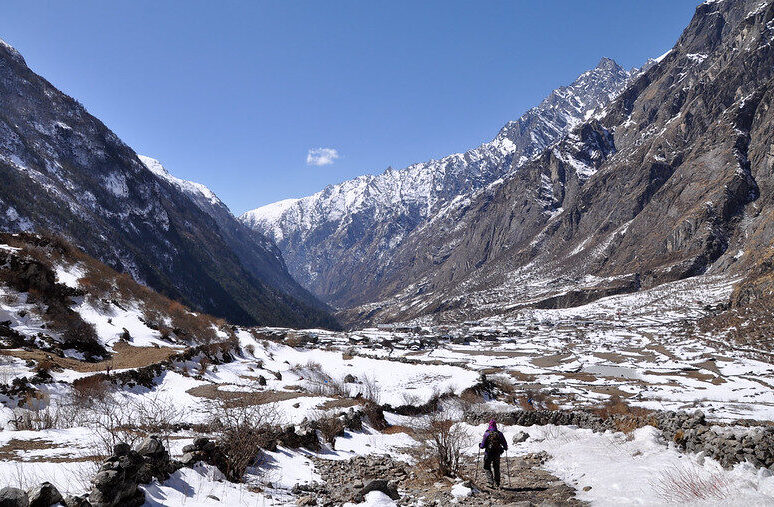
Langtang trek is one of the most rewarding and worthy treks in the central part of the Himalayas. This trek takes you through Langtang National Park and Tamang community culture. Additionally, you will pass through the lush forest, the Langtang mountain range.
Langtang is regarded as the third most visited trekking destination. Every novice trekker can achieve the Langtang Valley trek easily. The highest elevation you will reach is 4984m in the glacial terrain.
Table of Contents
Key highlights of Langtang valley trek
- No need for a flight, you can reach the Langtang region in a drive of 7 to 8 hours
- Experience the ethnic Tamang communities’ culture along with multicultural cuisine and amazing warm spirit scenery
- Explore the several kinds of flora and fauna at a Himalayan national park (Nepal’s first Himalayan park) and Langtang National park (Fourth protected area)
- You can be lucky to spot rare Red Panda and pass through rhododendron trees during your forestry trail
- You can picturesque the mesmerizing view of mountain peaks like Langtang Lirung, Yala Peak, Loenpo Gang, Langtang Ri, Dorje Lakpa, and much more
- You can visit the area which is badly hit by the 2015 earthquake
- Encounter with the oldest Buddhist monastery in Kyangiin Gompa and visit the famous cheese factory over there
- you will reach the highest elevation of the trek- Kyangiin Ri (4,984m/16,351ft) to get precise views of the great Langtang Range
For more details: Top 10 Things to Do in Langtang Valley Trek
Langtang Trek Itinerary
Plan your adventure with us.
Talk to our expert team to plan your trip in Nepal.
TIMS And Entry Permit
The Langtang trekking route falls in a protected area – Langtang National Park, which requires an entry permit that allows the trail. Besides this, trekkers must get a trekkers information Management System (TIMS) card before making the trekking move in the Langtang Valley and most of the trekking region in Nepal.
A detail of permit cost per person at the Langtang Valley is given below:
For foreigners: NPR 3000 (Approx. USD 30) plus 13% VAT
For SAARC nationals: NPR 1500 (Approx. USD 15) plus 13% VAT
TIMS permit for both: NPR 1000 (Approx. USD 10)
You can obtain your entry permits from the Nepal Tourism Board office at Pradashani Marg, Kathmandu. You can collect at office hours from Sunday to Saturday from 9:00 am to 4:00 pm. An alternative option is also available to obtain permits from the second checkpoint on your way to Syabrubeshi.
you have to carry all the necessary documents such as your passport copy, insurance policy number, detailed itinerary information, and some passport-sized photos. It will be easier for you if you take a package trip from a local agency as they will manage everything needed for the permits.
Note: you have to show your entry permits at all the respective checkpoints. It is better to keep documents safe. All the permits are non-refundable and non-transferable. Besides this, no entry fee is needed for children below 10 years.
You may also like: How to Obtain Permits for the Langtang Valley Trek?
Where is Langtang Valley Located?
Langtang Valley is located just 51 km far from the north of Kathmandu in the north-central Rasuwa District. Langtang Valley extends from east to west including Langtang National Park and is surrounded by Tibet on the north side. Mesmerizing Langtang Lirung mountain amidst several ranges welcomes you. you will pass through the lush Langtang River and Bhote Khosi River at the western end of the Langtang valley. Moreover, your trekking trail will be through an ancient trade route following the tributary above Dhunche while you can picturesque the view of the great Himalayas such as Ganesh and Langtang peaks extending towards the Kerung border to Tibet.
Langtang Valley is basically famous for its natural beauty and moderate climate. Several local villages, tea houses, lama hotels, and Kyangjin Gompa are some tourist choices in this Himalayan region.
How to Get in Langtang Valley?
Langtang is 51 km far away from Kathmandu city. Your trekking starting point begins from Syabrubesi, which is 115 km away from Kathmandu. After 7 to 8 hours of drive from Kathmandu, you will reach Syabrubesi – the main trek point. You will travel on the comfortable jeep or any private vehicle provided by the agency. You will pass through several parts of the road such as black pitched, gravel, and muddy in some parts.
You can choose your way of travel in terms of your budget. However, if you choose a local bus then you have to reach the Gongabu Bus Station early morning at 6 Am or 7 Am. You will find this local bus a little bit crowded and typically slowly in comparison to other means. Besides this, you have two more option to travel one is by a sharing vehicle and next one is the tourist bus which costs, USD 10 and USD 8 to 9 respectively.
Additionally, you have the next option to travel from a private vehicle to get a more comfortable and luxurious experience throughout your journey. Generally, this private rental charges a high cost in comparison to other options.
Note: You can reach Syabrubesi – the starting point for the Langtang Valley trek by three different ways via local bus, private rental vehicles, and jeeps according to your budget and comfort.
Langtang Trek – Difficulty and Preparation
Langtang trek will take you to an elevation of 4,500m/14,763ft. However, you will spend a night at the altitude of 3830m/12566 ft situated at the Kyangjin Gompa. some of you may feel altitude sickness at this level. Trekking is considered to be moderately difficult as it can be a cover-up by every type of trekker.
The Langtang Valley trek lasts for 7 days. You will have to trek normally 6 to 7 hours per day to reach your destination point. Furthermore, you need to trek more than normal hours or can be less, someday by considering certain facts which may come your way. The trekking trail passes through several landscapes, scenery, and rugged terrain.
This trek is quite famous for regular trekkers and a good starting trek journey for amateurs who are physically and mentally fit. To avoid trekking difficulties, you need to boost your energy level. Additionally, you can practice swimming, cycling, hiking, yoga, and exercise a couple of weeks before the trek at the Langtang region. As your trek goes through the high altitude, you need to quit your smoking and drinking habit. Such a habit may cause you to lose your stamina and immunity, due to which you will be unable to reach your destination.
More Detail: How Difficult Is the Langtang Valley Trek
Altitude Sickness- H o w to Avoid Altitude Sickness?
Altitude sickness is common to happen when you trek in the Himalayan region above 2500 meters. Moreover, trekkers may suffer from altitude sickness at the Langtang Valley trek in comparison to the Annapurna base camp trek because of the maximum elevation of 4,984m/16.351 ft at Tserko Ri. You will feel the slight and sudden change in your move for the first few days because of the elevation. The more you step forward; your body finds it difficult to be compatible with the surroundings at the oxygen level atmospheric pressure drops down and the air becomes thin.
Acute Mountain Sickness (AMS) and Altitude sickness are the two most common forms of altitude sickness you may suffer above 3000m/ 9842ft. Mild symptoms like headache, fatigue discomfort, and insomnia might be experienced. Additionally, you might experience severe symptoms such as dizziness, rapid heartbeat, loss of appetite, and vomiting. To avoid such symptoms, you need to follow precautions, be aware, and be safe. Besides this, a good diet, a detailed itinerary including acclimatization day, and a good warm-up exercise are needed to reduce AMS.
Note: Diamox Tablets can be taken, once you get a prescription from the doctor to eliminate risk. If you feel uneasiness and get a symptom as mentioned you need to quickly inform your tour guide, porter, to assist you. Prevention is better than cure.
Best Season to Trek in Langtang Trek

Langtang Valley is situated in the central Himalayan region, which is why the best season to visit Langtang is considered to be during the month of spring season (March to May) and Autumn (mid-September to November). These seasons are best to travel and gather memories in most parts of Nepal.
During the spring season, you will feel the chill and cold weather and the views are amazing. You will find the different flora and fauna, wildflowers, and rhododendrons blooming along the trail. The temperature in the spring season ranges from 10 to 22 degrees Celsius (50 to 71 degrees Fahrenheit) in the daytime. The mesmerizing view of Tserko Ri is seen vividly and it is worth capturing.
Furthermore, the Autumn season is regarded as the best season to trek in the Langtang region . The days are shorter, warm, and sunny. You can get a chance to celebrate Nepal’s two most important festivals, Dashain and Tihar during this season. Experiencing and exploring the culture and tradition of Nepal will get you to another point in your trek journey.
Additionally, some trekkers choose to trek during the month of the Winter season (December to February). The days are cold and night is chilly and long at this time. Even the temperature may drop down to -3 degrees Celsius in January. Extra precautions and heavy clothing are needed to prevent you, from suffering from AMS and frostbite. Besides this, summer and Monsoon season are also included in the list but it is strongly not recommended as the views might be blurry and weather conditions may change frequently.
More Details: When is the Best Time for the Langtang Valley Trek?
Food in The Langtang Trek

Food is an essential part of our life. Whenever it comes to trek, a portion of healthy and nutritious food is needed to boost one’s immunity power. During your trekking trail, food is available as per your taste but we prefer you to have Nepalese cuisine. The meals here are very delicious and warm. Dal Bhat tarkari – (Lentils, rice, vegetables) is a predominantly local dish you must try. Other local delicacies such as yak cheese, Tibetan butter tea, and Tibetan bread with boiled and fried potatoes are famous cuisines you will get to taste once you reach the Langtang region.
Additionally, your tea houses and lodges offer you a menu of American, Italian, French, and Korean dishes. You can choose according to your taste and preference. You will find the dishes a little bit more costly than at Kathmandu.
We suggest you carry water-purifying tablets and some dry fruits, cookies, chewing gum, Choco chips, energy bars, granola bars, and dry fruits on your own. You can buy these items at one of the supermarkets in Kathmandu because the price is double at higher altitudes due to transportation charges.
Accommodation at Langtang Valley
Accommodation is arranged at local tea houses with basic facilities. Star hotels are arranged during your stay in Kathmandu. The bed will be comfortable, and neat, and a clean bathroom is available. As your trek begins from Syabrubesi, then your accommodation will be arranged at local tea houses. You will find newly built tea houses.
The room is separated by thin walls and you will be sharing the room with the same gender. You have an option to sleep at the teahouse bed or you can sleep in your sleeping bag if you carry one. The rooms are clean and multiple beds are arranged in shared rooms. However, you can stay in a single room by paying extra charges.
You will find tea houses full of trekkers during the peak season of the trek. Furthermore, agencies will help you to settle down at one of the local tea houses. You need to share common bathrooms. The toilet seats will be squat. You have to be sure to carry toiletries in your bag pack.
Internet Connectivity and Electricity at Langtang Trek
Internet and electricity facilities are available during your trek trail. However, you might face an electricity power cut-off sometimes. Some of the tea houses may charge you extra internet charges and electricity charges as you charge your phone and batteries. Wi-Fi is available at the teahouse you stay in.
You need to get a sim card of NTC and NCELL in Kathmandu to get connected with friends, family, and agencies. Additionally, you can buy mobile data once you install your SIM card on your mobile phone. You need to carry an extra power bank or solar charger if possible. The electricity power and lights tend to be of low voltage as you ascend higher.
Langtang Trek Cost
Langtang trek cost is relatively dependent on the type of trek days, season, and agencies. Additionally, cost also depends on transportation, food, accommodation, hiring travel agencies, hiring guides porter charges, group, and individual.
Comparatively, the cost of the Langtang trek is relatively less than the trek in the Everest region and Annapurna region as it is very close to Kathmandu city.
Langtang Trek All–Inclusive Package
Langtang trek package price ranges from USD 900 to USD 1500 if you choose the agency’s offer package. The package includes all the basic services needed such as food, accommodation, domestic transport, entry and permits, porter and guide, tea and coffee breaks, and so on at your trial. Cost varies according to agencies. It will be beneficial for you to choose and book a local travel agency than a foreign travel agency. Local travel agencies have more networks, connections, and experience in managing treks peacefully.
Furthermore, the Langtang trek package doesn’t include any personal expenses, hot showers, extra assistance, recharges, souvenirs, bar bills, internet connectivity charges, and many more. All the personal expenses should be borne by you in your way including your International flights as well. You have to carry a certain amount of money separately for your miscellaneous expenses.
Langtang Trek Independently
Langtang trek can be managed in your own way without any help from travel agencies. For this, you can hire a porter and guide personally. Alternatively, you can do a solo trek with your group as well. Independent trek is suggested only if you are an experienced trekker and familiar with Nepalese trekking routes, culture, and language in a very good way. All kinds of documentation, food, accommodation, entry, and permits have to be managed by yourself. This might bring you the hassle and run around you here and there.
Independent trekking’s estimated cost can range from USD 700 to USD 1000, depending on the travel season, the option to hire a porter and personal guide, accommodation, and food, you choose.
Hiring a Guide and Porter for Langtang Trek
You can set up the contact to local guides who will assist you in setting up your trip only. However, you also have an opt-out option to hire guides and porters with/without the help of travel agencies.
You need to cover and manage porters/guides’ food, accommodation, travel expenses, tips, and insurance while traveling.
The general cost of hiring a porter and guide for the Langtang trek is given below:
Guide: You have to pay USD 25 to USD 35/day plus a tip
Porter: you have to pay USD 15 to USD 25/day plus tips
It will be easier for you to trek in the Langtang region with a guide as they know all the local languages and have trekking experience over there. Additionally, the porter will carry your luggage, and bag pack to make your trek easier.
What to Pack for Langtang Trek?
Gears and equipment depend upon the season you choose to trek and travel. During your trek trail to Langtang, you will be taken to an elevation above 4500 m / 14763 ft. The weather becomes cold once you cross the elevation of 2500m. You have to keep the weather in consideration while traveling. The temperature goes down to zero degrees in the winter season, while a cold breeze of air passes in the spring and at the end of Autumn.
There is the most important equipment you need to carry by yourself while trekking in the Langtang region. They are listed below:
- First aid kit
- Pairs of sturdy shoes and trekking poles
- Down jacket, warm clothes
- Hiking shoes and socks
- Toiletries and personal hygiene things such as brushes, feminine products, paste, sanitizers, wet tissues, lotions, moisturizers, etc.
- Cotton t-shirt, pants, and sweatshirt
- Battery charger
- Daypack and bag pack
- Glucose and other energy drinks
- Chewing gum, chocolates, bars
- Water purifying tablets
- Sunglasses, hats, EarPods
- Sleeping liners and sleeping bags
- Money pouch, water bottles
- Daily itinerary notes
The above-mentioned are the essentials that you must carry while trekking in the Langtang region. However, you can avoid sleep liners, sleeping bags, and camping gear like gaiters and crampons as it is a moderate trek.
Note: You can leave your other unnecessary items and luggage in your hotel room where you stayed back in Kathmandu. The hotel staff will keep your baggage with due care and safety.
Guided Tour vs Independent Trek
A guided tour is easier for the trekkers for the Langtang Valley trek . You have two options to trek in the Langtang region. It is either by guided trek or by independent trek. Most of the trekker’s choices are guided treks it across rural areas and in high altitudes, which should be done under the supervision of some experienced traveler.
There will be no worry about documentation, permit, entry, food, and accommodation on your route if you choose to do a guided tour. You can hire a guide through your travel agency or by personal contact.
Furthermore, you can go for an independent trek, if you want to go for a solo trek. If you choose so, then you have to bear all kinds of responsibilities such as documentation, entry, permits, food, accommodation, and many other things. You have to be health-conscious on your own. Though it is a cost-saving alternative, you have to face a lot of obstacles if you are unaware of the Nepalese language, culture, routes, and many more.
Travel Insurance for Langtang Trek
Travel insurance is a must if you are going to trek in a high-risk area and if you choose to trek/travel outside your home country. Moreover, the trek is done at a high elevation of 4500m/14763 ft, which may cause Acute Mountain Sickness (AMS). Langtang lies in the high Himalayan region and with a limited facility for basic needs. So, if you fall sick/ injured seriously, you might be rescued through the helicopter which tends to be a high cost.
Travel insurance is done to get compensation if any kind of obstacle happens in your way during the trek. Before having any insurance, you need to be very careful and should read all the terms and conditions of the related insurance company. You must let your insurance company about your day-to-day itinerary, region of travel, and so on. Once your trekking finishes, you can cancel the insurance policy.
Langtang After Earthquake
Langtang Valley is one of the prone areas which was badly affected by the 2015 earthquake in Nepal. Many locals and foreigners lost their lives during that time. Later on, the Langtang region villages were completely scattered and ruined due to a sudden landside which fell off at the south face of the Langtang Lirung. The medical supply and rescue team didn’t reach there for so many days due to blockage.
You will be across through many gompas, mani walls, few surviving houses on your route. After the huge devastating incident, now the Langtang village is drastically changing. Houses are rebuilt. Basic facilities have been upgraded. You can find so many memories connected to ancient history and often can get information through locals about how the Langtang was before the earthquake. You can find bakeries, newly built tea houses, coffee shops, and properly managed trekking trails. The mesmerizing view of Langtang revives you internally, once you reach your destination.
Langtang trek is a memorable and rewarding trek that is just a few kilometers away from Kathmandu. You can see the people full of confidence and happy faces even after they suffer from the huge loss from the earthquake. You will find inspiration in every local of the Langtang region. You can stay at the newly built tea house and enjoy the panoramic views from there. Additionally, you can extend your trek. Many trekkers choose to trek to Gosaikunda Helambu and Tamang Heritage Trek once they get inside Langtang Valley.
High Route adventure gives you maximum satisfaction and provides you with a detailed itinerary for your easiness. We are always ready to make your trip memorable and fruitful.
Want to know more about Langtng Valley Trek?
Talk to our expert guides who is more aware about the climate and weather of Langtang Valley Trek.
Our Partners

We are associated with

Sister Company

- Hiking Shoes
- Hiking Boots
- Hiking Sandals
- Trail Runners
- Base layers
- Hiking Shirts
- Fleece Jackets
- Softshell Jackets
- Rain jackets
- Down Jackets
- Hiking Pants
- Hiking Shorts
- Base Layers
- Rain Jackets
- Hiking Bras
- Baby Carriers
- Cookware Sets
- Water Filters
- Water Purifiers
- Sleeping Bags
- Sleeping Pads
- Hiking Poles
- GPS Devices
- Solar Chargers
- Dive Regulators
- Dive Computers
- Dive Watches
- Dive Wetsuits
- Dive Gloves
- Dive Lights
- Dive Knives
- Spearfishing Wetsuits
- Spearfishing Masks
- Spearfishing Fins
- Spearfishing Watches
- Freediving Wetsuits
- Freediving Masks
- Freediving Fins
- Freediving Watches
- Sit On Top Kayaks
- Inflatable Kayaks
- Fishing Kayaks
- Tandem Kayaks
- Touring Kayaks
- Kayak Paddles
- Kayak Seats
- Kayak Roof Racks
- Kayak Carts
- Stand Up Paddle Boards
- Touring SUPs
- Inflatable SUPs
- Fishing SUPs
- SUPs For Yoga
- SUPs For Surfing
- SUP Paddles
- Climbing Boots
- Belay Devices
- Climbing Shoes
- Women's Climbing Shoes
- Bouldering Shoes
- Approach Shoes
- Climbing Pants
- Bouldering Pants
- Mountain Bikes for Men
- Mountain Bikes for Women
- MTB Handlebars
- Bike Saddles
- Bike Computers
- Bike Lights
- MTB Jackets
- Bike Helmets
- Bike Packing Gear
- Fat Biking Gear
- Ski Bindings
- Ski Helmets
- Ski Goggles
- Ski Jackets
- Snowboarding Bindings
- Snowboarding Boots
- Snowboard Helmets
- Snowboard Goggles
- Snowboard Pants
- Snowboard Jackets
- Snowshoe Poles
- Avalanche Beacons
- Avalanche Probes
- Avalanche Shovels
- Ski Backpacks
- Surfboards For Beginners
- Surfboards For Kids
- Surfboard For Small Waves
- Soft Top Surfboards
- Foam Surfboards
- Body Boards
- Boogie Boards
- Kiteboarding Kites
- Kitesurfing Boards
- Kiteboarding Harnesses
- Surfing Wetsuits
- Men's Rash Guards
- Women's Rash Guards
- Board Leashes
- DLSR Travel Cameras
- Mirrorles Travel Cameras
- Point and Shoot Travel Cameras
- Fuji Travel Lenses
- Nikon Travel Lenses
- Tripods for Travel
- DLSR Landscape Cameras
- Mirrorles Landscape Cameras
- Point and Shoot Landscape Cameras
- Fuji Landscape Lenses
- Nikon Landcape Lenses
- Canon Landcape Lenses
- Tripods for Landscape Photo
- Wildlife Cameras
- Wildlife Lenses
- Wildlife Tripods
- Wildlife Monopods
- Birdlife Cameras
- Birdlife Lenses
- Surfboards For Small Waves
Hiking The Langtang Trek in Nepal
Have you ever dreamed of hiking the Langtang Trek in Nepal? We’ve all seen those pictures of the soaring Himalayan Mountain Range but do you know what it takes to get there?
A long list of questions fill your head: When is the best time of the year to go? What should I pack? And, what about altitude sickness?
To answer those questions, I have put together this guide to walk you through everything you need to know to plan and prepare for the Langtang Trek, one of the best treks in Nepal .
[thrive_leads id=’51961′]
WHAT TO EXPECT FROM THE LANGTANG TREK?
The trek is situated in the Langtang Valley, nearby Kathmandu city. It is the perfect destination for someone who wishes to trek to the Himalayas but is looking for a relatively easy route with shorter walks and lower altitude.
Although it is close to the city, it is hard to tell. The rich ecosystem of the valley is well preserved. The region is a rural landscape comprising of villages, terraced farms and forests encircled with green hills with a backdrop of the white Himalayan ranges.
The route is a scenic one through dense bamboo and rose tree forests that will take you passed waterfalls and snow-capped mountain peaks. The trek is known for having one of the best views of the Annapurna Range.
The bonus that comes along with the wild scenery is the chance to get to know the unique culture of the local people. Because the region is close to the Tibetan border, their culture resembles to theirs’. As you hike through the valley, you will get a chance to learn from their practices and traditions. You will also come across several Buddhist temples and monasteries.
LANGTANG AFTER THE EARTHQUAKE
The April 2015 Nepal earthquake annihilated many homes and lives. Langtang, among all the devastated areas, was one of the most effected region. The catastrophe destroyed almost all the guesthouses and marred some parts of the trek. The region was also closed for trekking for a really long time.
The good news is that the region has been open again for trekking. Most of the guesthouses are still under reconstruction. You might have to spend your nights in tented camps if you can’t find a room in any of the few guesthouses.
The routes that were a part of the trek but were destroyed in the earthquake, have been recreated following a different path. You need not worry about the comfort. The trek is as pleasant as it always has been.
In fact, by trekking to Langtang, you will become a part of rebuilding the region. Your recreation will be a major contribution to the economical upliftment of the local residents.
BEST SEASON TO TREK TO LANGTANG VALLEY
The best seasons to trek to Langtang are autumn and spring. Autumn is from September to December and spring stretches from March to May. The weather is warm and the heat is bearable. There will be very little or no rainfall. The sky will be clear allowing you to get the best view of the mountains.
DIFFICULTY LEVEL
The trek is graded as a moderate trek. Unlike easy treks, moderate treks have longer walks and higher altitudes. The route in some places steeply ascends or descends. You will require an average level of physical fitness to enjoy the trek.
However, a moderate trek doesn’t not require as much skill, knowledge and experience as the strenuous ones. Even if it is your first trekking experience, Langtang can be a good option to start with. If you are overweight or a senior citizen, take enough rest and break up the hike into short walks.
REQUIRED PHYSICAL FITNESS
The Langtang Trek is not a strenuous trek and hence doesn’t require a high level of physical fitness. But it is advisable to be moderately fit for any kind of trek. Being fit will help you enjoy the walk without putting much stress on your body. Train your body a few weeks before the trek. Read up on how to get fit for hiking , go for a city walking tour and do some regular routine exercises.
WHERE CAN I BUY TREKKING GEAR?
You can purchase hiking equipment in your hometown or in Nepal. Nepal has several stores that sale name brand gear as well as some cheaper ones that sell trekking essentials. Most of these stores are in Thamel, which is the most popular area among travellers. You can also rent gear if you don’t want to travel with your own.
FOOD AND ACCOMMODATION
There aren’t as many teas houses to chose from as before the earthquake but you can still find a few that serve tasty food.
The prefered meal is Dal Bhaat . The dish is filling and will fuel you up for the long walks. Rice is served with lentils, vegetable curry, salad, chutney and meat cooked in Nepali style. The best part of the meal is that you can take as many additional helping of rice and vegetables as you want without having to pay extra.
There are a variety of other dishes. For breakfast, the tea houses serve pancakes, eggs, cereal and porridge. For lunch and dinner, you can also ask for noodles, pasta, momos and various other dishes.
Since most of the guest houses were destroyed during the earthquake, only a few of them are in good condition to accommodate trekkers. You will be either sleeping in tented camps or tea houses depending upon the availability of the rooms.
Do not expect luxurious home stays. The tea houses are simple, comfortable and cozy. In some, you might have to share the restroom which have a squat toilet .
HEALTH CONCERNS
Before trekking, it is always advisable to consult a doctor to check if you are physically healthy enough for high altitudes. But, despite of how fit you may be, there is no guarantee that you won’t fall victim of altitude sickness. There are many symptoms of altitude sickness. Some of them are below:
a. Headache
b. Nausea and vomiting
c. Dizziness
d. Tiredness
e. Loss of appetite
f. Upset stomach
g. Feeling dizzy
h. Shortness of breath
i. Increased heart rate
j. Difficulty sleeping
If you notice any of the symptoms, do not take it for granted. Take necessary precautionary and treatment measures. Some such precautions are:
a. Do not climb any higher for the next 48 hours
b. Descend to a lower altitude if possible
c. Take complete rest until you feel well
d. Do not exercise
e. Do not smoke
f. Drink plenty of water
g. Take external oxygen supply if necessary
h. Take anti-sickness medications
If you don’t feel better but notice you are feeling worse, you will have to be immediately evacuated in a helicopter. So, make sure you purchase your insurance before you trek. The insurance will cover your health costs such as minor & major injuries and emergency helicopter rescue.
There are a couple of local clinics you can consult for minor injuries. Be sure to read up on how to train for high altitude hiking to avoid getting sick.
HIRING A GUIDE AND A PORTER
While you can hike the Langtang on your own, hiring a guide and a porter is highly advisable. A guide will help you navigate through the mountains and will be there in case of an emergency. An added bonus is he will know the best places to eat and stop for the night. When you go to hire a guide, make sure that he or she is licensed to lead tours.
A porter will carry your baggage for you. This will allow you to enjoy long walks without feeling too tired. Even if you have experience carrying heavy backpacks, breathing the thin air of high altitude makes it much more difficult.
A tip of 15% of what you pay to hire the guide & porter is recommended.
WHAT TO PACK
It is very important to have the right kind of equipment to enjoy any trek. Below is a generous list of the things you need to pack. Depending on your needs, you could pack more or less.
• Heavyweight gloves or mittens with a waterproof shell outer
• Down vest and/or jacket (optional)
• Fleece or wool pants
• Hiking boots with spare laces
• Thick Wool Hiking Socks
• Footwear For Around Camp (running shoes and/or sandals)
• Gaiters (optional)
• Thermal Base Layers
• Fleece Jacket
• Wind Breaker Jacket (optional)
• Waterproof Shell Jacket
• Thermal Gloves
• Underwear
• Hiking Pants
• Thermal Bottoms
• Sunglasses with UV protection (opt to but this at your home country)
• Sleeping bag rated to 0 degrees (3/4 season)
• Head Lamp , spare bulbs & batteries
• Small padlock to lock trek bag
• Plastic bags
• Daypack (35-40 litres/2500-3000 cubic inches)
• Sleeping Pad
• Water bottles
• Small Towel
• Waterproof Pants (preferably breathable fabric)
• Toiletries
• Basic first aid kit
ELECTRONIC DEVICES
It is safe to carry your electronic devices with you. But make sure to purchase a cover to insulate your devices from extreme temperatures. Nepal has acute electricity shortage so pack a lot of spare batteries just in case. In higher altitudes, the tea houses will charge you extra for charging your devices.
FINAL THOUGHTS
Langtang trek is one of the best ways to experience the Himalayas. It has its own special characteristics that make it worth experiencing. It may not be as famous as the Annapurna Base Camp or the Everest Base Camp , but the experience cannot be compared. I hope you have found this guide useful and enjoy your adventure!
For more of our top hiking & backpacking gear recommendations, check out these popular buyer's guides:
Best Hiking Backpacks
Best Backpacking Tents
Best Backpacking Sleeping Bags
Best Backpacking Sleeping Pads
Best Backpacking Stoves
Best Hiking Boots For Men ( and Women )
Best Hiking Shoes For Men ( and Women )
Beyond Wild Places
Your guide to the wilder side of life
A Guide to the Langtang Valley Trek in Nepal
Langtang Valley is one of the most popular shorter trekking options in Nepal. The Langtang National Park wasn’t even on my radar for trekking in Nepal. However, within days of arriving in Kathmandu , I decided it would be the best introduction to hiking in the Himalayas and I wasn’t wrong.
It may not boast any of the top ten highest peaks in the world like in Annapurna or Sagarmatha National Park, but what it lacks in height it makes up for with genuine down to earth people and a less commercialised feel. The Tamang people of the Langtang region were the most hospitable and friendly I’ve come across in Nepal and I’d go back in a heartbeat.
I hiked the Langtang Valley Trek at the beginning of March, which was just before the main trekking season when it was still relatively quiet. Nepal had seen some of the heaviest snowfall in decades and Langtang was completely covered in it, nothing like the pictures I had seen from a normal trekking season. It meant that it was extremely cold at night and required some trudging through snow on the trails, however, it also made the scenery extra beautiful and I wouldn’t have had it any other way.
Keep reading for my guide to Langtang Valley from my personal experience on the trail as a solo hiker.
Disclaimer: This post contains affiliate links which means I get a commission if you buy a product through my link at no extra cost to you. By doing so, I can keep this blog going and continue to create helpful guides for you. Read more: Privacy Policy
What you need to know before heading off on the Langtang Valley trek
Before you head off for the Langtang Valley, here’s some essential information that you need to know.
Quick info about the Langtang Valley Trek
- Distance: 60km
- Time: 5-7 days
- Highest point: Kyanjin Ri 4773m
- Difficulty: Moderate-Hard
- Start/end: Syabrubesi, approximately 120km north of Kathmandu
- Trail: Out and back same way
- Permits and fees: TIMS card and national park fees
- Accommodation: Teahouses
- Hiking requirements: Anyone can hike the trail, with or without a guide
- Optional add ons: Gosaikunda Trek or Tamang Heritage Trail for a longer trek

Best time to hike Langtang Valley
There are two main trekking seasons: March-April and October-November . I would advise to try and complete the trek around these months and avoid the wet season in the middle of the year. The dry winter can make for quieter trails, but many teahouses close down and the trail will be snowed in higher up.
If you’re travelling at the start of the trekking season, it’s a good idea to ask around in Kathmandu at your hostel or guesthouse about trail conditions before you set off. When I did the trek at the start of March the trails had only just been declared passable after a very long winter. Some hikers who’d left too early in the season couldn’t make it up to Kyanjin Ri.
Read next: What You Need to Know About Trekking in Nepal

Permit and fees
You will need a TIMS card (Trekkers Information Management System Card). These can be purchased at the Nepal Tourism Board office near Ratna Park. I simply had to fill an easy form out, hand over a few passport photos and pay 2000 rupees (AUD$25) and I was given a green card which I had to keep with me for checkpoints along the trek.
You can also purchase the National Park fee in Kathmandu but I was told that I could do that at the Park entrance as well, which I did with no hassles. It costs 3000 Nepali rupees and you’ll have to show your valid TIMS card and passport.
I managed to pack everything that I needed into a 30L backpack, including a sleeping bag. You don’t need a whole lot considering it’s less than a week trek and you’ll be staying in teahouses along the way.
I hired a sleeping bag from Shona’s Alpine Rentals in Thamel for 120 rupees per day (AUD$1.50). The sleeping bag was extremely warm, even on the night that the water in my drink bottle froze!
You can also pick up a Langtang Valley map in many Kathmandu book stores. However, I wouldn’t say it’s overly necessary unless you’re planning on doing something like adding Gosaikunda trek onto the end of Langtang Valley.
Read next: A Guide to Kathmandu

Getting to Syabrubesi
The only way to get to the trailhead is by road. I had read that the hardest part of the trek was in fact the notorious bus ride north of Kathmandu to Syabrubesi. The road is a rough, dirt road that winds its way up towards the mountains and is constantly under reconstruction from landslides (I mean, look at that photo above!). The driver was a madman and I swear he’d made a bet with someone that he would make it to Syabrubesi first, as we overtook even the 4WD jeeps along the way.
The buses depart from near the New Bus Stand , across the Ring Road. There’s really only two companies and both were the same price. I purchased my ticket the day before directly at the counter, which I would highly recommend. The ticket cost 750 rupees (AU$9) and the bus left at 8am from the counter. There’s also the option of shared jeeps, although they’re more expensive and stop less often on the way.
The drive was extremely dusty and, as I was sitting in the front seat near the door, my bag on my lap was covered in a layer of brown dust by the end. The 120km journey took 8 hours to cover (even though I was told to expect around 10)! I emerged from the bus feeling as if I’d actually walked the distance rather than sat in a vehicle. Be prepared!

Syabrubesi town
The trailhead is a small, one street town that has a few hotels and some basic shops. Don’t expect anything like Namche Bazaar in Sagarmatha National Park, although it’s still not a bad place to spend the night before and after trekking.
I stayed at Old Namaste Hotel . For 600 rupees (AUD$8) per night I got a bed with a private bathroom. The food there was also really good with intermittent WiFi. The lady who owns the hotel was lovely and I sat up with her for hours talking about everything from tourism, to government corruption to the impacts of the 2015 earthquake.
The town was extremely quiet and I was the only one at the hotel for the night. You can easily walk around and ask prices at different hotels, although most looked a similar standard.
There was one ATM in the town when I was there, although it wasn’t very reliable. I would suggest taking as much cash as you think you’ll need plus extra from Kathmandu.

Trek report: Langtang Valley
If you want to know more about my experience on the trail, keep reading for my day by day track notes below.
Day 1: Syabrubesi to Lama Hotel
After crossing the suspension bridge to the old part of town on the other side of the river, the trail becomes more obvious (ask locals if you’re unsure). I could already see the snow capped mountains through the valley and I was excited to think that it wouldn’t take me long to be completely amongst them.
The trail mostly climbed up through forest, following the fluorescent blue river below. I arrived at a small cluster of lodges called Bamboo at 11.15am and I was already hungry for lunch. I stopped for fried rice and some tea at a guesthouse with a pretty view and then continued on upwards.
The rocky trail continued to climb and considering I hadn’t done any proper exercise in months I knew this would really test me. However, I passed quite a few people on the trail, more than I thought I would. Despite leaving after 8am that morning, I managed to arrive at Lama Hotel (the name for the first major village where most people stop for the night) at 2pm, well before most. The man at the first lodge greeted me and I decided to stay there.
I sat outside in the sun sipping a cup of tea and soon the lodge was full and the owner was turning people away to the next place. As the sun set, the temperature plummeted and everyone huddled inside the dining room where there was a wood fired heater. It was my first experience of the social teahouse dining rooms in Nepal where trekkers from all different countries sit around and chat without the distractions of phones and internet. Not long after finishing my dal bhat though I was in bed asleep, recovering for the next day’s climb.
Distance: 10km Time: 6 hours Ascended: 1100m

Day 2: Lama Hotel to Mundu
I decided not to hurry in the morning and didn’t leave until 9am. The trail continued to climb quite ruthlessly with a skinny, rocky trail in some sections. There was less forest coverage as the vegetation started to thin out, a hallmark that I was getting higher. I stopped for lunch early again in a newly built restaurant which had beautiful views of the valley I was walking through.
After my lunch stop, the trail continued on its pursuit upwards, however, the views suddenly improved. The mountains on either side of the valley now had snow cascading down them all the way to the river below. Still, with the clear skies and strong sun, I was relatively warm when I was moving. However, with such incredible views around me I found myself stopping much more often to take photos.
I began to see some of the remains from the devastating earthquake of 2015. Lodges, homes, farming sheds, all destroyed and left in rubble. Most of the lodges have now been rebuilt or moved, but seeing some of the remains that had been left behind was devastating. I couldn’t help but get a little emotional. One village had been completely flattened and abandoned, looking up I could still see the landslide that had seemingly came crashing down in April 2015 to bury the structures below. It was hard to comprehend. The scenery around me was so beautiful, yet on the other hand, it was obvious that mother nature could also be destructive when it wanted to be.

Just before Langtang village (where most people stop for their second day) I met a lady who had a small shop and lodge. I decided to try the local seabuckthorn juice, a local berry that is incredibly high in vitamins. A couple more trekkers saw me there and also stopped to try the famous juice. As I got up to leave the lady hugged me and said, “Thank you for bringing business here”. It must be tough to rely on tourism and trekkers for a living, particularly when life in the mountains is so unpredictable.
I arrived in Langtang, a village that had been completely wiped off the valley and rebuilt since 2015. A small memorial is near the trail to mark the victims of the earthquake, which also included many foreign trekkers and their guides. I decided to keep pushing on to the next village which was just another 20 minutes.
Mundu was much less commercialised than Langtang and didn’t boast Wi-Fi and hot showers, but that was okay with me. I saw a fellow trekker who had caught the same bus to Syabrubesi and we stayed at the same lodge for the night. The owners were beautiful people and while the wife cooked us dal bhat, her husband sat at the fire and told us about life in the Himalayas, including their experience during the earthquake.
He had lost a devastating 26 family members down in Langtang village, however, in Mundu just a short distance away they themselves had come away unscathed. They spent three months in Kathmandu before they could return to Langtang Valley and start the process of rebuilding, which took them nearly two years.
Distance: 13km Time: 6.5 hours Ascended: 1070m

Day 3: Mundu to Kyanjin Gompa
From Mundu it was a short couple of hours to my final destination for the Langtang Valley trek at Kyanjin Gompa. There was a lot of snow around and the trail had only recently been cleared. I passed some other trekkers coming back and they were raving about the view from Kyanjin Ri, which made me even more eager to get there.
The valley opened up and there was just a complete blanket of white with soaring mountains towering above in every direction. I climbed up to a newly built hydropower station and crossed a suspension bridge which had amazing views of the valley below and the glacier behind me. Just 10 minutes later I walked up and over a small hill and the village of Kyanjin Gompa was spread out before me in the valley floor.

A trekker that I had passed told me of a lodge that he’d stayed in, a large three storey place with WiFi and showers. As I was heading towards it, a lady stopped and begged me to have a look at her lodge, so I obliged. It was a tiny place with just three rooms and squashed between other surrounding lodges. I decided to stay. I try to avoid the overly commercialised lodges and it turned out to be a great decision. The name of the guesthouse was Dorje Lakpa and the woman spoke little English but was incredibly hospitable.
I decided to try and hike to the glacier viewpoint just past the small monastery. I tried to find the trail but there was so much snow it wasn’t visible. I attempted to just trudge through the snow in the direction my phone was telling me but I kept falling through, once up to my waist and so I gave up. I found a protruding rock instead and sat to just admire the incredible view of the valley.
I relaxed for the afternoon, trying to keep my fluids up considering I was sitting at 3870m after just three days of hiking. A Dutch girl was also staying at the same place and together we had a great time. The couple who owned the lodge were beautiful people and we had a fun night laughing and talking, trying to learn the Tibetan language and traditional dances. It was experiences like this which made the Langtang Valley trek so memorable.
Distance: 5km Time: 2 hours Ascended: 315m

Day 4: Kyanjin Gompa to Kyanjin Ri to Langtang Village
I left just after 8am for Kyanjin Ri, the highest point of the whole trek. The trail started directly from the village and switchbacked steeply for just over an hour to the first viewpoint at 4300m. I was in absolute awe of the view around me but I was concentrating heavily on breathing, sipping water and taking small steps forward. Many people were sitting at the lower viewpoint, content with the view all the way back through the valley we’d all come. I looked up to Kyanjin Ri, another 400m in elevation and just 900m of trail. I could see a couple of people almost at the top and I thought, ‘I’ve gotta have a crack!’.
I pushed on slowly, but surely, stopping every 10 steps or so to let my heart rate settle and my lungs capture more oxygen. The trail was slippery with snow covering much of it and I had to be careful where I placed my foot each time. I kept looking up to see how long I had to go, but progress was slow.
The last few steps were sweet, I had made it even when I began thinking that I wouldn’t. I had the peak to myself and the moment I stopped on the very top and did a 360 degree turn around, I had tears in my eyes. It was the most beautiful place I’d ever seen.
I stayed nearly an hour, soaking in the view and taking photos. I didn’t want to ever leave. However, at over 4700m and with no water left in my bottle I knew I needed to get back down. It was more slippery going down but I was still much quicker, not having to stop to catch my breath anymore. I made it back to the lodge at 1pm, in time for a much needed lunch.
Distance: 4.5km return Time: 3.5 hours Ascended: 720m

I had contemplated staying another night in Kyanjin Gompa. However, with many of the other side trips and other hikes such as to Tserko Ri closed due to the snow level, I decided there was no reason to hang around. So after lunch I took off and headed back as far as I could walk.
I managed to get back to Langtang village in two hours and although I wanted to keep walking, it was after 4pm and so I decided to stop for the night. I stayed at a different guesthouse, which was much larger and more commercialised than in Mundu. However, the view from the property was incredible and a nice change.
Distance: 6.5km Time: 2 hours Descended: 400m

Day 5: Langtang Village to Syabrubesi
Having made it to Langtang the day before, I realised I could potentially get all the way back to Syabrubesi in one day from there. This meant finishing the trek in just 5 days.
I set off at 8am and moved pretty fast, my legs had quickly become conditioned to the movement and the trail over the previous few days. I made it back to Lama Hotel in no time but stopped in the next village called Rimche for some lunch just after 12pm. I was feeling tired and the sun was hot, the steep downhills had me hiking quickly but it was tough on my legs.
The local boys at the lodge in Rimche told me they were surveying the area for a potential road construction project in the future. I couldn’t believe it. It would ruin the whole landscape of the valley if a motorable road was ever built, but the boys looked excited. “It’s just a dream,” they told me. Of course, for the locals it meant better access to the outside world.

I kept pushing on, passed Bamboo where I’d stopped for lunch on the first day, over the rocky stairs where I’m sure I lost my headphones on the first day too.
I finally hit the dirt road again and I knew I had just one more hour to get back to Syabrubesi. I was almost limping by this point, dragging my walking pole behind me, absolutely exhausted. I was almost losing the sun behind the valley as I made it to the suspension bridge which took me into town. I took one last glance back through the valley at the snow capped peaks in the distance, I couldn’t believe I’d been completely amongst them just yesterday.
I arrived at the same hotel in Syabrubesi that I’d stayed before the trek and the lady told me that there was a political strike planned for the next day and so no transport would likely run. So after all that, I’d pushed my body for 8.5 hours for nothing!
Distance: 22km Time: 8.5 hours Descended: 2020m

Getting back to Kathmandu
There are bus and jeep ticket counters in the main street of town so it’s easy to get a ticket and see where they leave from. They leave at around 8am and it took almost 10 hours on the way back.

Langtang Valley Accommodation
Most trekking lodges have been either repaired or completely rebuilt since the earthquake in 2015. There are plenty of options to choose from, including smaller villages in between the popular overnight stops on the trail. I was always offered a free room (a few even with a private bathroom) as long as I ate dinner and breakfast there. A simple bed with 1-2 blankets and a pillow is usually all that was in the room, but the beds were always comfortable from my experience.
In the high trekking season, many lodges and guesthouses will charge between 200-400 rupees (AU$3-5) for a room, although it’s usually negotiable.
The Tamang people are great at marketing and almost every lodge I stayed at passed me a business card of a family member who owned a lodge in the next village. Similarly, many of the locals I passed on the trail would also stop and ask me where I was heading and then proceed to hand me a business card of a cousin, sister or friend of a friend. I actually rarely even bothered to go to one of those recommended lodges as whenever I arrived I found it best to just walk around and have a look myself.

The menus were almost all identical with the standard trekking meals on offer: fried rice, chow mien, fried potatoes, spaghetti, momos and the ubiquitous, dal bhat (similar to an Indian thali consisting of rice with lentil soup and a veg curry, and unlimited refills!).
My meals were pretty repetitive and most days I ate exactly the same thing. I had porridge for breakfast, fried rice for lunch (it was usually the quickest meal for them to make) and dal bhat for dinner.
The meals get pricier as you climb higher, because the teahouses obviously pay more for porters and donkeys to get the products up the valley. Meals cost between 400-700 Nepali rupees (AU$5-8).

Trail navigation
The trail has all been repaired since the earthquake and is well maintained. It’s relatively obvious with few if any junctions where it might be confusing, however, with the heavy snowfall some parts of the trail closer to Kyanjin Gompa were covered in snow. Still, I had no problems navigating my way.
It’s a good idea to have Maps.Me on your phone though, as the trail is clearly marked on there.
A breakdown of how much trekking Langtang Valley cost me all up:
Permit and park fees: 5000 rupees (AUD$65)
Sleeping bag rental: 950 rupees (AUD$12)
Snacks: 1500 rupees (AUD$20) purchased in Kathmandu before leaving
Meals (accommodation included): 11,600 rupees (AUD$150)
Transport: 1200 rupees (AUD$16)
Total: AUD$263 for 8 nights (5 trekking, 3 in Syabrubesi)
Pin this post

Share this:

Heysen Trail Itinerary and Resupply Plan

How to complete the Khopra Ridge Trek in Nepal

A Guide to Hiking the Markha Valley Trek

Great Ocean Walk Track Notes from a Solo Hiker
12 comments.
[…] Langtang Valley in Nepal […]
Incredible guide! thank you
Can I ask when you did the trek, and do you know if it’s possible to hire a guide at Kyanjin Gompa to do a sunrise hike to Kyanjin Ri? I’m thinking in the dark and with possible snow coverage on trail it will be difficult for me to navigate. I’m solo trekking. thanks!
I did this trek in early 2019, so some things may have changed. I would imagine it’s definitely possible to hire a guide in Kyanjin Gompa. Many trekkers hire a guide just for a section of trail, so one of the teahouses will definitely be able to help you out! Enjoy!
Hello Mariel, I am Ang from Sherpa Goan a village 1 day before the Langtang. I own a small Homestay named Hello Trekkers Home in Sherpa Goan and also a certified trekking guide and would love to provide you also various informations you would need. Our small place is usually visited by solo trekkers so I would love to welcome you if you pass by. Yet I am in Kathamndu but will be soon going to my place. Thank [email protected]
Hey, thanks for such a detailed guide!
I am planning to do this trek at the end of December this year, but was curious about shortening it by a day — specifically, going from Lama Hotel to Kyanjin Gompa in one shot rather than staying in Mundu. The idea being to free up a day to allow for an extra hike. Do you think this is feasible? Waking up early/hiking with a headlamp isn’t an issue.
Hi Rob, glad it was helpful! It’s definitely doable, as it would be around 18km I think. I’d allow about 9-10 hours depending on fitness level, but you should also consider elevation change. If you’re fairly acclimatised, it will be fine, but otherwise, watch for symptoms and see how you feel on the trail as tbe altitude starts to climb a bit after Lama Hotel. Wish you all the best, you’ll love it!
Well written !! doing the Langtang trek this oct end !! cant wait !! thanks for the info
Hey nice write ups! Sorry for a loaded question, but you seem to have been to all 3 areas we are contemplating – but alas can only pick one! Muldai View, Lower Mustang, Tamang Hertitage – which one?? Kinda get the feeling that Lower Mustang would be more about exposure to different cultures rather than trekking, due to the roads so prob better to jeep it for some of the way with a few side treks – not a bad thing if the villages make it worth it 🙂 Any insight welcome!
Hi John, that’s a tough one! I think Lower Mustang and Tamang Heritage are both more a cultural experience, although the Lower Mustang does have some incredible landscapes that are quite different to elsewhere in Nepal. You could do some exploring around Lower Mustang by road as you say, if you have time. Muldai Viewpoint would be the best option in terms of mountain views, especially if you can also include Poon Hill in that trek. Either way, you’ll love it – Nepal is amazing! Hope that helps.
Thank you very much for that post. We love the Langtang trek and we recommend a stopover in Sherpagaun, between Lama Hotel and Syafru Bensi. Thanks again.
[…] undiscovered jewel in Nepal, the Langtang Valley Trek offers a rare fusion of alpine forests, steep climbs, and snow-capped summits. The path passes by […]
nice information and good article thank you
Leave a Reply Cancel reply
Discover more from beyond wild places.
Subscribe now to keep reading and get access to the full archive.
Type your email…
Continue reading

Alpha Adventure Treks
Your Perfect Trekking Partner

A Guide to the Langtang Valley Trek in Nepal

Last Updated on May 17, 2023 by Alpha Adventure Treks
The Langtang trek is one of Nepal’s shortest trekking trails. From the jungle with banana trees and monkeys at lower heights to glaciers and ice peaks at higher elevations, it offers spectacular beauty. Short does not imply simple; the path is difficult from the start, with several long and steep ascents, as is typical of Nepalese trekking.
The trek can be completed as a standalone adventure, in conjunction with the Tamang Heritage trek, or as an acclimatization trek before attempting one of the longer and more difficult routes like as Everest Base Camp or the Annapurna Circuit.
The Langtang Valley is one of the most well-known treks in Nepal’s central region. The alpine scenery around Langtang valley is very magnificent and spectacular.
Langtang trekking takes you through some of Tibet’s old monasteries, Tibetan Buddhist culture, and alpine meadows. Langtang’s valley floor and alpine slops bloom freely with poppy and other alpine flowers throughout the summer, creating a spectacular display of world flowers.
Langtang Lirung (7,246 m), Gang Chhenpo (6,388 m), Naya Kangri (5,846 m), and Dorje Lakpa(6,966 m) are some of the most important mountains in Langtang .
Check Langtang Valley Trekking Package
Table of Contents
Top 10 Reason To Choose Langtang Valley Trek
- Stunning views: The Langtang Valley trek offers breathtaking views of the Langtang Lirung glacier and the surrounding peaks, including Langtang Ri, Yala Peak, and the Dorje Lakpa massif.
- Cultural diversity: The Langtang Valley is home to a diverse mix of Tamang and Tibetan cultures, and the trek offers the opportunity to learn about and experience these cultures firsthand.
- Off the beaten path: While the Langtang Valley trek is not as crowded as some of the other popular trekking routes in Nepal, it is still well-maintained and offers a variety of accommodation options. This means that you can enjoy a more authentic and peaceful trekking experience.
- Wildlife spotting: The Langtang Valley is home to a variety of wildlife, including Himalayan black bears, red pandas, and even the occasional leopard. The trek offers excellent opportunities for wildlife spotting and birdwatching.
- V aried terrain: The Langtang Valley trek takes you through a variety of landscapes, including forests, meadows, and high-altitude passes. This diversity makes for an interesting and varied trekking experience.
- Adventure: The Langtang Valley trek offers plenty of opportunities for adventure, including the option to summit Tserko Ri, a peak that offers panoramic views of the Langtang region.
- Community-based tourism: Many of the accommodations along the Langtang Valley trek are run by local communities, which helps to support the local economy and promote sustainable tourism practices.
- Spiritual significance: The Langtang Valley is home to several Buddhist monasteries and holy sites, which adds a spiritual dimension to the trek.
- Natural hot springs: The Langtang Valley is home to several natural hot springs, which provide a welcome respite after a long day of trekking.
- Good for all levels: The Langtang Valley trek is suitable for trekkers of all levels, from beginners to experienced hikers. There are a variety of routes and options available, making it possible for everyone to find a trek that is suitable for their fitness and experience level.
Overview of the Langtang Trek
- Distance – 77 km/48 mi
- Total ascent – 3925 m/12 877 ft
- Total Days: 9-11 Days
- Highest point – 4600m/15 000 ft Kynajin Ri peak
- Accommodation – guest houses
- Permits – TIMS card and Park entrance permit required
- Cost per day – US$25-30 per person including permits and transportation
Outlined Itinerary for Langtang valley trek:
Day 1 : Arrival day Day 2 : Kathmandu valley (1,300 m) (sightseeing) Day 3 : Kathmandu (1,300 m) to SyabruBesi (1,550 m) Day 4 : SyabruBesi (1,550 m) to Lama Hotel (2,450 m) Day 5 : Lama Hotel (2,450 m) to Langtang village (3,430 m) Day 6 : Langtang village (3,430 m) to Kyanjin Gompa (3,870 m) Day 7 : Kyanjin Gompa (3,870 m) (Acclimatization day) Day 8 : Kyanjin Gompa (3,870 m) to Lama Hotel (2,450 m) Day 9 : Lama Hotel (2,450 m) to SyabruBesi (1,550 m) Day 10 : Drive back to Kathmandu (1,300 m)
Typically, 10 days are enough for concluding Langtang valley trek in accessible manner.
Here are a few reasons why you should consider a Langtang Trek for your next walking vacation:
- Langtang is a breathtakingly magnificent mountain range.
- Langtang treks are easily accessible.
- More than 70 glaciers and stunning lakes, including Goshainkunda (4,380 m), Parvatikunda, Bhairavkunda, and Dudhkunda, can be found in the Langtang valley.
- Survey Langtang National Park (the first Himalayan national park), which was established in 1976 and contains a diverse mix of flora and animals within a 1,710 km2 overall territory.
- Diverse cultures and landscapes
- Because it’s quiet, you’ll be able to learn (and give) much more than you would elsewhere.
“Even if you are unaware of Nepal’s recent history, the Langtang region is a unique corner of the world. By choosing to spend time in Langtang and with its people, you may obtain a better understanding of what life is like beneath Nepal’s vast snow mountains.”
Difficulty level and physical effort for Langtang valley trek
Langtang valley trek is categorized as moderate because it is just over 5,000 meters above sea level. If we can consistently walk for 5-6 hours, we can build up a trek for using a light bag load. For those who are accustomed to walking at higher heights, the climb is much easier.
Furthermore, the Glacier region necessitates a bit more activity in terms of running and exercising on a regular basis before beginning the trek in a couple of months. Aside from that, workouts focusing on the heart, muscles, and lungs would be good in preparing for the Langtang valley trek.
Langtang Valley Trek Facilities and Accommodation:
When compared to other Nepalese treks, the Langtang Valley trek is well-equipped. Imagine savoring a cup of world-class Italian coffee while admiring the magnificent scenery of Langtang Lirung.
Isn’t that fantastic? There are numerous recently constructed hotels and guesthouses that offer superb lodging and dining.
You won’t need to bring any food with you on your hike. There are various alternatives here, ranging from local cuisine to international cuisine.
The hotels provide amenities such as free WiFi and hot showers. Hotels and teahouses can be found at regular intervals throughout the walk. In general, the cuisine and lodging amenities are outstanding.
Best Time to do Langtang Trek:
Spring (March, April, and May) and fall (September, October and November) are the optimum seasons for a Langtang valley trek. The greatest time to see the spectacular mountains and glaciers is in the autumn. Spring also brings us snow-capped mountains and green woodlands brimming with crimson rhododendrons.
Aside from this, the Monsoon has its own significance. Trails are infested with leeches due to the rainy season. Waterfalls, rivers, foliage, and flora and fauna, on the other hand, shine brightest during this season. As a result, nature lovers and photographers enjoy this season.
For the Langtang Valley Trek, you’ll need the following information:
- Passport, separate photocopies of passport, proof of insurance, two additional page size photos, flight tickets, card money, ready money for obtaining Nepalese visa at airport, and photocopies of identity card (for withdrawing cash from bank/ATM).
- Head scarf, warm hat/cap, alternative head lamp, sunglasses, half and long sleeve upper wears, wind cheater jackets, waterproof jackets, light and warm thermal tops and pair of normal, woolen or fleece gloves, trekking shorts, trekking trousers, woolen trousers, waterproof pants, light weighted thermal bottoms, normal and woolen socks, and trekking shoes
- Sleeping bag, large travel bag, small personal carry bag, camera with additional batteries, binoculars, little folding knife, anti-bacterial hand wash, guide books, pocket travel games, power bank are all useful goods.
- Medical and toiletries: First-aid kit (containing bandages, anti-loose motion pills, anti-headache pills, cold and cough medicine, anti-altitude sickness pills, water purification tablets, and stomach antibiotic) and toiletry information, if desired.
Trekking Equipment List:
Body clothing:.
- Sleeping Bag
- Down Jacket
- Three pairs of trekking t-shirts
- Long sleeved shirts
- Thermal Shirt for Colder place
- Fleece Jacket
- Warm wool Sweaters
- Waterproof and windproof Jacket
- Cotton Trekking pants with folding
- Waterproof and windproof pants
Head and Face:
- Wool or fleece hat
- Sunscreen 50
- Face wipes and towel
List of Foot wears :
- Trekking Boats
- ¾ Paris Preferably Cotton Socks
- One pairs extra Sport Shoes
Necessary Gears:
- Gaiters just in case if snow
- Gloves and Thick Gloves
- Big rucksack above the 40 L
- Waterproof Bag Cover
- Trekking Pole (if you needed)
- Laundry Soap
- Toilet papers
- Water peals
- Bottle for drinking water
- Pen and Note Book
- Copy and Tourist Guide Book
- Battery charger
- Memory card
- Cell Phone and Charger
- Money Wallet
- Altimeters and Playing card
First aid Kid:
- Cotton bandages
- Paracetamol
- Painkillers
- Loperamide to Control diarrhea (just in Case).
- Water purified tablets
- Elastic bandages
- Thermometer
- Moleskin and sling.
Activities To Do in Langtang National Park:
Visitors can participate in a range of activities in the park with the help of guides and tour operators.
Visitors can go hiking, climbing, bird watching, or go on a nature walk, village walks, visit hot springs after the trip for a hot bath, and many more activities, depending on their level of adventure and interest.
Langtang Treks FAQs:
Langtang trek difficulty is rated as ‘Strenuous’, which falls midway between moderate and challenging. To reach Kyanjin Gompa, you’ll need to trek for about 5-6 hours each day, which is doable for novices. To go above Kyanjin, though, you’ll have to hike 6-7 hours’ round trip at a high height, eventually arriving at the legendary Tserko Ri (5000 m).
It takes 4 hours to drive from Kathmandu to Langtang National Park (202Km). Early morning buses go from Machhapokhari, New Bus Park in Kathmandu to Syabrubesi in Langtang National Park, commencing at 7-9 a.m.
Yes, Langtang Valley is open all over years for trekking and Hiking to Local as well as Foreign tourists.
Yes, langtang is absolutely safe to trek and enjoy the beautiful landscape and wildlife.
The region is known for its gorgeous cedar trees and flowers, as well as breathtaking vistas of soaring Himalayan peaks such as the gigantic Shishapangma, one of the 8000-meter summits, Manaslu Massif, Ganesh, Langtang, and Jugal Himal.
Langtang trek is considered to be one of the easiest trek which is about 10-12 days’ trek from Kathmandu.
The Langtang Valley begins just north of Kathmandu, on the Tibetan border. Langtang Lirung (7246m), the highest peak in the vicinity, dominates the valley.
Yes, you can exchange your currency in Nepal with the help of your local tour guide agency.
Yes, you will have internet connection in most of the tea houses, you might have to pay minimal fee to use it but don’t be expecting the fast browsing.
Langtang valley trek is possible and safe for solo/individual hikers because it is a short and moderate trek. The track is not difficult to follow, and there are numerous signposts along the way.
No, ATMs and banks are not available on the Langtang Valley trip; therefore, you must bring Nepali cash from Kathmandu.
The cost for langtang trek ranges anywhere between $750- $999 depending on the way you travel and accommodation you stay in. The package includes your stay, dining and other necessary expenses.
Guide to Langtan isn’t Mandatory however trekking to any routes in the place you are not familiar with is no less risky so we recommend hiring a professional guide for better travel experience.
Langtang Treks takes about 9 to 12 days from Kathmandu. We recommend you take at least a day or two in leisure just in case of bad weather or any unforeseen situations.
Langtang Village is located at 3400 Meters above sea level from the North of Kathmandu and takes about 8 days to reach there.
The Langtang Base Camp Trek is a popular trekking route in Nepal that takes you through the beautiful Langtang Valley and up to the base camp of Langtang Lirung, a 7,227m peak in the Langtang region.
The Langtang Base Camp Trek typically takes about 10-12 days to complete, depending on the itinerary and pace of the trekker.
The Langtang Base Camp Trek is considered to be a moderate trek, suitable for people with some prior trekking experience. The trek involves walking through rugged terrain, steep climbs, and high altitudes, so it is important to be in good physical condition.
The best time to do the Langtang Base Camp Trek is during the spring (March to May) and autumn (September to November) seasons. During these months, the weather is generally clear and dry, with good visibility and pleasant temperatures.
The maximum altitude reached on the Langtang Base Camp Trek is around 4,984m at the Kyanjin Ri viewpoint.
Yes, you need a trekking permit to do the Langtang Base Camp Trek. You can obtain a permit from the Nepal Tourism Board or through a licensed trekking agency.
There are several teahouses and lodges along the Langtang Base Camp Trek route that offer basic accommodation and meals. You can also choose to camp if you prefer
You will need to bring suitable trekking gear, including good quality hiking boots, warm clothing, a sleeping bag, a backpack, and other essentials. It is recommended to bring a first aid kit, trekking poles, and a headlamp as well. A comprehensive packing list can be obtained from your trekking agency.
The Langtang Base Camp Trek is generally considered to be safe, but it is important to take appropriate precautions and follow the guidance of your trekking agency and guides. Altitude sickness is a risk at higher elevations, so it is important to acclimatize properly and be aware of the symptoms.
The maximum altitude reached on the Langtang Valley Trek is around 4,984m at the Kyanjin Ri viewpoint.
The cost of the Langtang Valley Trek varies depending on several factors such as the trekking agency you choose, the duration of the trek, the type of accommodation and meals you prefer, and other additional expenses such as permits, transportation, and equipment rentals. Generally, the cost can range from $500 to $1500 USD.
The highlights of the Langtang Valley Trek include the stunning mountain views, the beautiful Langtang Valley, the Kyanjin Gompa monastery, the diverse flora and fauna of the Langtang National Park, and the opportunity to experience the local Tamang culture and lifestyle.
The Langtang Valley Trek covers a distance of approximately 50-60 kilometers, depending on the specific route and itinerary chosen by the trekker.
Feel Free To Contact Us:
Share this:.
- Click to share on Twitter (Opens in new window)
- Click to share on Facebook (Opens in new window)
- Click to share on WhatsApp (Opens in new window)
Related Post
Author: Alpha Adventure Treks
You might want to explore the highest and coolest Himalayas of Nepal, explore Nepali cultures, and visit many beautiful places of Nepal. We are here to make your travel dream come true. There are so many thing you can do in Nepal. You can enroll in trekking, mountaineering, hiking, rafting, and jungle safari. We create best itinerary for our customers according to their travel plans. Our agents are very cooperative and they will contact you beforehand so that you can tell what to include in your travel itinerary. We have highly experienced and very professional team in our Company. They make sure about your safety and other travel things. With us, it will be easy for you to travel to your favorite destination. View all posts by Alpha Adventure Treks
Trekking in Nepal
Langtang Valley Trek – Best Time, Cost, Route, Itinerary
By Suraj Katwal
Updated On May 30, 2023
Langtang Valley Trek offers a majestic view of mountains with panoramic landscapes. It is the top 3 most visited trekking destinations in Nepal alongside Everest Base Camp Trek and Annapurna Base Camp Trek.
This trek is exciting with picturesque views of the beautiful village within the Langtang National Park. Langtang is the best vacation spot for regular and novice trekkers, and I am sure it will be your unforgettable lifetime experience.
Langtang Valley is a hidden gem with a wild rural landscape, and most people follow Tibetan Culture. Moreover, in the peak season, you can get spectacular views of pine forests, rhododendron, snow-capped mountains, magnificent glaciers, etc.
Furthermore, this will be a very long and ultimate guide about Langtang Valley Trek , so if you want to know about specific things about Langtang trekking, then you can follow the quick navigation.
Langtang Trekking Overview
Langtang Valley Trekking is the nearest region from Kathmandu for trekking located on the north side of Nepal. It is a classic and pleasing trek that lies between Nepal and China (Tibet) border. Langtang Valley is also named the “ Valley of Glaciers.”
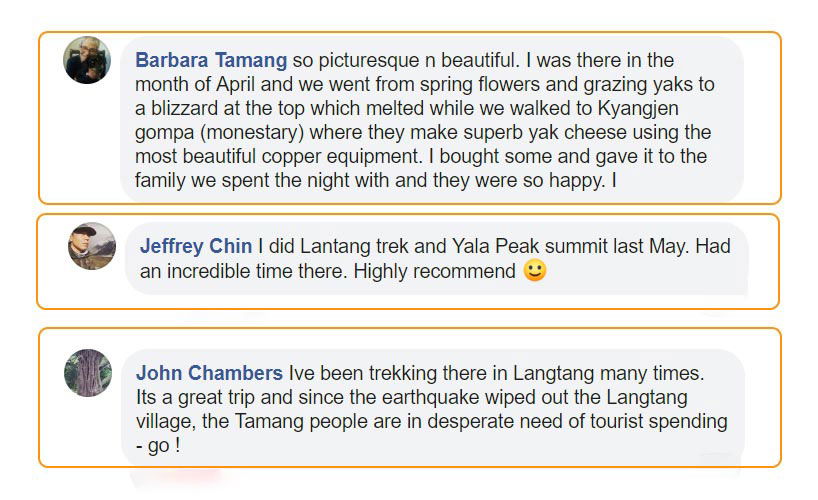
The popular international news website The New York Times has listed Langtang Valley as the top 52 places to visit in the year 2017. I have snapped some Langtang Valley trek reviews from New York Times Travel Facebook Page.
Getting To Langtang Valley
The trek begins from Kathmandu to Syabru Besi. The distance between the capital city and Syabrubesi is roughly 122 km. It takes around 9-10 hours by Public bus and 8-9 hours by Jeep.
It’s not recommended to trek from Kathmandu to Langtang Valley on foot as it’s a long distance and not a safe option. Instead, the trek usually starts from either Syabrubesi or Dhunche, which can be reached by road transport.
2) By Private Jeep
Hiring a private jeep for transportation to Syabrubesi or Dhunche is more expensive than taking a public vehicle. However, if you’re traveling to Nepal through a travel agency, they can arrange private transportation for you, so you don’t have to worry about it.
If you want faster and more comfortable service, you can opt for a private jeep instead of a public bus. A 6-7 seater private jeep service usually costs around $150-$200 for a one-way drive to Dhunche, the starting point of the trek to Langtang Valley.
3) By Public Bus
Taking a public bus is a much cheaper option compared to hiring a jeep for transportation to Syabrubesi or Dhunche. The cost of a public bus is around $7 – $8 per person. The bus service is available at Macha Pokhari, Kathmandu.
The road condition of Pasang Lhamo Highway, which leads to the Langtang Valley trek starting point, is generally okay, but there are some areas where the road can be a bit scary.
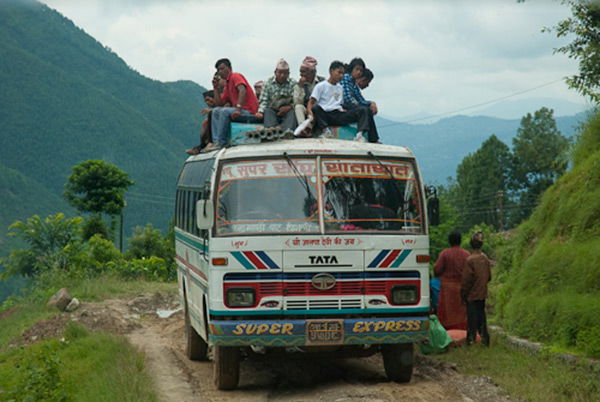
Start Here: Getting Around Nepal
Highlights of Langtang Valley Trek
- Scenic Drive from Kathmandu to Syabrubesi with breathtaking views of the landscapes.
- Explore the unspoiled beauty of Langtang National Park, located between the Nepal-China (Tibet) border.
- Learn more about Tibetan Buddhist culture and their way of life.
- Experience the extended diversity of flora and fauna, including rare species like the red panda and snow leopard.
- Enjoy stunning views of towering peaks like Dorje Lakpa (6,990 m), Langtang-II (7,227 m), Langtang Lirung (7,200 m), Ganesh Himal (7,429 m), and more.
- Immerse in the unique culture and lifestyle of the Tamang community by visiting typical Tamang villages.
- Get the chance to climb Chorko-Ri and witness a panoramic view of the Langtang range.
- Walk through an unimaginable Rhododendron forest, especially during the spring season when the flowers are in full bloom.
Langtang Necessary Permits
Permits are generally required for entry and exit from the Langtang Valley trekking route. Make sure to obtain the necessary permits from the Nepal Tourism Board (NTB) in Kathmandu. You will need to carry your passport and photos for the permit application process.
1) TIMS Card
Trekker’s Information Management System (TIMS) is a card that you get as a permit. These permits must be shown at checkpoints in different places.
The TIMS Card for Langtang Trek is a record that helps trekkers in case of an earthquake, or extreme weather, and for finding lost trekkers.
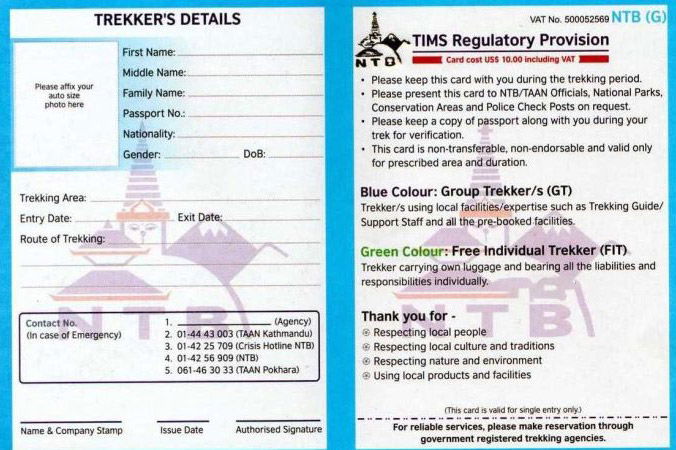
For independent trekkers, it cost around Rs. 2000 ($20), and for group trekkers with a guide, it cost around Rs. 1000 ($10). But if you are traveling through Travel Agency, then they will manage TIMS Cards for you.
2) Langtang National Park Fee
The entrance to Langtang National Park will cost you around Rs 3000 (~$30). You need to ask for this permit at Tourism Board Kathmandu, or you can get it from the Dhunche (Starting point of Langtang Valley Trekking)
Langtang Valley Trekking Itinerary
If you are searching for a good itinerary about Langtang, then this is a new itinerary route after the earthquake in 2015.
This is just an outline itinerary of Langtang. Find the days, hours, heights, and different places in Langtang Valley Trek Itinerary.
The level of the trek starts from easy, and furthermore, you get more challenges, and the journey will reach moderate difficulty as the height rises.
Normally, Pro trekkers want to finish the trek quickly, but novice trekkers need to acclimatize to the surrounding. So, it may take more than a week to complete the full trek.
Langtang Valley Food Guide
For meals, you can get different delicious items. As always you are far away from your home, therefore, don’t expect the food to be of your choice instead adjust with the items in the guesthouse.

1) Breakfast At Langtang Route, you can get tea, juice, toast, pancake, egg, potatoes, mo: mo, etc. for breakfast. The cost of breakfast at this route starts at $2-$3. Higher the elevation the price may increase up to $4-$5.
2) Lunch and Dinner For lunch and dinner, the best food to eat is “ Dal Bhat ” which provides you with lots of calories and proteins. There is a saying about it, “Dal Bhat Power 24 Hours”. You can also find several items beside it like salad, pickles, etc. The price for lunch and dinner is around $4-$5 and may go up at the top.
3) Water Water is yet another most essentials thing to consider while trekking around the Himalayan region. Most trekkers neglect this thing, but it is good to carry an extra bottle with you to avoid spending an additional amount. You can always refill a bottle of water at hotels for free or for a lesser amount.
If you want to buy a bottle of water, then it may cost you from $1.5 at a lower elevation to $3.5 at a higher elevation. And also, don’t forget to drink hot water at the stop to prevent Acute Mountain Sickness (AMS).
Accommodation
Langtang Valley is a much-loved destination, and you can find plenty of tea houses and hotels for accommodation. Don’t expect the guesthouse to be luxurious, but there will be enough clothes to keep you warm.

You can find a clean room, decent beds, and toilets, which will be kind enough to stay at teahouses. In peak season, you may have to adjust the beds and clothes. It is best to contact your travel agency to book excellent accommodation out there.
Langtang Circuit Trekking Route Map
You can find the Langtang Circuit Trekking Route Map that covers the whole valley and basically, the journey starts from Kathmandu. The highest point you will see is Langtang II and Langtang Lirung.
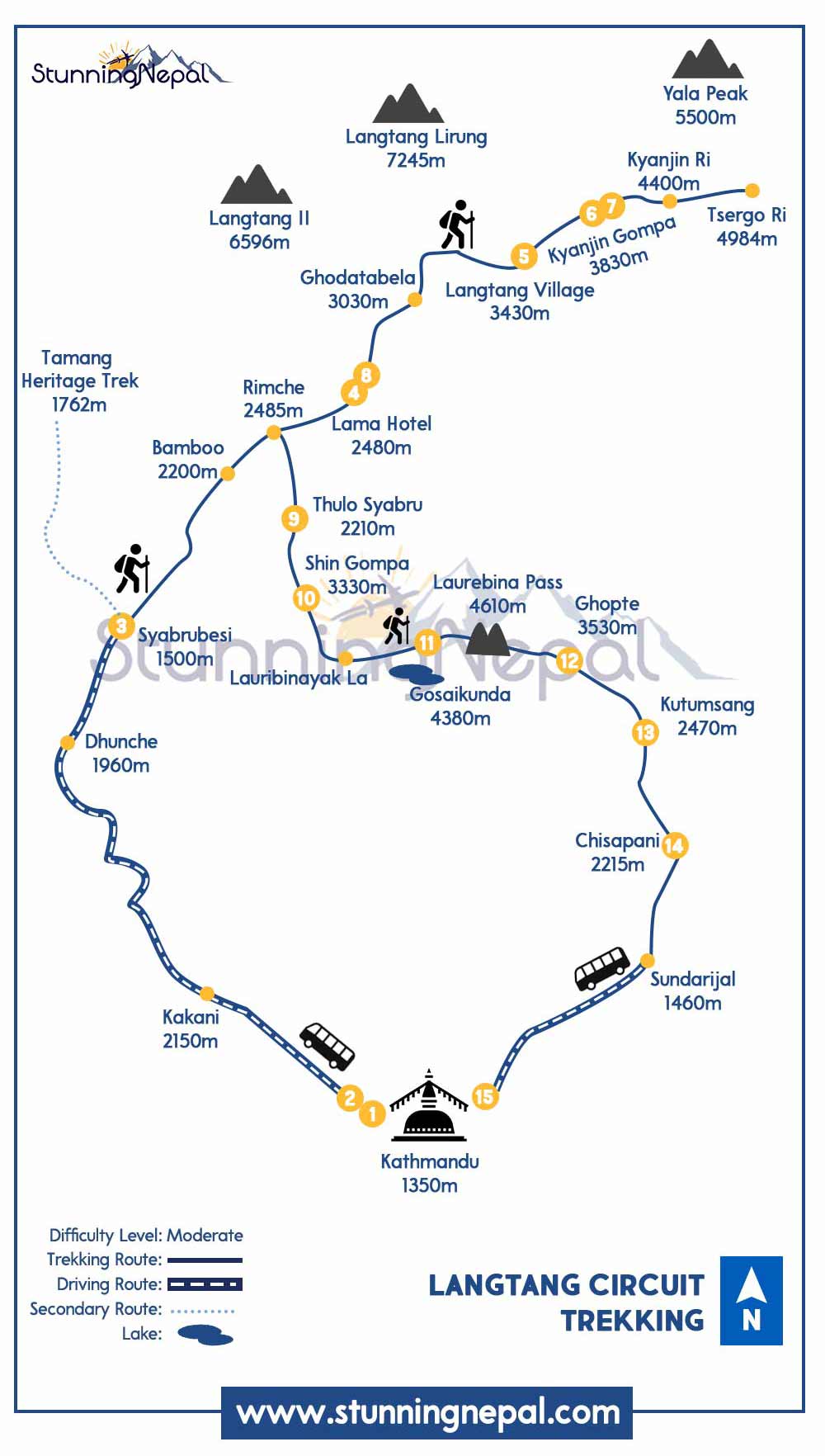
Langtang Trek Altitude Graph Map
There are various itineraries available for the Langtang Valley trek, and each may have a different altitude graph map. However, for the itinerary mentioned above, we will provide the altitude graph map accordingly.

Langtang Trekking Map
If you prefer a hardcopy trekking map of Langtang, you can easily find it in Kathmandu. Numerous shops sell different trekking route maps.
Maps are essential items that you need to carry while trekking. Additionally, you can find the Langtang Geographic map on Amazon.
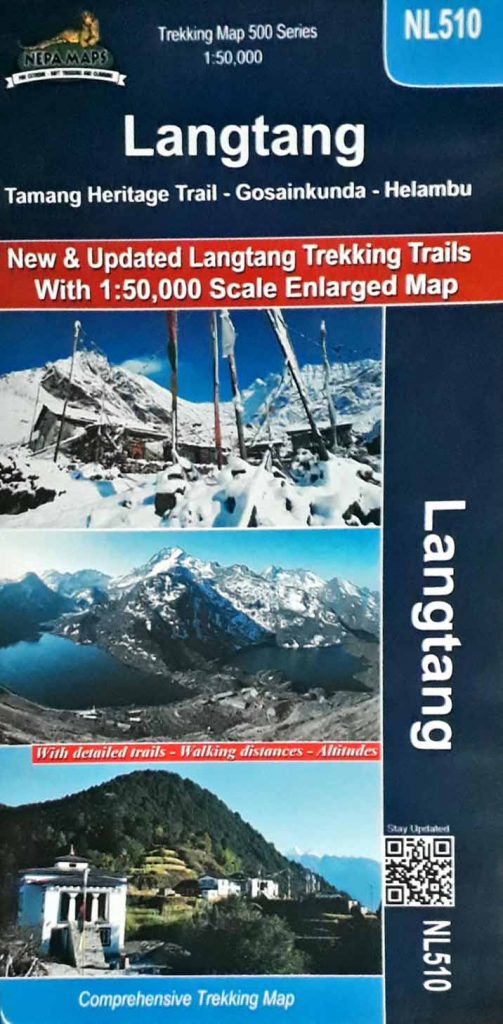
Famous Langtang Trekking Route
Apart from the Langtang Valley trek, there are other famous trekking routes in the Langtang region that you can explore while in Nepal. These include the Helambu Trek, the Gosaikunda Trek, and Tamang Heritage Trail. You can choose to trek to these places individually, or you can opt for a joint Helambu-Gosaikunda-Tamang Heritage trek.
1. Helambu Valley Trekking

Helambu region is a great and nearby place to visit from Kathmandu for a short trek . This place remains unspoiled despite being close to the Capital City. Helambu Trek is a glorious opportunity to explore the culture and tradition of the Sherpa community.
At peak season, you will get to see Rhododendron Forests, Snow-Capped Mountains, Waterfalls, Bamboo Forests, etc. The trek to Helambu starts from Sundarijal located at the eastern end of Kathmandu.
Helambu Trek Highlights
- Explore Buddhist Monastery.
- A glimpse of Snow-capped Mountains.
- Sunrise and Sunset over Mountains.
- Pass through dense rhododendron forest.
- Find unique Sherpa Culture and Lifestyle.
2. Langtang Gosaikunda Trek

Langtang Gosaikunda is an easy trek that is best for a picturesque view of the mountains and is famous for Gosaikunda Lake. Starting from Dhunche to Syabru Besi, Gosaikunda can be reached within 3-4 days.
This sacred lake is one of the holiest lakes famous among Hindus and Buddhists. Thousands of domestic and international travelers visit Gosaikunda Lake every year.
Gosaikunda Trek Highlights
- Beautiful Mountains Ranges.
- Gosaikunda Lake is one of the holiest lakes.
- Astonishing evergreen forests and landscapes.
- Flora and Fauna.
- Explore Lake like Nagkunda, Suryakunda, Saraswatikunda, and, Bhairabkunda.
3. Tamang Heritage Trail
Tamang Heritage Trail is an easily accessible trek from Kathmandu Valley. You will find beautiful Tamang village and tourism in this area has helped to uplift the lifestyle of the people.
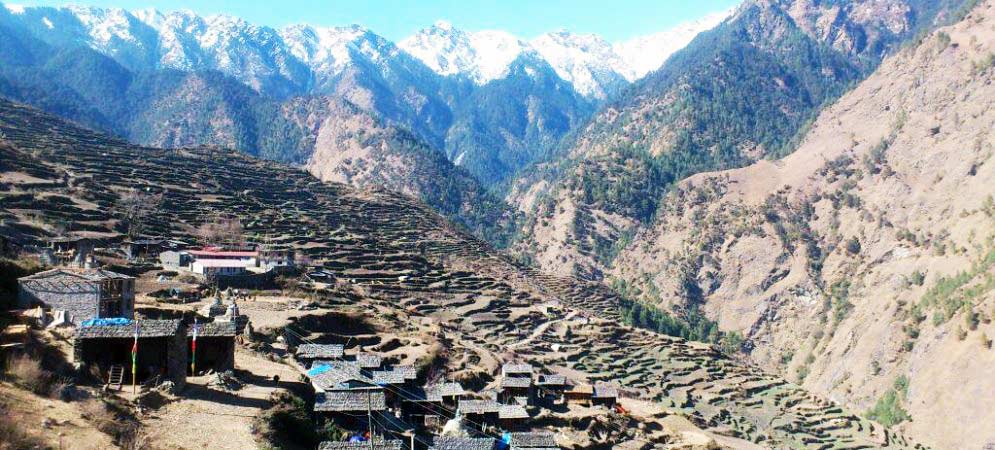
Tamang Heritage is a moderate-difficult trek, and after the earthquake, the route was closed. But now, the route is re-opened, and also hire a local guide to explore more about this heritage trail.
Tamang Heritage Trail Highlights
- Explore traditional houses.
- Culture and Lifestyle of Tamang and Sherpas Community.
- View the highest point Nagthali Pass (3,165 meters).
- View snow-capped mountains Ganesh Himal (7,429 meters), and Langtang Lirung (7,245 meters).
Trekking Gear
This is the most crucial section of this guide. Gears are vital aspects if you are going for short or long trekking. Sometimes backpacking is difficult if you are unfamiliar with the weather condition of a particular place.
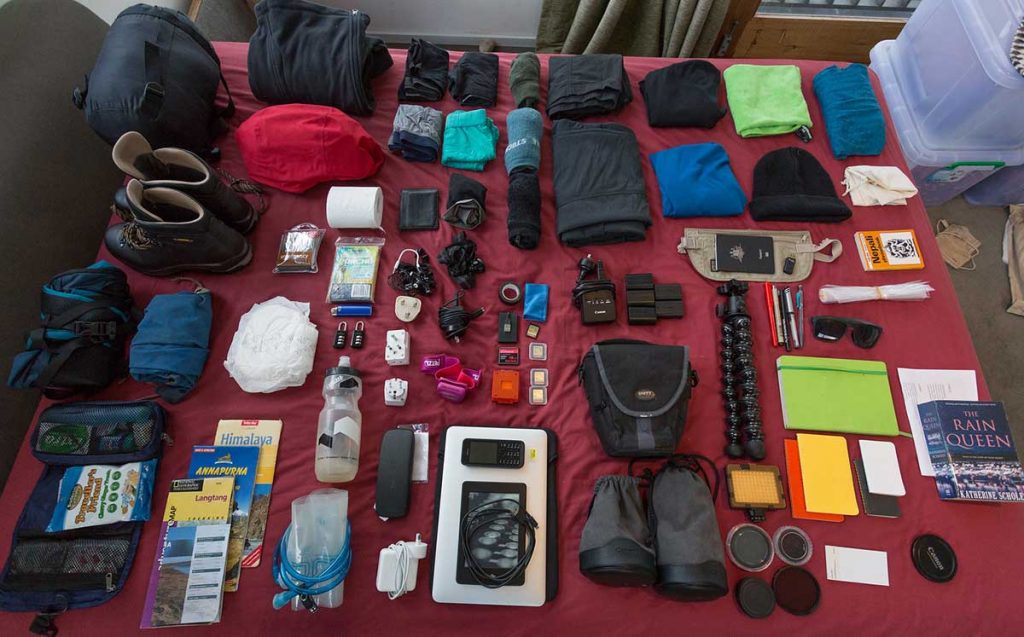
Actually, You don’t have to carry all the trekking gear from your hometown. You can find hundreds of trekking shops in Kathmandu. The shop generally sells or rents the gear items at a low price.
But bring the basic stuff like a hiking boot, Trekking Bag, etc. from your country. Trekking Shop in Kathmandu commonly rents gloves, jackets, Sleeping Bags, etc.
Hiring a Guide and a Porter
Most people love to go hiking or trekking with a guide and a porter. A porter helps to carry your goods so that it will be easier for longer hiking at a higher altitude. Generally, a guide helps to make you more comfortable in a newer place.

Make sure that your travel agency is registered with the Nepal Tourism Board (NTB) and Trekking Agencies Association of Nepal (TAAN). Besides that, you also need to make sure that your agency has a certified guide.
Langtang Trekking for Female Travelers

Nepal is safe for both male and female travelers. For female trekkers, you need to be extra careful while exploring different places.
Sometimes, it will be different situations as every country has its own culture, languages, and lifestyle. So always respect it and be sure you follow them.
Always be careful about the dress code while in Nepal. Also, don’t forget to hire a guide and never go outside alone in the evening time.
Additionally, if you feel uncomfortable with a male guide, then you can hire a female guide too in Nepal and also read our guide for Female Travelers .
Langtang Valley Trek Without Guide
It is always true that you need to hire a guide and porter to be safe while trekking the Langtang region.
Moreover, if you don’t have any prior experience with solo trekking, then this trek might be much more challenging.
Actually, Solo traveling means gaining more experience and knowing the place better. Although, It is best to hire a guide with a porter so that they can carry your luggage and make trekking much more fun.
But, if you are thinking of trekking Langtang without a guide, then be sure about everything, including routes, weather, hotels, and other things.
Then, it is good to explore the Langtang Trek independently starting from the capital city, Kathmandu.
Moreover, most travelers don’t know the Nepali language, but if you have a little bit of experience with it, then it will be much easier. Though, most of the people here at hotels can understand the standard English Language.
Langtang after Earthquake
In the year 2015, Nepal was hit by a devasting 7.8 Magnitude earthquake. Among various affected areas, Langtang was one of them, and her home and the lives of people were deeply affected.
The earthquake hit some parts of this trekking route and moreover, teahouses and guesthouses were destroyed. The avalanche buried the entire village. Therefore, the trekking route was closed for a long time.
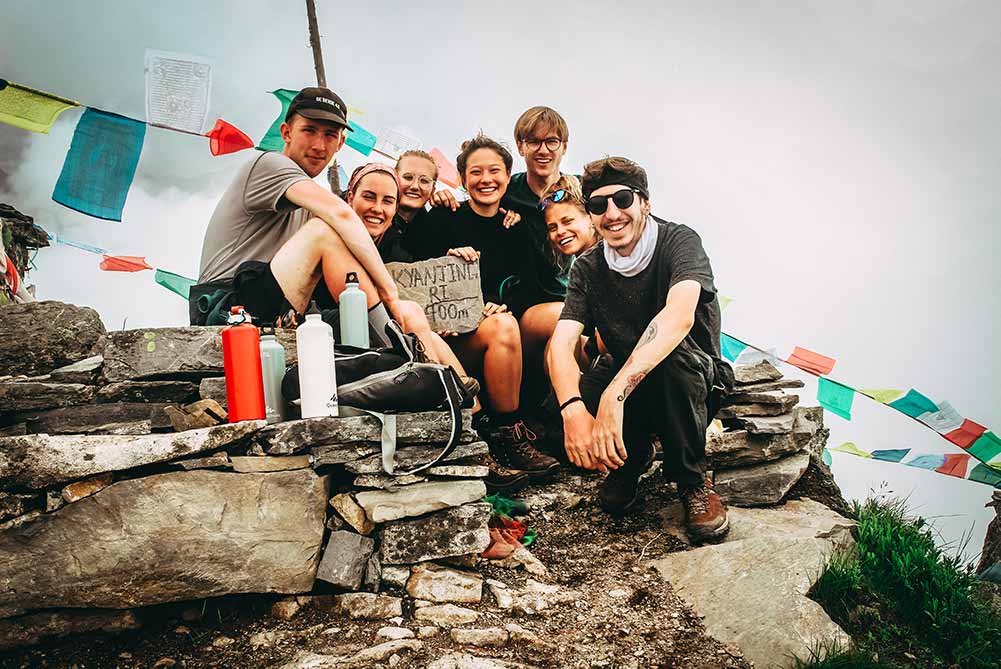
But, now the Nepal Government has reopened this route for trekking. Presently, the Lives of People at Langtang have recovered from the earthquake. The route is good, and you don’t have to worry about it. Also, you can contribute economically to revive the life of the local people.
Nepal Trekking Insurance
While traveling in any part of the world, insurance is a must because no one knows the future. It is essential to have insurance while trekking and traveling to Nepal. Most insurance is necessary when you are going hiking, trekking, climbing, or on an expedition.
Is it necessary to have trekking insurance while visiting Nepal?
Trekking insurance is one of the crucial things while traveling. Nepal is best for hiking and trekking as you can find various routes with easy to hard difficulty levels. So, if you are unfamiliar with hiking and trekking, then we advise going for insurance.
There are different types of insurance policies, and you can take benefits from them. So if you are a solo traveler, then you can go for personal insurance. Also, if you are a group of travelers, then you can also go in bulk too.
Langtang Valley Trek Cost for Nepali
If you want to know the price for the Langtang Valley trek then the cost of the trek ranges from Rs. 15,000 – 20,000. But the cost may vary depending upon the group size, food, and accommodation you take during the trek. Be sure to carry extra money, it will be helpful in case of emergencies and other stuff.
The duration of the trek is 5-7 days that starts from Kathmandu. It is best to manage a group of up to 10 people so that it can be comfortable going for the trek.
So, if you are your friends are looking for a unique trekking experience, be sure to put the Langtang Valley Trek at the top of your list!
Frequently Asked Questions
Which Nepal trek is best?
There are many attractive places in Nepal for trekking. Some of the popular trekking destinations are Everest Base Camp and Annapurna Base Camp . Besides, this Langtang Valley Trek is another popular trekking destination in Nepal. It is the magical and unspoiled trek of Nepal.
How long is Langtang Trek?
Normally, if you have less time, then you can go for 7 days trekking, but if you are searching for an extended version, then you can go for 20-22 days trekking.
Can you trek without a guide?
Basically yes, you can go Langtang trekking without a guide. As said by a local guide, the level of this route starts from Easy to Moderate. So, it is possible without any guide. But we recommend you hire a guide for safekeeping.
How safe is Langtang Trek?
After the devasting earthquake in 2015, the route was closed by Nepal Government, but now the route has been completely changed and re-opened for trekking moreover, it is much safer for trekking.
How much does it cost to trek to Langtang Valley?
It depends upon the trekking days and the travel agency itself. There are lots of factors behind the cost. The estimated cost for the Langtang Valley Trek is between $600-$1000.
How difficult is the Trek?
Trekking Levels are generally graded in 4 parts: Easy, Moderate, Difficult, and Strenuous. The Langtang Valley Trek is a moderate difficulty trek. Most trekkers can finish the Langtang route easily.
How many hours a day do I have to walk during the Trek?
The average walk time is around 5-6 hours a day. So, be prepared mentally and make yourself stronger physically to finish the Langtang Trek.
Do I need a permit for the Langtang Trek?
Yes, you need Trekker’s Information Management System (TIMS) card which must be issued by the Tourism Board. TIMS card must be presented at the entry point at Langtang Gateway.
Will I get altitude sickness on the trek to Langtang?
The range of this trek is moderate. So, there is a low chance of getting altitude sickness, but be sure to take precautions while advancing to a higher altitude.
Can I charge my phone and camera battery during Langtang Valley Trekking?
For electricity, solar panel powers the village, and you get an opportunity to charge your camera battery or cellphone, but you have to pay an extra charge of around $1-$3 per hour. But be sure to carry a portable power bank during the trek to charge up small devices like phones. Also, you can use a portable led USB light using a power bank that comes in handy during the journey.
Is there WiFi on Langtang Valley Trek?
There are WiFi services available in different guesthouses/teahouses. There is around 90% of the area where can use WiFi but you have to pay extra money to use it.
Can I use the ATM during Trek?
Usually, in Langtang Areas, it is difficult to find an ATM lounge. You can use an ATM and Credit Card in Capital City, Kathmandu. It is the best idea to take cash with you if you are exploring rural areas.
Can I hire a local guide during Trek?
Basically, the Travel Agency will arrange a local guide and porter for the whole trek to make your trekking fun and colorful.
We almost have mentioned all the details like the best time to visit, routes, itinerary, Price, Altitude Graph, Trekking Map, etc. So I hope you liked our ultimate guide to Langtang Valley Trek .
If you have a long holiday to spend in Nepal, then you can go for an extended Langtang tour but if you have short vacations then keeping the itineraries tight you can go for 7 days trekking.
If you have any questions/feedback regarding this trek, then please feel free to comment or contact us.
Love this post. Pin it for later
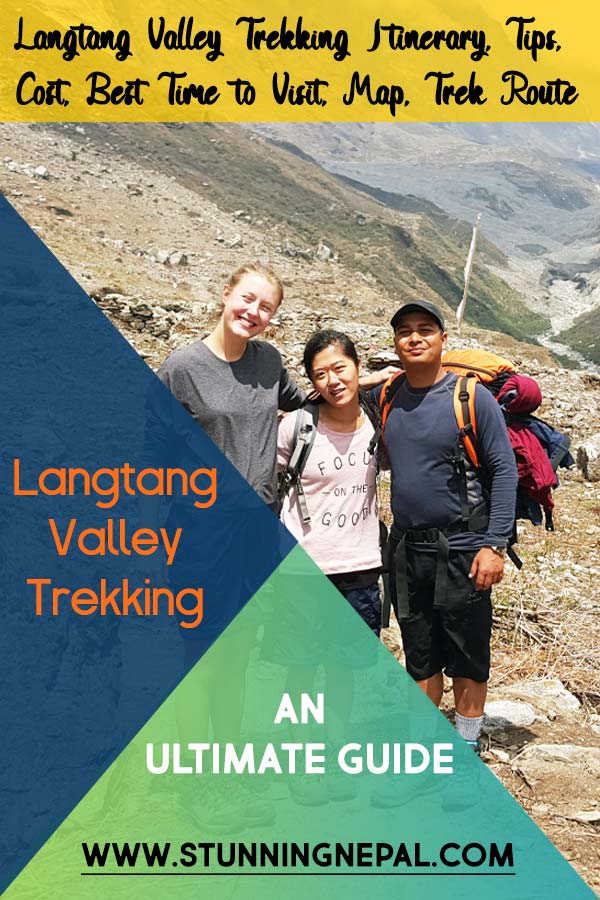
Suraj Katwal
Suraj is a travel enthusiast who believes in finding solace in the heart of nature. He enjoys exploring new destinations, different culture, and encouraging people to travel.
Travel Resources
Hotel & Flight
Searching for the best hotels & flight tickets to visit Nepal? Check out the best deals.
Related Articles...
5 Best One Week Treks in Nepal
Annapurna Base Camp Trek Cost for Nepali
Annapurna Base Camp Trek vs Everest Base Camp Trek
30 Interesting Facts About Mount Everest
Why is Annapurna so Deadly Mountain?
How to Find Travel Agency for Everest Base Camp Trek?
Annapurna Base Camp Trek Weather
Top 5 Family Trek in Nepal
1 thought on “Langtang Valley Trek – Best Time, Cost, Route, Itinerary”
Thanks for sharing very well-written and worth reading this article. Wish to see more in the coming days.
Leave a Comment Cancel reply
About stunning nepal.
Stunning Nepal is a travel blog that intends to provide travel tips, references & guides, things to do & also your guide for hiking & trekking in Nepal.
Travel Guide
Things To Do
Food and Festivals
Privacy Policy
Get in Touch
Stunning Nepal
Address: Dhanawantari Marg, Kathmandu 44600, Nepal
+977-9808211139
© 2024 Stunning Nepal. All Rights Reserved

Travel Guides & Tips
Langtang valley.
It lies inside the Langtang National Park of Nepal because of that you will need a Langtang National Park Permit before exploring the Langtang valley. Langtang valley is located in the Rasuwa district of Nepal, and you can take a drive from Kathmandu or Pokhara to reach the starting point of the trek Syabrubesi.
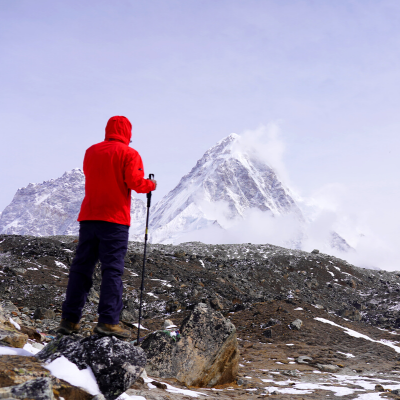
One of the fascinating places on earth, Langtang valley offers the marvellous views of the mountain ranges, ethnic culture of the Tamangs, Vintage monasteries and the jaw dropping views of the valleys and the remote villages. Some of the mountain ranges that can be seen during the Langtang valley trek include Langtang Lirung, Dorje Lakpa, Gangchempo and many more.
Similarly, you can also experience the warm hospitality of the Tamangs throughout the trek. Although being one of the most amazing places on earth, this trekking route is still overshadowed by other popular trekking routes of Nepal such as the Everest base camp trek and Annapurna base camp trek.
This Langtang valley trek blog will provide you all the information about the Langtang Valley Trek in Nepal. Stick to the end of the post to know about the information of accommodation, food, best time to visit Langtang valley, permits required and many more. Besides that you can also know about the other popular surroundings to explore near the Langtang valley of Nepal.
Table Of Content
Facts of langtang valley trek, would you like to book an activity or a trip with us.
Get in touch with our experts right away and finalize an experience!
Call Us Now
Where is langtang valley located.
Langtang valley lies in the Rasuwa district of Nepal. The starting point of the Langtang valley trek is Syabrubesi. Similarly, it is also the trek ending point of the Langtang valley trek of Nepal. Syabrubesi lies about 180 kilometres away from Kathmandu and about 15 kilometres away from district headquarters Dhunche. You can also start Langtang Valley Trek from Dhunche, but most of the trekkers choose to go from Syabrubesi.
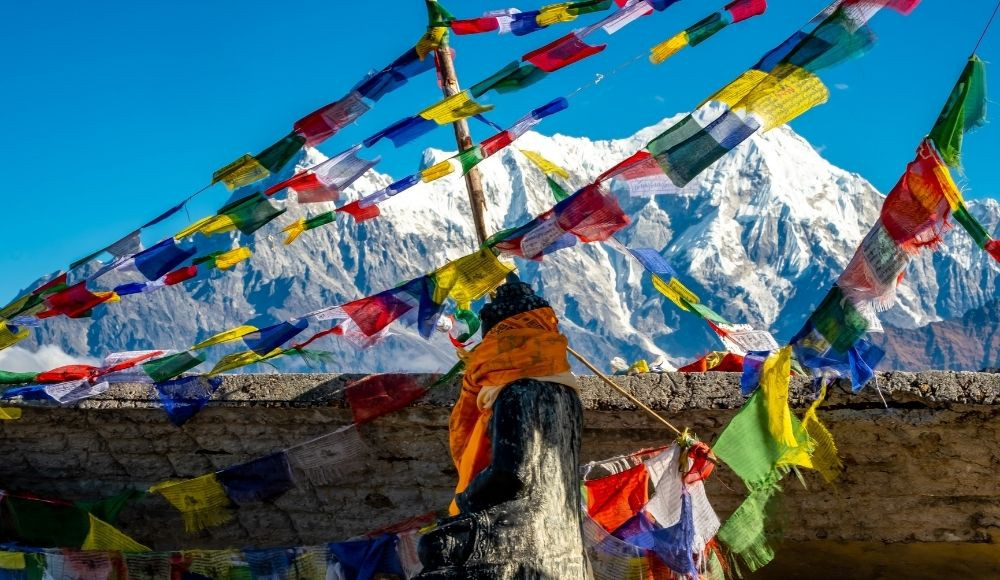
Langtang valley trek lies completely inside the Langtang national park. It is one of the popular national parks of Nepal to spot some of the rare species of flora and fauna. Similarly, you can also reach Syabrubesi after travelling about 240 kilometres. After that, you can walk through the rhododendron forest inside the Langtang National park to reach the Langtang valley.
Major Attractions of Langtang Valley
Being one of the nearest accessible areas from Kathmandu, Langtang National park is one of the hidden gems of Nepal. Besides the Langtang National park, there are various places you can explore during your visit to Langtang valley.
Langtang National Park
Langtang National Park is located about 30 km north of the Capital city of Nepal, Kathmandu. Besides that, it lies near the Tibetan border and extends in an east-west direction. Similarly, the northern border of the Langtang national park is of the Himalayas which is dominated by the Langtang Lirung. Langtang Lirung is also the highest peak of the Langtang national park that lies at an elevation of 7,250 meters above sea level.
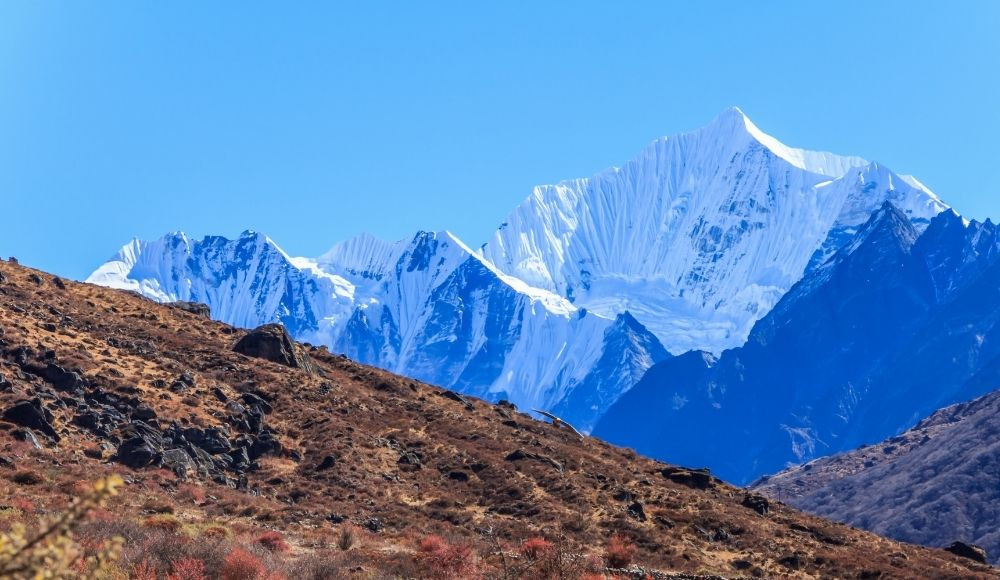
The southern border of the Langtang National park is of Chimse Danda. Meanwhile, Ganja La Pass is the highest pass of the Langtang National park that lies at an elevation of 5,122 meters above sea level. You can reach the Helambu Circuit trail after crossing the Ganja La pass. Langtang national park was established in 1976 and is mostly inhabited by the Taangs from the Helambu area. During your trek inside this national park you can witness some of the vintage monasteries.
Spread in 1,710 square kilometers, Langtang national park is popular for the Red Panda. It is one of the endangered species around the globe which is protected inside this national park of Nepal. Similarly Chirpine and Rhododendron are some of the common vegetation of Langtang national park.
Langtang Village
Langtang village is one of the popular overnight stay during the Langtang valley trek in Nepal. There are several villages inside the Langtang valley, but Langtang village was the largest. But the devastating earthquake of 2015 has destroyed the Langtang village completely. But as of now many teahouses and lodges are being constructed around the area.
Situated at an elevation of 3,400 meters above sea level, Langtang village lies near the base of Langtang Lirung mountain. Langtang Lirung is also the highest peak of the Langtang national park. Meanwhile, the altitude of Langtang Lirung is 7,227 meters above sea level. Besides that, marvellous views of the high mountain ranges can also be observed from the Langtang village.
Kyanjin Ri is the highest point of the Langtang valley trek. It sits at an elevation of 4,773 meters above sea level. Jaw dropping views of the Langtang valley, glaciers as well as the mountain ranges can be seen from the top of the peak. There are no lodges as well as the tea houses at the top of the peak. Because most of the trekkers marching towards the Kyanjin R stay overnight at the Kyanjin Gompa.
Early morning walk is required to witness the sunrise view from the Kyanjin Ri. Normally, the hikers wake up at 5 am in the morning and start walking towards the Kyanjin Ri to witness the marvellous sunrise view. The hike to Kyanjin ri from Kyanjin gompa will take about 2 to 4 hours depending on the hikers.
After reaching the top you can witness the Langtang Lirung on the northwest side. Similarly, you can also view the langtang glacier below the peak. On the right of the Langtang Lirung you can see the Changbu and Yubra mountains. Meanwhile, Yalla Peak can be seen on the northeast side. In the southwest part you can see the Tsergo Ri situated at an elevation of 4,984 meters above sea level.
Kyanjin Gompa
Kyanjin Gompa is one of the beautiful villages inside Langtang National Park. Situated at an elevation of 3,860 meters above sea level, Marvellous views of the mountain ranges such as Langtang Lirung, Changbu and Yubra can be seen from the village. Kyanjin Gompa is the most popular overnight stay place for the hikers travelling toward the Ganja La pass of the Kyanjin Ri.
There are plenty of local teahouses as well as the lodges around the Kyanjin Gompa. Besides that there is also a vintage monastery near the village. This old monastery is believed to be centuries old you can witness the tinbetian influence inside this monastery.
Langtang Himal and Glacier
Langtang Lirung is the highest peak inside the Langtang National Park. Situated at an elevation of 7,234 meters above sea level, it is the highest peak of the Langtang himal ranges. Langtang himal lies between the Sunkoshi river on the east, Trishuli Gandaki on the west and Langtang Khola on the west. Langtang Glacier is one of the longest glaciers of Nepal. Formed by the Langtang Lirung mountain it is also the longest glacier river of Nepal.
Four Easy Steps to Book a Trip or an Activity with Us
Select a trip or an activity that you want to experience.
Let us know the date you prefer and your contact details.
We will book that activity/trip for you and then you need to pay the activity/trip amount.
After your full payment you will receive a service voucher from our end and enjoy your trip.
Other Attractions of Langtang Region
Situated inside the Langtang National Park of Nepal, Langtang valley is one of the most popular places of the national park. Besides that there are also other popular places to visit during the Langtang valley of Nepal. Some of the popular treks you can do during the Langtang Valley Trek include the Gosainkund, Helambu and Ganja la pass trek.
Gosainkunda
Gosainkunda is one of the fresh alpine lakes situated at an elevation of 4,380 meters above sea level. It is also one of the most visited areas inside the Langtang National Park of Nepal. Situated in the Rasuwa district of Nepal, it occupies an area of 34 acres. It is one of the high altitude lakes of Nepal and remains frozen for almost six months. The Gosainkunda lake melts to form the Trishuli river, which is also one of the major rivers of Nepal.
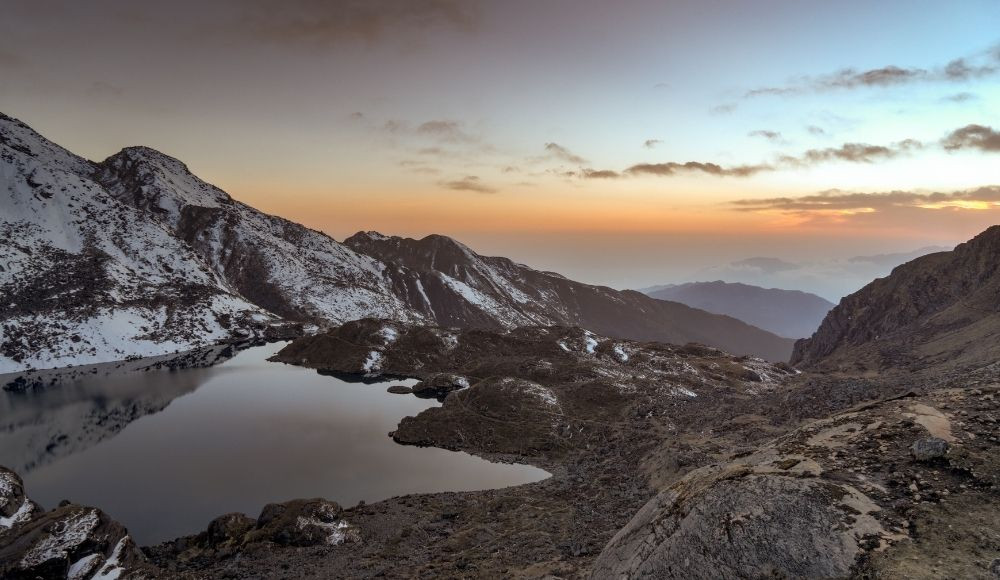
Gosainkunda Trek is one of the most popular treks in the region. Normally, hikers moving towards the Gosainkunda lake starts from the Dhunche village of Nepal. The 2 days of walk will take you to the Gosainkunda lake of Nepal. During the trek you will pass through some of the Tamang villages such as Chandanbari, Cholang Pati, Lauri Vinayak and many others. You can also combine the Langtang valley trek with the Gosainkunda trek. You can join the Gosainkunda trail from the Chandanbari village of the Langtang region.
Helambu is one of the hidden gems of Nepal. It is also one of the least explored trekking trails of Nepal. You can join the Helambu trek after crossing Ganja La Pass. Ganja La pass is one of the difficult high altitude passes situated at an elevation of 5,122 meters above sea level.
You will reach the Keldang village of the Helambu region after crossing the Ganja La pass. Further 2 days of trek will take you to the Tarke Ghyang village of Nepal. It is one of the most fascinating villages of the whole Helambu region. Similarly, you can also explore Ama Yangri peak from the Tarke Ghyang village. An extra day is required to hike to the top of the Ama YAngri and return back to Tarke Ghyang.
Ganja La Pass
Ganja La pass is one of the technical passes of Nepal. Situated at an high altitude marvellous views of the mountain ranges as well as the valleys can be seen from the top of the pass. Similarly, you will reach the Helambu region after crossing the Ganja La pass. There are no villages or the human settlement areas while crossing the Ganja La pass, Because of that camping is required to cross this high pass of Nepal that lies at an elevation of 5,130 meters above sea level.
Yala Peak is one of the popular trekking mountains inside the Langtang National Park of Nepal. Situated at an elevation of 5,500 meters above sea level, marvellous views of the mountain ranges can be seen. Similarly, jaw dropping views of the Shishapangma can also be seen. It is also one of the highest peaks of the world with an altitude of 8,013 meters above sea level. It lies in Tibet and is one of the lowest 8,000 peaks of the world. No technical climbing is required to climb this mountain. Because of that it is one of the ust visit places during the Langtang Valley Trek.
The hike to Tserko RI starts from the Kyanjin Gompa village which lies at an elevation of 3,800 meters above sea level. Situated at an elevation of 5,000 meters above sea level TSerko Ri is one of the must-visit places around the Langtang National Park of Nepal. 360 degree marvellous views of the mountain ranges can be seen from the top. There are no sources of water as well as the local teahouse and the lodges. Because of that, you will need to carry plenty of water as well as food while hiking towards the Tserko Ri. About 4 hours or walk from Kyanjin Gompa will take you to Tserko Ri.
How to Reach Langtang Valley From Kathmandu?
Langtang Valley is one of the popular trekking destinations near Kathmandu valley. Situated at an elevation of 3,430 meters above sea level. Langtang village is one of the most popular villages of the Langtang Valley Trek. Langtang valley lies in the Rasuwa district of Nepal. You can take a ride to Syabrubesi, through the district headquarters of Dhunche. There are two ways to reach Syabrubesi by drive. The first one is through the Kakani and the next one is through the Gulchi.
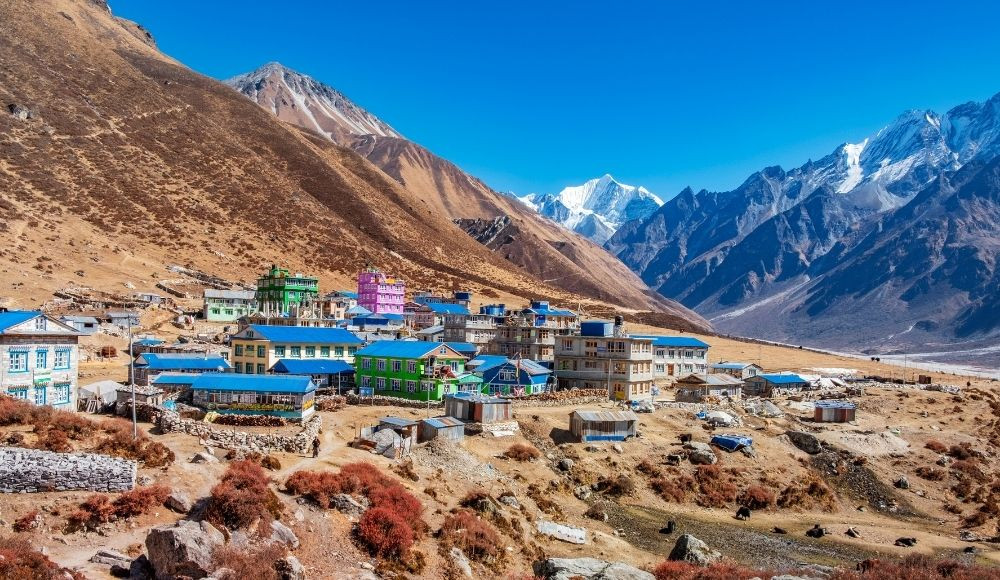
The road to Syabrubesi is an off road ride and takes about 6-8 hours to reach from Kathmandu. Similarly, the distance from Kathmandu to Syabrubesi is about 180 kilometres. If you are travelling from Pokhara then you can take a ride to Galchhi through the Prithivi Highway and then move towards the Betrawati highway. Mesmerizing views of the mountain ranges can be seen during your drive to Dhunche and Syabrubesi.
Syabrubesi is the trek starting as well as the ending point for Langtang Valley Trek. Following the upstream of Langtang river, you will reach the Lama hotel for an overnight stay. Walking through the dense forest you will reach Ghoda Tabela and a further walking will take you to Langtang village for an overnight stay. You can also explore the Kyanjin Gompa after a day of walking from Langtang village. Besides that, you can also reach Kyanjin Ri from Kyanjin Gompa.
Langtang Valley Trek Highlights
- One of the shortest treks of Nepal
- An ideal trek for the beginners
- Experience the warm hospitality of the Tamangs
- Jaw-dropping views of the mountain ranges
- Beautiful landscape and the glaciers
- Kathmandu sightseeing
Langtang Valley Trek Itinerary Outline
Detailed itinerary of langtang valley trek.
Langtang Valley Trek 11 days is one of the nearest treks from Kathmandu valley. Although situated near the capital city of Nepal, Langtang valley gets few tourists compared to Annapurna Circuit and the Everest Base Camp Trek. Although being less developed, it is gradually gaining a lot of popularity in recent years. The jaw dropping views of the mountain ranges, the beautiful landscape, the marvellous glaciers and the hospitality of the locals are also the main reasons that attract a lot of hikers in recent years.
01 Day: Kathmandu Arrival, Transfer to Hotel
Do let us know your flight time before arriving in Nepal. After the custom you can exit the arrival gate of the Kathmandu International Airport. Our office representative will be waiting for you holding your name card. You will drive to your hotel and have refreshment time. We will meet for an evening coffee and will explain to you in detail about your Langtang Valley Trek.
Elevation: 1,350 meters
Overnight stay at 2 star hotel
02 Day: Kathmandu Sightseeing and Trek Preparation Day
Kathmandu sightseeing is one of the amazing days in Nepal. Kathmandu valley is a home of 7 UNESCO world heritage sites. During this day you will explore Swayambhunath, Pashupatinath, Boudhanath and Kathmandu Durbar Square. Similarly, this day can also be used as your trek preparation day for your Langtang valley trek.
03 Day: Drive to Syabrubesi
Syabrubesi is the trek starting as well as the ending point for the Langtang Valley Trek. It lies at an elevation of 1,500 meters above sea level. The drive to Syabrubesi will take about 8 hours where you will travel around 180 kilometers. Before reaching Dhunche you will have to pass through the checking point of the Nepal Army. Marvellous views of the mountain ranges can be seen during the drive to Syabrubesi. There are few hotels as well as basic shops in Syabrubesi.
Distance: 180 kilometers
Duration: 6-8 hours
Elevation: 1,500meters
04 Day: Trek to Lama Hotel
The first day of the trek is mostly an uphill walk. After crossing a suspension bridge you can witness marvellous views of the snow capped mountains. Following the upstream of the river you will reach Bamboo for lunch. After a few uphill walks through the dense forest you will reach Lama hotel for the overnight stay. Lama hotel is one of the popular overnight stay locations for the trekkers moving towards the Kyanjin Gompa.
Distance: 10 kilometers
Elevation: 2,480 meters
Overnight stay at local tea house or lodge
05 Day: Trek to Langtang Village
Wake up early and start your trek after breakfast. The trail today is also an uphill walk where you will pass through a few tamang villages. As you start climbing you will notice less forest coverage. Marvellous views of the Langtang Lirung can be seen during the trek. Besides that, you will also pass through the prayer flags, chortens and mani walls areas before reaching Langtang Village for the overnight stay.
Distance: 9 kilometers
Duration: 6.5-7 hours
Elevationa: 3,430 meters
Overnight stay at the local tea house or lodge
06 Day: Trek to Kyanjin Gompa
Today is one of the most amazing days of the trak as you will reach the Kyanjing Gompa for the overnight stay. It is one of the popular villages of Langtang valley that lies at an elevation of 3,830 meters above sea level. After reaching the hydropower station you will cross the suspension bridge from where marvellous views of the mountain ranges as well as the glacier can be seen. Further 10 minutes of walking will take you to Kyanjin Gompa for the overnight stay.
Distance: 7 kilometers
Duration: 4-6 hours
Elevation: 3,830 meters
07 Day: Reach Kyanjin Ri, Hike back to Kyanjin Gompa
Wake up early to view the morning sunrise from Kyanjin Ri that sits at an elevation of 4,770 meters above sea level. Upon reaching the top of the view point, you can witness some jaw dropping views of the mountain ranges. After capturing the moments and collecting memories you will hike down to Kyanjin Gompa. You can also explore the Kyanjin Gompa upon reaching the village.
Distance: 4 kilometers
Elevation: 4,770 meters
08 Day: Trek to Lama Hotel
After exploring the Langtang valley of Nepal you will move towards the Lama hotel. You will hike back the same route to reach the Lama hotel for the overnight stay. The trail today is a complete downhill walk and you can also witness some of the marvellous views of the snow capped mountains that can be seen during the trek.
Distance: 16 kilometers
09 Day: Trek to Syabrubesi
Today is the last day of the trek. You can still witness views of the mountain ranges during the trek. You will walk through the same trail and reach Bamboo and then to Syabrubesi for the overnight stay.
Duration: 4-5 hours
Elevation: 1,500 meters
Overnight stay at local lodge
10 Day: Drive to Kathmandu
After the morning breakfast, you will again take a ride to Kathmandu. You will follow the same route to reach the Kathmandu valley. Upon arrival at Kathmandu, you will check in at a 2 star hotel. In the evening we will meet and have a farewell Nepali dinner together.
Elevation: 1,350meters
11 Day: Departure
Do check your flight time. After the morning breakfast you will have free time. 3 hours before your flight our office representative will take you to the Tribhuvan International Airport.
Permits required for Langtang Valley Trek
Langtang Valley lies inside the Langtang National Park of Nepal. Because of that you will need a Langtang National Park Permit to trek inside the national park. Besides that, Trekker’s Information Management System Card (TIMS) is mandatory for almost all the treks inside Nepal. The cost of the National PArk permit as well as the TIMS card is mentioned below:
Langtang Valley Trek Cost
Langtang Valley Trek is one of the shortest as well as the cheapest treks of Nepal. The cost of the Langtang Valley Trek completely depends upon the total number of the pax. The cost includes all the fees of the basic requirements. Besides that you will also get an experienced trekking guide as well as the potter throughout the trek.
Trek Cost Includes
- All arrival and departure at Kathmandu airport as mentioned.
- Private transfer (Kathmandu/Syabrubesi/Kathmandu) as mentioned in the itinerary.
- 2-star hotel accommodation in Kathmandu as per the trek itinerary.
- Daily breakfast throughout the trip.
- Lunch and Dinner from trek start day to trek end day.
- All necessary paperwork. (National Park Entry Permits and TIMS Card)
- English speaking licensed trek guide.
- Porter during the trek. (Can carry 20KG Baggage of 2 people)
- Lodge or Tea house accommodation during the trek.
- One local SIM card (returnable) during your stay.
- All government and local taxes.
- Guide and Porter’s salary, food and accommodation during the trek.
- Arrangement of emergency helicopter service which will be paid by your traveller’s insurance company.
- Sleeping bag, duffle bags and trekking route maps – if necessary.
- Farewell Nepali dinner on your last night.
Trek Cost Excludes
- Personal expenses.
- Kathmandu sightseeing entrance fee.
- Lunch and dinner in Kathmandu.
- Nepal visa cost. (You will require 2 passport size photos and 30 USD)
- International flight ticket.
- Travel health insurance. (Recommended)
- Tips for the guide, porter and driver.
- Sweet things like dessert/chocolate.
- All alcoholic and non-alcoholic drinks.
How to Book Langtang Valley Trek With Us?
We could be the easiest way to book your Langtang Valley trekking package. Our travel expert will guide you through every detail while booking your trip with us.
Difficulty Level of Langtang Valley Trek
Langtang Valley Trek lies inside the Langtang National Park of Nepal. Situated at such a near distance from Kathmandu, it is one of the idle treks of Nepal. No previous hiking experience is required to go on a trek for Langtang valley. However, most parts of the Langtang Valley trek lies above 3,000 meters. Because of that, there is a high chance of altitude sickness.
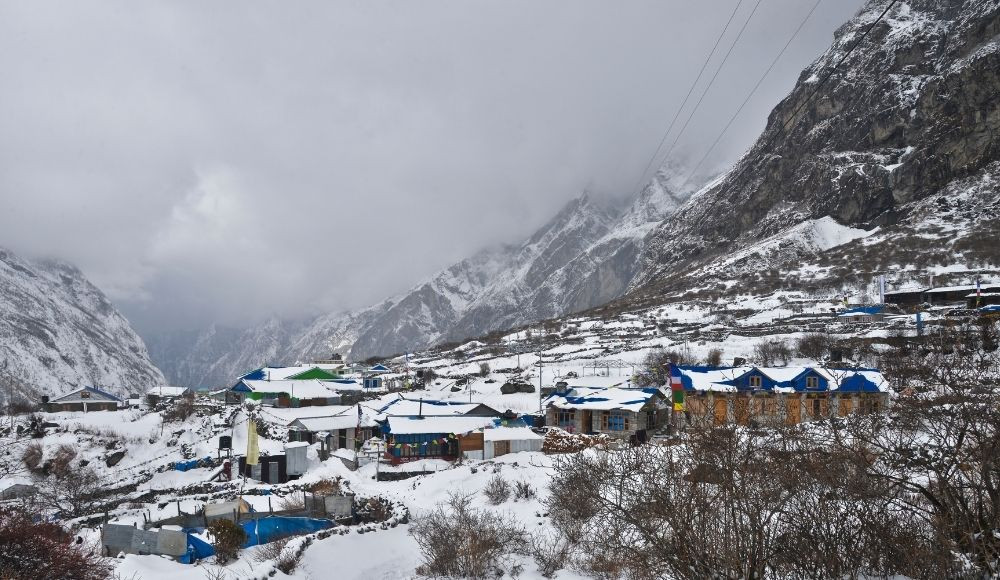
The difficulty level of Langtang valley of Nepal is moderate to strenuous. However, hikers must do some exercise a few weeks before the trek. There are plenty of Local teahouses and lodges around the Langtang valley of Nepal. But the facilities provided here are very basic. Meanwhile, you will have to stay overnight at the tented accommodation during your trek to Ganja La pass.
Related Blogs: How Difficult is Langtang Valley Trek
Best Time For Langtang Valley Trek
Langtang valley can be visited almost throughout the year with appropriate trekking gears. But the months of December and January are not so favourable as the chances of snowfall is very high during these months of the year. The temperature is cold in February too but with appropriate trekking gears you can go on a trek for Langtang Valley Trek.
The best time for the Langtang valley trek is during the months of March, April and May. During these months of the year, the weather is clear and the chances of snowfall is also very low. The days are warm but the nights and mornings are chilly during these months of the year. Due to the high visibility marvellous views of the mountain ranges and the valleys can be seen during these months of the year.
March, April and May is another best time to visit Langtang valley. The chances of rainfall is very low during these months of the year. You can witness various waterfalls during these months of the year. Besides that, the blooming rhododendron flower during the March month of the year makes the trekking pleasant in the lower region.
Langtang Village Earthquake
Langtang village used to be one of the popular tourist destinations during the Langtang valley trek. But the earthquake that hit at 11:56 am on 25 April 2015, saturday changed it all. When this 7.8 magnitude earthquake shook Nepal, a vast landslide fell off the Langtang Lirung. It is estimated that about 40 million tons of rock and ice fell down to the Langtang village. This avalanche was so powerful that the air pressure flattened all the trees for many kilometers downstream.
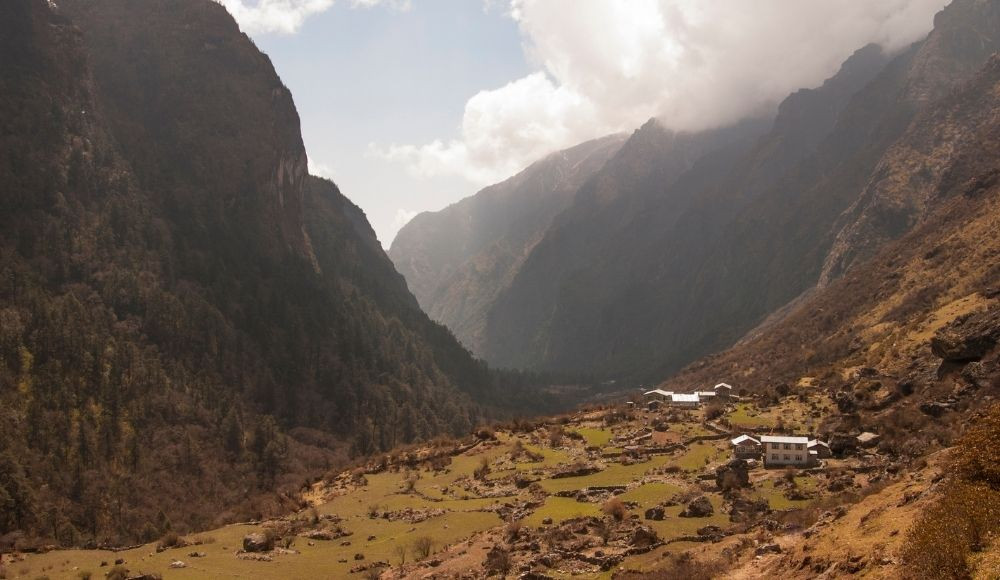
This avalanche caused by the earthquake took 243 lives in Langtang village. Among them 175 were the villagers, 27 of them were local tourism staff and 41 foreign trekkers. The names of all those who lost their lives are recorded on a memorial main wall that has been built among the wreckage. There is still evidence of this tragedy almost everywhere. The trails were destroyed, infrastructure was devastated and many people were trapped for days.
Langtang valley after Earthquake
Langtang valley is developing rapidly after the earthquake in recent years. A new village is being built 100 meters above the ruins of the old Langtang village. The new Langtang village is close to the steeps, but they are less likely to carry snow. Because of that, there is a very little avalanche in this area.
Trekking Trails inside Langtang Region
Langtang region is one of the nearest hidden gems from Kathmandu. Situated about 180 kilometers drive from Kathmandu, Syabrubesi is the starting point of the major treks inside the Langtang region. However, you can also start the trek to Langtang region from Dhunche, which is also the headquarters of Rasuwa district of Nepal. Besides the Langtang valley trek, there are also other treks inside the Langtang region.
Langtang Valley and Ganjala Pass Trek
Langtang valley Ganja la pass is one of the most popular treks inside the Langtang region of Nepal. During this 15 days of trek package you can explore some of the UNESCO world heritage sites inside the Kathmandu valley. Similarly, you will also explore Kyanjin Gompa, Tserko Ri and Ganja La Pass before reaching the Helambu region.
After crossing the Ganja La Pass situated at an elevation of 4,300 meters above sea level, you will reach the Helambu region. Similarly, during the rest day at Tarke Ghyang, you will also get to explore the Ama Yangri peak situated at an elevation of 3,771 meters above sea level. Ama Yangri is one of the hidden gems of Helambu from where you can witness some of the high mountains including Mount Everest.
Langtang Valley and Gosainkunda Trek
Starting from the Syabrubesi, the Langtang Valley Gosainkunda Trek ends at Dhunche. During the forest week of the trek you will explore the Langtang Valley. Where you will get to explore some of the popular places such as Langtang village, Kyanjin Gompa and Kyanjin Ri.
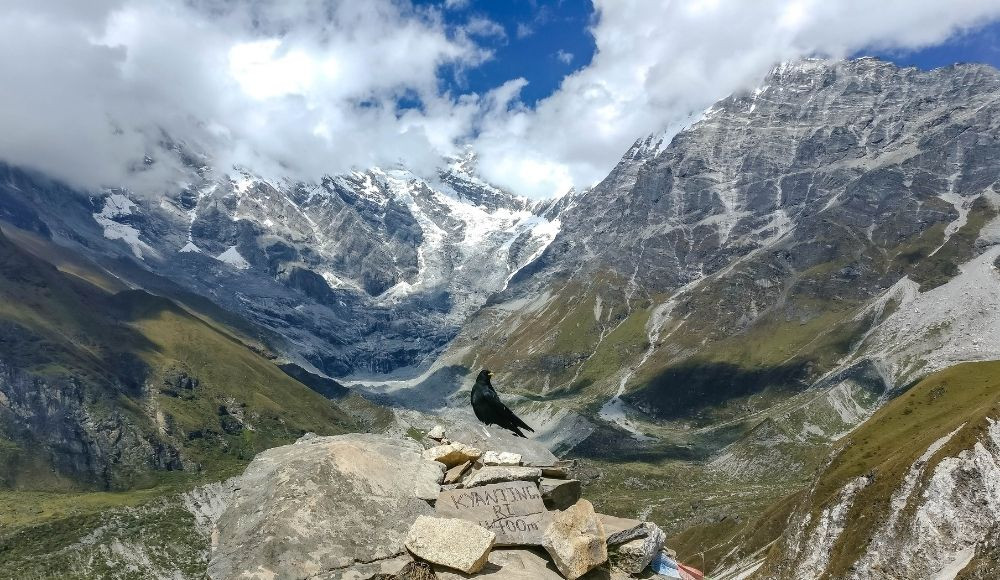
After exploring the Kyanjin Ri you will hike back to Kyanjin Ri. You will follow the same route until Thulo Syabru through Lama village of Langtang village. You can reach the Sing Gompa also known by the name Chandanbari to meet the Gosainkunda trail. About 6 hours of walking from Sing Gompa will take you to the Gosainkunda lake. From there you will follow the same route until Sing Gompa and further walk downhill through Dimsa village to reach Dhunche.
Langtang Gosainkunda Helambu Trek
Langtang Gosainkunda Helambu trek is one of the ideal treks to explore all the major places of the Langtang as well as the Helambu region of Nepal. This trek is comparatively longer than other treks of the Langtang region. Starting from the Syabrubesi, this trek ends at Sundarijal.
After sightseeing some of the UNESCO world heritage sites inside Kathmandu valley. You will take a drive to Syabrubesi which lies about 180 kilometres away from Kathmandu. You will explore Kyanjin Gompa and Kyanjin Ri with other Tamang villages before moving toward the Gosainkunda. 4 days of the trek from the Kyanjin Gompa will take you to the Gosainkunda lake. From there you will move towards the Chisapani village and then to Sundarijal where the trek ends.
Trekking Tips and Packing List Suggestions
Trekking in Nepal is easier than you expect. But you will need proper information, a guide and the trekking gear to complete the trek easily. Here are a few tips for the hikers travelling to Nepal.
- Ask the locals or any people before capturing their picture.
- Alway great with Namaste when you meet someone.
- Always carry plenty of water with you throughout your visit to Nepal.
- Take out your shoes or slippers before entering any temples or monuments.
- Always take a local guide before hiking any parts of Nepal.
- Carry your trek permits and national park permits.
- Drink plenty of water to avoid altitude sickness.
Packing List Suggestions
There are three different climatic zones inside Nepal. The terai belt is very hot during the Summer, The hilly is moderate and the himalayas are chilly during the summer too. Mainly Autumn and Spring are the best times to visit Nepal. During the Spring season of the year the climate is hot and the cold during the Autumn season of the year.
Most of the trekking trails of Nepal lie in the Himalayan belt of Nepal. Because of that the trekking reason is mostly cold. You will need to pack appropriate trekking gear as well as equipment before trekking in Nepal. Click Here to know the list of trekking gears that you need while trekking in Nepal.
Trek Routes of Langtang Valley
Frequently asked questions.
- Do I need to take tented camps? There are plenty of local teahouses and lodges around the Langtang valley. Because of that you don't need a tented camp while trekking in the Langtang valley of Nepal. However, if you are planning to cross the Ganja La Pass then you will need to stay a few nights in the tented camps.
- How can I communicate while on the trek? There are few of the networks that work fine in the lower region of the trek. Mainly, Nepal Telecom and Ncell are the most popular networks of Nepal. But they may not work in the higher regions. Besides that , you will lose signal frequently after entering the forest area of the Langtang National Park.
- Do I get the Internet Facility? Yes, you can get the internet in various parts of the trek. You can also choose to use the mobile data but they may be slower in the trekking region. You can also get the wifi facility in various parts of the trek but you will need to pay extra for the wifi.
- Can we customize the Langtang Valley Trek? Yes sure, you can customize any treks of Nepal with us. Do send us the types of trek you want and your total day in Nepal. We will make a customized trekking package specially designed for you.
- What is the highest elevation of the Langtang valley trek? The highest point of the Langtang valley trek is Kyanjin Ri situated at an elevation of 4,770 meters above sea level.
- Do we need travel insurance? Yes, you will need travel insurance for any trek or trips in Nepal. As the travel insurance covers all rescue and evacuation expanses if needed.
- What is the physical fitness required for the Langtang valley trek? Langtang valley trek is a moderate to strenuous trek of Nepal. Because of that the hikers must be moderate fit to complete the trek successfully. Besides that you will also need to do some physical exercise such as running, walking and swimming a few weeks before the trek.
- Is there any risk of getting altitude sickness? Langtang valley lies 3,000 meters above sea level. Because of that there is a high chance of getting altitude sickness if you are not prepared well before the trek.
- What is the age limit for the Langtang valley trek? There is no age limit for the Langtang valley trek in Nepal. But normally, the hikers must be above 5 to go on any trek in Nepal.
- How early should I book the trip? It is recommended to book at least three months before your trek. But in short you can reserve within a week. Few days are required to get your trekking permits so you need to book in advance to get the permit on time. Similarly, we also need to check the availability of the hotels or the lodges during the trek so it is better to book in advance.
BLOGS & TRAVEL STORIES
our first-hand Himalayan travel experience
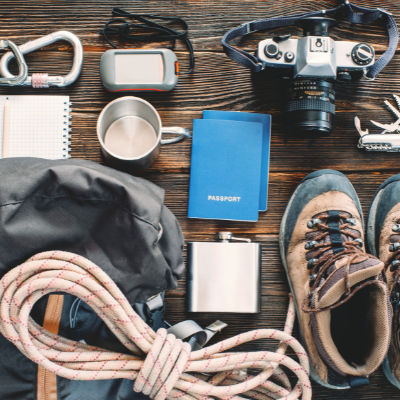
Culture and Festivals
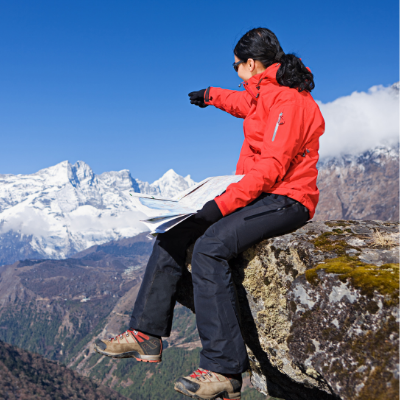
Travel Stories
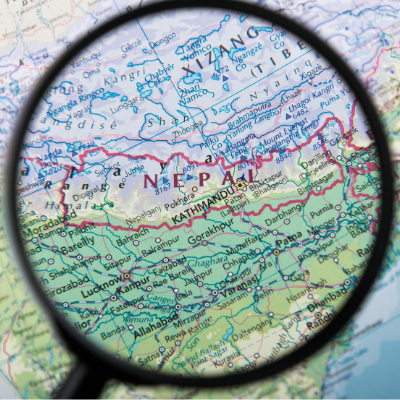
Latest Travel News
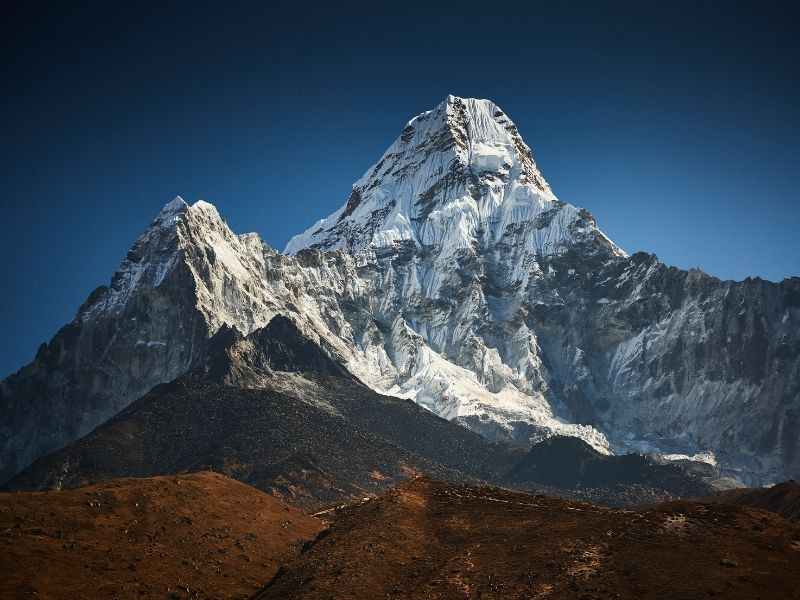
Mount Everest Region
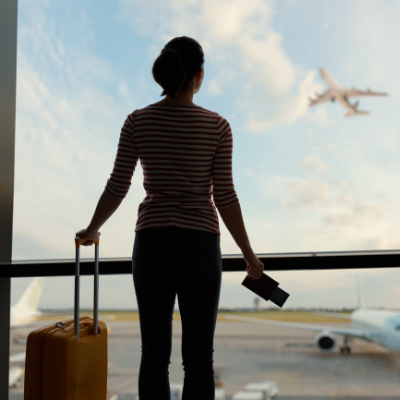
World Heritage Sites
Cookies & privacy policy.
This website uses cookies to improve your experience. Learn More
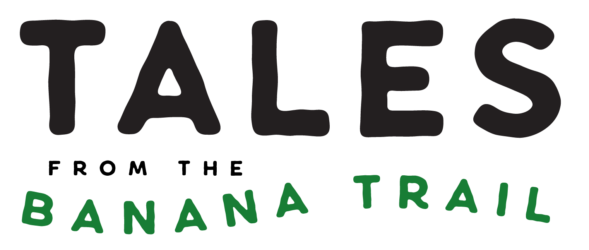
Langtang Trek | What You Need to Know to Hike Langtang Valley
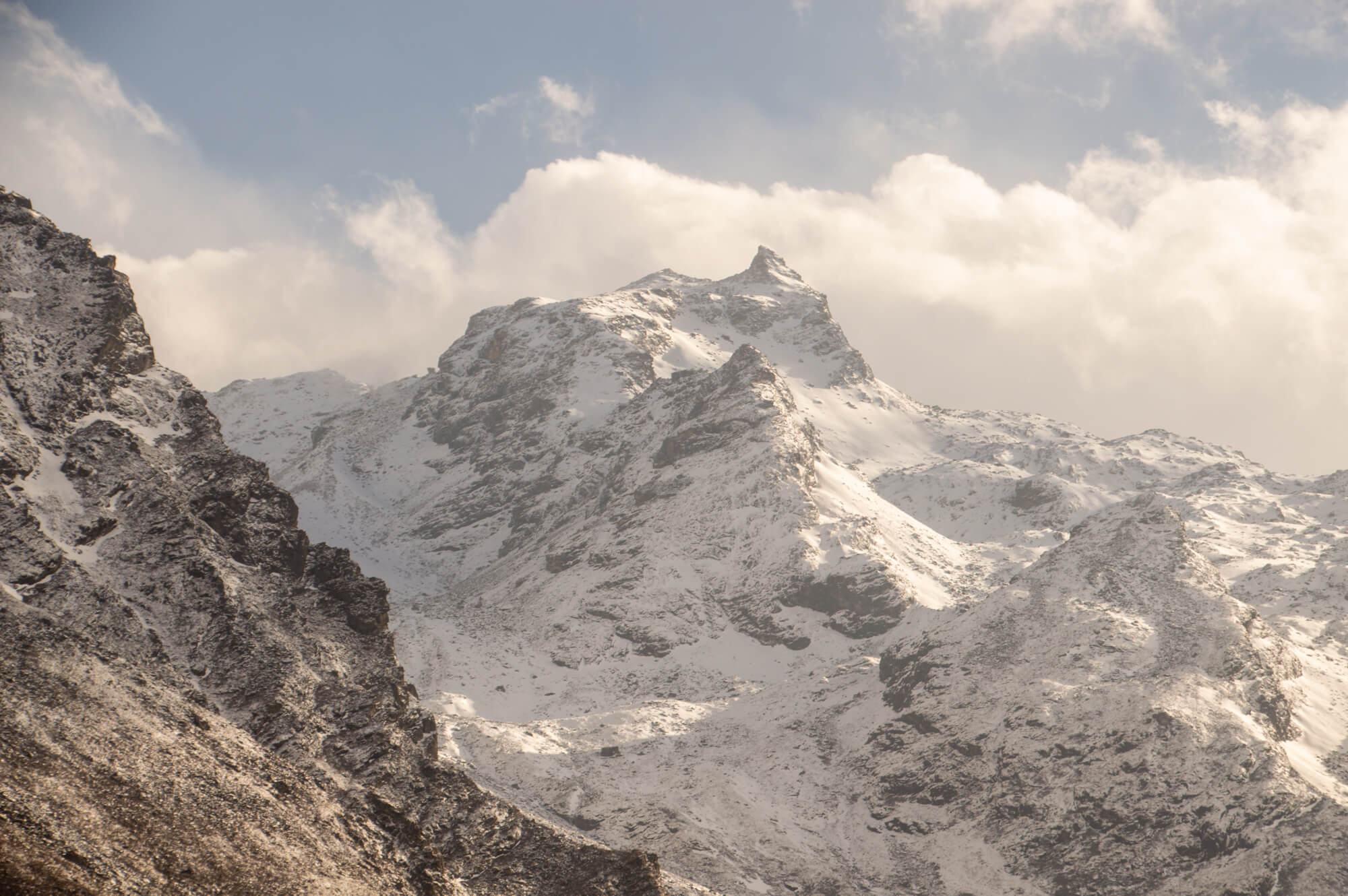
Home / Plan Your Adventure / Langtang Trek | What You Need to Know to Hike Langtang Valley
Nepal’s Langtang Valley trek is one of our favourite forgotten jewels of the trekking world. With jaw-dropping mountain peaks, bright rhododendron, tiny villages, Buddhist monasteries, and welcoming locals, the Langtang is sure to solidify your love for Nepal. The earthquake that rocked the country in 2015 devastated the Langtang valley. But the area has now reopened to trekkers and choosing to trek here is an excellent way to help Langtang’s resilient earthquake survivors rebuild their livelihoods.

When is the best time to hike the Langtang Valley Trek?
The best time to trek the Langtang is September to December or March to May . Clear skies and perfect hiking temperatures create the ideal conditions for trekkers.
How much time does it take to hike Langtang Valley?
The hike is typically completed in 6-10 days , but there are plenty of ways to extend the route if you have more time.
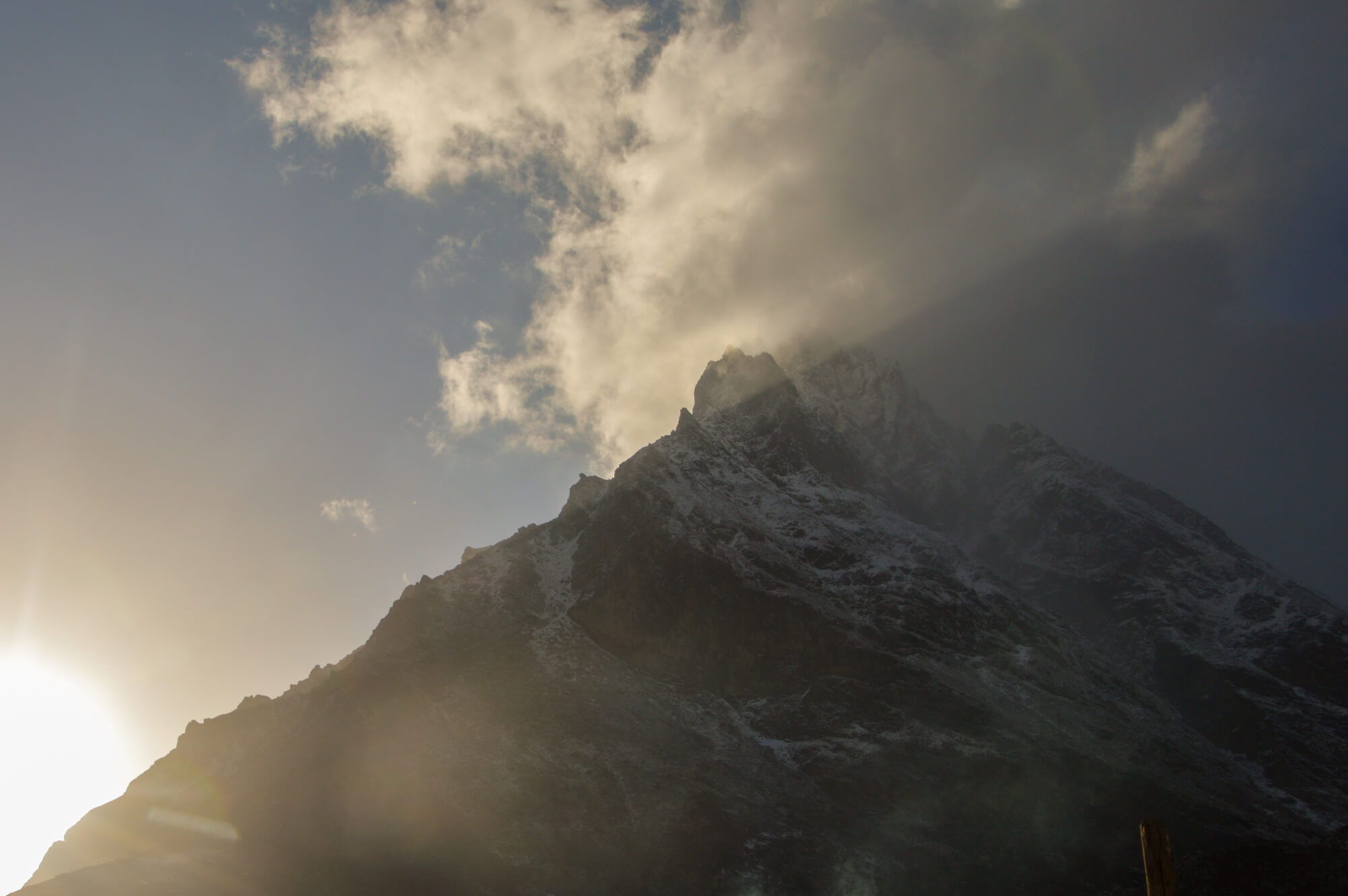
How difficult is the Langtang Valley Trek?
The Langtang Valley Trek is a moderate trek by Nepalese trekking standards. It gains significant elevation, but the elevation is easily spaced out over multiple days on the trail. Like all treks in Nepal, the Langtang Valley is high elevation and proper acclimatization should be factored in. That said, the highest village lies at 3850m, which is well below the high points reached on either the Annapurna Circuit (5416 m) or Everest Base Camp (5545m) treks.
Additionally, Nepal’s teahouse trekking drastically reduces your packing list making the elevation and mileage much more manageable than North American trips like the Rockwall trail or Rae Lakes. Not to mention, the potential of having a hot apple pie at the end of a long day! 🙂
How long is the Langtang Valley Trek?
The one-way trip from Syabru Bensi to Kyanjin Gompa on the Langtang Valley Trek is ~ 29 KM . Over this distance, the Langtang Valley Trek gains ~3000 meters of elevation and loses ~600 meters of elevation.
A round-trip (out and back) hike from Syabru Bensi to Kyanjin Gompa and back to Syabru Bensi is ~ 58 KM with about 3600 meters of elevation gain and 3600 meters of loss.

What permits are required for the Langtang Valley Trek?
To hike the Langtang you’ll require:
- TIMS (Trekkers’ Information Management Systems) card for 2000 RPS (pick this up in Kathmandu); and
- Entrance ticket to Langtang National Park (approximately 3390 RPS).
Do you need a guide or porter?
You do not need to hire a guide or porter to trek the Langtang. The trail is easy to follow and navigation is not challenging. Make sure to download a high quality offline GPS app (we like GAIA) to assist with navigation and route finding.
That said, some people do enjoy to hire a guide for their knowledge and expertise. If you’re looking for a guide seek out a personal recommendation and never just hire someone you meet on the street.
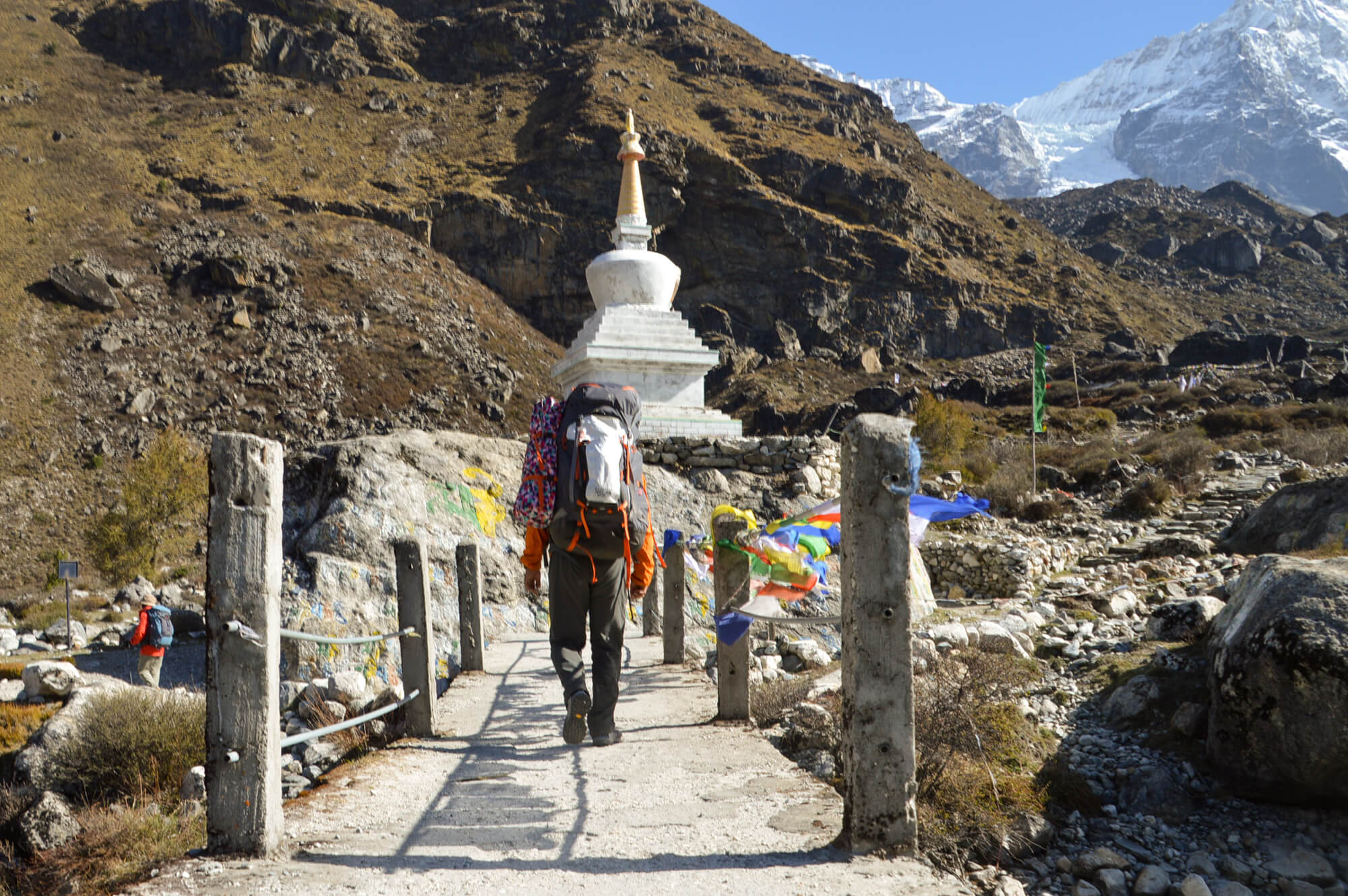
Where do you stay and what do you eat on the Langtang Trek?
The incredible thing about trekking in Nepal is that the teahouses in the villages along the way offer basic accommodation and food (namely, a lot of dal bhat!), This means you can minimize your pack weight as there is no need to carry a tent or food provisions along with you.
Why go on the Langtang Valley Trek vs. Annapurna Circuit or Everest Base Camp?
Most travellers visiting Nepal gravitate towards the Annapurna Circuit or Everest Base Camp treks. Langtang has always offered a quieter option with fewer tourists and less infrastructure (there’s certainly no road like the Annapurna Circuit now has). Sadly, Langtang has made its way further off the map after the 2015 earthquake that destroyed lives, homes, and trails. In the three years since the quake, homes have been rebuilt and trails reforged, but the number of trekkers has hardly increased. Trekking here provides an invaluable opportunity to bring income back into a region that is struggling to rebuild. Besides being a quieter trek where your visit can make an important difference for the income of local communities, Langtang is easy to access from Kathmandu. It’s also a lower elevation trek (the highest village is at 3850m), which mitigates the risk of altitude sickness. There are a number of great, basic teahouse options, so you can easily trek this route without a tent.
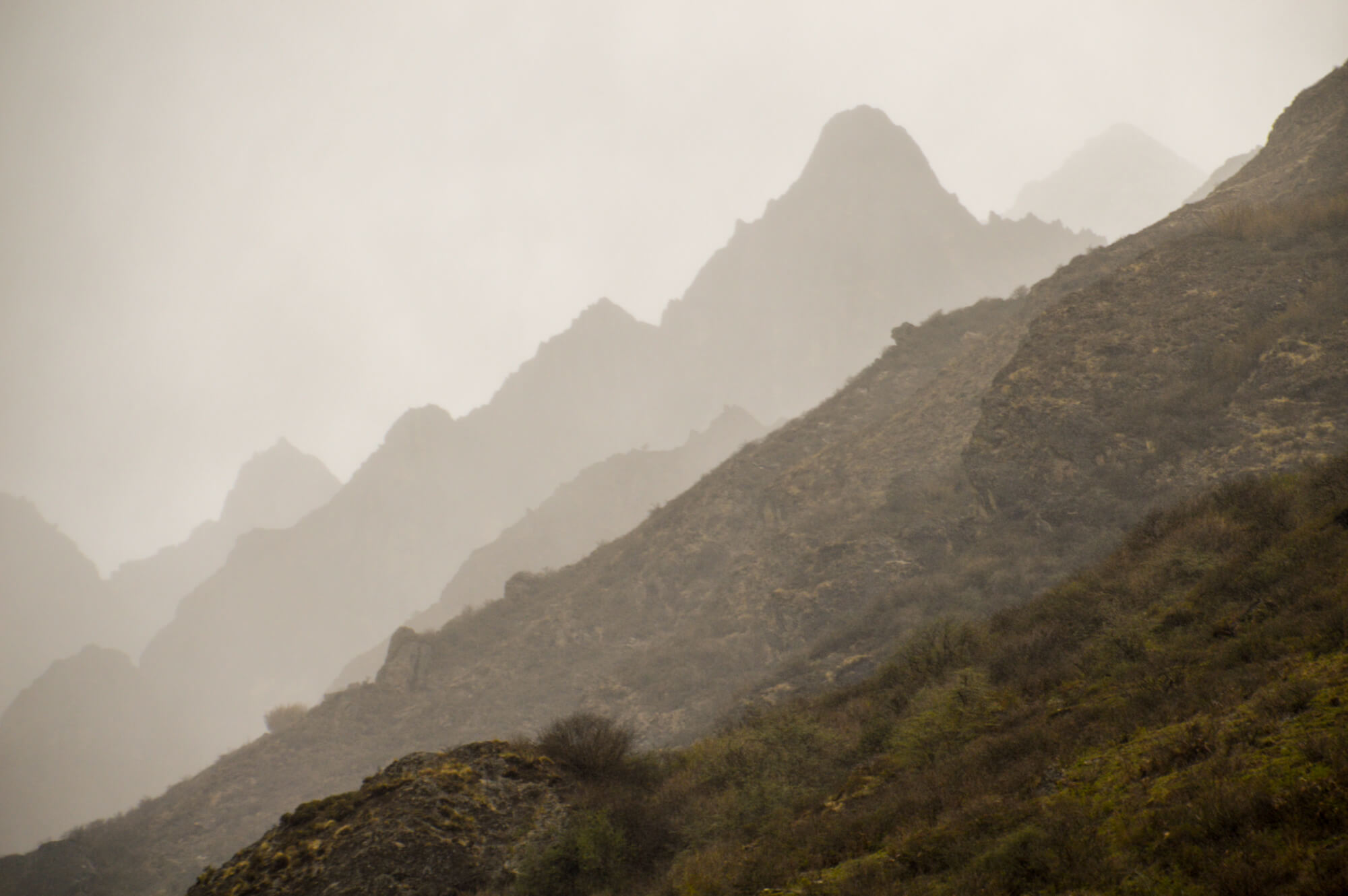
Whatever you do, DON'T FORGET THIS
In remote areas travel insurance that covers emergency evacuation or medivac is absolutely essential. My former roomate was medivaced to Bangkok from Cambodia after a medical emergency and her travel insurance ended up paying out a six figure sum for the medical bills.
Hopefully, you never need to make a claim, but if you do you’ll be beyond happy you were prepared! Don’t start your trip without it! Check out World Nomads for a quote* .
Itinerary for hiking the Langtang Trek
Day 1: travel from kathmandu to syabru bensi.
Catch the bus in Kathmandu in the morning (approximately 550 RPS) to travel the 122 km north to the kicking off point for Langtang – the town of Syabru Bensi. Be forewarned that this bus ride is really quite terrifying, but that’s part of the adventure! It can take anywhere from 8 to 12 hours to reach Syabru Bensi by bus. Do be prepared to show your TIMS card and permit along the way. Once you arrive in Syabru Bensi, find a teahouse for the night and tuck into bed early to prepare for your first day of trekking.
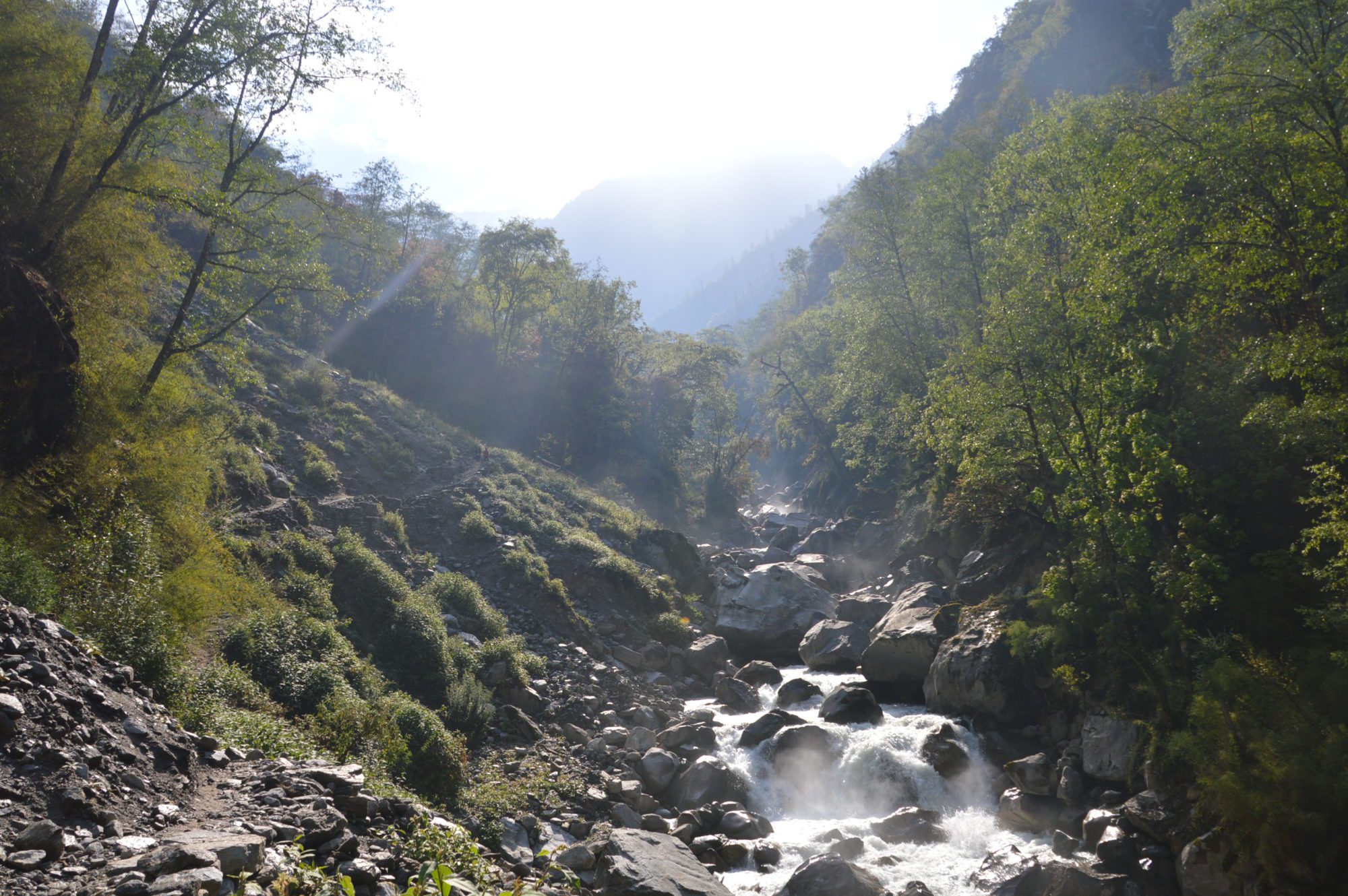
Day 2: Syabru Bensi to Lama Hotel
10.5 km | 1400 m elevation gain 400 m loss.
The first day of the Langtang valley trek takes about 6 hours, depending on your pace. The trail crosses the Bhote Kosi River and weaves through oak and rhododendron forests (watch out for animals suddenly coming around the corners!). Beautiful Lama Hotel is a great place to stop for your first night with several good teahouse options.
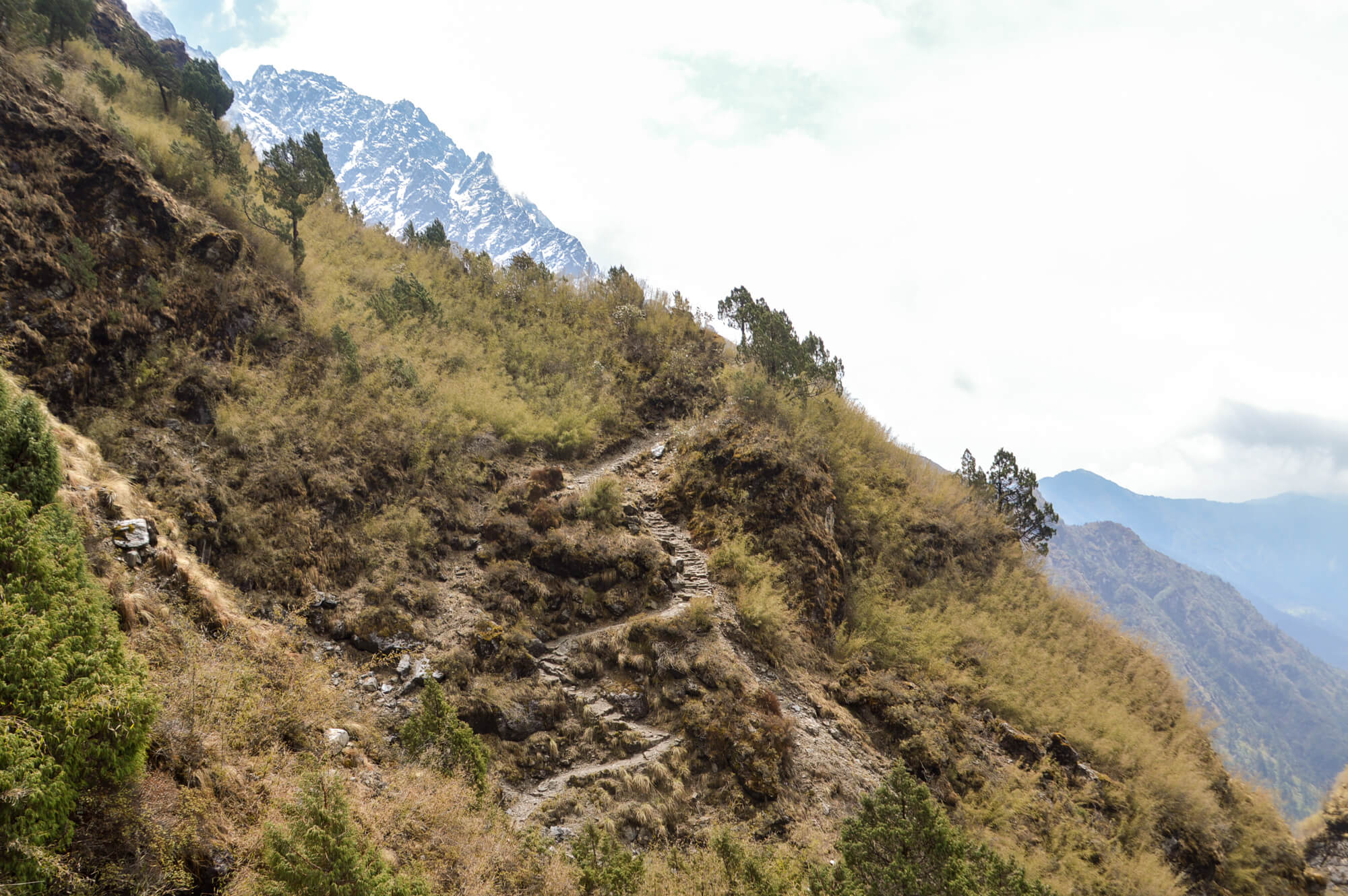
Day 3: Lama Hotel to (New) Langtang Village
11.5 km | 1200 m elevation gain 200 m loss.
Day 3 takes just over 6 hours and ends 100 metres past the tragic site of old Langtang Village. This is where the devastation of the earthquake was felt the most strongly in the valley. Only a single house survived the landslide caused by the quake in 2015. 175 villagers and 41 foreign trekkers were killed in the village during this tragedy. These names are commemorated on a memorial mani wall where the village once was. Just a short walk up the valley, Langtang Village is being rebuilt. Staying here is an important way to support the earthquake survivors as they rebuild their lives after losing so much.
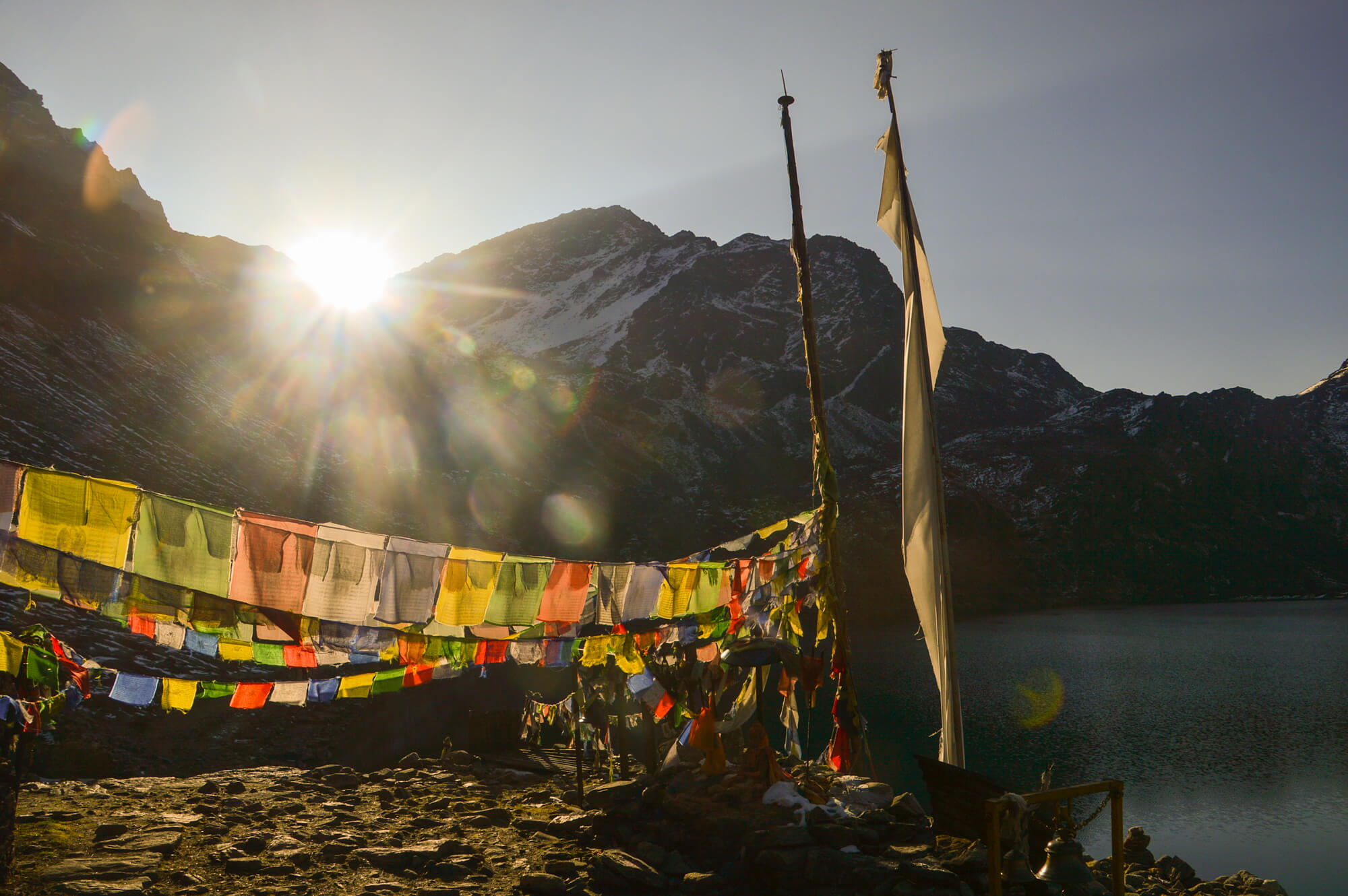
Day 4: Langtang Village to Kyanjin Gompa
6.0 km | 400 m elevation gain.
Day 4 takes you to the highest village you can stay at: Kyanjin Gompa. As you reach the higher altitude here, the valley opens up into yak pastures surrounded by towering mountains. It’s only a 4 hour walk, so be sure to take your time and allow your body to acclimatize. The elevation here can be an issue for some people. Kyanjin Gompa is home to an incredible monastery, a yak cheese factory, and a small village. It’s a beautiful place to stay for a few nights and explore the surrounding peaks if you have the time.
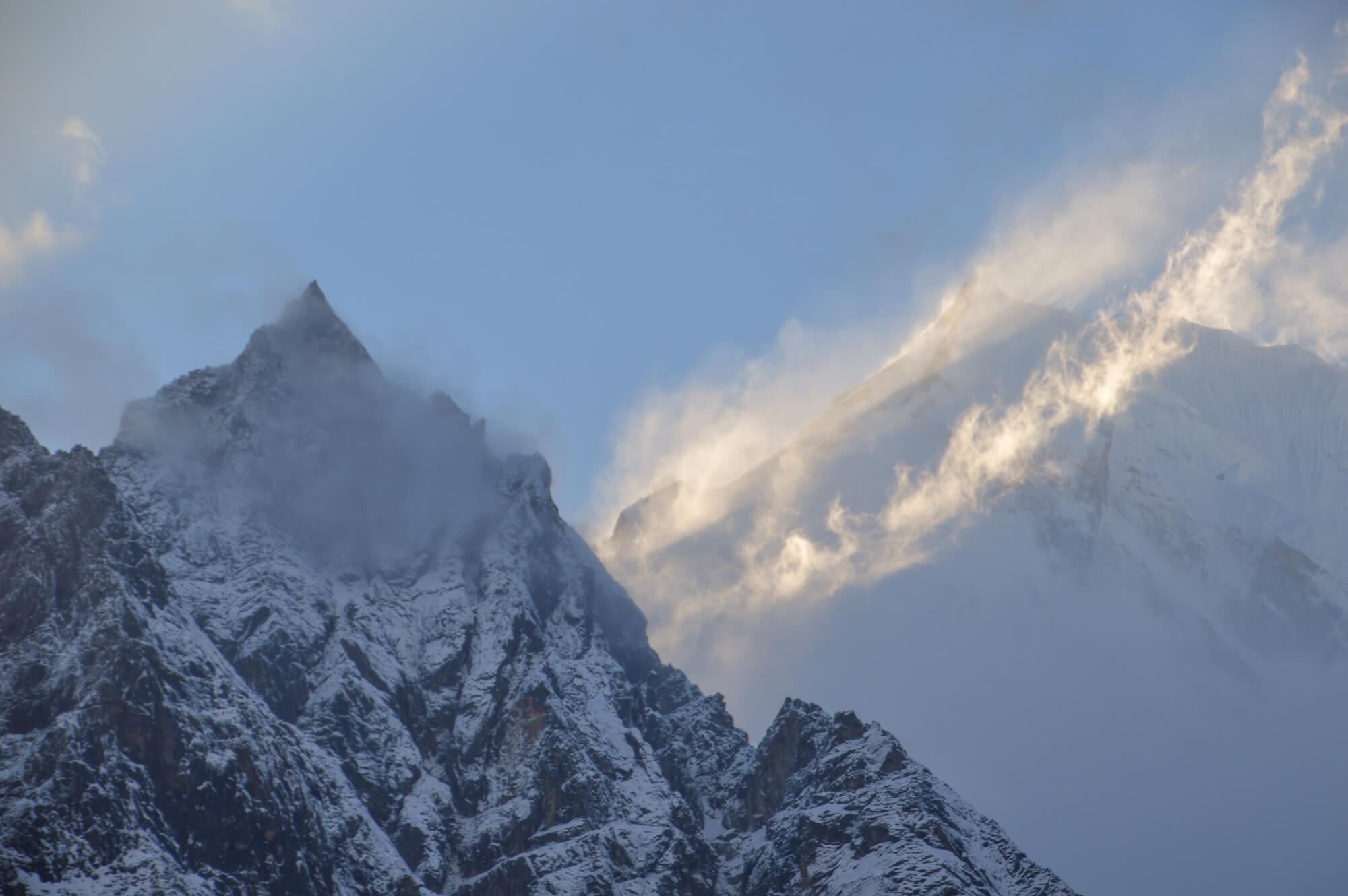
Day 5-6: Kyanjin Gompa (with a trip to Kyanjin Ri)
Breathe a sigh of relief as you get to leave your big pack behind at the teahouse you stay at. Spend a couple days exploring this incredible area and use Kyanjin Gompa as your basecamp for these day hikes:
Kyanjin Ri – this popular and worthwhile half-day hike to a height of 4604m offers incredible vistas of the surrounding area climbing 720m in 2.0 Kilometers (one-way).
Tsergo Ri – This challenging full day hike to the top of Tsergo Ri gains 1110 meters of elevation over 5.0 Kilometers (one-way).
Continue up the valley to Langshisha Kharka – Continue up the valley for more spectacular views on this long day hike which gains 450 meters of elevation over 12 KM (one-way).
Glacier Viewpoint – For an easier option a 2.0 km hike gains 200 meters of elevation for a suberb view of the Langtang Lirung (one-way).

Day 7: Kyanjin Gompa to Lama Hotel
17.5 km | 200 m gain 1600 m elevation loss.
The way down to Lama Hotel should take about 5 hours. Your knees will feel the descent and you’ll be thanking yourself for bringing trekking poles to ease the load! Once you get to Lama Hotel treat yourself to some momos or more dal bhat.
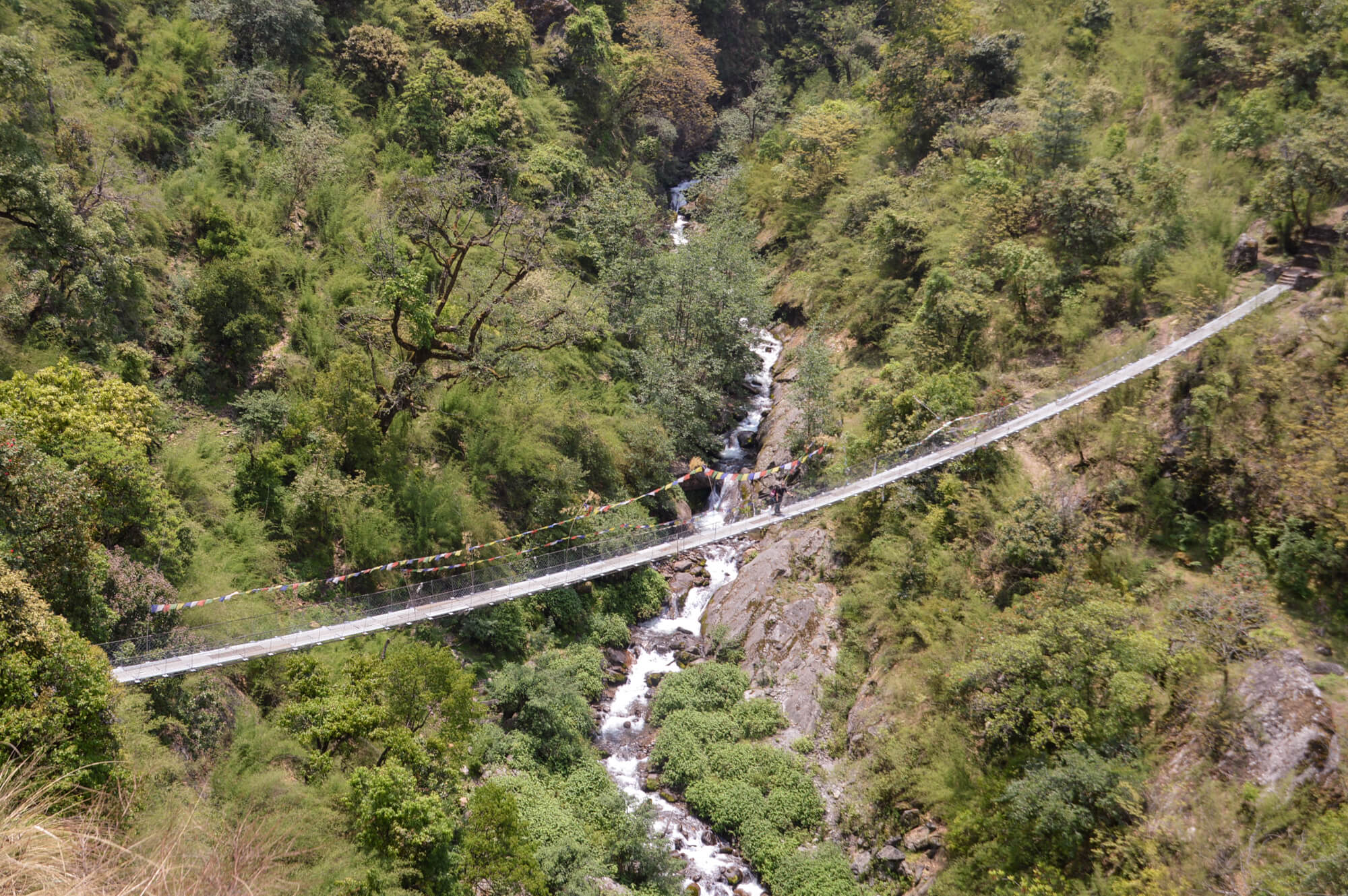
Day 8: Lama Hotel to Syabru Bensi
10.5 km | 400 m gain 1400 m elevation loss.
The final day should take around 6 hours to descend, getting you back into Syabru Bensi for a needed early bedtime.

Impact of the Earthquake on Langtang
The 2015 earthquake has had immeasurable repercussions for the communities in the Langtang valley. With a significant amount of infrastructure destroyed and a rapid drop in income with fewer tourists visiting, this area continues to suffer greatly. There are fewer kids in the communities you trek through than there were before the earthquake. This is a result of the local schools destroyed by the earthquake. Families who have the funds to do so, send their children to boarding schools in Kathmandu to get an education. With the only employment opportunities being subsistence agriculture or the now quiet tourism industry in their home villages, a number of these young people won’t return to the area. Those who don’t have the money to send their children to Kathmandu lose out on giving their children an education. With this in mind, trekking to Langtang has never been more important from a sustainable tourism perspective. For more insight, this beautiful photo story showcases the personal stories of the survivors in Langtang.
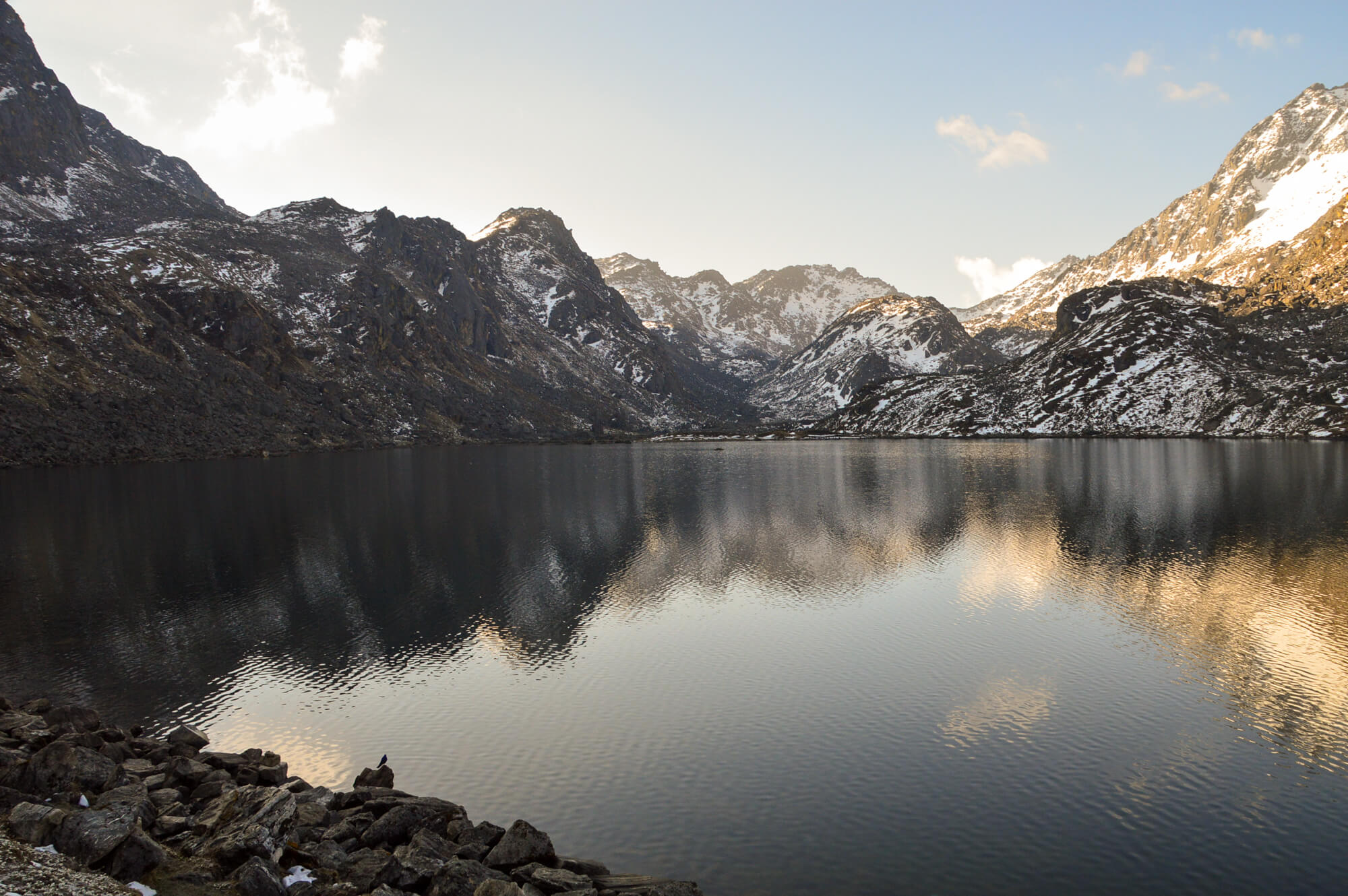
What to pack for the Langtang Valley Trek
Essential langtang packing list.
If all you’re planning on doing is hiking we love the Gregory Focal or Women’s specific Facet which at ~2.5lbs provide a great compromise between barebones ultralight packs and the heavier feature-laden packs!
If you’e stopping in Nepal as part of a longer trip, the Khmer Explorer Travel Set will be perfect for you. It’s more functional for travel, but has a hip belt and suspension system which make it extremely practical for hiking trips like the Langtang!
Sleeping Bag
Patagonia’s sleeping bags are 5 star!! It’s unbelievably lightweight and packs down small. The 30°F / -1°C to be perfect for most outings – if it gets colder you can always layer up! Like all Patagonia products, it’s not cheap, but they stand behind their gear and the quality matches the price point. If you spend a lot of time in colder environments they also make a 20°F / -7°C version . These bags are a worthwhile splurge!
Nalgene Water Bottle
Use it for water, soup, as a hot water bottle to warm up your sleeping bag. Don’t leave home without your Nalgene .
Water Purification
For purifying water, I’m a huge fan of the Steripen . It’s light, portable and only takes minutes to purify a liter of water in a Nalgene. Press the button, place the pen in your bottle, and stir for a couple minutes!
First Aid Kit
The pre-built kits from Adventure Medical Kits have served me well on many adventurers. At the end of your trip write down any items you used and replace them so they’re ready for your next adventure. A dd a few ibuprofen, high-altitude medicine into the kit as well.
Warm Mittens or Gloves
Wind / rain shell.
An essential piece for the wind, rain, and snow you might experience on the Langtang trek. Check out the Patagonia Torrentshell (or Men’s Version version).
Mountain weather can change fast and rain pants are an absolute lifesaver. Patagonia Torrentshell Pants in men’s or women’s are great and can be taken on and off without removing your shoes/boots and allowing you to stay comfortable even if you get caught in a sudden downpour.
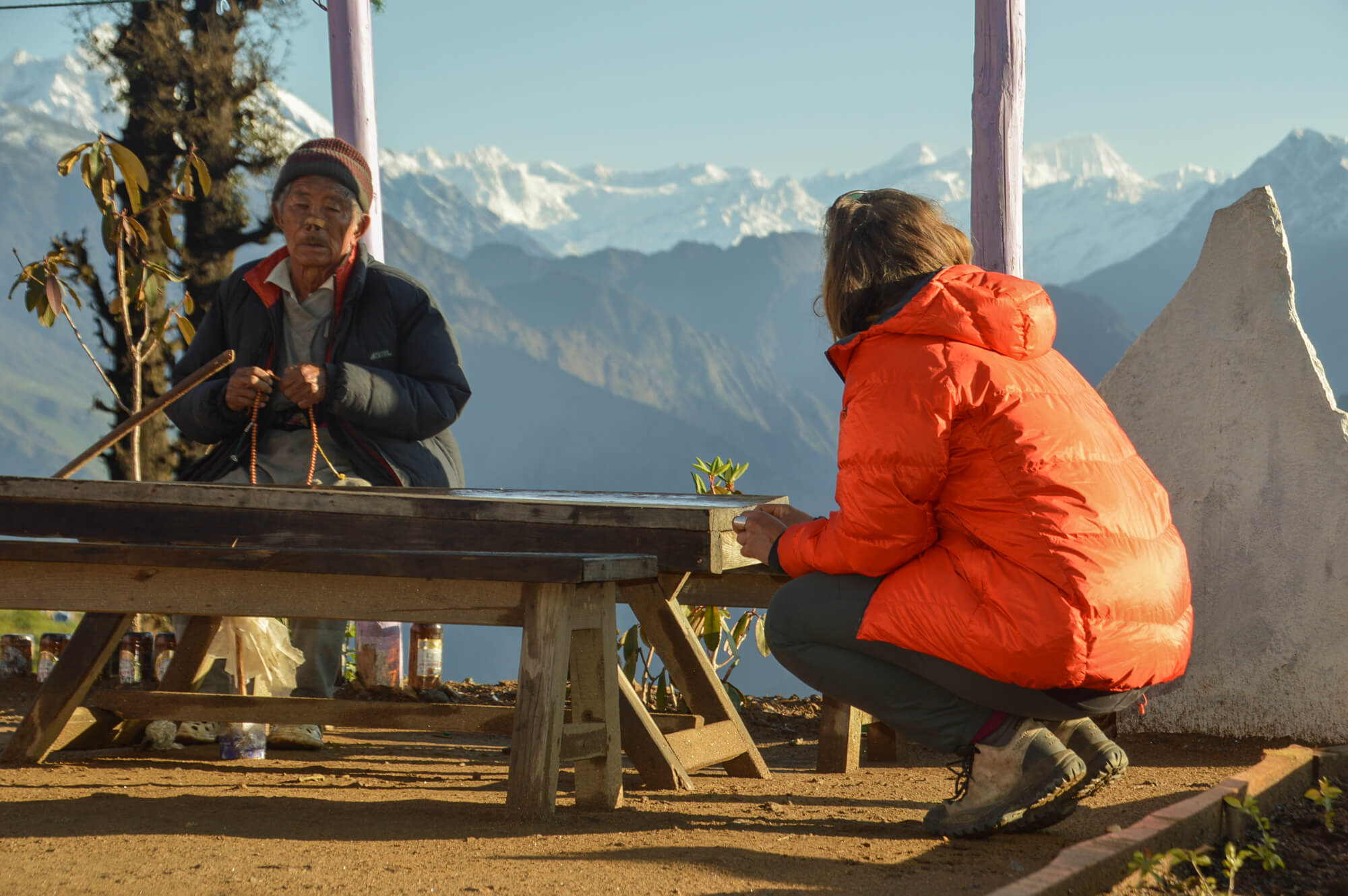
Puff / Down Jacket
The Patagonia Nano Puff® Hoody is a perfect multi-functional item for trekking, everyday, and pretty much anything where you might need a bit of warmth. I’m still looking for an activity it doesn’t work for. They also make the Nano Puff in a men’s version .
Bring a sun hoodie for the Langtang. It helps you cut back on the amount of sunscreen you need, makes your virutally burn proof, and prevents having to reapply. It’s probably the best item I’ve added to my hiking wardrobe! Check out the Outdoor Research Echo Hoodie available in mens and womens.
Hiking Shoes or Boots
Make sure they’re broken in first! Check out the La Sportiva Bushidos for a great lightweight shoe ( mens / womens ).
Invaluable if you get stuck walking in the dark or the electricity goes out. The Spot 350 is the way to go with 6 modes including the night vision saving red light! Red light mode takes a minute to get used to, but once you do it’s a total game changer.
Hiking Pants
A couple pairs of great and durable hiking pants are essentials for the Langtang trek.
Merino Base Layer
Stays warm when wet and effectively wicks moisture. Pack a couple of long sleeves and a few short sleeves. One pair of long underwear are great to layer up with!
A pair of Teva’s are great for hanging out at the teahouses and getting out of your hiking shoes.
Hiking Socks
Darn Tough Vermont makes the best hiking socks hands down. They’re guaranteed for life/replaced free of charge and they don’t stink. Really! I typically bring 3 pair. 1 pair for hiking, 1 pair to change into at camp, and a reserve to throw into the rotation as needed.
Trekking Poles
Poles are great for reducing the strain of long grueling descents and providing extra stability on exposed sections. Both these features you’ll experience on the Howe Sound Crest Trail, so do yourself a favor and get a pair of poles. For a reliable entry level option try these Black Diamond Poles or consider upgrading to the carbon fiber to save extra weight.
Additional items to pack
- Map / GPS app (we like GAIA )
- Toilet paper
- Small bills/ money
- Journal/book/deck of cards (good for relaxing in the evenings)
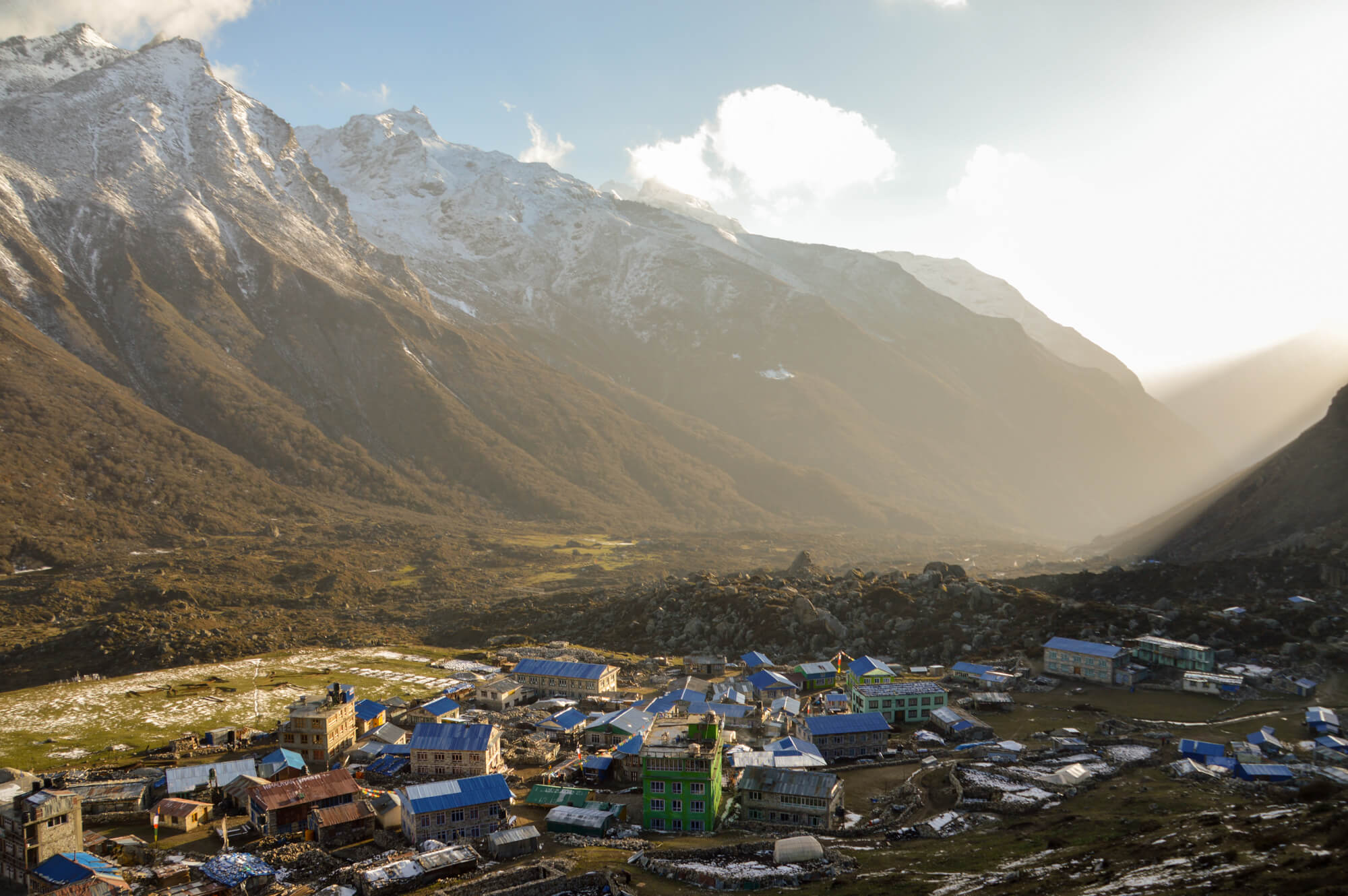
*Thanks to the wonderful Lisa Smith for giving us updates on the Langtang trek post-earthquake and allowing us to share her beautiful photos that you see featured in this article.
Disclaimer: Some of the links in this post are affiliate links. If you click one of the links and make a purchase we’ll earn a small commission at no cost to you. Just like the travel backpacks we build, we’re very particular . So any products or services we suggest, we test and use ourselves before making any recommendations or endorsements.
Banana Backpacks Inc. is a participant in the Amazon Services LLC Associates Program, an affiliate advertising program designed to provide a means for sites to earn advertising fees by advertising and linking to Amazon.com
Share this post
Leave a reply cancel reply.
Your email address will not be published. Required fields are marked *
More Tales from the Banana Trail
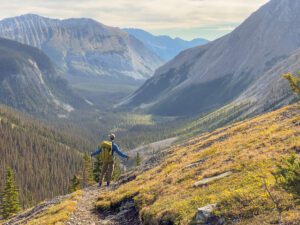
Kananaskis Backcountry Camping | Best Spots for Backpacking
Kananaskis Country is a sublime section of Rocky Mountain wIlderness that provides some incredible opportunities for backcountry camping and overnight hiking. Situated just south of
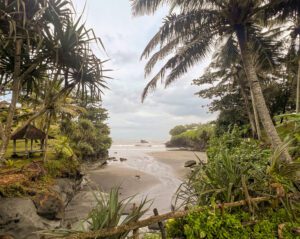
Balian Beach | Ultimate Guide to Bali’s Hidden Paradise
Balian Beach feels like a mirage. Didn’t this Bali die long ago under a crush of Instagram swings and co-working hubs?
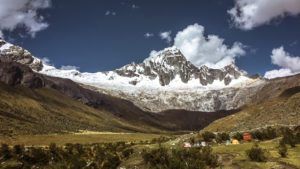
Best Backpack for Peru | How to Pick a Backpack for Peru
What is the best backpack for Peru? Should you take a hiking backpack or will a travel backpack work better? Read this post before you decide.
Adventure with us on Instagram @ BananaTrail

Download the Explorer's guide.

Shop Banana Backpacks Gear
- Kiri Customizable Everyday Collection
- Khmer Explorer Travel Set
Explore the Tales
- Plan Your Adventure
- The Explorer Series
- Learn, Pack, & Get Equipped

- Quick Questions? Email Us [email protected]
- Talk to an Expert +977 - 9849777446
- Annapurna Region Trek
- Everest Region Trek
- Langtang Region Trek
- Manaslu Region Trek
- Nepal’s Hidden Gems
- Bungee Jumping Nepal
- White River Rafting
- Paragliding
- Information
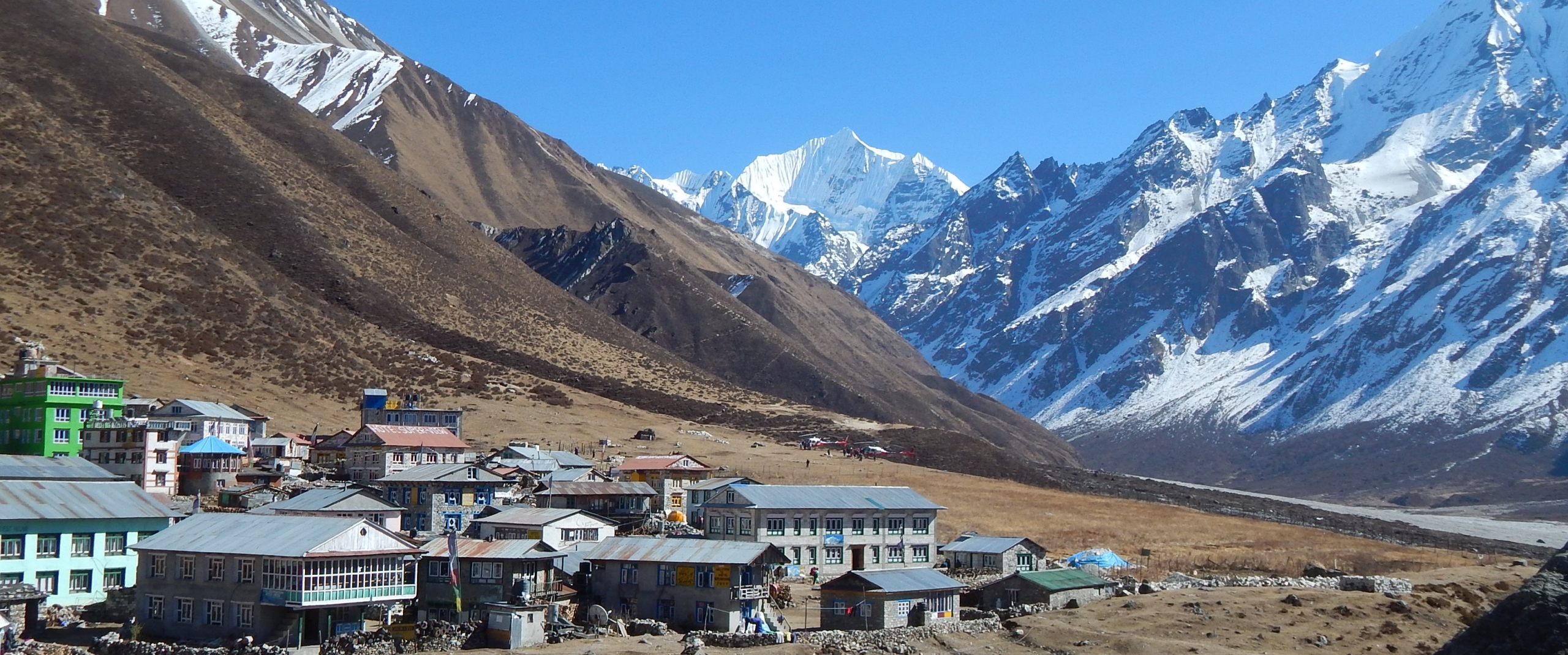
Langtang Valley Trek.
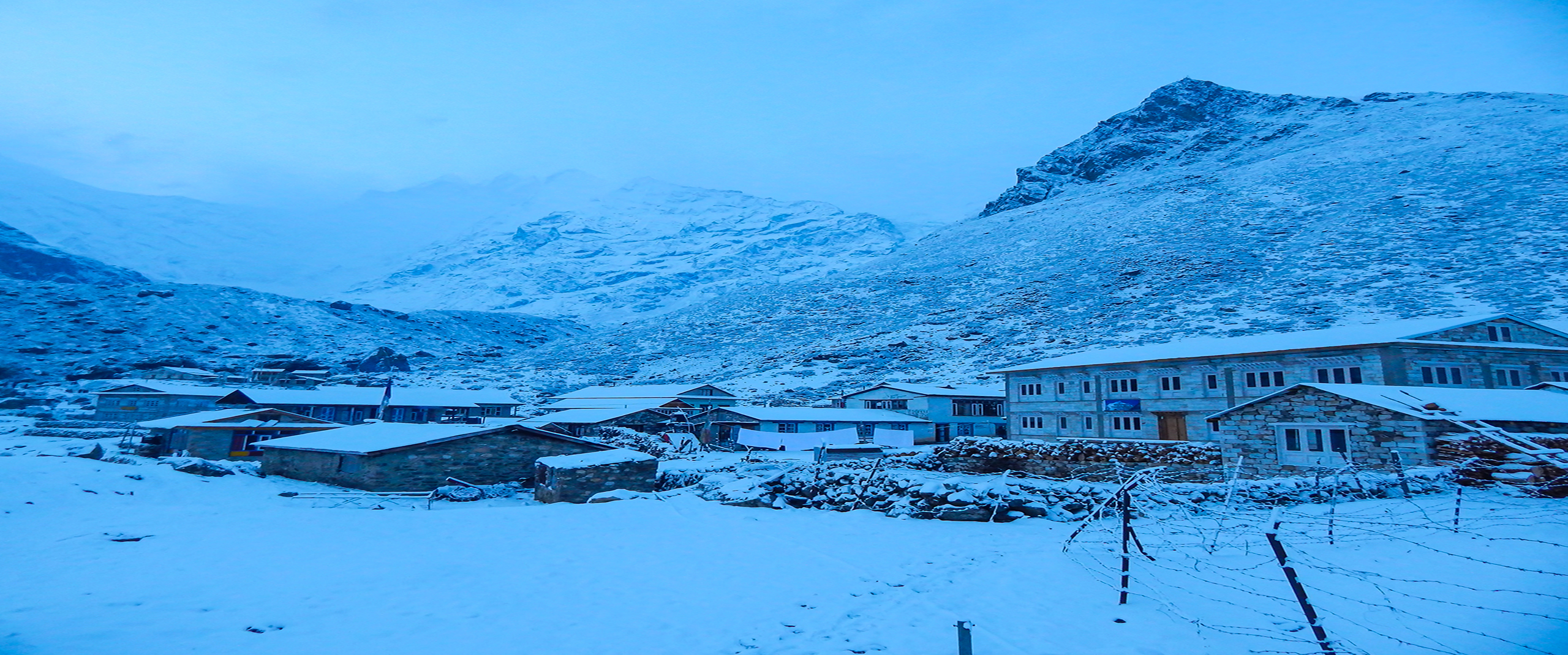
- Includes / Excludes
Useful Info
- Total Duration 10 Days
- Transportation Bus / Jeep / Car
- Trip Grade Moderate
- Max Altitude 5000m.
- Start From Syabrubesi
- End From Kathmandu
- Meals Breakfast/ Lunch and Dinner
- Accommodation Lodge, hotels, tea house, Camping
Best Season: , May, September, October (best in terms of view), November
- Best Price Gurantee
- Hassle-Free Booking
The Langtang Valley trek is one of the easiest, short, cheap and less crowded compared to other popular treks in Nepal. It can be completed within a week or can get extended up to ten (10) days. This trek is suitable for both first-time travellers and experienced trekkers. This journey takes you through the most beautiful landscape, Tamang villages, stunning waterfalls and high Himalayan valleys, dense forests and monasteries. This trek covers certain parts of Langtang National Park where you need a ticket to enter into the National Park area. The Tamang community makes up the majority of the population in this region, which is influenced by Tibetan culture and tradition. They are the most welcoming people who extend warm hospitality to visitors.
This trail provides breathtaking views of mountains such as Langtang Lirung (7234m), Langtang Ri (7205m), Dorje Lakpa (6966m), Ganesh Himal (7422), Jugal (6095m), Ganja La Pass (5120m) along with stunning Glacier. It is also famous for a pious pilgrimage to Gosainkunda Lake (4380m). This valley is home to a variety of unique animals and birds, protected under Langtang National Park. If you are lucky, you might see red pandas, Langurs, snow leopards, and Musk deer along with beautiful birds like Tibetan Snowcock, Redstarts, Blood Pheasant, Parrot bills, Himalayan Monal, Tragopan and many more.
Langtang was one of Nepal’s most popular trekking destinations before the devastating earthquake hit it hard in 2015. The earthquake badly impacted and damaged the most beautiful Langtang valley including Kyanging Gompa and many small Tamang villages. Some of them were eroded and hidden beneath the debris. However, the trek is now open to trekkers following extensive renovation and reconstruction works.
Major Highlights of Langtang Valley Trek.
- Relatively short trek and for good reason (8-10) Days.
- Langtang Valley is also known as the Valley of Glaciers.
- Hike to the maximum point of Tserko Ri (5000 m) for its stunning world-class panoramic views.
- Magnificent view of snow-capped mountains such as Langtang Ri, Langtang, Langsisa and Ganjala Peak
- Experience Tibetan Buddhist culture, tradition and lifestyle of ethnic people.
- Explore ancient monasteries throughout your Trek.
- Walkthrough spectacular rhododendron forests, beautiful fields, settlements, waterfalls and rivers.
- Stay in beautiful teahouses with humble people and extraordinary hospitality.
- Explore the destructed area of Langtang village which was washed away by the devastating earthquake of 2015.
Trip Itinerary
Day 1: welcome to kathmandu.
Your ultimate adventure starts with your landing in Kathmandu valley surrounded by beautiful green hills and alluring Mountain views. After finishing up with customs at Tribhuvan International Airport, you will be welcomed in the land of the Himalayas by our representative. You will enjoy a drive through crowded and narrow roads from the airport to your hotel. After freshening up, you can explore a tourist place called Thamel. You would enjoy many choices of restaurants and meals providing both local and western foods.
Day 2: Explore Kathmandu
Kathmandu is also known as a city of temples. Decorated with historic temples, Stupas, Durbar square, and beautiful historic monuments listed in World Heritage sites, this city has a lot to offer. Kathmandu is a unique and artistic city that shows the life of ancient people, their culture, art, sculpture, lifestyle and many more. Kathmandu offers different vibes starting in the morning to night. Full of diversity, Kathmandu city offers mouthwatering local cuisines and street foods from different parts of Nepal. People speak 125 official languages. You can imagine the types of cuisine they offer.
Day 3: Drive to Syabrubesi or Domen (Max Altitude: 1550m/5085ft)
Early in the morning, we can start our day from Kathmandu to Syabrubesi. Every day, sumo (jeeps) and buses depart from Machapokhari for Dhunche, Syabrubesi and Timure. We recommend you take a Jeep because they will take less time and don’t let in new passengers at every station along the way. Jeep to Syabrubesi depart between 7-8 A.M. We recommend you purchase your ticket from the Machapokhari jeep counter a day in advance as it is a hectic station during trekking seasons. It is a 6-7 hrs long ride over country lanes, similar to other bus trips in Nepal. However, you can enjoy the beautiful mountain views of Manaslu, Ganesh Himal and Annapurna along the way. For the majority of the day, you’ll be following the Trishuli river while driving. The road leads to Dhunche, after passing through the busy town of Trishuli. Just before Dhunche, you’ll need to check your bags and present your TIMS card along with the National Park entry permit card at the gate. You will arrive in Syabru after another 45 min downhill travel from Dhunche. You can stay overnight in Syabrubesi or ride to Domen (endpoint for a jeep). It is better to stay in Syabru as you can have multiple hotels to stay overnight.
Drive time: 6-7 hrs
Accommodation: Hotels
Day 4: Trek from Syabrubesi to Lama Hotel (Max Altitude: 2380m/7808ft)
You can start your trek from Syabrubesi after crossing the bridge over Langtang Khola. It begins with an off-road trail along the Bhote Koshi River to Domen village and a gradual ascent to Pahiro and Bamboo village. The Bamboo village along the way is an excellent spot for lunch. Now the trek becomes steeper after bamboo. The majority of this day is spent in a lush forest alongside the Langtang River, where you can see monkeys and Langurs in the trees. The difficult ascent to Lama Hotel is compensated with a nice lodge and a comfortable bed for an overnight stay.
Trekking time: 5-6 hrs
Trekking distance: 12-14km
Day 5: Trek from Lama Hotel to Langtang Valley (Max Altitude: 3307m/10,850ft)
Another day of lengthy ascents characterizes the second day of the Langtang trek. The first half of the day is spent once again walking by a river and through trees. With sporadic glimpses of Langtang Lirung through the trees, the trail continues to rise into the jungle. The trail leaves the forest at Ghodatabela, where mountains loom on either side of the valley. After a few hours, you will arrive in the stunning Langtang valley. Just before Langtang, there is an excellent place to stop for tea is Gomba danda. Beautiful vistas of the Himalayan Mountain range may be seen from here. The second portion of the day is spent passing by tiny rural villages in the glacial valley. The Langtang valley's largest and oldest village was once called Langtang, renowned for its yak cheese and yogurt. Many brand-new lodges are available for overnight stays in the new village.
Trekking time: 6-7 hrs.
Trekking distance: 10-12km
Day 6: Trek from Langtang valley to Kyanjin Gompa (Max Altitude: 3817m/12,523ft)
Today, the trail gradually continues past small streams, prayer flags, and sacred rock mounds with carved inscriptions. The path ascends to a yak pasture, where the landscape becomes wider with mountain views. You'll arrive at Kyanjin Gompa after crossing various moraines and a suspension bridge just before the valley. You'll arrive in Kyanjin Gompa by midday because this is the shortest day of the walk. So, if you don't want to spend the day relaxing, we recommend you hike up to Langshisha Kharka for breathtaking views.
Trekking time: 3-4 hrs
Trekking distance: 5-7 km
Day 7: Kyanjin Gompa to Kyanging Ri & Tserko Ri (Max Altitude: 5000m/16,405ft)
Today, you will hike up to Tserko Ri to see the breathtaking views of the mountains, glaciers, and the stunning Kyanjin valley. It offers spectacular vistas of no less than 20 -25 unique summits. The overall trek to Tserko Ri can take up to 7-8 hours, making for a tough yet worthwhile adventure. Tserko Ri lies at an altitude of 5000m above sea level – the highest point of the Langtang valley Trekking.
For a softer option, you can hike to Kyanjin Ri (4600m). To reach the top of this Ri, you need to get an early start. Although this is shorter and less demanding than the Tserko Ri, it is still a significant climb. The view from the top is as beautiful as the one from the Tserko Ri. No matter which Ri you choose, you’ll enjoy a 360-degree panorama of snowcapped mountains, wide valleys and a stunning glacier from the top.
Trekking time: 7-8 hrs
Trekking distance: 8-10km
Day 8: Trek down from Kyanging Gompa to Lama Hotel (Max Altitude: 2380m/7808ft)
After saying goodbye to the vibrant Buddhist hamlet of Kyanjin Gompa, you'll go on one of the longest treks in the Langtang Valley. You'll be hiking back to the Lama Hotel today. The path returns along the Langtang River past Gomba Danda, Mundu to Ghoda Tabela. Throughout the day, the trail is primarily downhill. You'll continue descending on a steep slope after you reach Ghoda Tabela. Now that you're descending the mountains, you'll be able to move more quickly and comfortably. you'll pass by familiar yak herding towns and open alpine pastures as you descend and with each step, the prospect of a hot lunch in Langtang village becomes more enticing. you'll check into the best available teahouse here and unload our hefty baggage.
Trekking distance: 10-12 km
Day 9: Trek from Lama Hotel to Syabrubesi (Max Altitude: 1550m/5085ft)
You'll start your trek back to Syabrubesi after early breakfast. The path returned us to Syabrubesi in the same direction we came, descending through pine forest and passing Bamboo and Pahiro before reaching the Bhote Khola river bridge. You'll arrive at Syabrubesi knowing you've finished the entire Langtang Valley Trek. You will gather together with your friends for supper to celebrate your accomplishments after checking in at one of the guest houses. One thing is certain: with all those kilometres behind you, you'll sleep soundly.
Trekking time: 3-4 hrs.
Day 10: Drive from Syabrubesi to Kathmandu (Max Altitude: 1350m/4429ft)
This morning, you will linger over a delicious breakfast before returning to Kathmandu. On the journey back to Kathmandu, you'll take the same gorgeous road you took about a week ago, tracing the bends and curves of the Bhote Koshi river as it passes past idyllic rural settlements and huge fields of crops. As you gaze out your window at the dreamlike picture of rural Nepal, you'll reflect on the memories you've made, the people you've met, and the distances you've travelled on your own two feet. When you arrive in Kathmandu, we'll check into a hotel so you can get some much-needed rest and leisure. After a week of hard work, nothing beats a hot shower and a snooze.
This is also an excellent second chance to tour the cultural and historical sites that give Kathmandu its distinct flavor. You'll spend the night at your hotel after dinner.
Please keep in mind that the hiking times listed above are estimates and should only be used as basic recommendations. You will be able to travel at your own pace on the Langtang Valley Trek.
What's Included
- All the transportation during the trek.
- Accommodation and equipment during the trek.
- Breakfast, Lunch, Dinner
- 3-star hotels with B and B.
- Professional and Licensed English speaking Guide.
- UNESCO site entrance fees in Kathmandu.
- Porters to carry your luggage during the trek (1 porter for 2 Persons), their wages, medicine, insurance and necessary equipment.
- All necessary Permits & TIMS cards (Trekker’s information management system)
- Travel & Rescue arrangement.
- Farewell dinner in Authentic Nepali Restaurant and gifts.
- All our government taxes, vat, official expenses & service charges
What's Excludes
- All personal expenses.
- Personal clothing, gear, sleeping bag and other necessary items.
- Tipping guides and porters.
- Cost raised by flight cancellation, emergency rescue charges, landslide, weather, political unrest, illness, re-routing etc which are not under our control
- Personal food consumption.
- International Flight, Airport tax and Nepal Visa fee
What are the essentials things needed for this trek?
Trekking in the Himalayas is not always fun. Our government has designed many protocols to make sure on safety of our tourists but sometimes it is really hard to prevent risk. Due to few transportation options in Nepal, the only fastest way to rescue anyone from the mountain is a Helicopter which could be very expensive. Therefore, we would like you to get insured through a trustworthy insurance company just to be safe. Make sure you are insured with helicopter rescue, medical injuries and any other emergency issues. We would highly recommend you carry a copy of your insurance and send one to us just in case of any emergencies.
Gears needed:
Shoe: Pair of exceptionally good hiking boots and sandals
Clothes: Thermals, down jacket, wind and rainproof jackets, trekking pants, sports t-shirt, fleece, warm gloves, towels, winter hat, Inner garments, shorts, and a few pairs of good socks.
Accessories: Good trekking bag backpack, sunglasses, water bottle, water purifier, sunscreen, lip balm, Swiss pocket knife.
Equipment: Sleeping bags upto - 20 degrees celsius, duffel bag, hiking poles
Medicine: First-Aid Kit, Altitude sickness medicines (eg. diamox), bug spray.
Bring all these essential gear with you about the checklist. If you want to buy it in Kathmandu, there are multiple places here as well. Ask us if you want a better place to buy or rent gear.
Physical fitness : Trekking to Langtang Valley is a physically demanding activity, and it requires a good level of physical fitness. One should engage in regular cardiovascular and strength-building exercises for at least a few months before embarking on the trek. Exercises such as hiking, running, cycling, and strength training will help prepare the body for the rigors of trekking.
Adequate acclimatization: Acclimatization is the process of adapting to high altitudes. As you trek higher, the air becomes thinner, and the body needs time to adjust. Adequate acclimatization is essential to prevent altitude sickness, a potentially fatal condition. It is recommended to spend a few days at lower altitudes to allow the body to acclimatize before climbing higher.
A knowledgeable guide : Trekking to Langtang Valley is a challenging activity, and having a knowledgeable guide is essential for success. A guide will help navigate the route, provide information about the local culture, and assist in case of any emergencies. It is important to choose a guide who is experienced and knowledgeable about the trek.
Proper nutrition and hydration : Proper nutrition and hydration are crucial for maintaining energy levels and preventing altitude sickness. It is recommended to consume a high carbohydrate and protein-rich diet to provide the necessary fuel for the body. It is also important to drink plenty of fluids to stay hydrated. It is recommended to carry a water purification system or tablets to ensure access to clean water.
Proper permits : Trekking to Langtang Valley requires proper permits. There are several permits required, including the Langtang National Park Permit, Trekkers’ Information Management System (TIMS) card. It is important to obtain these permits before embarking on the trek.
Mental preparation : Trekking to Langtang is a mentally challenging activity. It requires patience, perseverance, and mental toughness. It is important to be mentally prepared for challenges and to have a positive attitude. It is also important to be aware of the risks and to take appropriate precautions.
Basic first aid knowledge : Basic first aid knowledge is essential for trekking to Langtang Valley. It is important to know how to treat common injuries and illnesses, such as blisters, altitude sickness, and hypothermia. It is recommended to carry a basic first aid kit with essential items such as bandages, antiseptic, and pain relievers.
Respect for the environment and local culture : Trekking to a very rural and unique region of Langtang Valley is an opportunity to experience the local culture and environment. It is important to show respect for the local culture and customs and to minimize the impact on the environment.
Trip Gallery
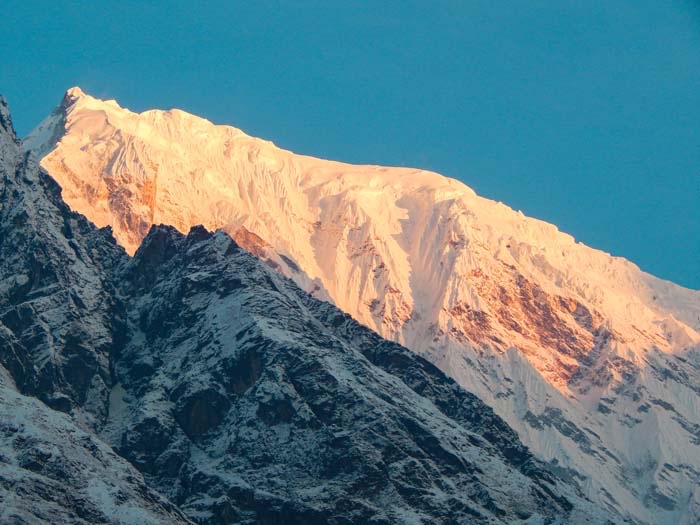
Saraswotinagar, Chabahil, Kathmandu, Nepal
+977 9849777446
[email protected] [email protected]
Company Info
- Why Choose Us
- Team Members
Quick Links
- Terms & Conditions
Booking Info
- Refund and Cancellation Policy
Trip By Category
- Nepal Trekking
- Day Tour Package
We are Associated with

Subscribe Newsletter

© 2024, Hit The Himalaya. All rights reserved
Design by : Web Design in Nepal
Langtang Valley Trek

- Duration 12 Days
- Trip Grade Moderate
- Destination Nepal
- Start/End KTM/KTM
- Group Size 1-12
- Max. Altitude 4400
- Quick access to trail from Kathmandu and an easy trekking route
- Perfect for travelers looking for a short trek in the Himalayas
- Trek in the Langtang National Park with high chance of coming across wildlife
- Explore the verdant Langtang Valley and the picturesque villages
- Trek through dense forests and cross thrilling wooden bridges
- Intimate encounters with the indegnous communities of Tamangs and Sherpas
- Enjoy guesthouse trekking and have a close glimpse of local’s lifestyle
- Less crowded trekking route and a tranquil venture
- Visit the old Kyanjing Gompa and other stupas on the way
- Witness gorgeous sunrise from Tserko Ri and breathtaking mountains views as well as excellent sceneries throughout the trek
Langtang Valley Trek 12 Days
Explore authentic rural Nepal, experience guesthouse trekking, and get to witness some of the most stunning mountain panoramas during Langtang Valley Trek . Meet friendly locals, learn about the rich cultural heritage of Sherpas & Tamangs, and walk-through beautiful rhododendron forests.
We have a short 12-days Langtang Valley Trek Hollidays for travelers who are looking for a quick venture into the Himalayas. You'll be trekking in the Langtang National Park, abundant in flora and fauna. The trail is adventurous and full of thrills like suspension bridges, waterfalls, etc. You'll walk through lush forests of rhododendron, bamboo, pine, and cedar.
Langtang Valley Trekking is located near Kathmandu. You do not have to take any domestic flight to reach the starting point of the trek. A 6-7 hours comfortable drive from Kathmandu leads you to the starting point of the Langtang Valley Trek . Regardless of easy access to the Langtang trail, the tourist flow in the region is quite low, unlike the famous Everest base camp trek & Annapurna base camp trek .
Langtang valley trek is famous, especially among novice trekkers. Still, not many people trek in this region, which makes the trail less crowded. You'll have a lot of time to soak in the breathtaking landscapes and unwind amidst the tranquility of high mountains.
Within three days of walking from Syabrubesi, you'll reach Kyanjin Gompa, the last village of the Langtang Valley Trek . The trail to Kyanjin Gompa ascends and descends through lush woodlands, meadows & small picturesque villages. You'll come across many stupas, mani walls, chortens, and prayer flags along the way. And with a hike to Tserko Ri, you'll retrace your way back to Lama Hotel and drop down to Dhunche to end the trek.
Meet with the indigenous community of Tamangs, descendants of Tibetans. Have intimate encounters with the locals and get to know about their simple mountain lifestyle. Langtang Valley has preserved Tibetan Buddhism culture, and the trail showcases it.
There are a bazillions of reasons that make the Langtang Valley Trek a fantastic option. From impressive trekking experience to heartwarming hospitality of the locals and stunning glaciers & mountain views. We hope the below reasons make it easy for you to choose Langtang valley trekking in Nepal.
Guided sightseeing tour in Kathmandu
So, all of our packages cover an exciting guided sightseeing tour in Kathmandu. First of all, Kathmandu is called the city of temples for a solid reason. Every corner has a temple or a site where locals worship. The city has major monuments that reflect the rich Nepali diverse cultural heritages and arts.
During the tour, our friendly English-speaking guide will accompany you. You visit monuments like Pashupatinath Temple , Boudhanath Stupa , Swayambhunath , and Kathmandu Durbar Square .
Comfortable & scenic drive to/from Syabrubesi
Syabrubesi is the starting and ending point of the Langtang Valley Trek . Situated at 1,500 meters, Syabrubesi is located 122 kilometers away from Kathmandu. The drive takes around 8 to 9 hours. Kathmandu to Syabrubesi's driving route is smooth and well-built. The ride offers beautiful views of green hills, mountains, terraced fields, and waterfalls. It's a comfortable drive.
Trek in the Langtang National Park
Established in 1976, Langtang National Park is Nepal's first Himalayan national park. The climate ranges from lush temperate river valleys to glacial-carved cliffs. The national park has varieties of forests and green meadows.
From 2,000 m to 2,600 m, you can see rhododendron & pine forests. From 2,600 m to 3,000 m, there are mainly oak forests that are further mixed with larch, hemlock & fir forests from 3,000 m to 3,600 m. Similarly, 4,000 meters above has expansive grassland meadows.
As the Langtang National Park is home to numerous wildlife like Himalayan black bear, screeching langur, red panda, snow leopard, wild dog, serow, and more than 250 species of birds.
Adventurous but easy trekking route
Langtang Valley Trekking Route has an easy to moderate difficulty level. The trail has all the wonders of trekking in the Himalayas regardless of an easy route. You'll cross suspension and wooden bridges over streams & rushing rivers. Likewise, trekking through dense forests, you come across many flora & fauna.
Some part of the route is off-beat, steep, and also passes by landslide-prone areas. You walk along the ridge of high cliffs, enjoying phenomenal landscapes. Not only this, but the encounter with yaks and mules on the grazing sites & along the way is also compelling.
Meet with indigenous Tamangs
The Tamangs are an indigenous tribe with a great history. They are the descendants of Tibetans, residing in the Langtang regions for centuries. Their main language is Tibeto-Burmese. More than 90% of Tamangs practice Tibetan Buddhism and have their own dialect.
While trekking in the Langtang valley, you learn a lot about these communities and their culture. The stupas and monasteries along the way showcase their traditional practices. Likewise, the trail is also enriched in prayer wheels, chortens, prayer flags, and mani walls.
Learn a lot about the lifestyle of the locals and visit ancient monasteries
The Langtang valley trail passes through villages like Lama Hotel, Ghat, Ghoda Tabela, Langtang village, Kyanjin Gompa, etc. We stay overnight in the guesthouses in these villages. The guesthouse accommodation means you stay in the houses of the locals, so the experience is very immersive. You can see closely the lifestyle of the locals and their daily chores. Likewise, we visit the Kyanjin gompa. It is believed to be 280 to 300 years old. It's one of the significant monasteries in the Langtang region.
Witness stunning mountain views and landscapes
If you love the Himalayan landscapes, then you'll love Langtang Valley Trekking . The landscapes during the Langtang Valley Trek are out of this world. The forested hills with well-made terraced fields and meadows & snow-capped Himalayan mountains on the backdrop are nothing less than a storybook scenery.
Some of the mountains you see during this trek are Langtang Lirung (7,234 m), Dorje Lhakpa (6,966 m), Shishapangma (8,027 m), Ganesh Himal (7,422 m), Mt. Kang Guru (6,981 m), etc. Likewise, you also get to see glistening glacier views.
Permits for Langtang Valley Trek
You require to have some permits to do the Langtang valley trek , and they are Langtang National Park entry permit and TIMS (Trekkers information management system) permits. We apply and get all these permits once you book the trek.
Accommodation on Langtang Valley Trek
We provide a 3-star hotel for three nights in Kathmandu and simple lodge/teahouse accommodation for the rest of the eight nights on the Langtang valley trek trail . The rooms are basic, just a bed with a pillow and blankets on trek lodge/guest house on trekking, and please note some of them are very basic, and a sense of adventure is necessary.
Availability, Booking & Last Minute Booking
We at Outfitter Himalaya have opened the booking for 2024 & 2025 on private and small group departures. The Trek is available on group departure, find the selected date below and join one of the dates for the group trek, Our group trek size is from 1 to 12 passengers. If these fixed dates are not suitable for you or looking for a private trek with a private guide, Look at the right bar of the page, select any date, and book your own date.
However, we advise you to ask us first for up-to-date information about the trekking trails, etc… before making a booking.
Booking the Langtang Valley Trek in advance is advisable. When you make a booking in advance, we will have enough time to prepare for the trek, schedule our guide, etc.. However, we accept last-minute bookings too.
Find the detailed day-by-day itinerary for the Langtang Valley Trek 12 Days . The 12-Day Langtang Valley Trek itinerary is inclusive of your arrival and departure days to and from Nepal and a cultural day tour in Kathmandu . If you prefer to make your arrangement for the accommodation for pre and port trek or if you want a shorter or longer itinerary also available from us. If you have longer holidays then you can consider the Langtang Gosaikunda Trek or Langtang Circuit Trek as well.
The 12 Days is the standard itinerary that we have designed to offer you, however, we at Outfitter Himalaya are always happy to customize the trek itinerary for you as per your requirements and fitness level. Let us know your own requirements.
Day 1: Arrive Kathmandu airport and tranfer to hotel
On your arrival day, we'll be at the international airport to welcome you and escort you to the hotel. You'll have no hard time getting from the airport to your hotel. As we have not planned anything for the remaining day.
- Accommodation Hotel
- Max. Altitude 1345
Day 2: Full Day Kathmandu Tour
Today, we have one more full day in Kathmandu. In the first half of the day, you'll visit UNESCO World Heritage Sites like Boudhnath Stupa, Pashupatinath Temple, Kathmandu Durbar Square. It is a guided tour, so one of our friendly licensed guide will accompany you during the tour.
Later in the day, we take some time to meet with the trek guide and prepare for the venture. We'll check all the permits and trekking gear. Pack our duffel bags and do last-minute shopping if needed.
Day 3: Drive from Kathmandu Syabrubeshi
From this day onwards, our Langtang Valley trek begins. First, we’ll drive to Syabrubesi, enjoying green hills and snow-capped mountain views.
Likewise, well-built terraced fields, waterfalls, and small villages also enhance the driving route. From Dhunche, we follow Trishuli river banks and ride towards Syabrubesi.
- Meals B, L, D
- Accommodation Guest House
- Max. Altitude 1500
Day 4: Trek from Syabrubeshi to Lama hotel
From Syabrubesi, the trail follows Bhote Kosi and Langtang Rivers. We trek through lush woodlands and terraced fields. On the way, we pass by small settlement areas. As the trail is forested, we may spot rare wildlife like the red panda.
From Rimche (2,400 m), we walk through dense bamboo forests alongside the Langtang river and ascend to Lama Hotel.
- Max. Altitude 2480
Day 5: Trek from Lama hotel to Langtang village
The day begins with a gentle walk alongside a river. We then walk on an uphill route through dense forests, enjoying beautiful landscapes. Every now and then, we can also see snowy mountains peeking behind the lush hills. At Ghoda Tabela (3,030 m0, the narrow river valley spread out.
We register our permits here and continue trekking through Chyamki village (3,230 m). Further, passing by chortens, water mills, prayer wheels, and mani walls, we reach the picturesque Langtang village.
- Max. Altitude 3430
Day 6: Trek from Langtang village to Kyanjing Gumpa
It's a short and easy walk from Lama Hotel to Kyanjin Gompa. We'll get a lot of time to rest today. From Lama Hotel, we walk past small plateaus and mani walls. The trail ascends through yak pastures and a few remote villages.
Gradually, we ascend to Kyanjin Gompa, surrounded by mountains and hills.
- Max. Altitude 3830
Day 7: Hike to Kyanjung Ri and walk around
We take a rest day at Kyanjin Gompa. The first thing we do today is wake up early and hike to Kyanjung Ri. It is a viewpoint that offers stunning views of Langtang Lirung, Ganesh Himal, Shishapangma, Kang Guru, Dorje Lakpa, etc. We then spend the rest of the day exploring the monastery and village.
Day 8: Trek from Kyanjing Gumpa to Lama Hotel
Following the same trail back, we descend to Lama Hotel. From Kyanjin Gompa, first, we descend to Langtang village, walking through pastures. The trail then drops down through dense forests. We walk along the Langtang river bank and pass by waterfalls to Lama Hotel.
Day 9: Trek from Lama hotel to Syabru Beshi
Continue retracing your steps to Syabrubesi, enjoying the quiet forested hills. If you are feeling fit, take the spectacular route from Rimche to Syabru Besi; it will take much longer to reach the ultimate destination, but it’s a stunning detour. Trekking duration (for average fitness level) is approximately 6-7 hours.
Day 10: Drive from Syaprubeshi to Kathmandu
Bid farewell to the mountain regions and drive back to Kathmandu. The drive begins early in the morning. We drop you at the hotel upon arriving in Kathmandu. In the remaining day, do the shopping and explore the local market. We meet you in the late evening over farewell dinner.
Day 11: Free Day in Kathmandu/Shopping
Today is yours to spend at leisure in the beautiful city of Kathmandu. Or you can do the Everest Mountain flight tour, Everest Base camp Helicopter tour or Bhaktapur Tour, which can be arranged directly with the operator once you reach in Nepal.
Day 12: Tranfer to international airport for your departure flight home
Today, you check out from the hotel and fly to your home or your next destination. Our trip with you has ended. We'll drop you at the international airport.
Is the offered itinerary not suitable for you?
Looking for a customized itinerary? Reach out to our experts.
Map & Altitude Graph

- Airport transfers on Arrival & departure
- Three nights Accommodation in Kathmandu includes breakfast
- Sightseeing tour in Kathmandu
- A total of 26 Meals (11 breakfasts, 08 lunches, and 08 dinners) during the trek
- National park entry permits and TIMS permit
- Ground transportation by Local bus from Kathmandu- Syaprubesi and Dhunche to Kathmandu
- Seven nights’ accommodations in lodges/tea houses on the trek
- A trained trekking guide
- Salary, food, drinks, accommodation, transportation, and insurance for guide and crew
- Arrangement of emergency helicopter service (paid by travel insurance company)
- Sleeping bag, down jacket, if necessary, (returned after the trek)
- Office expenses, Tax & VAT
- Serve fresh fruits after dinner as dessert
- T-shirt & trekking map
- A farewell dinner
- First Aid with ogymeter
- Nepal entry visa fee
- International flight to and from Nepal
- Travel insurance (compulsory)
- Entrance fees on Kathmandu tour
- Food (lunch and dinner) while you are in Kathmandu
- Trekking porter US $160.00
- Your personnel expenses/shopping
- All the alcoholic and non alcoholic drinks
- Sweet things like chocolate bars and bar bills
- Hot shower, internet, telephone and laundry
- Tips for the guide and staffs
- Anything not mentioned in the included section
Add-Ons & Options
Add trekking porter.
A trekking porter carry about 22-22 Kg and we suggest to hire a porter for each 2 trekkers which cost US $160.00 for the trek.
Upgrade transport from Kathmandu to Syaprubeshi
You can upgrade the transportation to more comfortable drive on Private Jeep. The Private jeep cost US $175.00 and can drive up to 6 person.
Upgrade transport from Dhunche to Kathmandu
You can upgrade the transportation to more comfortable drive on Private Jeep. The Private jeep cost US $160.00 and can drive up to 6 person.
Group Departures
We at Outfitter Himalaya offers small group trek to Langtang Valley Trek. Find the fixed dates below to join the group trip and book your most suitable date.
The size for the group trek would be from 1 person to 12 people. If you are more than 12, contact us for the discounts and booking process.
If the offered dates are not suitable for you, or want to have private trip, Proceed booking from the right bar on your own date.
Essential Info
Fitness for langtang valley trek.
A moderate level of fitness is required with daily trekking between 3 to 8 hours to do the Langtang valley trek as you will reach an altitude of 3870m above sea level. Good health with good stamina and a strong desire for trekking is required, and you do not need to have previous trekking experience. However, physical fitness is required.
Meals & Drinks on Langtang Valley Trek
We provide a total of 28 meals (11 breakfast, 9 lunch, and 9 dinners) on the Langtang valley trek, and these meals are provided in hotels and lodges. You have breakfast and dinner at the lodge where you stay overnights and lunch at the lodge available along the trail.
You can find a wide variety of Nepali and Western meals trek and drinks (coffee, tea, milk, soft drinks, and beer), and the drinks are not included in the cost. So, you can buy them yourself at the available lodge/guest house.
We also advise bringing water purification pills/medicine while coming for a trek in Nepal since you have normal water for free. You can use this medicine and drink or buy bottled/boiled water to drink. Know more about meals and drinks on Langtang Valley Trek .
Langtang Valley Trek for Children
Langtang Valley Trek is suitable for children, and this is a family-friendly trek in Nepal. If you are planning to take your children on a Langtang valley trek, we suggest you do private trekking to Langtang Valley. Private trekking offers much flexibility as different people on group treks may have different walking paces. And, you can trek at your own pace on private trekking.
Shorten the Langtang Valley Trek
It is possible to shorten the Langtang Valley Trek . We have 9-day trekking in this itinerary with a rest day in Kyanjing. However, we can cut this day, and we can also remove the trek to Syaprugaun, and can make it for 7-8 days .
Let us know if you have limited days and want to complete the trek in fewer days, and we can make a suitable itinerary program for you.
Langtang Valley Trek Extension
It is possible to extend the trek by a few days and include the Gosaikunda Lake after Syaprugaun, Langtang Gosaikunda Trek, or we can cover the Gosaikunda pass and extend to Helambu valley as well. We have another program in this region which are the Langtang circuit trek and Langtang Gosaikunda Lake Trek . Let us know if you want to extend the trekking in Langtang.
Extras and Extensions
If you have some extra days in hand, we highly suggest you extend your Langtang Valley Trek to Gosaikunda Lake . It's a holy lake and offers jaw-dropping scenery. Combining Gosaikunda lake visit in your trek makes the journey more offbeat and adventurous.
Likewise, here are some other short treks for you in the Himalayas- Everest View Trek , Poon Hill trek , Mardi Himal Trek , and Khopra Danda Trek .
There are some tours such as there is Everest Mountain flight every morning from Kathmandu airport, which you can do in the early morning of day 3 before the day tour in Kathmandu starts at 9:00 am, and you do not need any extra days to add this tour.
Furthermore, if you have some extra days at the end of the Langtang valley trek . We suggest you add Chitwan Jungle Safari , Pokhara Tour , Lumbini Tour , or if you want to travel to another neighbouring country of Nepal Tibet , or Bhutan .
Travel Insurance for Langtang Valley Trek
Travel insurance is required when you go on the Langtang Valley Trek , in case of a serious sickness or injury on the trekking, we do everything to transfer you to the nearest hospital. However, you will be entirely liable for all the expenses incurred in the evacuation/rescue. So, please make sure that these expenses are covered by your insurance policy when you buy the policy.
Q1. How difficult is the Langtang valley trek?
You cover approximately 95 kilometers during the Langtang valley trek. The trek lasts for seven days, and another five days of our Langtang valley trek itinerary involve your arrival/departure in Kathmandu and to/from Syabrubesi. The Langtang valley trail has a gentle pace. The trek is easy (if we compare it with other treks) and doable for everyone.
There are a few steps to ascend and descend, which is the essence of trekking in the Himalayas. As all the heavy luggage is carried by the porters, you do not have to worry about load and can walk freely. Each day around 6-7 hours of walking is needed.
Gradually, walking along the trodden path, you reach the highest point of the Langtang valley trekking, Tserko Ri, at 5,000 m. The elevation gain is huge, but the risk of altitude sickness is quite low, thanks to our well-designed Langtang itinerary.
Non-technical climbing or any special equipment is needed for the Langtang valley trek. Likewise, no previous trekking experience is needed for this trek. Anyone who can walk six hours a day is eligible for this trek.
Q2. How to prepare for the Langtang valley trek, is any training required?
You do not need to do anything special or any training for Langtang valley trekking in terms of physical preparation. All you have to make sure of is you can walk and keep your stamina constant during the trek. To do so, you can go on long walks frequently before the beginning of the trek.
The best way to build stamina, which is very much needed for a trek in the Himalayas, is by doing cardio. You can simply go on jogging or do other activities like swimming, cycling or running. If you have access to a treadmill or gym, you can add cardio to your routine.
You can buy/rent heavy trekking clothes and gear in Thamel, Kathmandu. No need to carry everything from your home. As per your budget, you'll find a range of options here.
If you are thinking of getting a new pair of trekking shoes, then we recommend getting them early and wearing them to avoid any blisters while trekking.
Q3. Where is the Langtang valley trail located?
The Langtang valley trek is located in the Northeast of Kathmandu valley and it is in the Langtang National Park. The Langtang valley Trekking starts from Sybrubeshi or Dhunche. You need to drive to Syaprubeshi or Dhuche and start the trek to Langtang Valley. The Ky-anjing village is the last place to stay overnight.
Q4. When is the best time to do the Langtang valley trek?
The Langtang Valley Trek is doable throughout the year. However, the Autumn (from mid-September to end of the December) and the Spring season (from mid-February to the end of May) are the best time for the trek. Find the detail about the best time for the Langtang Valley Trek .
Q5. Is there an ATM along the Langtang valley trek route?
No, there is not an ATM along the Langtang valley trekking route, and there is not even a money exchange shop along the trail. So, please have enough cash in Nepali currency to spend on the trail.
Q6. How Safe is the Langtang valley trek?
The Langtang valley trek is safe, however, few trekkers have lost their lives on this trail in his-tory. Some of the trails go through jungles, and people may lose the trail when they trek alone. So, trekking in a group with people or a local guide who knows the trail well, which is important while going on the Langtang valley trek. The safety of our clients and staff is the top priority at Outfitter Himalaya.
Our trekking guides are professional and well trained, and they are well-known about the trails. So, we advise you to hire a guide from the local company when you go on the Lang-tang valley trek. And, if you are worried about safety in terms of criminality, the crime is al-most non-existent on Langtang valley trail, no worries.
Q7. Is there Wifi on the Langtang valley trek trail?
There is internet service on the Langtang valley trekking trail, which you can have free to 400-500NPR to use. Or, you can buy a local NTC sim in Kathmandu and use the internet through it while on the Langtang valley trek.
Q8. Is there electricity in the Langtang valley trek?
Yes, the electricity available in almost all the places/villages along the Langtang valley hiking trail. You need to pay anywhere from free at low elevation to 500.00 NPR to charge cameras, phones, etc...
Q9. How long is the Langtang valley trek?
You can do the Langtang valley trek from 5 days up to 9 days, which depends on your wak-ing paces etc…. and more depends on whether you just want to trek and reach the destina-tions and return or spend your holiday. It takes three days to reach Kyanjing village and an-other two days to return.
However, if you want to spend more time in the region and do some side trips and about 12 days with your arrival and departure days to and from Nepal is ideal for the Langtang Valley Trek. You can find the day-to-day itinerary of the program above the page.
Book on your own date!
Client Reviews
This was an amazing trek. So scenic and beautiful - blew our minds. Saw monkey's and deer in the jungle. The tea houses and guest houses were clean and offered delicious food. Our guide Bhim and porter Ramesh were the best - great sense of humour plus really supportive and helpful. The first days trek was really hard so I suggest practising steps after that it's very manageable.
Can't recommend thus trek highly enough!
Awesome Langtang Valley Trek Experience
An unforgettable experience to say the least. Our guides Raj and Deepak were awesome. Always smiling, catering, and friendly with tonnes of knowledge. Raj would explain to me how these guys were all like family to each other.
The Langtang Valley Trek was amazing, to say the least. Tough, but amazing. I miss the hills, mountains, and my guides tremendously and wish I would see them again someday. I would definitely recommend these guys.
5/5 - Excellent, would definitely go through this organization again if I returned to Nepal.
Similar Trips

Helambu Trekking

Tamang Heritage Trail Trek

Short Langtang Trekking

Langtang Circuit Trek
Ask a question.
We use cookies to ensure that we give you the best experience on our website.

Passing Thru Travel
The 10 Best Treks in Nepal’s Majestic Mountains 2024
Posted: February 21, 2024 | Last updated: February 21, 2024
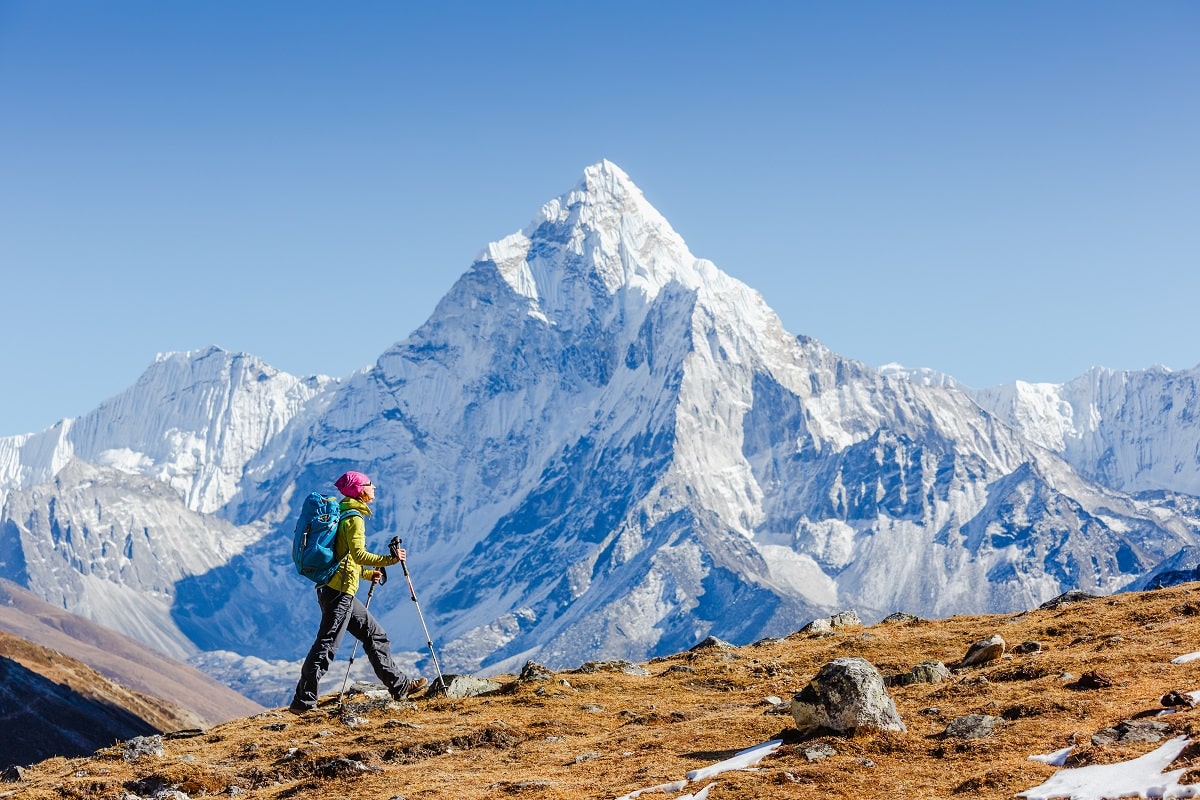
Nestled between the towering peaks of the Himalayas, Nepal is a land of unparalleled natural beauty and a haven for trekkers. From the iconic Everest Base Camp to the serene trails of the Annapurna region, Nepal’s mountains offer a diverse array of trekking experiences, each more awe-inspiring than the last. This guide will take you through 10 of Nepal’s most majestic mountain destinations, providing insights and practical advice for your trekking adventure.
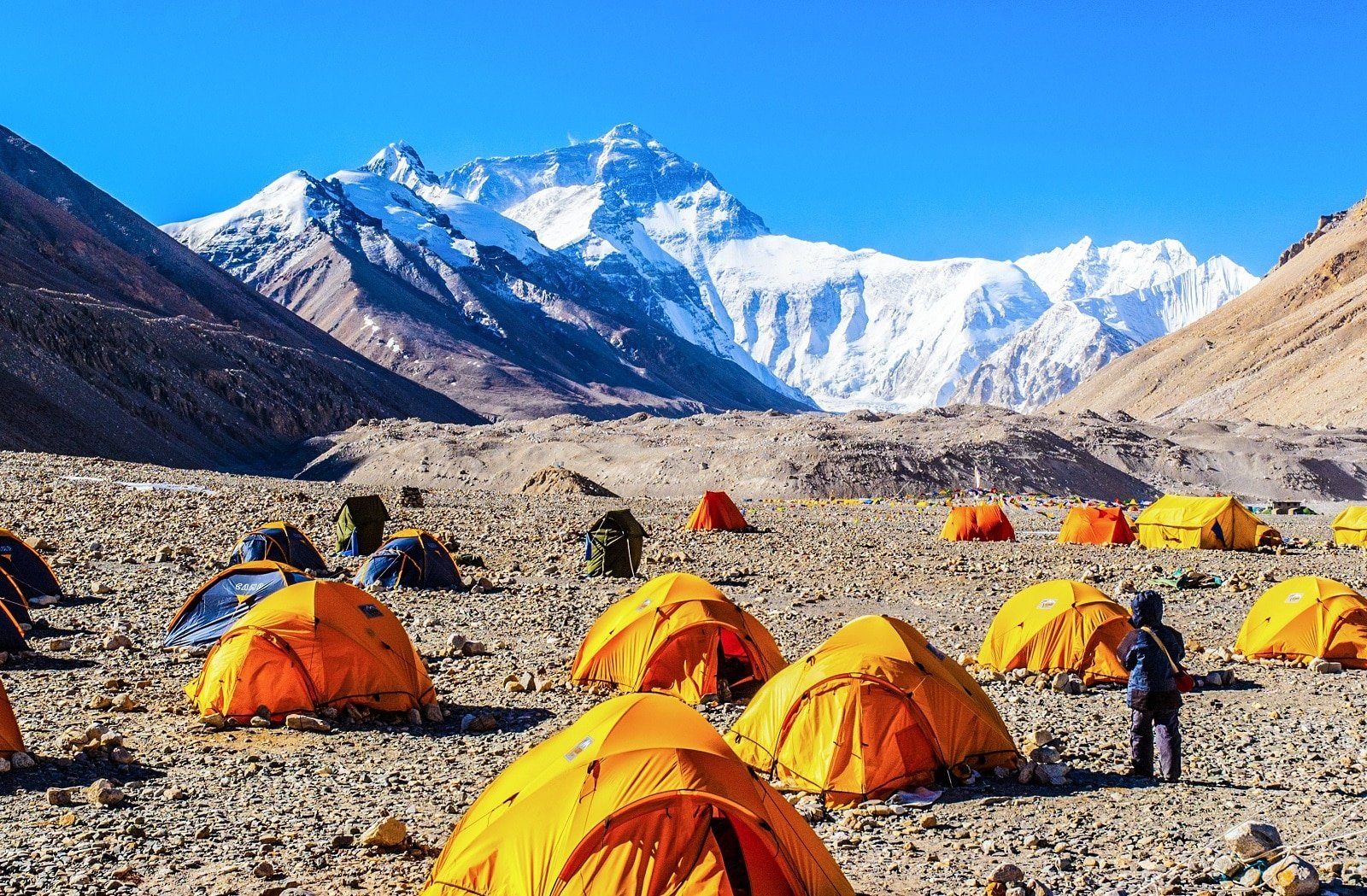
1. Everest Base Camp
Embarking on the Everest Base Camp trek, you’ll journey through the heart of the Himalayas, where the world’s highest peaks, including Everest, Lhotse, and Nuptse, tower above. Starting with a thrilling flight to Lukla, the trek takes you through traditional Sherpa villages, Buddhist monasteries, and along the Dudh Kosi River. The route is challenging yet rewarding, with acclimatization days in Namche Bazaar and Dingboche. The final ascent to Base Camp offers a stunning view of the Khumbu Icefall, making all the effort worthwhile.
Insider’s Tip: Acclimatize properly to avoid altitude sickness.
When To Travel: Pre-monsoon (March to May) or post-monsoon (September to November).
How To Get There: Fly to Lukla from Kathmandu and start your trek from there.
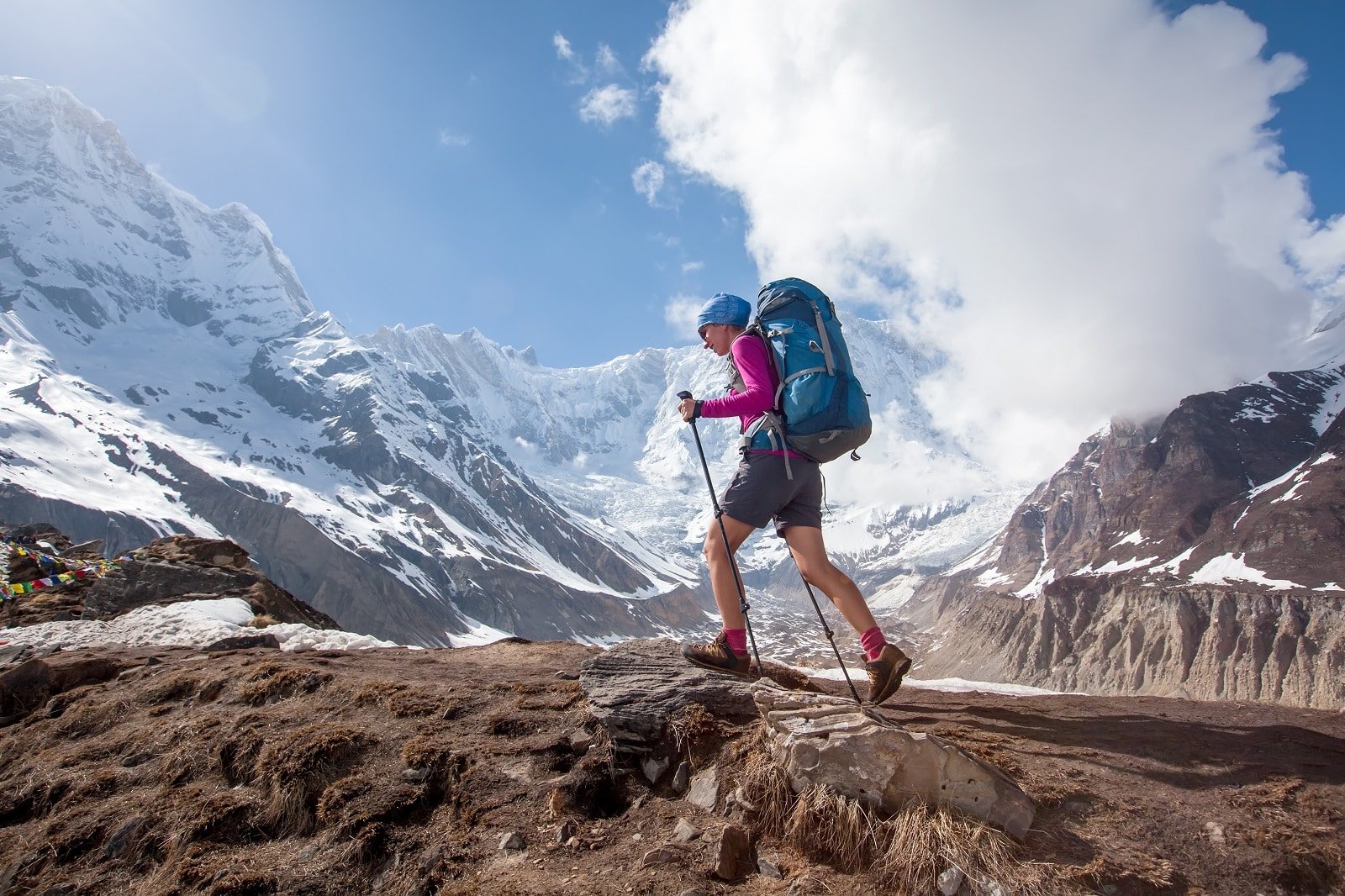
2. Annapurna Circuit
The Annapurna Circuit is a classic trek that takes you around the majestic Annapurna massif. This journey offers a remarkable diversity of landscapes, from the subtropical jungle of the Marshyangdi Valley to the arid, Tibetan-like terrain of the Upper Mustang. Crossing the Thorong La Pass, the trek’s highest point, is a challenging but exhilarating experience. The trek also allows for cultural immersion in the mountain communities of the Gurung and Manangi people.
Insider’s Tip: Take side trips to the ice lakes or Tilicho Lake for additional stunning views.
When To Travel: March to May and October to November for the best weather conditions.
How To Get There: The trek typically starts in Besisahar or Bhulbhule, accessible by road from Kathmandu or Pokhara.
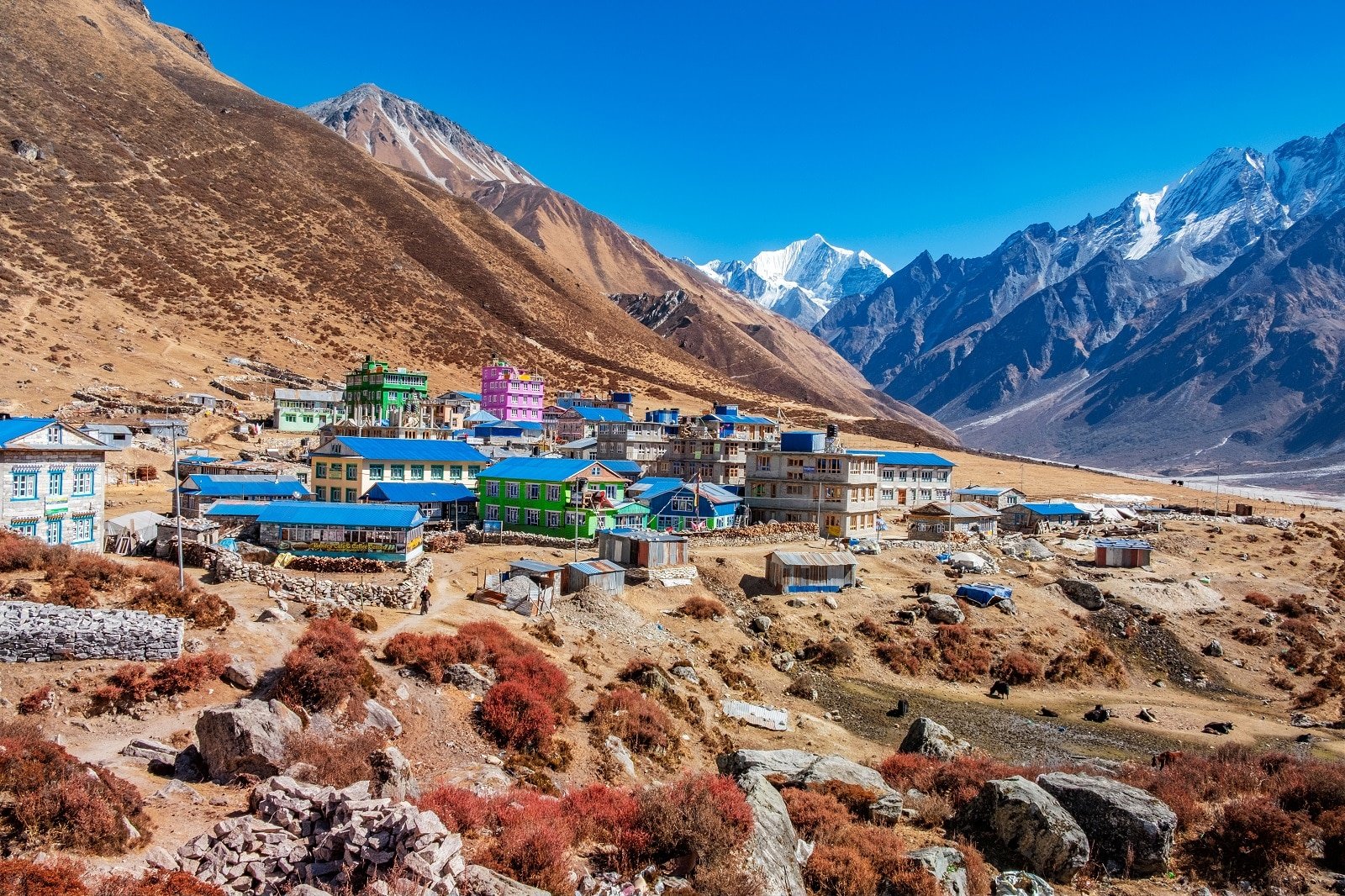
3. Langtang Valley
The Langtang Valley trek offers a quieter, more intimate Himalayan experience. It begins with a drive to Syabrubesi and a trek through forests, pastures, and traditional villages. The valley provides close-up views of Langtang Ri and Langtang Lirung. The trek also includes a visit to Kyanjin Gompa, a significant Buddhist monastery, and an optional climb to Tserko Ri for panoramic mountain vistas. This region was heavily affected by the 2015 earthquake, and trekking here supports local recovery efforts.
Insider’s Tip: Extend your trek to Gosaikunda Lake for a spiritual experience.
When To Travel: March to May and September to November for clear skies and pleasant temperatures.
How To Get There: Drive to Syabrubesi from Kathmandu, the starting point of the trek.
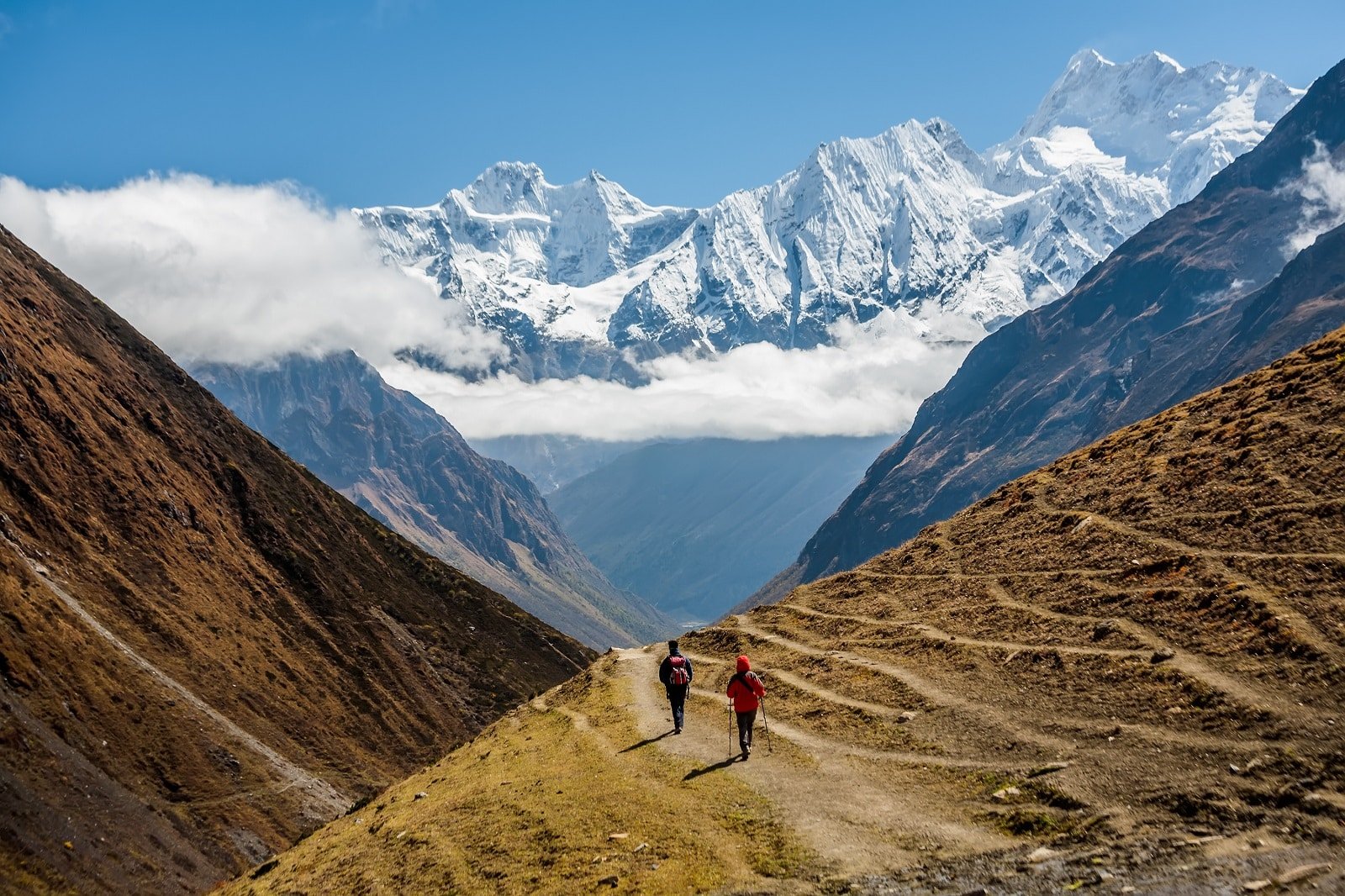
4. Manaslu Circuit
The Manaslu Circuit trek circles the majestic Manaslu, the world’s eighth-highest peak. This trek is less crowded than its more famous counterparts. It offers a look into the untouched natural beauty and culture of the Nepali Himalayas. The trek involves crossing the Larkya La Pass and traverses through Budhi Gandaki Valley, known for its mix of Hindu and Tibetan Buddhist villages. The circuit is a challenging trek, blending cultural richness and scenic splendor.
Insider’s Tip: Ensure you have a guide, as the Manaslu trek requires special permits.
When To Travel: March to May and September to November are ideal.
How To Get There: The trek starts at Arughat or Soti Khola, which can be reached by bus or jeep from Kathmandu.
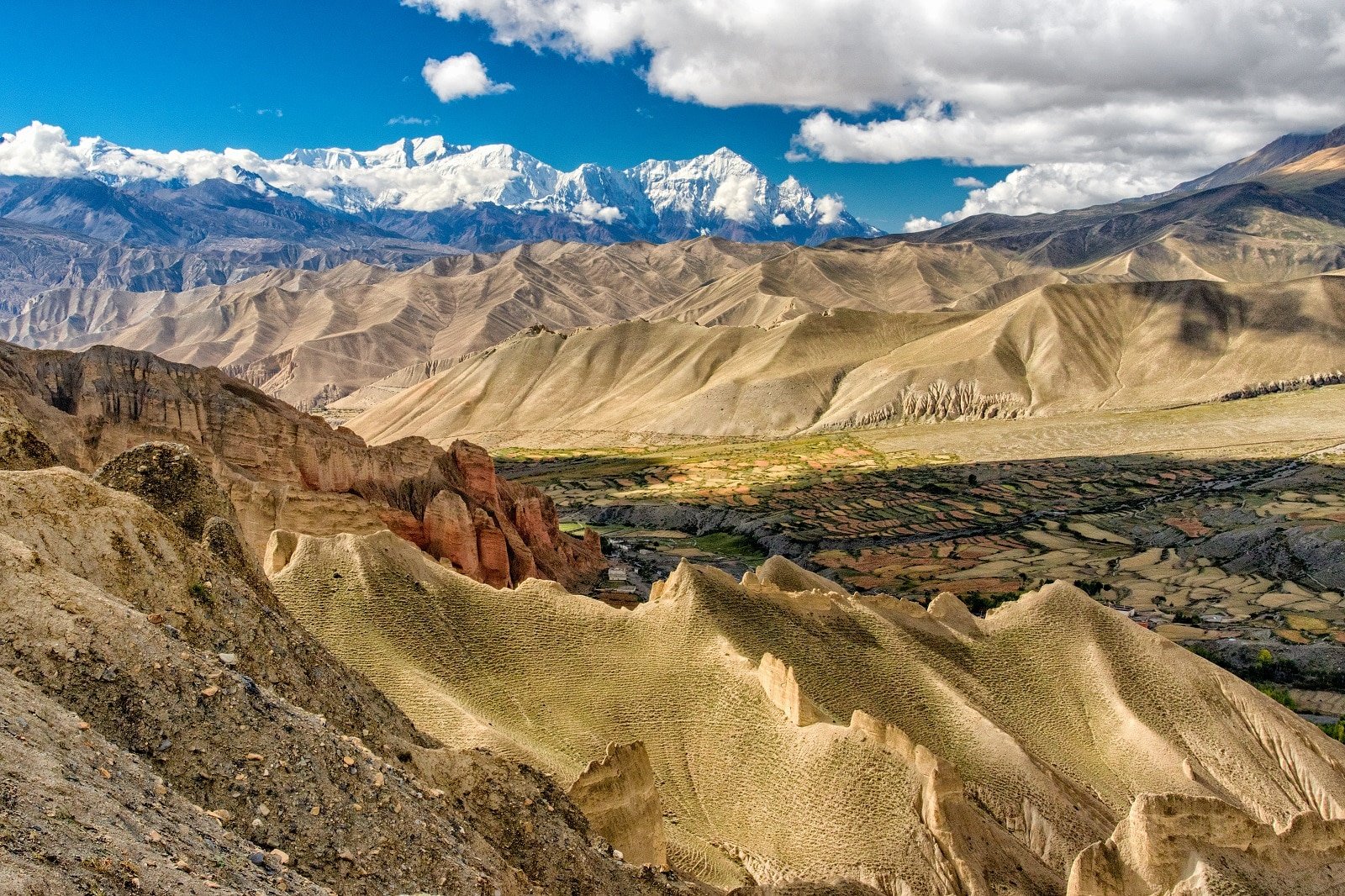
5. Upper Mustang
Trekking in Upper Mustang takes you to a region that was once an independent kingdom. The landscape here is more desert-like, characterized by eroded canyons and colorful stratified rock formations. Lo Manthang, the walled capital, is a highlight, with its monasteries and royal palace. This area is culturally and geographically more akin to Tibet, offering a unique trekking experience distinct from the rest of Nepal.
Insider’s Tip: Visit the ancient monasteries and the royal palace in Lo Manthang. Stay at the beautiful Shinta Mani Mustang.
When To Travel: May to October, as the region lies in the rain shadow area.
How To Get There: Fly or drive to Jomsom, then trek or drive to Lo Manthang.
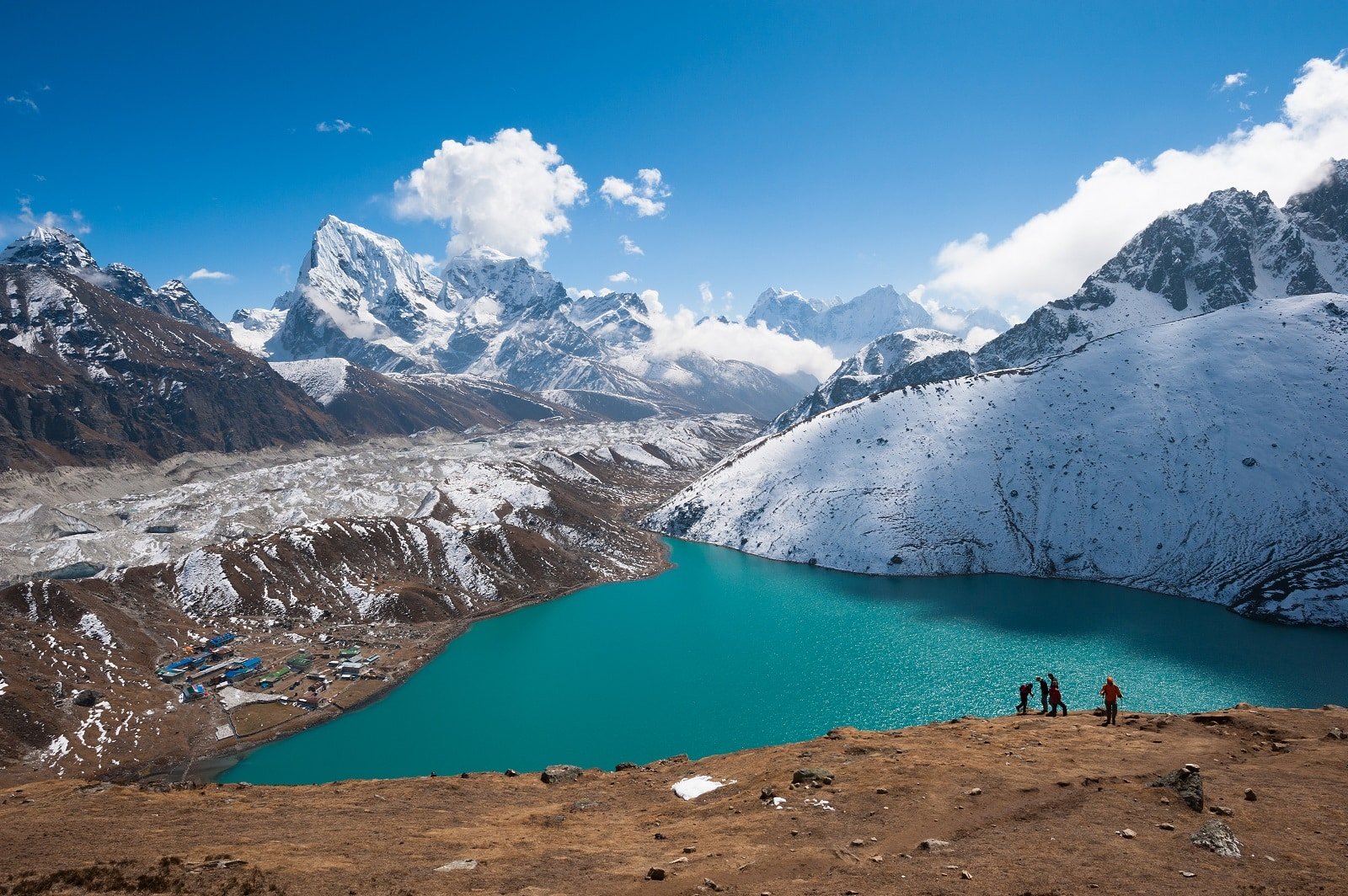
6. Gokyo Lakes
The Gokyo Lakes trek is a fantastic alternative to the Everest Base Camp trek, taking you to a series of stunning high-altitude lakes in the Gokyo Valley. The trek is less crowded and provides spectacular views of Everest and surrounding mountains. Climbing Gokyo Ri offers one of the best viewpoints in the Everest region. The trek passes through Sherpa villages, offering insight into the local culture.
Insider’s Tip: Trek during the full moon for spectacular night views of the mountains.
When To Travel: March to May and September to November for the best weather.
How To Get There: Similar to Everest Base Camp, fly to Lukla and follow a different trail.

7. Poon Hill
The Poon Hill trek is ideal for those looking for a shorter hike in the Annapurna region. It’s known for offering some of the most spectacular mountain views, especially at sunrise from Poon Hill itself. The trek passes through rhododendron forests and Gurung villages, giving you a chance to experience the culture of the central Himalayan region. The trek starts and ends in Nayapul, a short drive from Pokhara.
Insider’s Tip: Carry enough cash, as there are no ATMs on this route.
When To Travel: October to November and March to April for clear skies and good weather.
How To Get There: The trek starts from Nayapul, which is a short drive from Pokhara.
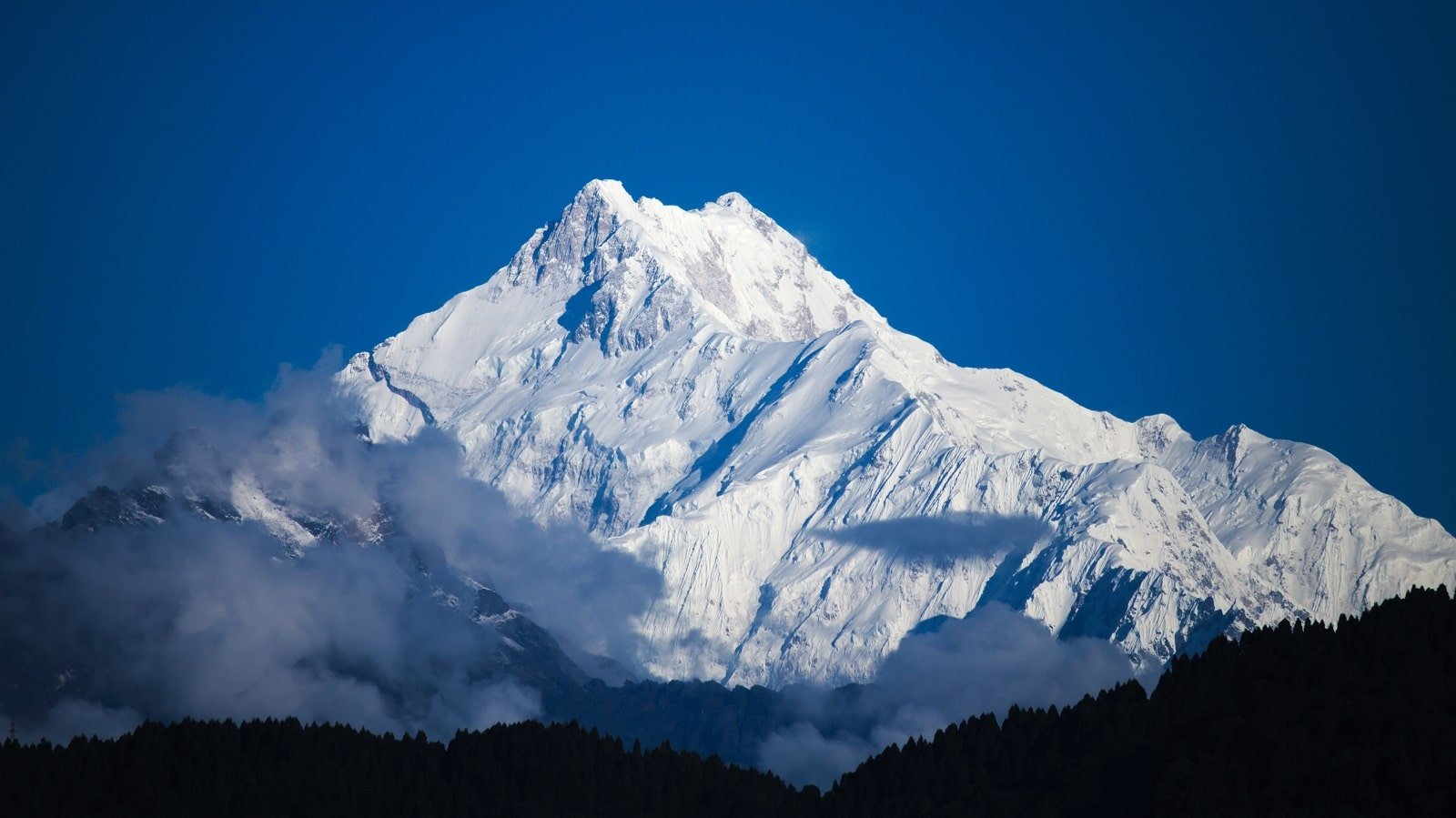
8. Kanchenjunga Base Camp
The Kanchenjunga Base Camp trek is a challenging and adventurous journey to the base of the world’s third-highest mountain. This remote trek offers stunning views of Kanchenjunga and a chance to experience pristine wilderness. The trek passes through diverse ecosystems, traditional villages, and high alpine terrain. It’s a trek for those seeking solitude and unspoiled nature.
Insider’s Tip: Be prepared for basic accommodations and facilities, as this is a less developed trekking route.
When To Travel: March to May and September to November for stable weather.
How To Get There: Fly or drive to Bhadrapur, then drive to Taplejung, the starting point of the trek.
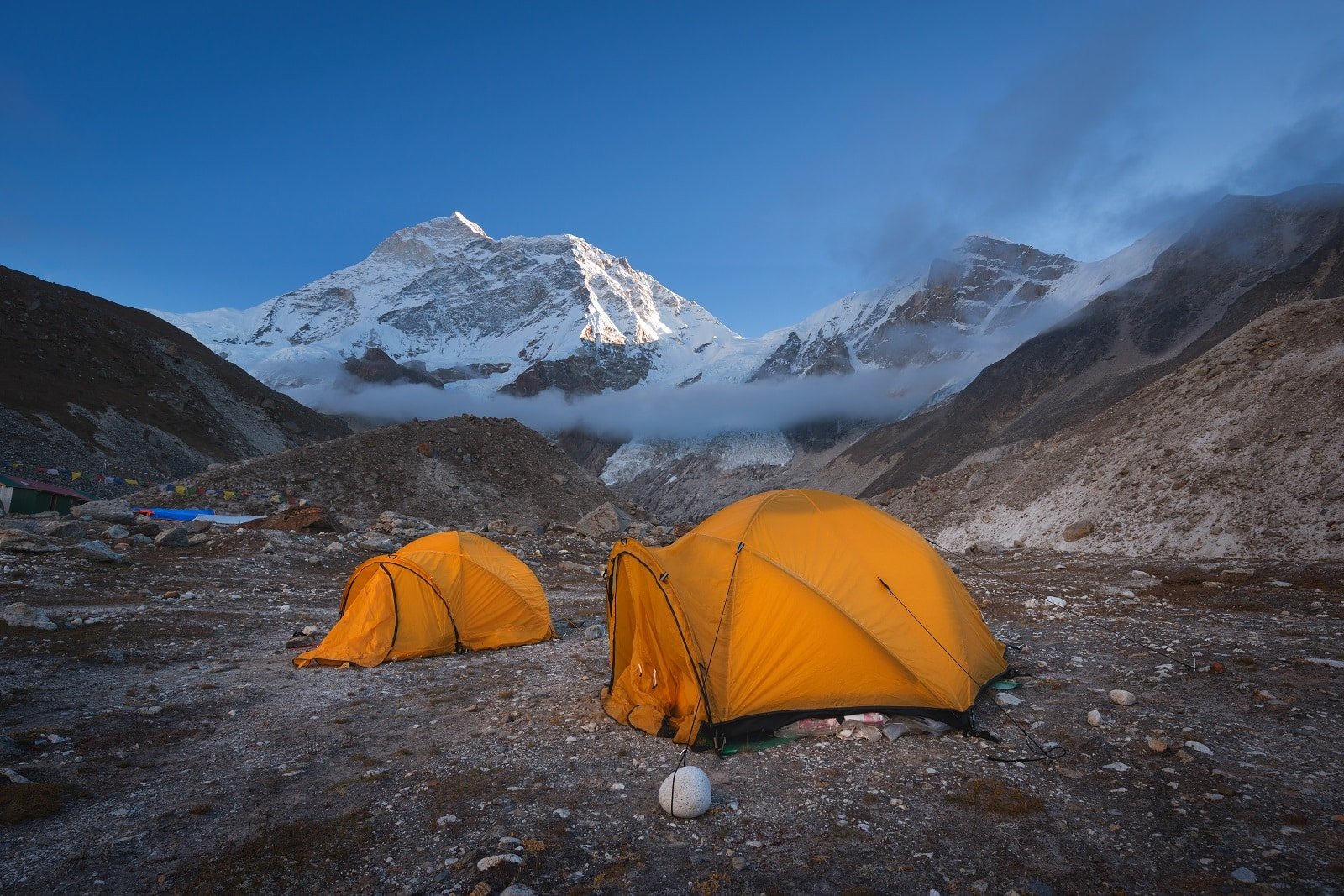
9. Makalu Base Camp
The Makalu Base Camp trek is a challenging journey to the base of Mount Makalu, the world’s fifth-highest mountain. This trek takes you through some of Nepal’s most remote and wild areas, offering stunning views of the eastern Himalayas. The Makalu Barun National Park, through which the trek passes, is a biodiversity hotspot with a rich variety of flora and fauna.
Insider’s Tip: Be physically and mentally prepared for a challenging trek with basic facilities.
When To Trave: Pre-monsoon and post-monsoon periods for the best conditions.
How To Get There: Fly to Tumlingtar from Kathmandu, then drive to Num, the starting point of the trek.
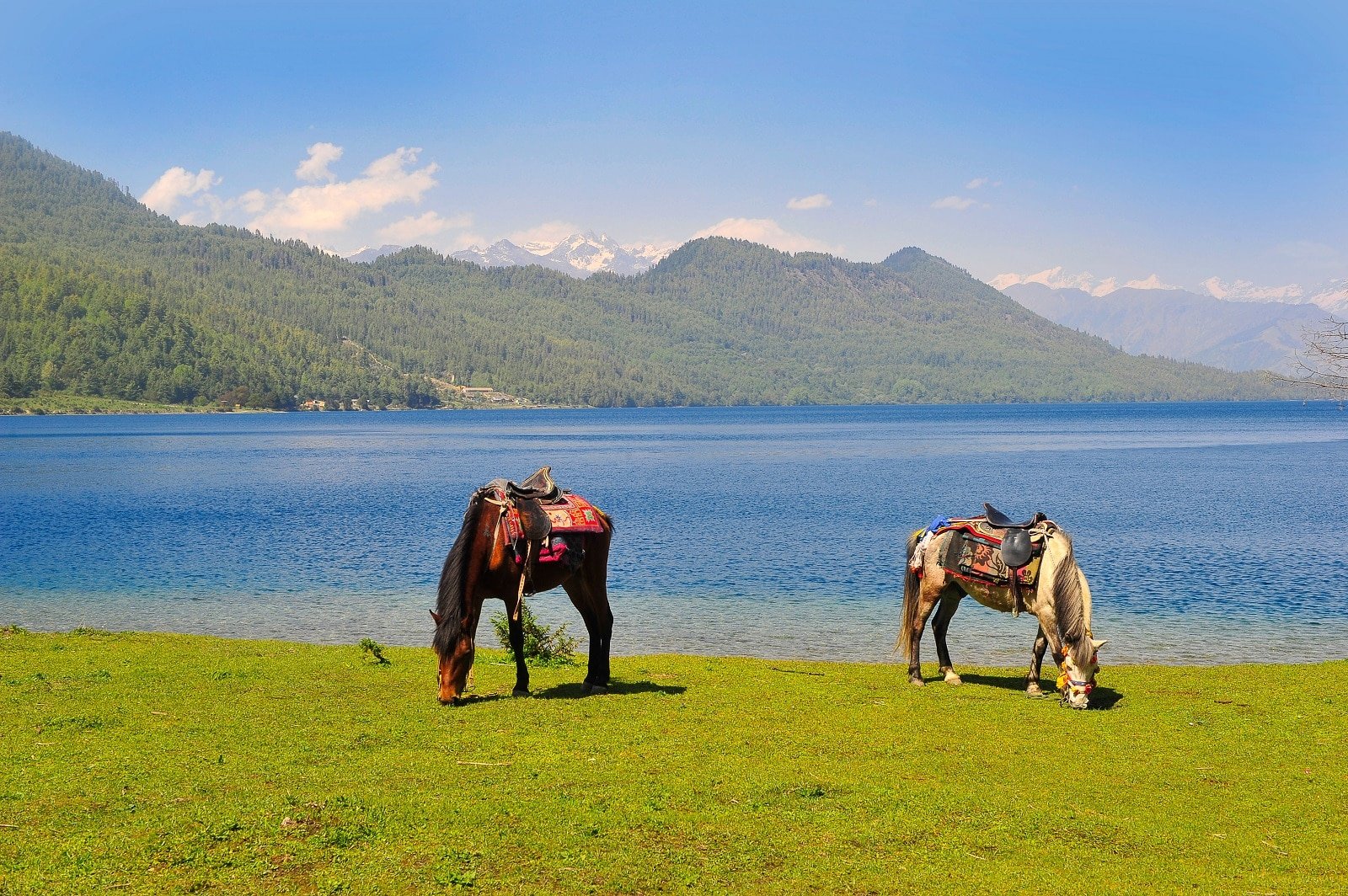
10. Rara Lake
Trekking to Rara Lake offers a serene experience away from the more popular trekking routes. Rara, the largest lake in Nepal, is known for its clear blue waters and scenic beauty. The trek to the lake is an adventure in itself, passing through remote Jumla and Mugu districts. The area around the lake, Rara National Park, is home to a variety of wildlife and offers tranquility unmatched in other parts of Nepal.
Insider’s Tip: Visit the nearby Rara National Park for a chance to see unique wildlife.
When To Travel: September to October and April to May for the best trekking conditions.
How To Get There: Fly to Nepalgunj from Kathmandu, then to Jumla, from where the trek to Rara Lake starts.
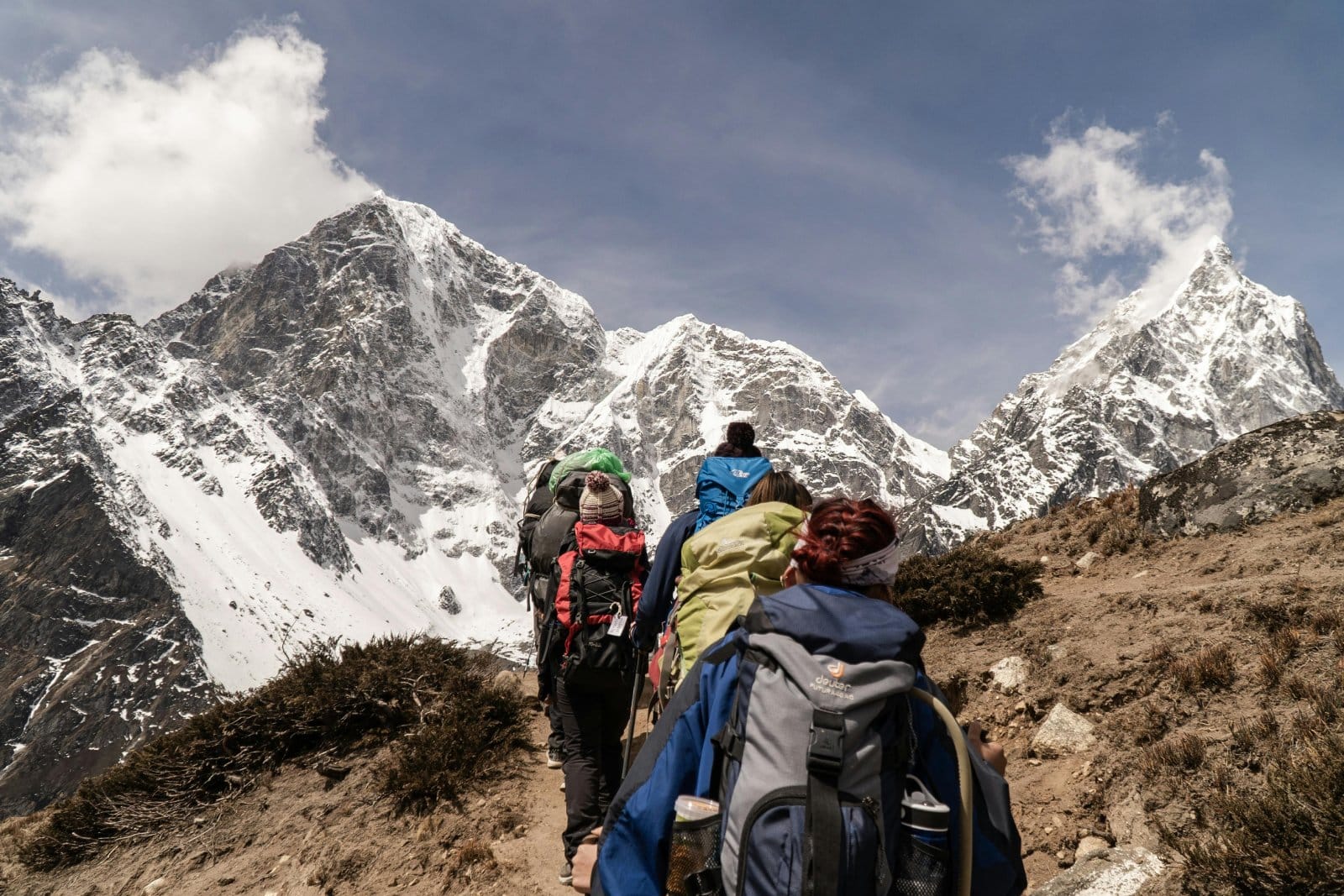
The Bottom Line
Trekking in Nepal is more than a physical journey; it explores some of the most majestic landscapes on Earth. Each destination offers its unique charm, from the world-renowned Everest Base Camp to the tranquil trails of Rara Lake. As you trek through these mountains, you’ll not only witness breathtaking vistas but also immerse yourself in the rich culture and hospitality of the Nepali people. Pack your bags, lace up your boots, and prepare for an adventure that will leave you with memories to last a lifetime.
More Articles Like This…
Barcelona: Discover the Top 10 Beach Clubs
2024 Global City Travel Guide – Your Passport to the World’s Top Destination Cities
Exploring Khao Yai 2024 – A Hidden Gem of Thailand
The post The 10 Best Treks in Nepal’s Majestic Mountains 2024 was republished on Passing Thru with permission from The Green Voyage .
Featured Image Credit: Shutterstock / Olga Danylenko.
For transparency, this content was partly developed with AI assistance and carefully curated by an experienced editor to be informative and ensure accuracy.
More for You
Video Shows Massive Tornado Roaring Through Tennessee: 'Extremely Violent'
Shaq tells Nikola Jokic he didn't deserve MVP award on live tv
85 Weeknight Dinners That'll Take You Under An Hour From Prep To Finish
I've been offered every job I've interviewed for. Here are 5 questions I ask interviewers.
Housing has hit rock bottom, says Redfin CEO Glenn Kelman
Which NFL team has the toughest schedule in 2024?
The 5 most common deathbed regrets, according to a palliative care nurse
The reconstruction of a 75,000-year-old Neanderthal woman makes her look quite friendly—there's a problem with that
Contractor sprays paint in faces of Gaza college protesters while covering up a pro-Palestine mural
Burger King Is Giving Away Free Whoppers This Weekend
52 Classic Comfort Food Dinners You Won’t Believe Are Healthy
This Is the Salary You Need To Afford the Average Home in Your State
A stealthy cholesterol is killing people, and most don’t know they’re at risk
Pokemon: 10 Largest Legendaries
Judge Engoron Faces Questions After Lawyer Says He Advised on Trump Case
Find the Best Haircut For Your Face Shape, According to Stylists
Warren Buffett said he could make a 50% return on $1 million and predicted higher taxes. Here are 14 Q&A nuggets.
Here is the true value of having a fully paid-off home in America — especially when you're heading into retirement
The 1-Ingredient Upgrade for Better Scrambled Eggs (It's My Favorite Italian Staple)
People You Didn’t Know Were in Marvel Movies

COMMENTS
Highest point - 3800 m/12 467 ft on the Langtang trek itself and 4600 m/15 000 ft if you climb Kynajin Ri peak. Difficulty - moderate/difficult ; Permits - TIMS card and Park entrance permit required; Cost per day - US$23 per person including permits and transportation; Guide - compulsory; Accommodation - guest houses
The most challenging section of Langtang Trek is the hike from Kyanjin Gompa to Tserko Ri. The trail to Tserko Ri is mostly steep uphill on the rocky Himalayan terrain. However, on most days, the path is easy and comfortable with a pleasant walk. The highest elevation point in Langtang Valley Trek is 5,000m above sea level.
Yes, altitude sickness is a risk because the Langtang Valley trek ascends to some high-altitude points. At its highest point, Tserko Ri, you will reach an altitude of 5,000 meters (16,347 feet). There are steep section on this trek where you will ascend fairly quickly.
Last Updated on Feb 20, 2024. Kyanjin Ri at an altitude of 4,773 meters (15,655 feet) from sea level, is the highest vantage point of Langtang Trek. Like the Kalapatthar (6,643 meters), the highest point of the Everest Base Camp Trek, Kyanjin Ri is famous for the surreal views of the Langtang Valley and the surrounding peaks during the Langtang ...
All you need to know to plan your Langtang Valley trek in Nepal, with a suggested itinerary, route maps, practical info, and tips for the trail. Plan your Langtang Valley trek with this in-depth guide. ... The highest points you are likely to trek to are Kyanjin Ri (4586 m) and Tsergo Ri (just under 4965 m).
The highest point on the trek: From Kyanjin Gompa you can reach Kyanjin Ri (4,773m) or Tserko Ri viewpoint (5,033m). Additionally, you can climb Yala Peak from Kyanjin Gompa, which has an altitude of 5,500m. Difficulty: The Langtang Valley Trek is much shorter than Everest Base Camp or the Annapurna Circuit although relativley similair. You ...
The highest point is 3,300m, so this is a good mid-winter trek when higher routes might be snowed in and it also suits those with limited time. The Tamang Heritage Trail is very easily combined with the classic Langtang Valley trek. For those with more time, it's possible to add in Gosainkund and the Helambu treks to make for three weeks of ...
15 kilometers, 7 hours, altitude gain 1070+. The first day of the Langtang trek is also one of the most difficult days of the trek as you gain more than a 1000 meters in altitude. It starts with a 3 hour gentle climb up to Bamboo village. Bamboo village is about halfway and a great place for a lunch break.
Remember that the highest point on this Langtang Valley Trek is Kyanjin Ri (4,773 meters or 15,655 feet), which is considered a high-altitude spot. ... Kyanjin Monastery, or local houses. This will be the highest point of the trek so you will have plenty of opportunities to witness the scenery nearby. Overnight at the lodge in Kyanjing Gompa ...
Note: You can reach Syabrubesi - the starting point for the Langtang Valley trek by three different ways via local bus, private rental vehicles, and jeeps according to your budget and comfort. Langtang Trek - Difficulty and Preparation. Langtang trek will take you to an elevation of 4,500m/14,763ft. However, you will spend a night at the ...
Note that if you prefer to follow the 'classic' Langtang Valley trekking route - directly up the valley alongside the Langtang Khola (river) to Rimche or Lama Hotel ... At 4965 m, this is the highest point most Langtang Valley trekkers will reach. It's a challenging but highly rewarding day hike from Kyanjin Gompa, climbing over 1100 ...
The trek is situated in the Langtang Valley, nearby Kathmandu city. It is the perfect destination for someone who wishes to trek to the Himalayas but is looking for a relatively easy route with shorter walks and lower altitude. Although it is close to the city, it is hard to tell. The rich ecosystem of the valley is well preserved.
The average high pass on the Langtang Valley trek is 4,300 meters but you can trek to higher altitudes over different passes within the region. This is perhaps what makes Langtang a popular option for many trekkers. ... Highest point of the Langtang Valley trek. At 4.300 m (14,107.6 feet) Kyanjin Ri marks the highest point on the trek.
Langtang Trek is a favorite short trek destination in the Langtang valley located close to Kathmandu city, in the central Himalayas. The 11 days trip takes you across the Langtang National Park through some low and high elevation terrains with natural views and integration of rich Tamang community culture. Bordering closely to Tibet in the north, it offers expansive views of Nepali and Tibetan ...
It was experiences like this which made the Langtang Valley trek so memorable. Distance: 5km Time: 2 hours Ascended: 315m. Trail up to Kyanjin Ri Day 4: Kyanjin Gompa to Kyanjin Ri to Langtang Village. I left just after 8am for Kyanjin Ri, the highest point of the whole trek.
The Langtang trek is one of Nepal's shortest trekking trails. From the jungle with banana trees and monkeys at lower heights to glaciers and ice peaks at higher elevations ... Highest point - 4600m/15 000 ft Kynajin Ri peak; Accommodation - guest houses; Permits - TIMS card and Park entrance permit required; Cost per day - US$25-30 per ...
A 6-7 seater private jeep service usually costs around $150-$200 for a one-way drive to Dhunche, the starting point of the trek to Langtang Valley. 3) By Public Bus ... View the highest point Nagthali Pass (3,165 meters). View snow-capped mountains Ganesh Himal (7,429 meters), and Langtang Lirung (7,245 meters).
Kyanjin Ri. Kyanjin Ri is the highest point of the Langtang valley trek. It sits at an elevation of 4,773 meters above sea level. Jaw dropping views of the Langtang valley, glaciers as well as the mountain ranges can be seen from the top of the peak. There are no lodges as well as the tea houses at the top of the peak.
Nepal's Langtang Valley Trek is an excellent alternative to hikes like Everest Basecamp and Annapurna Circuit. ... Like all treks in Nepal, the Langtang Valley is high elevation and proper acclimatization should be factored in. That said, the highest village lies at 3850m, which is well below the high points reached on either the Annapurna ...
It offers spectacular vistas of no less than 20 -25 unique summits. The overall trek to Tserko Ri can take up to 7-8 hours, making for a tough yet worthwhile adventure. Tserko Ri lies at an altitude of 5000m above sea level - the highest point of the Langtang valley Trekking. For a softer option, you can hike to Kyanjin Ri (4600m).
In the Langtang area, many mountains are famous and tallest, but there are not any above 8000 meters. However, the Langtang Lirung is the highest peak in the Langtang region. What is the highest point of the Langtang Valley, and what level? Langtang Valley trek is based; on moderate. The highest point is Tserko Ri (4993m) above sea level ...
Gradually, walking along the trodden path, you reach the highest point of the Langtang valley trekking, Tserko Ri, at 5,000 m. The elevation gain is huge, but the risk of altitude sickness is quite low, thanks to our well-designed Langtang itinerary. Non-technical climbing or any special equipment is needed for the Langtang valley trek.
On Langtang trek, your journey will start from Kathmandu, 1400m and you ascend in the Langtang region to the highest point at Kang Jin Gompa, 3900m. That means you will experience 2460m of the altitude variation in Langtang trek starting from Kathmandu to Kang Jin Gompa.
Crossing the Thorong La Pass, the trek's highest point, is a challenging but exhilarating experience. ... The valley provides close-up views of Langtang Ri and Langtang Lirung. The trek also ...